Israel
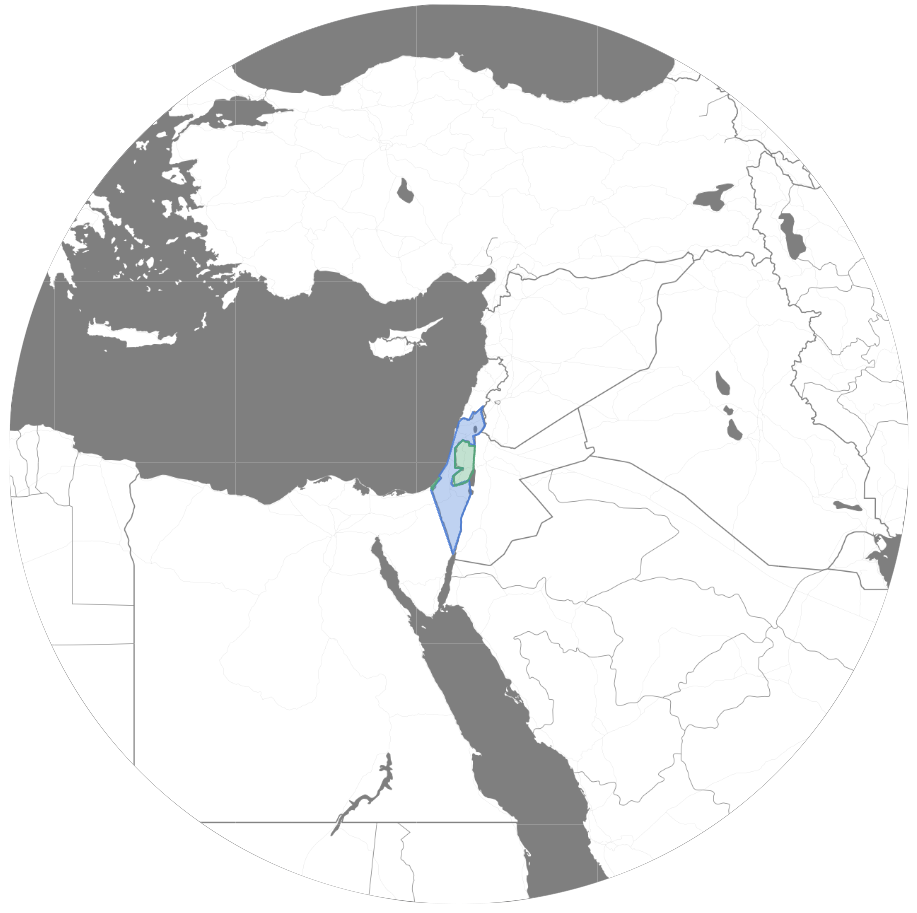
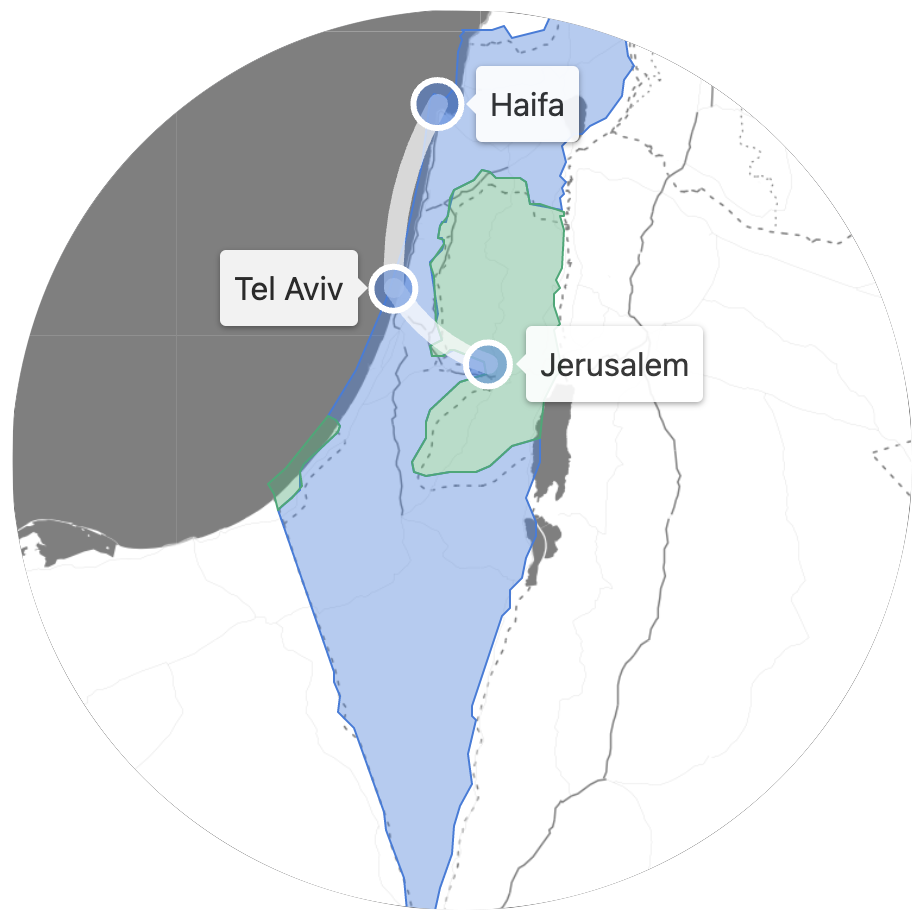
As a preface, I’m going to omit any discussion of the Israel and Palestine conflict. It’s widely known, and covered extensively elsewhere countless people immensely more qualified than me to talk about it. Here’s Wikipedia on it if you want to get a brief refresher.
Istanbul Airport Overnight
We spent the night in one of those airport pods.
The setup was pretty nice. They had some special air flow system to suck air out from your chamber and theoretically prevent everyone from giving COVID to each other. Plus, built-in ocean wave sounds. The staff were really friendly—they let us extend our free 3h stay to 6h for no charge.
But since we had exactly six hours to sleep, this was, of course, too much pressure for my brain to handle, and I spent the entire time hoping I would fall asleep and never actually doing it.
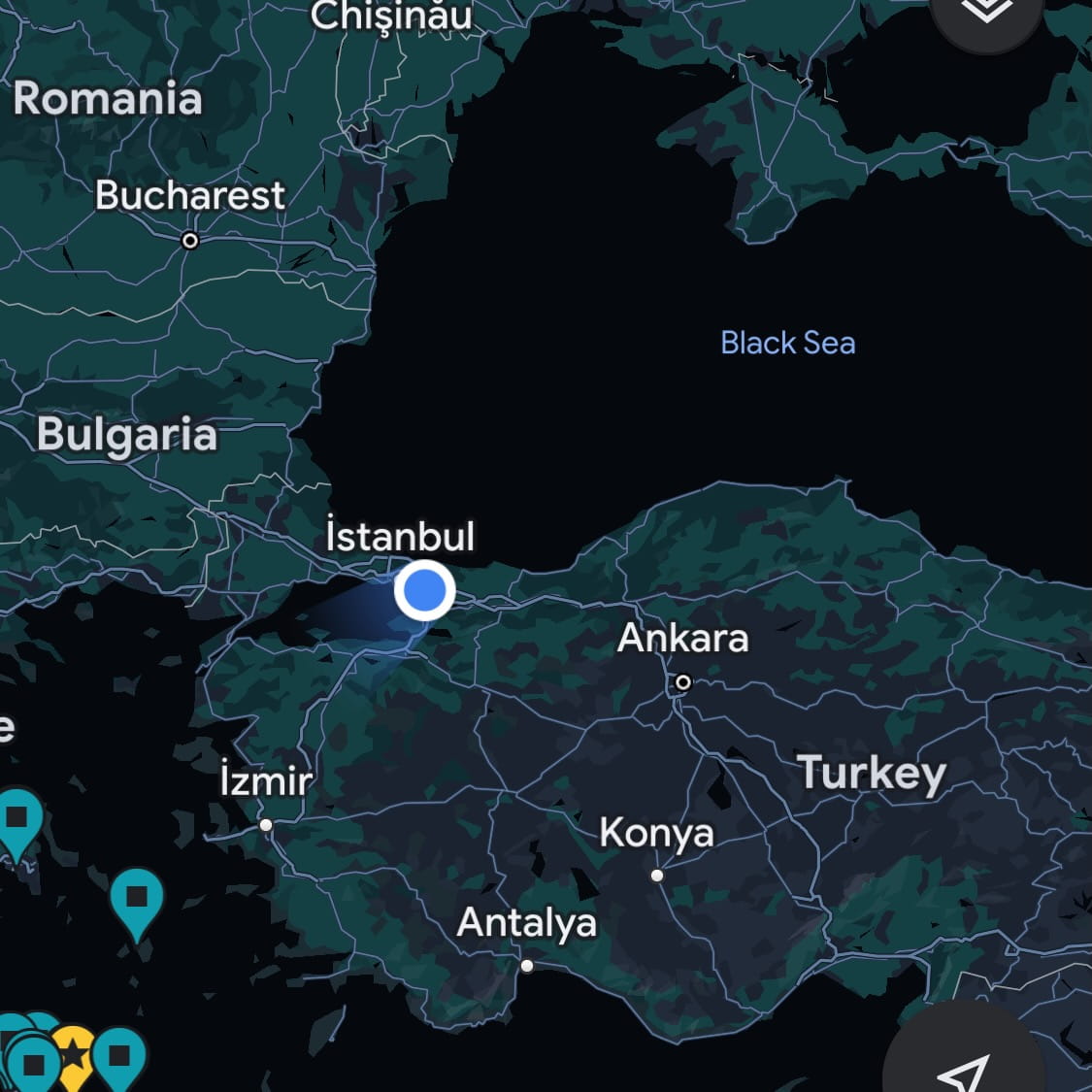
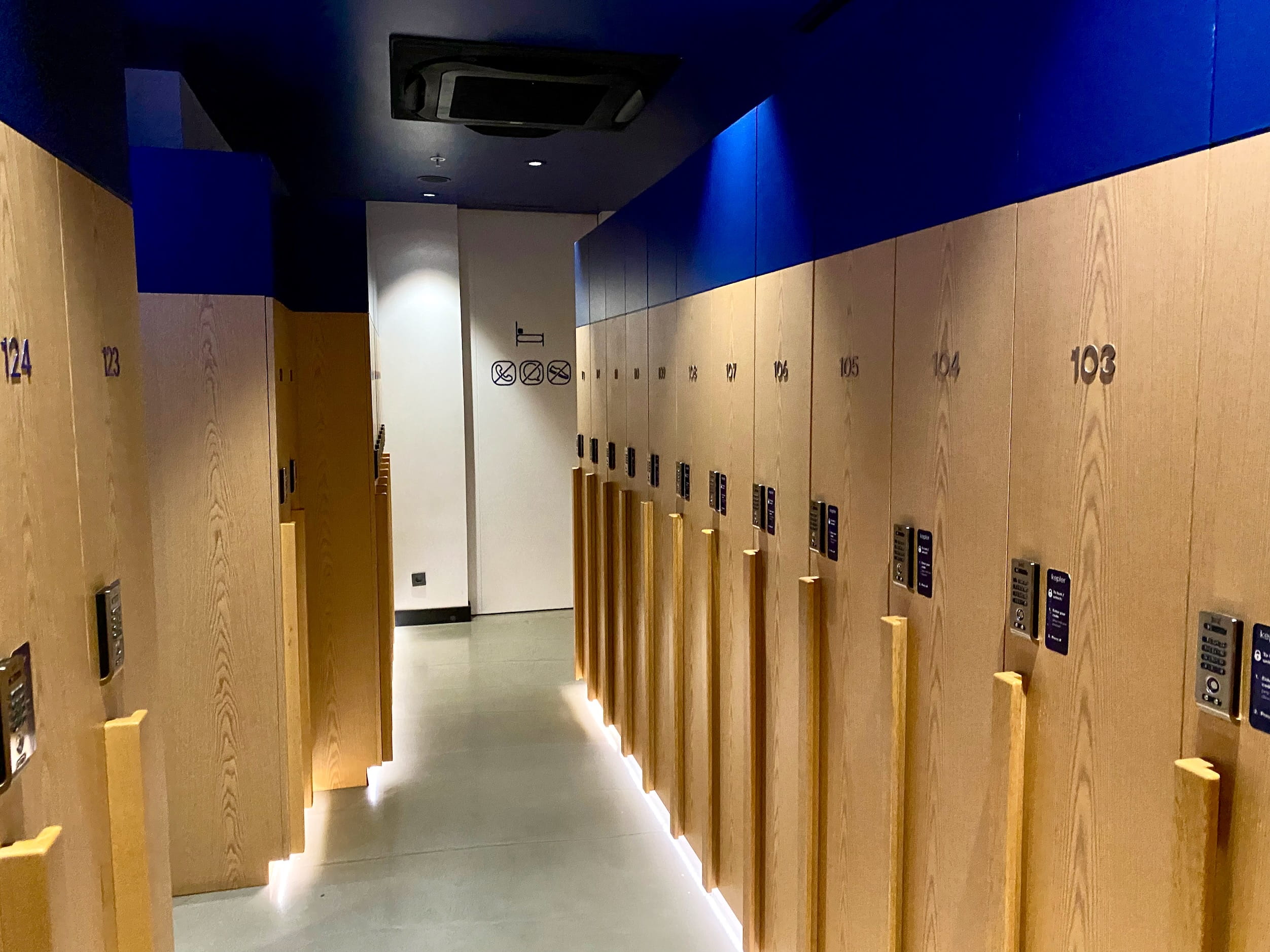

I love seeing the ol’ Windows Blue Screen of Death in the wild. Also, didn’t have time to look up what’s going on with Turkish currency, but something must have been up because the food was way cheaper than it ought to have been w.r.t. standard airport price gouging.
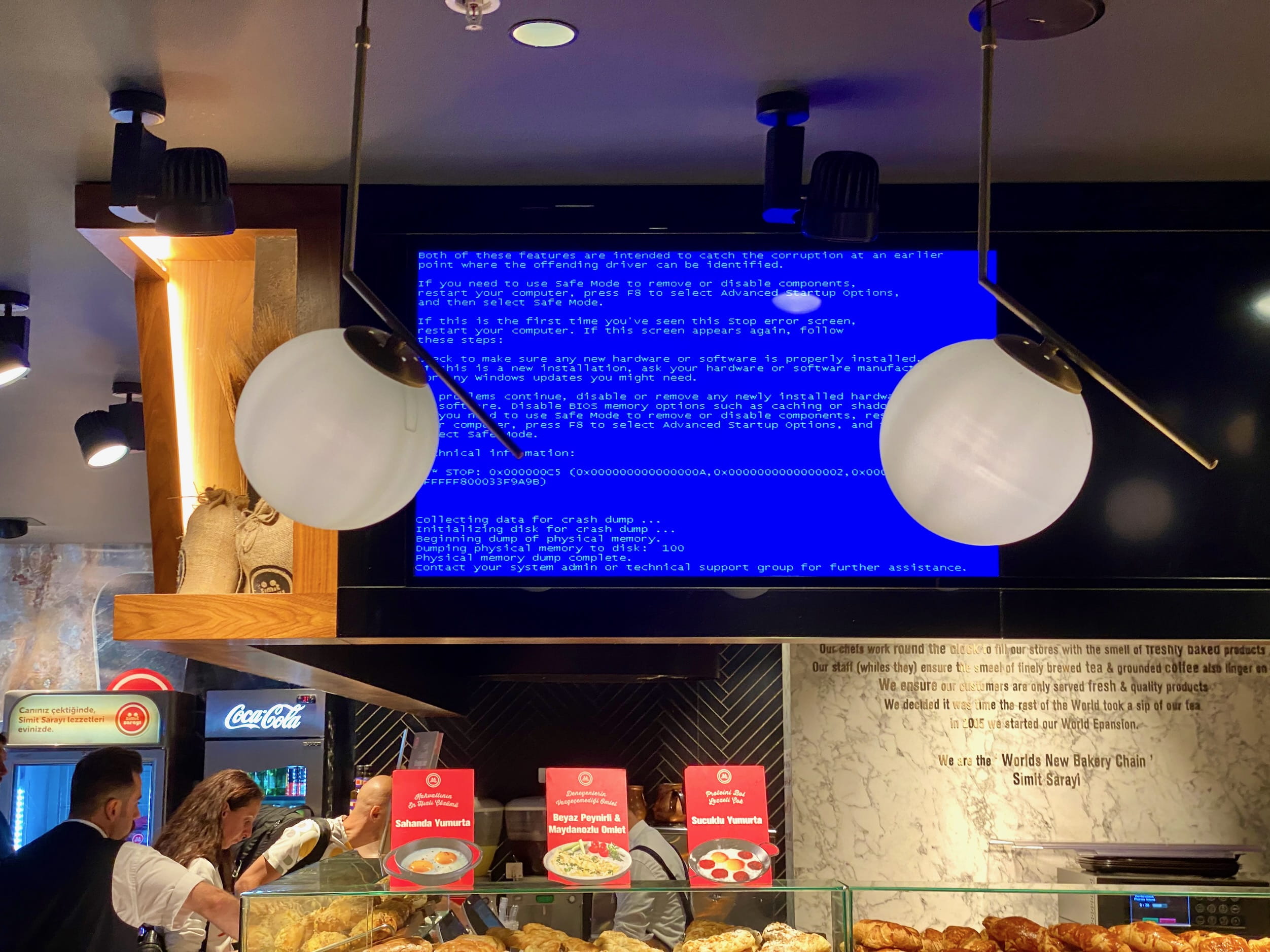
Jerusalem
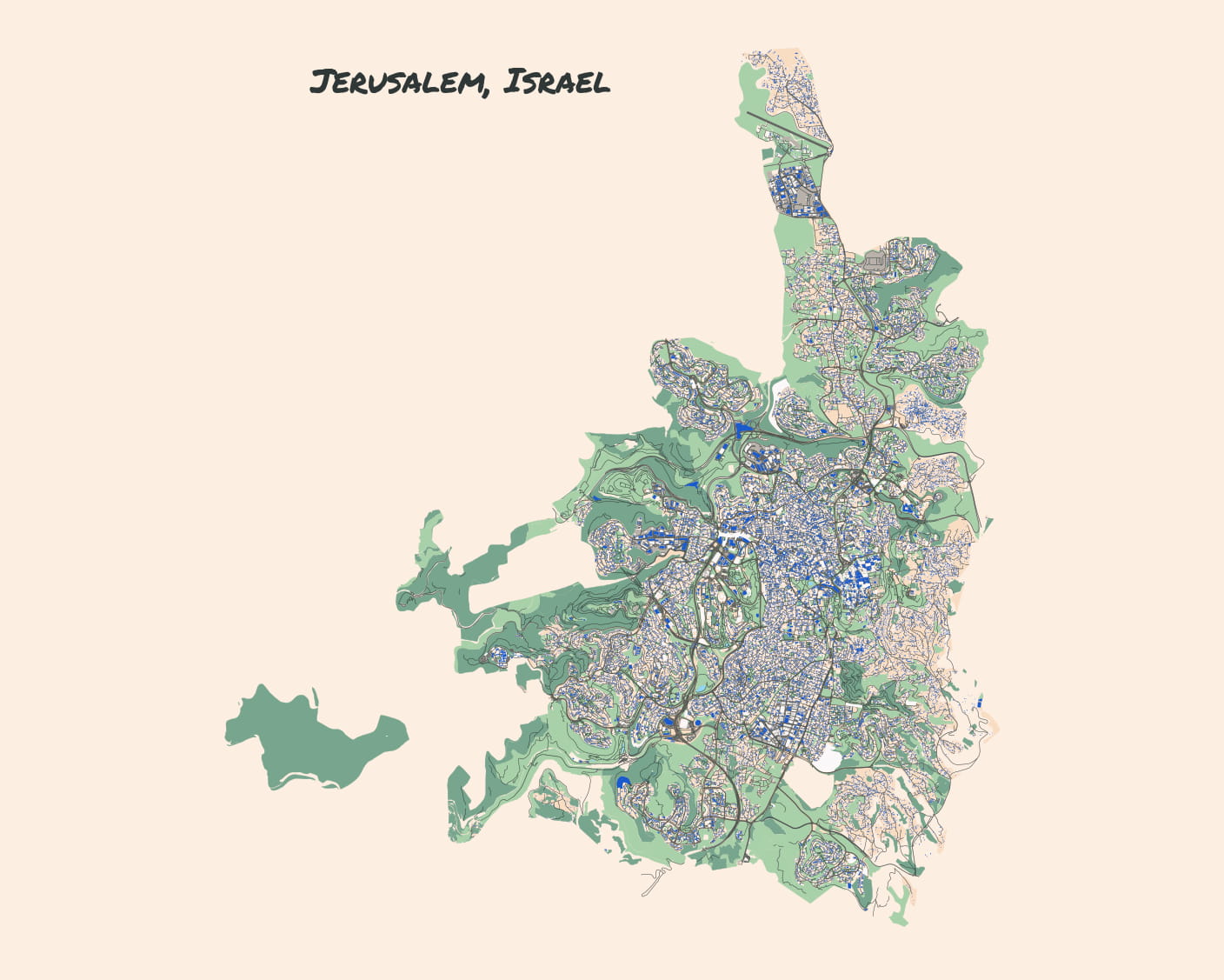
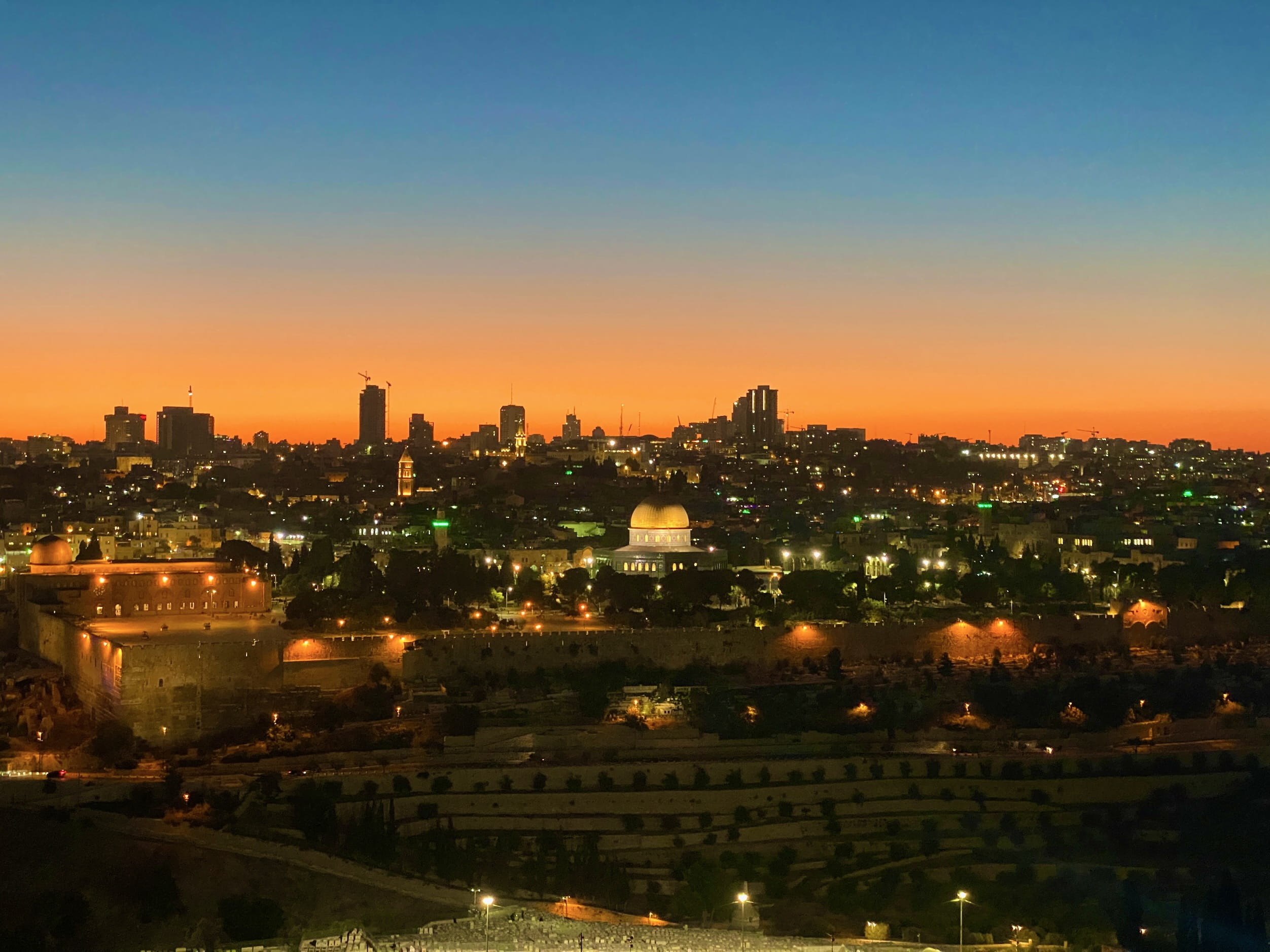
There’s a pretty strong Israeli presence in tech, and I hear about Tel Aviv so much that I assumed it was the Israel’s most populous city. Color me surprised to realize that it’s actually Jerusalem.
Jerusalem was a unique place. It’s difficult to describe. It is a million multi-layered and multi-textured sand colored walls; a hundred different outfits and religious denominations and historical interpretations; a dozen eras and languages and scripts. Unthinkably old structures and chunks of walls are crammed up against new developments. Everything is a different height. Every branch of every major religion has carved up not only districts and buildings, but sections of buildings. In the streets were the most hardcore religious people I have ever seen, as well as the angriest displays of street aggression I’ve ever witnessed. It is all packed together in a stone labyrinth, bursting with tourists and shops peddling myriad variants of the same trinkets and fabrics, while rushing past are the the most devout ultra Orthodox Jews you have ever seen, various handfuls of Christians and Muslims who have come on their own, American church groups, and Internet-organized pilgrimages. There are gangs of teenage girls in shoe-touching skirts who have the distinct vibe of first time I’ve left my state. Passing by is the occasional band of green-outfitted mixed-gender Israeli army individuals, equipped to the brim and with short machine guns slung around their necks. There felt to be myriad agreed-upon complicated boundaries that I could never exactly put my finger on. There is no space separating anything. The whole experience feels close and intense.
Also, the roofs can be flat because there is no snow. Never thought about that.
Wait, let’s back up a bit. First, where we stayed.
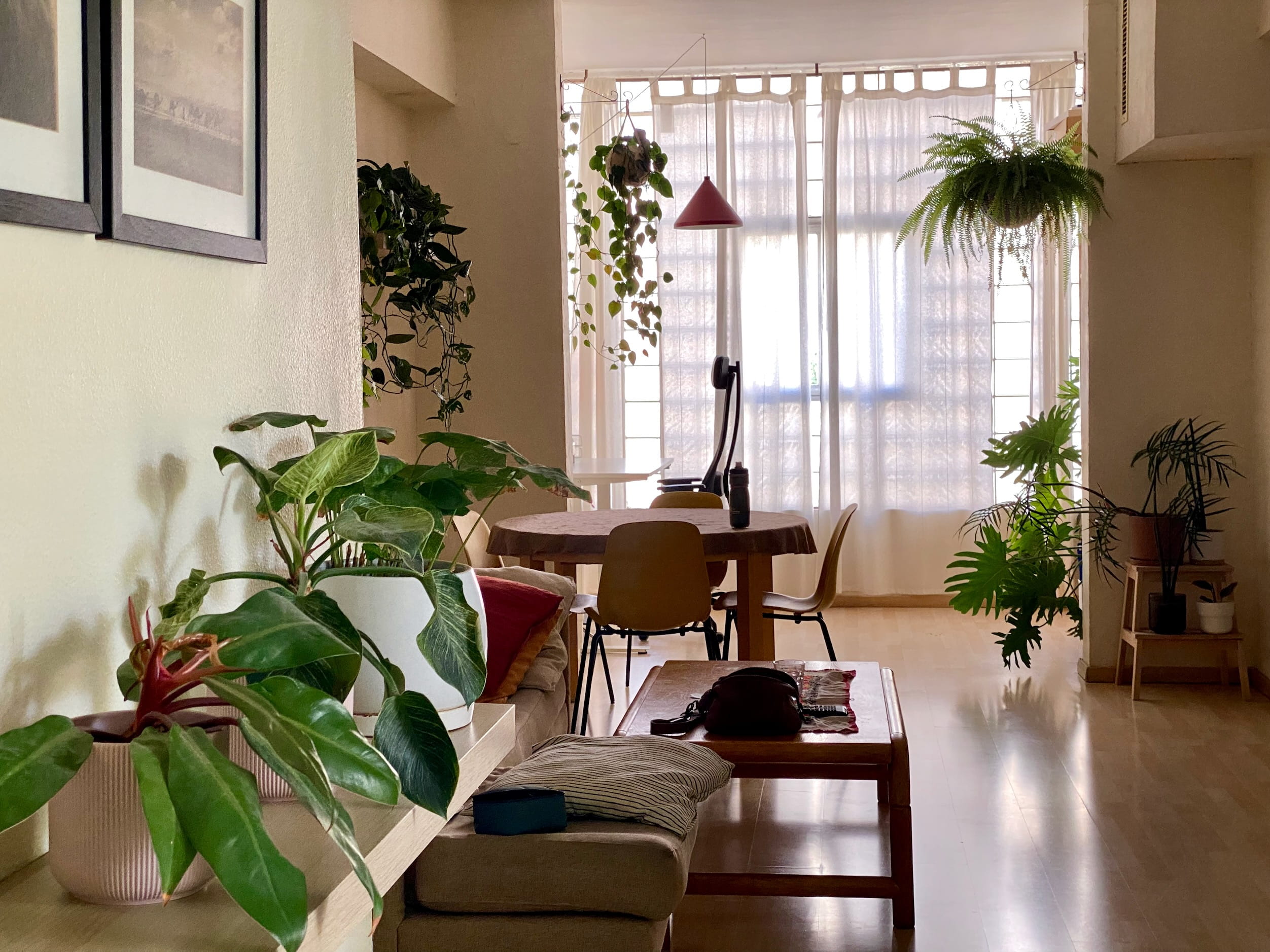
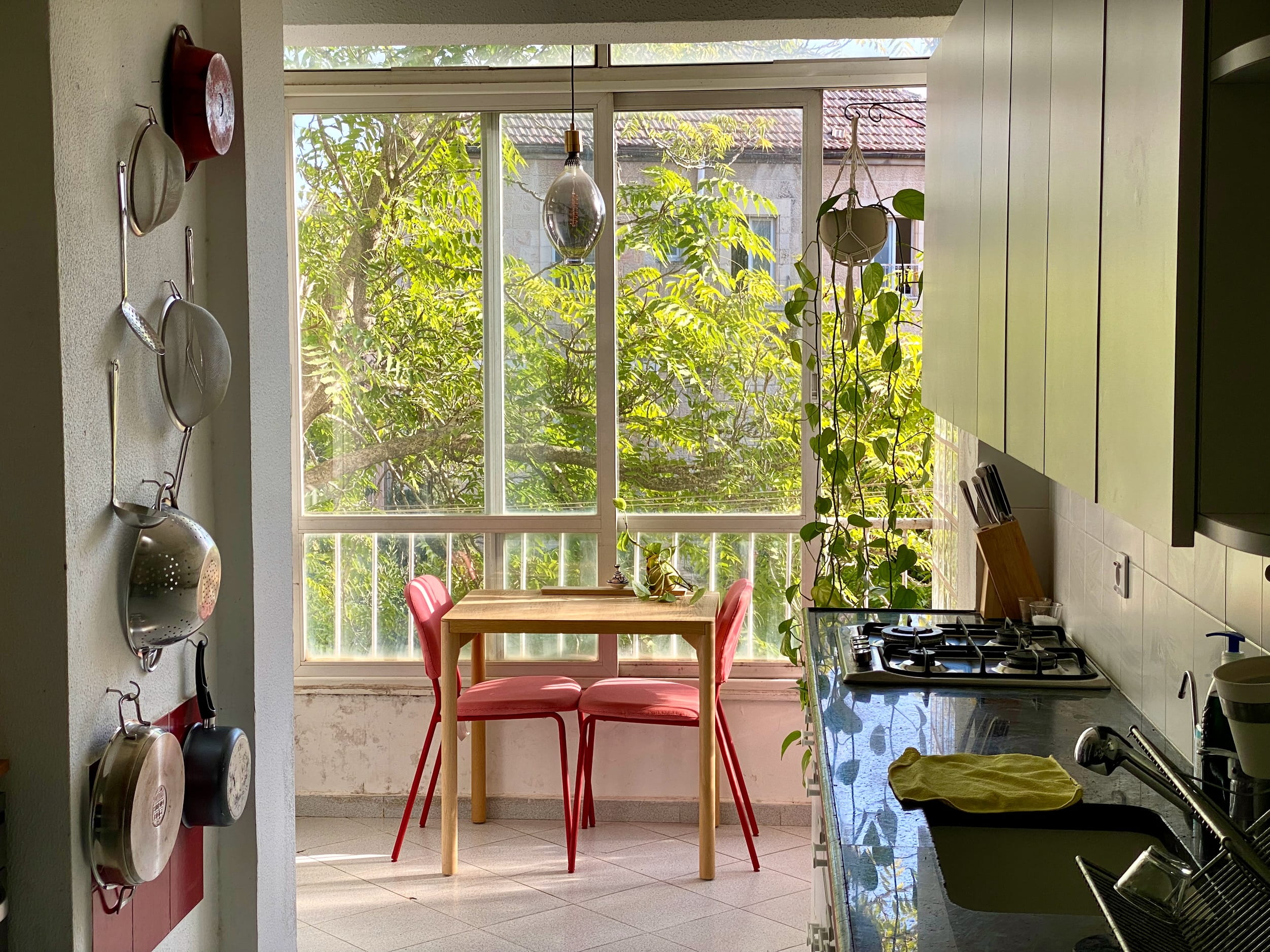
The apartment was the best we got in a whole year traveling. An architect’s baby, the place was filled with light, plants, tastefully long furniture, and a great kitchen.
The cityscape is filled sand-colored buildings. The high rises especially have a look I haven’t seen anywhere else.
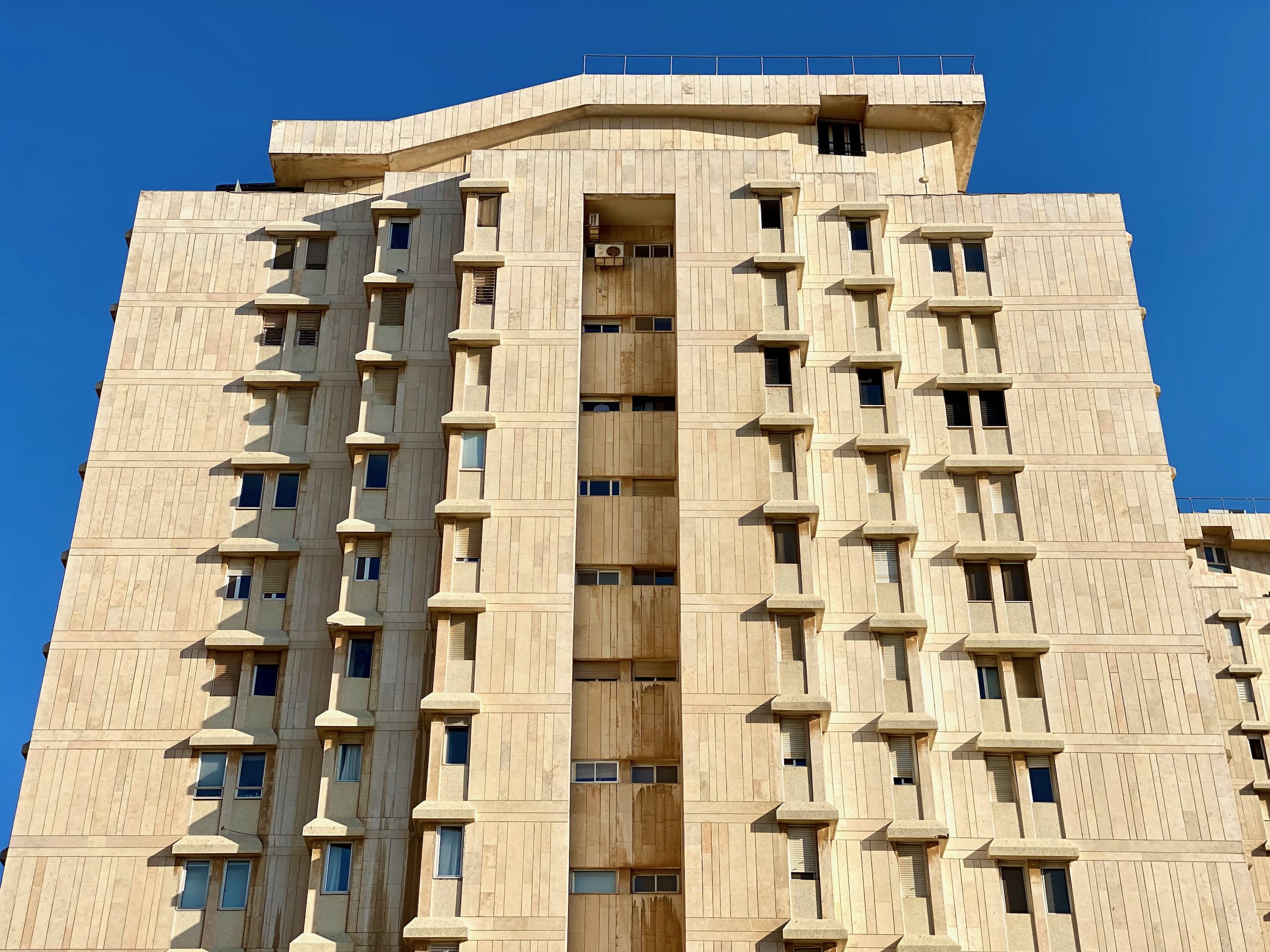
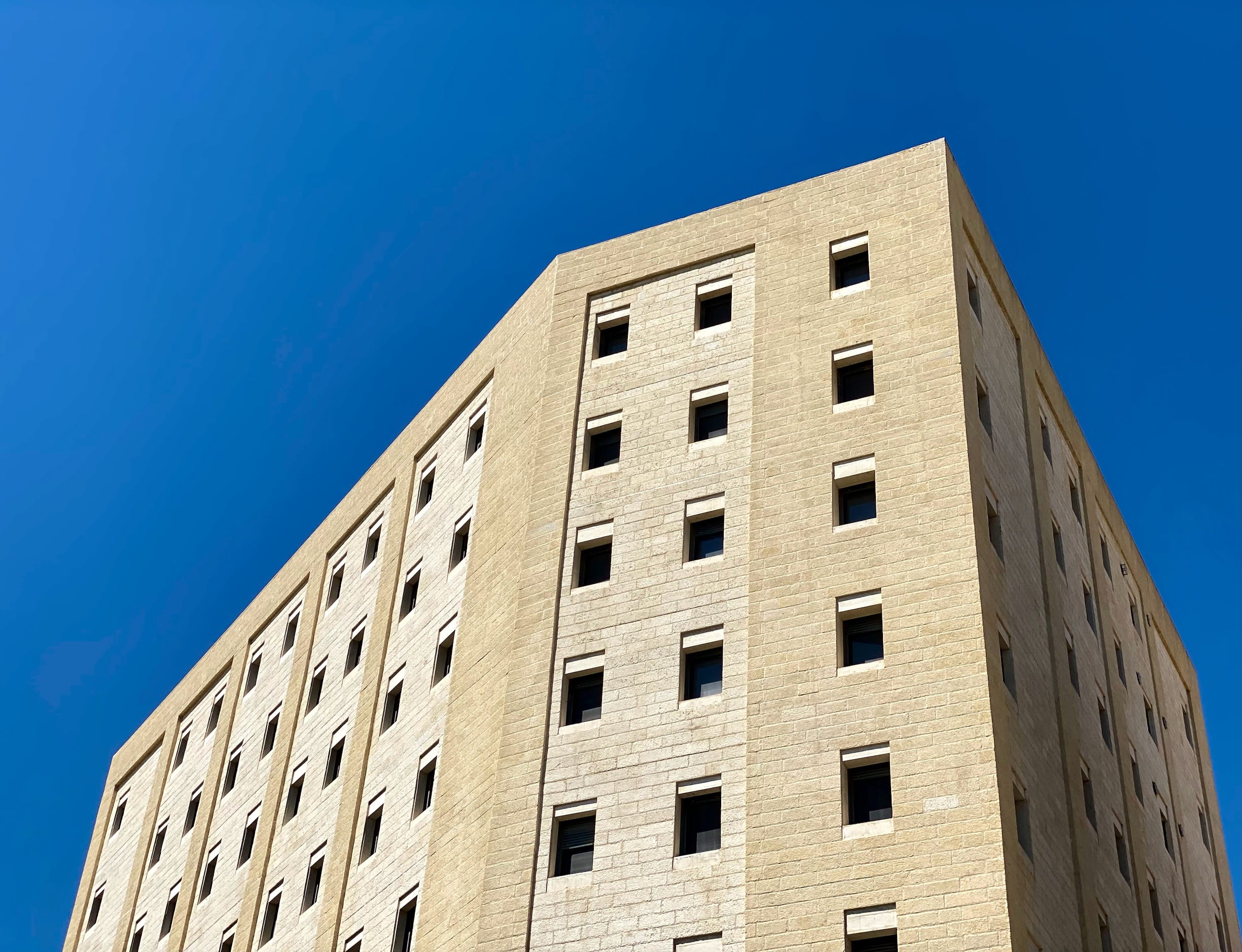

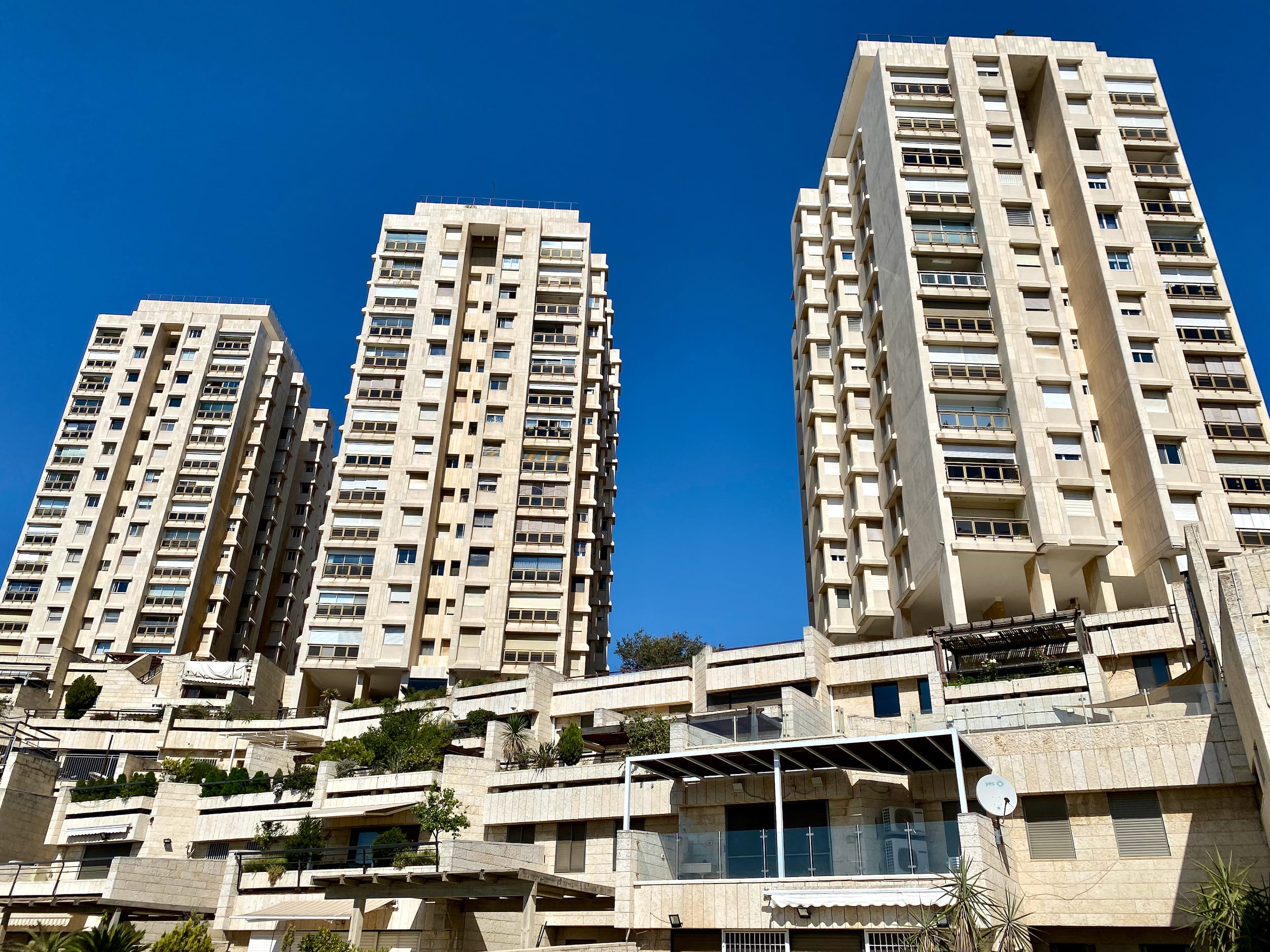
The city—and Israel in general—is wildly expensive, on par with the priciest USA cities.01 I didn’t believe this when they told us this, but I did after going out to eat at a “cheap, casual, local spot” and paying $20 for a small dish. Groceries are no exception to these high prices,02 and to make matters worse, the quality of, e.g., produce is miserable.
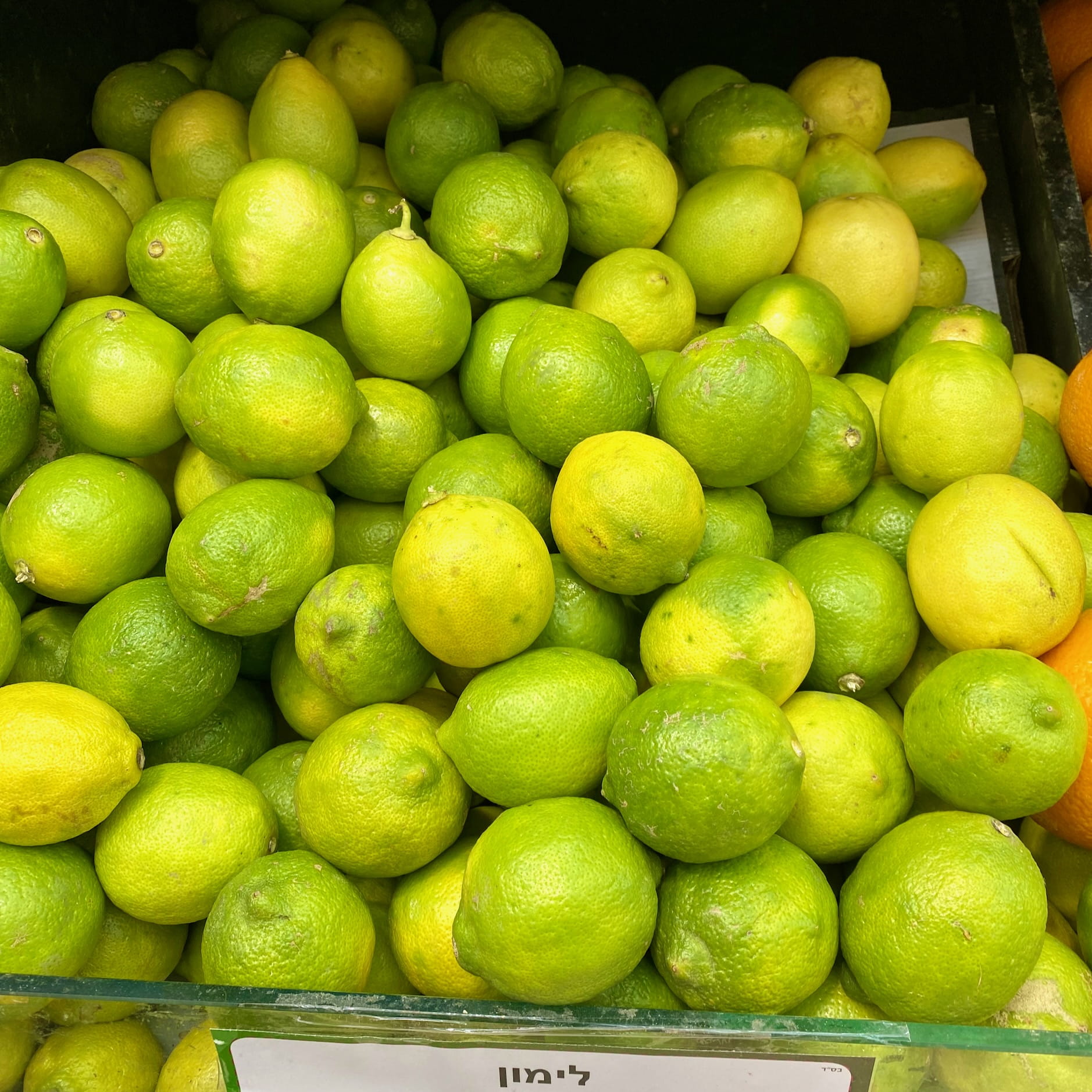
E.g., the green fruits in this pile are all lemons.
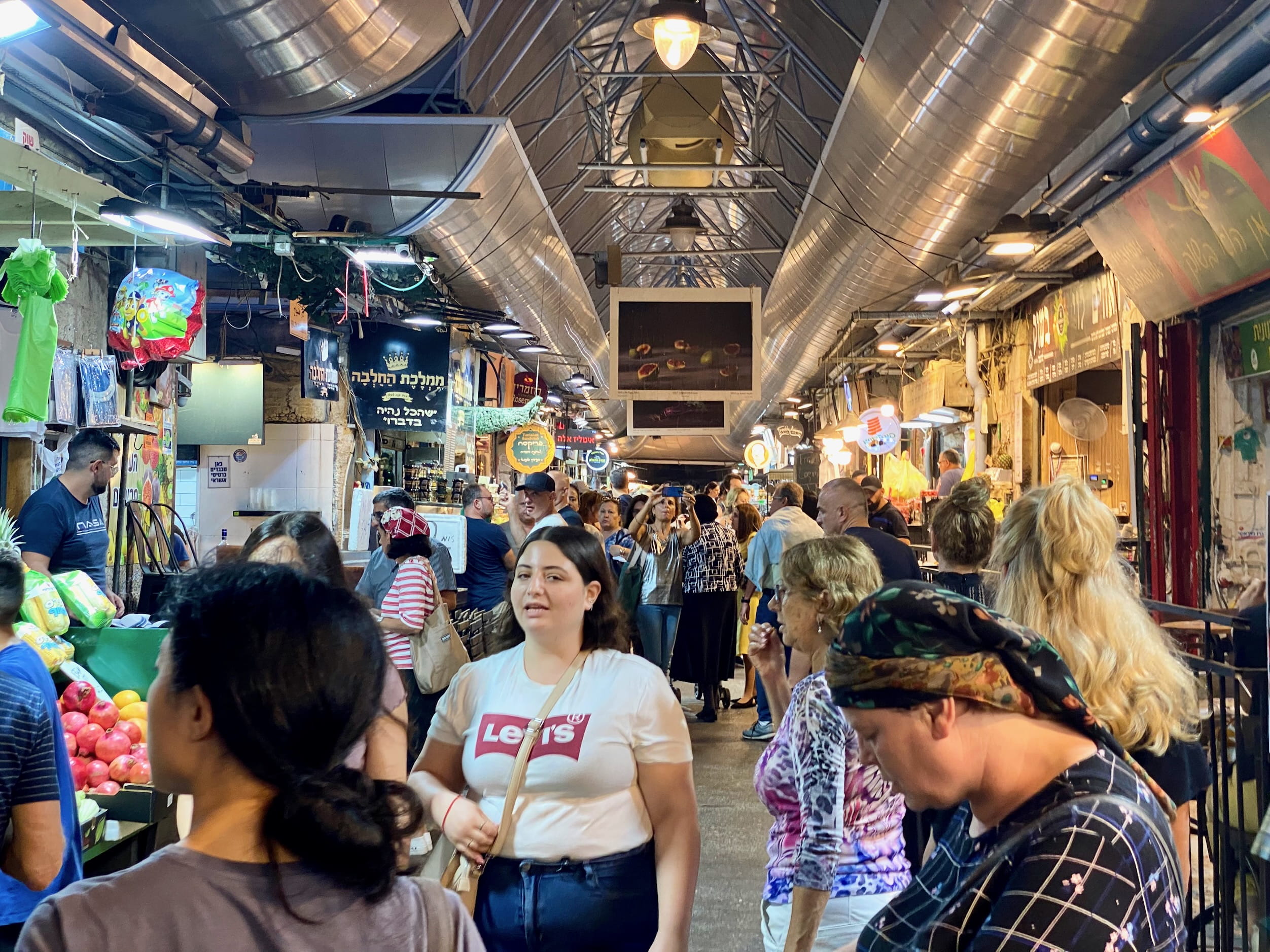
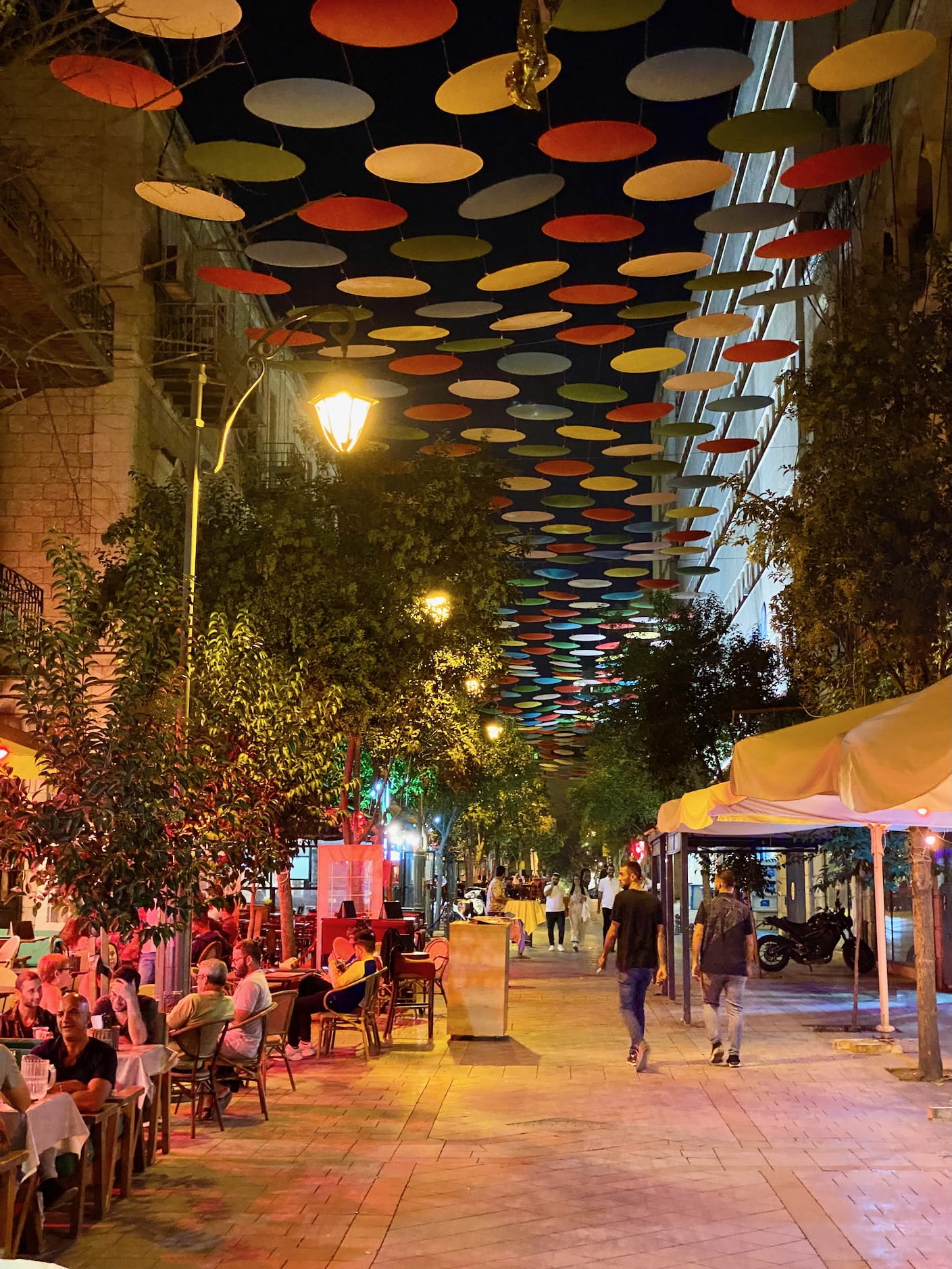
Top: Left: The markets were cool. They were partially, but not fully, taken over by tourists, so there were still plenty of stalls catering to locals, selling e.g., piles of spices or mountains of bread. Bottom: Right: I continue to be jealous of every perpetually warm place because they all have strong outdoor café scenes.
But of course, you don’t come to Jerusalem to eat the fruit, you come to see the Old City.
Jerusalem Old City
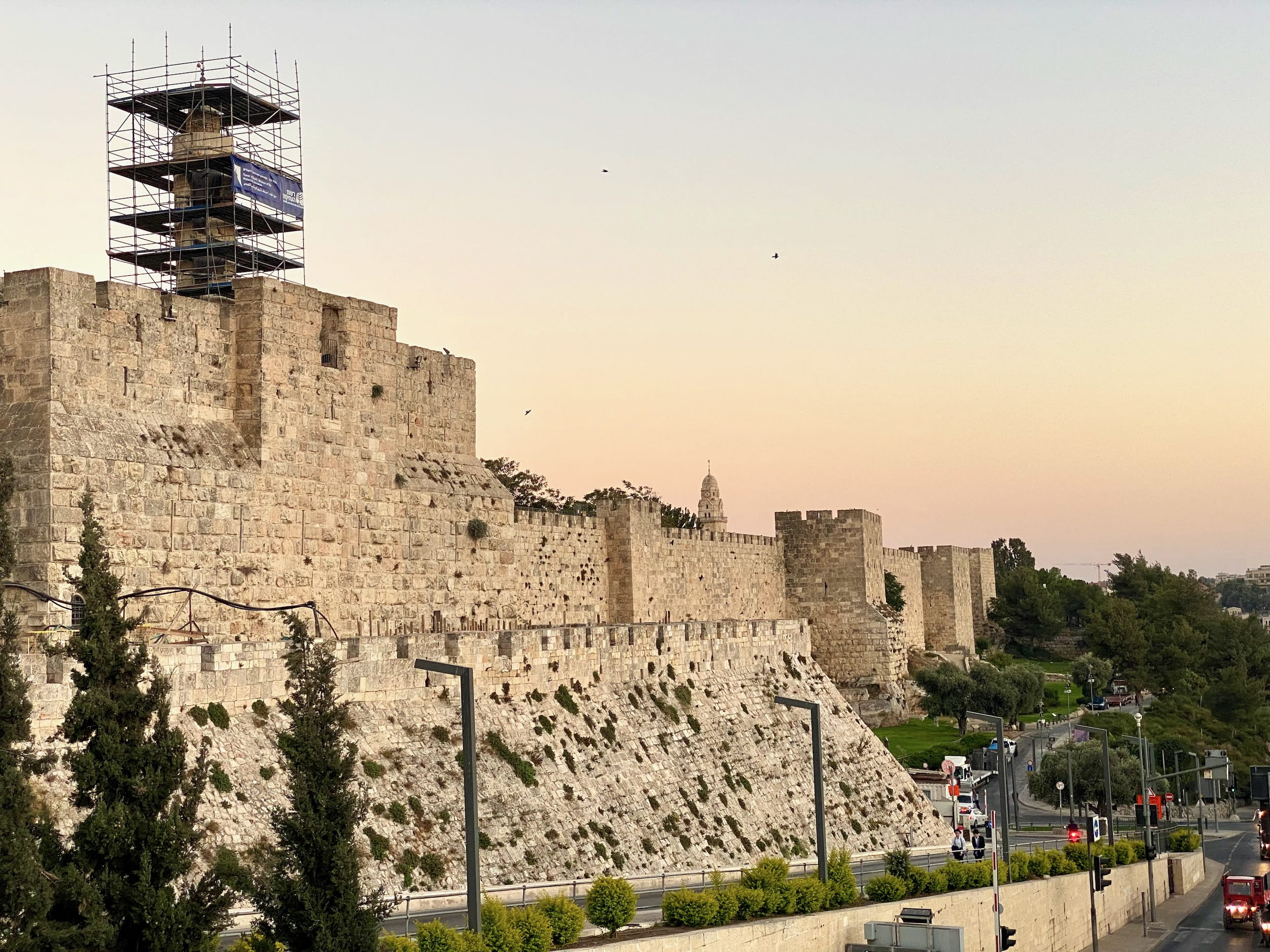
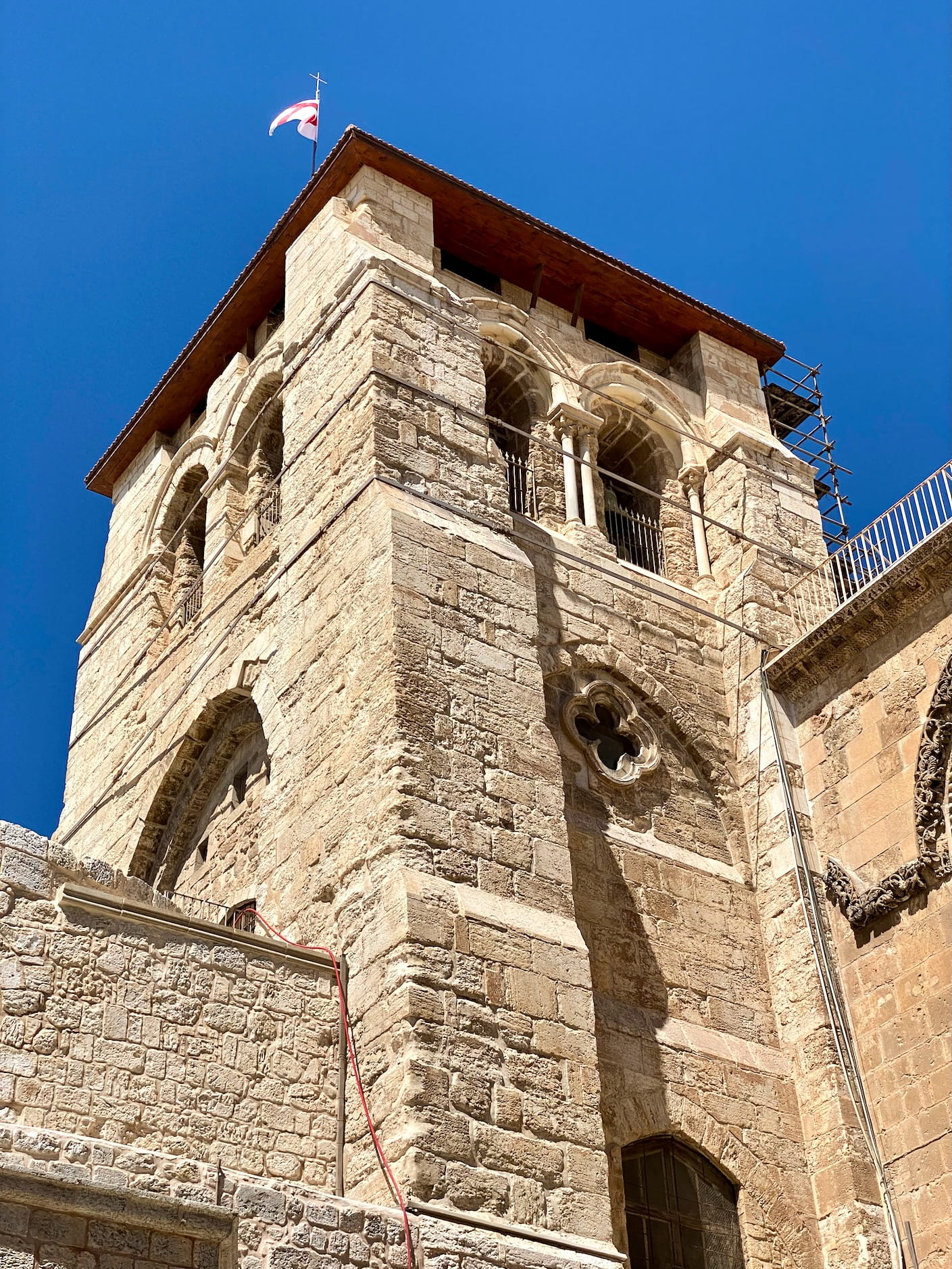
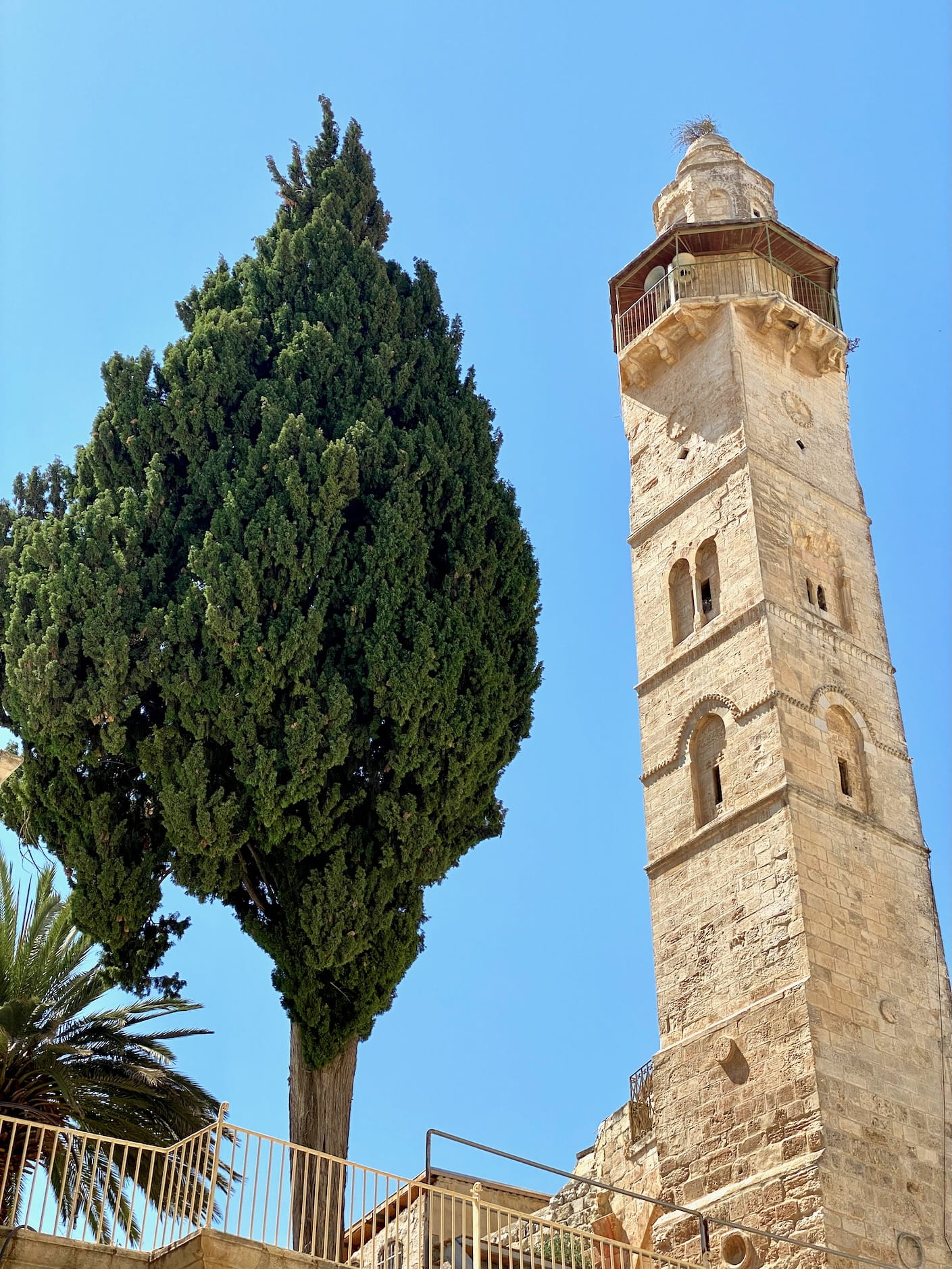
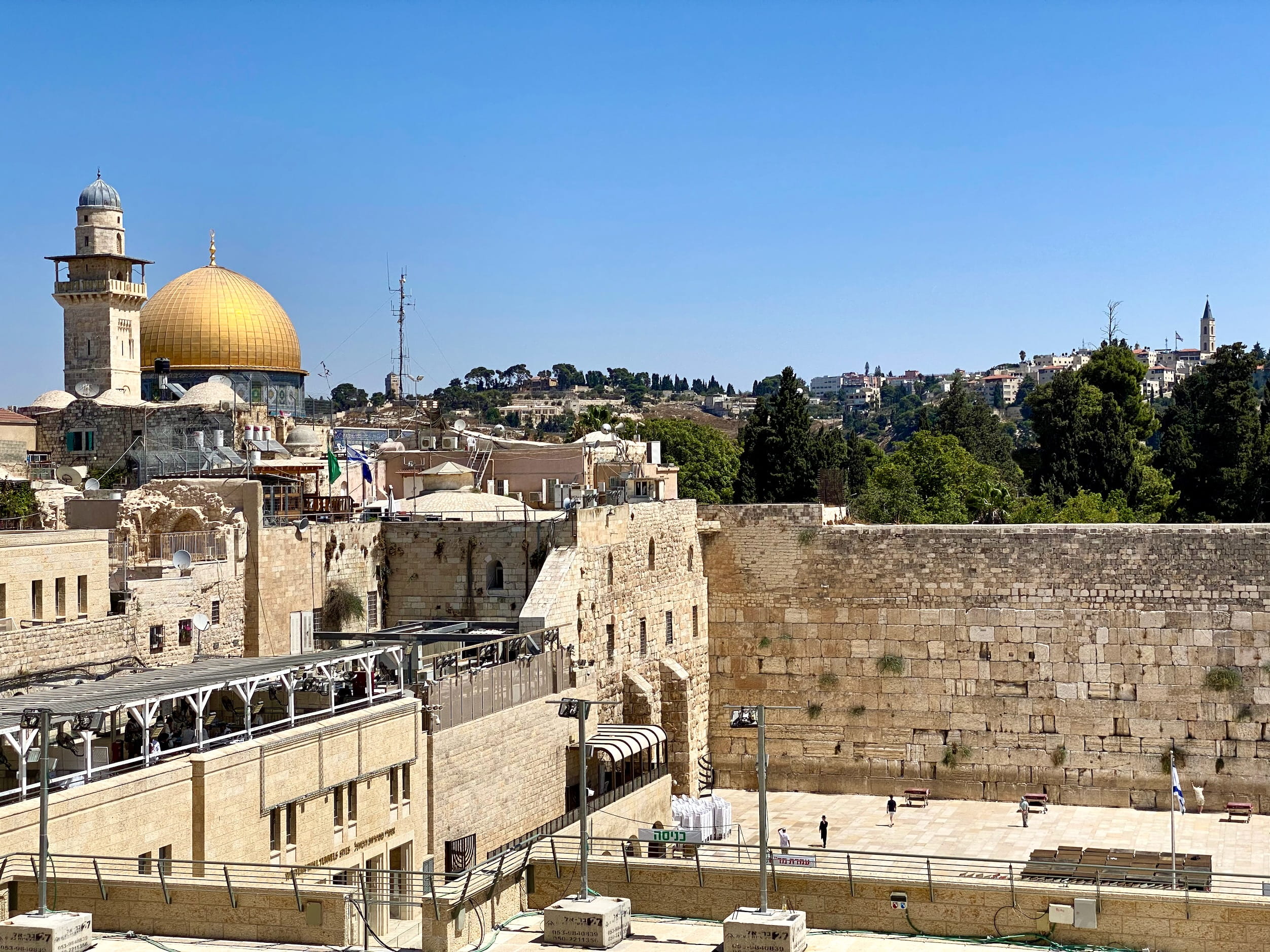
The Old City has a bunch of important stuff for Judaism, Christianity, and Islam. I can’t even begin to describe all the stuff going on because I can barely remember a fraction of what I learned during the tours we took, which only describe fraction of what’s there.
Jerusalem’s Old City is probably the only place I visited where I felt hopelessly unprepared to understand what was going on. I know extremely little about any religion’s history, and suddenly there were at least three religions and several cultures with vast numbers of historical and mythical events, important structures and locations, and inter-group beef baked into the landscape around me. I think if you’ve got any interest in religion, or grew up with it, you’d get more value out of the Old City.

E.g., I remember taking a picture of the columns here because they are either true remnants or reconstructed reminders of something, maybe the historical boundaries of Jerusalem’s Old City back at some time where one of the groups was happier probably, ugh I don’t know.
While we’re talking old city, here’s a fun fact: it’s carved up into four quarters, which are:
- Muslim Quarter
- Christian Quarter
- Jewish Quarter
- Armenian Quarter
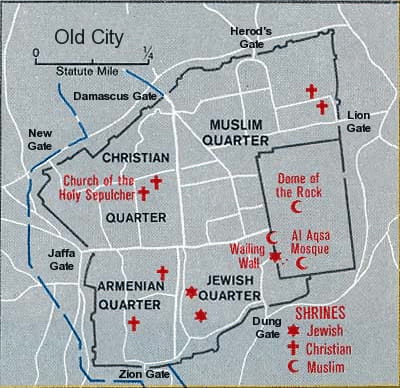
Four quarters of Jerusalem’s Old City.
One of these is not like the other. The Armenian quarter? Yep, my recollection is that Armenians basically got a quarter because they were early adopters of Jesus.03 Like a big territory payout after Christianity’s IPO. Here’s a fun fact from Wikipedia: the rest of the Christians in Jerusalem, Israel, and Palestine are mostly Arabs (Arab Christians) or Palestinians (Palestinian Christians).
So yeah, that’s the Old Quarter carved up. But the most fun example of carving up is one of the Christian Churches (check out the color coding):
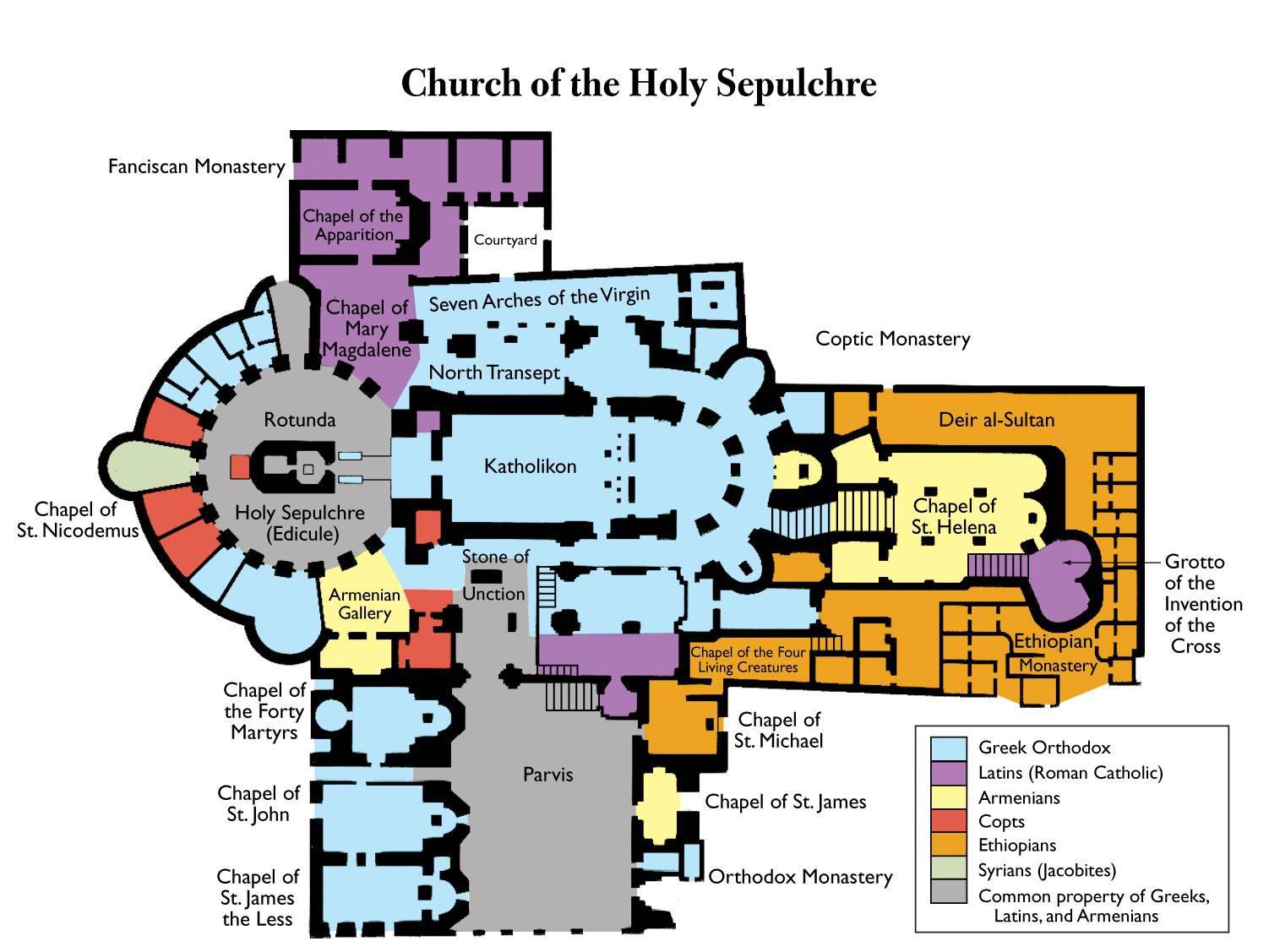
Diagram of how the church is split between different groups.
Here’s a couple more small things I saw:
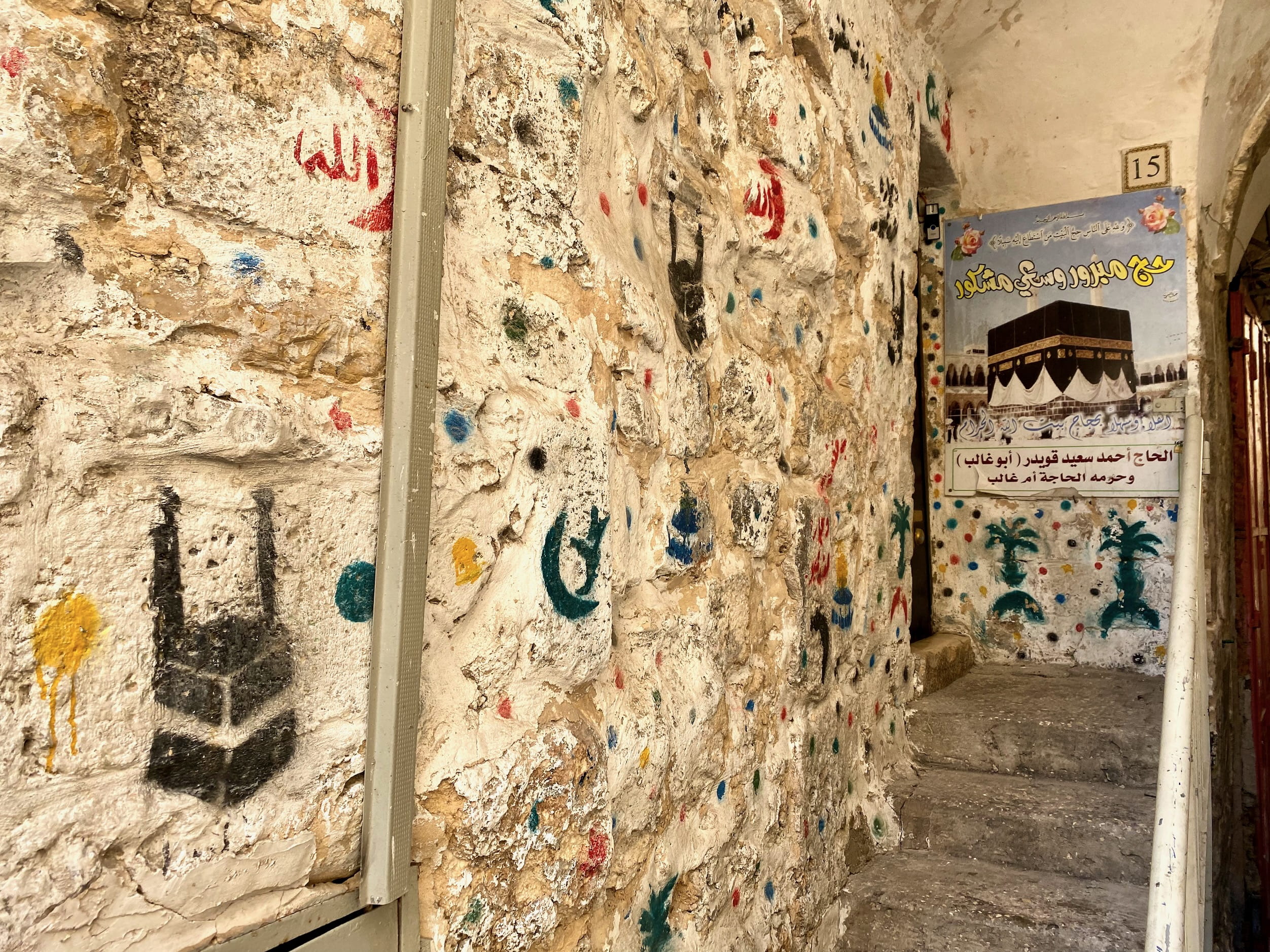
It turns out if you get to go to Mecca, it’s a huge deal, and so as a celebration you have a big party to decorate the outside of your place when you come back. I found this really cute.
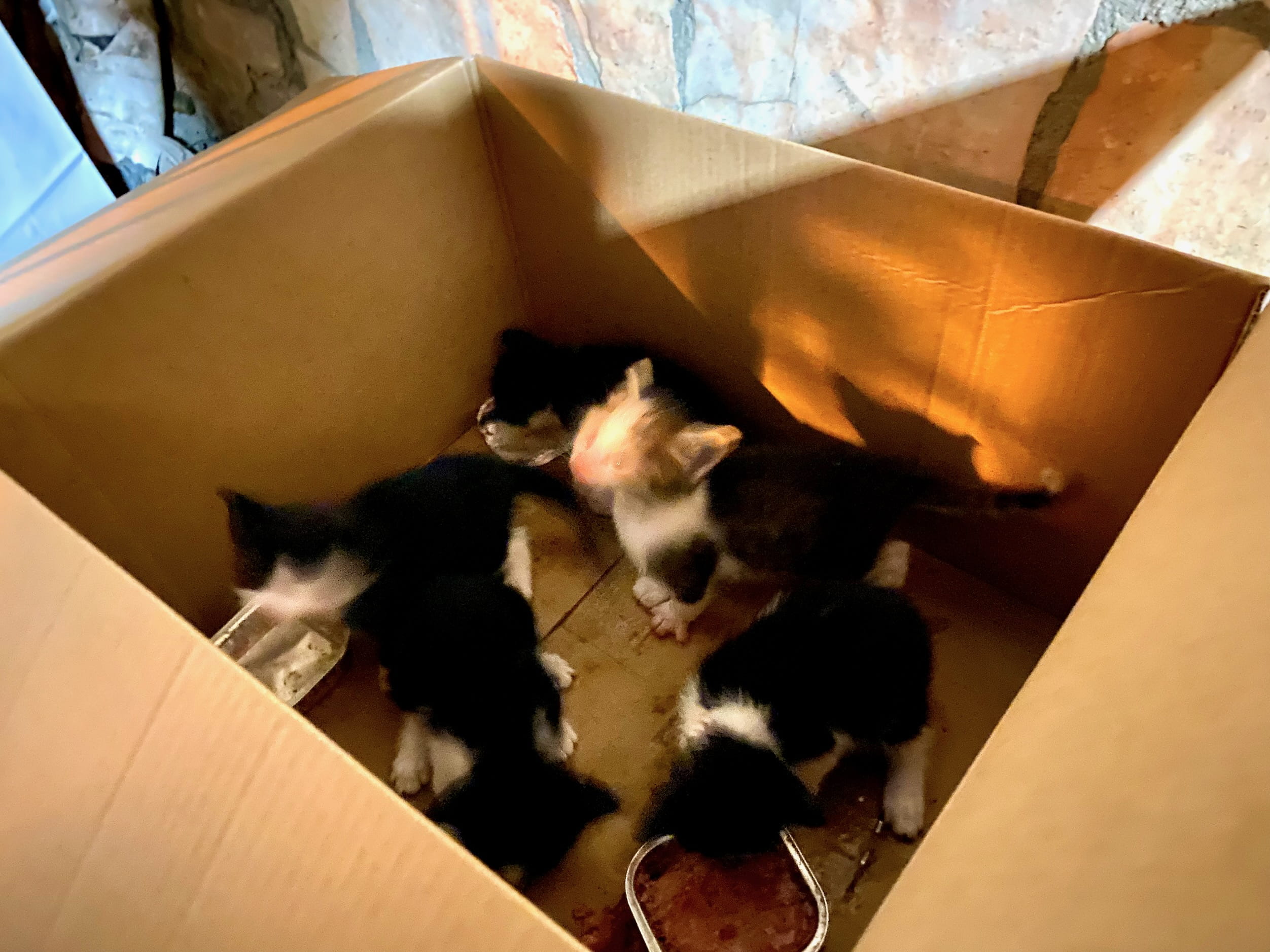
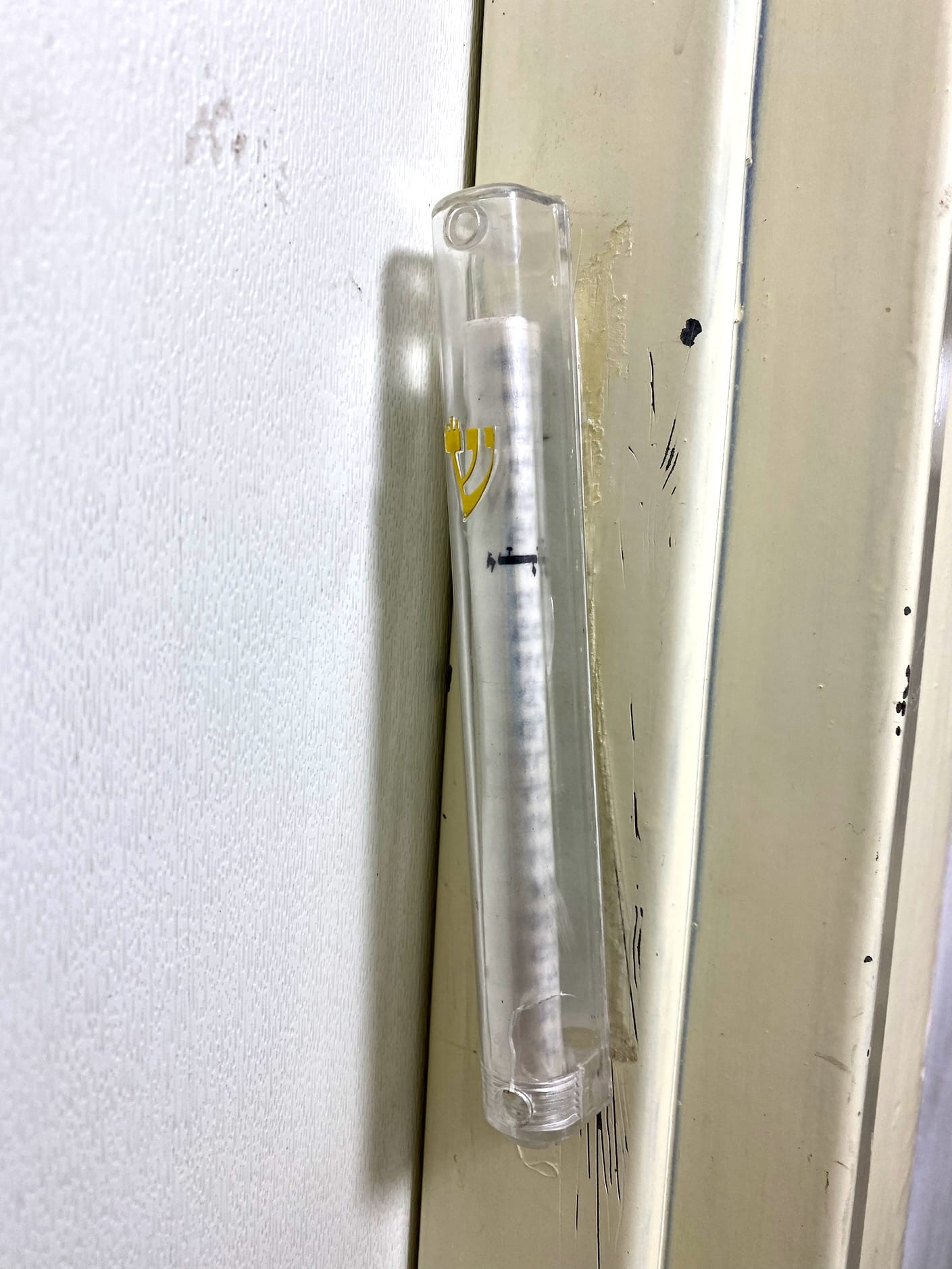
Top: Left: Box of kittens left outside our building 😢 We looked up animal shelters but none were open. It was gone by the morning, so it seems like someone lent a helping hand. Bottom: Right: These are outside every apartment door, and I learned they’re called Mezuzah.
One of my most memorable experiences was taking a bus for an hour out up the hill east of the Old City. There was an immediate transition from Jewish men in head-to-toe garb from different sects, speaking Hebrew, reading the Torah; to men in casual wear, speaking Arabic, with women in hijab. (The reverse transition happened on the bus back.) The restaurants and demographics and infrastructure quality all changed dramatically. In this Arab district, we got lost trying to find the viewpoint we wanted, and friendly people helped us find where to go.
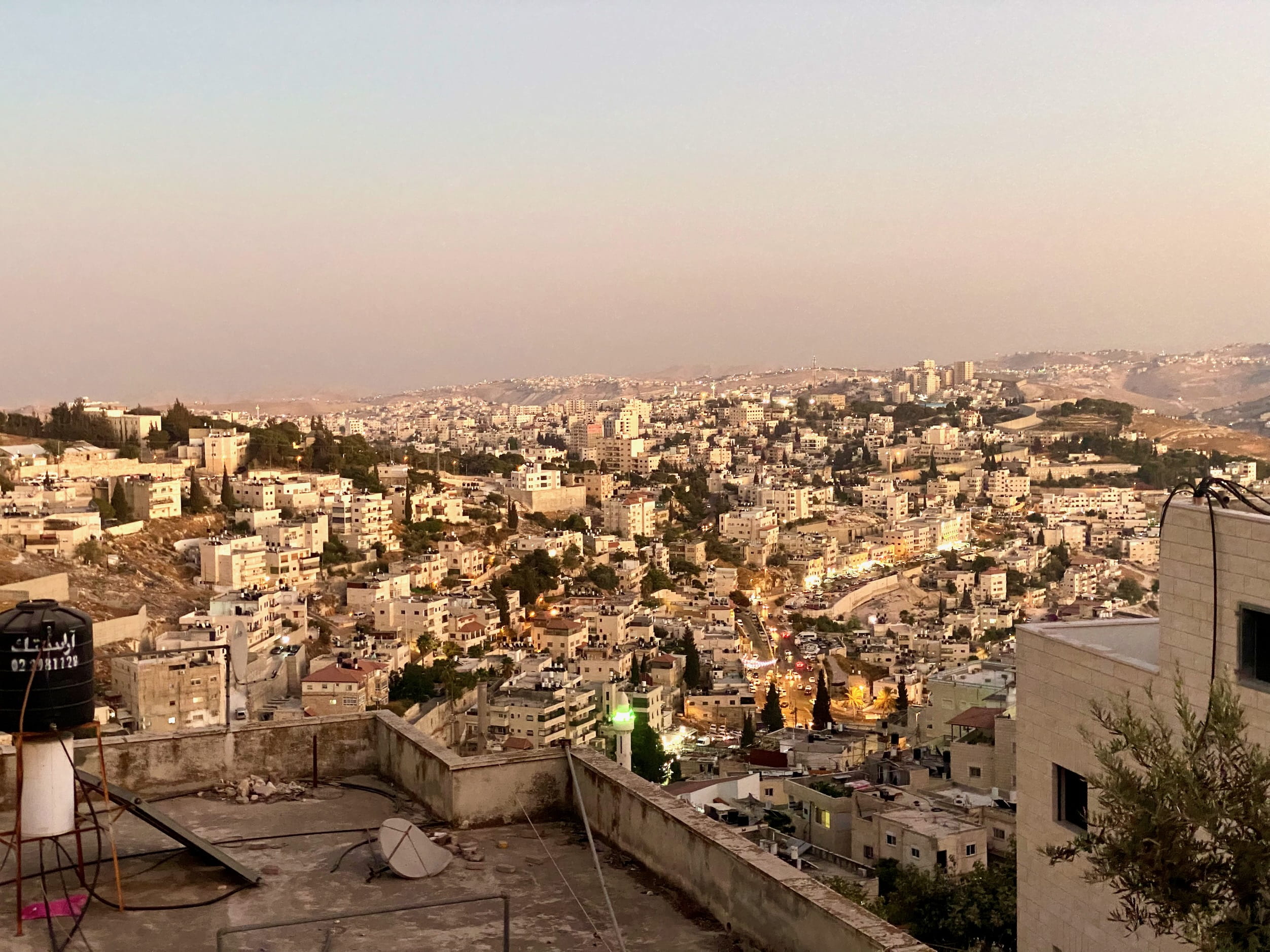
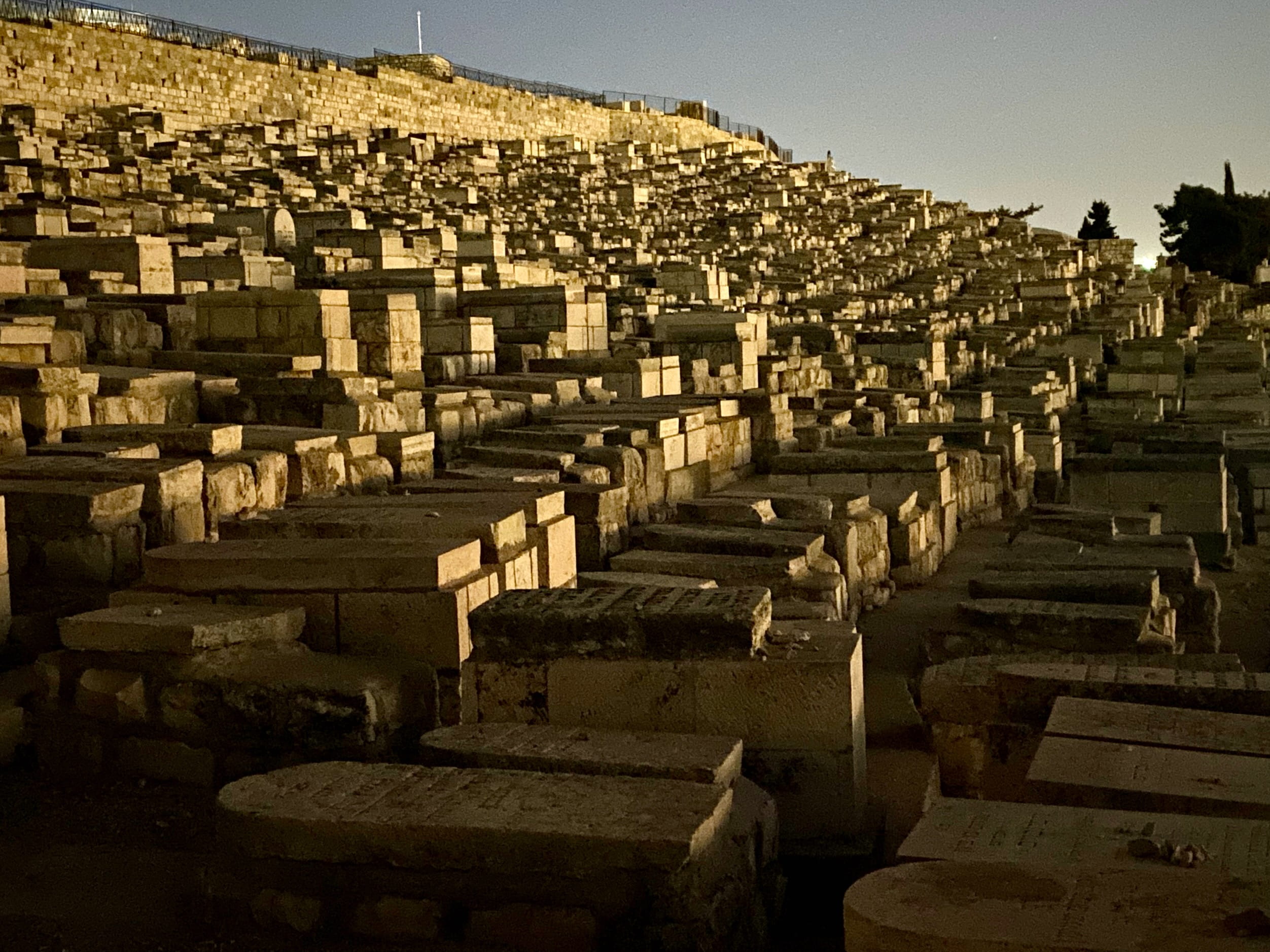
Shabbat in Jerusalem
We’d read before that Shabbat in Jerusalem is a unique experience. The city almost completely shuts down. Ostensibly it’s from sundown Friday to sundown Saturday, but stores start closing just after noon on Friday.
Our plan was to spend the Shabbat semi-authentically, by:
- going to check out the Western Wall at sundown on Friday, right when Shabbat started and everyone floods in to pray
- cooking a big meal and relax in the evening
- technically we should have cooked before Shabbat started, but we were kind of following a “spirit not the rule” thing
- spend Saturday walking around and hanging out
One cool thing about the Western Wall is the Jewish folks are totally happy for you to come and visit, and you can even go and pray to whatever religion or god you like at the wall.04 When I went up to the wall, there were a bunch of Jewish guys from many different sects, but also a handful of randos saying all kinds of stuff. It was cool.
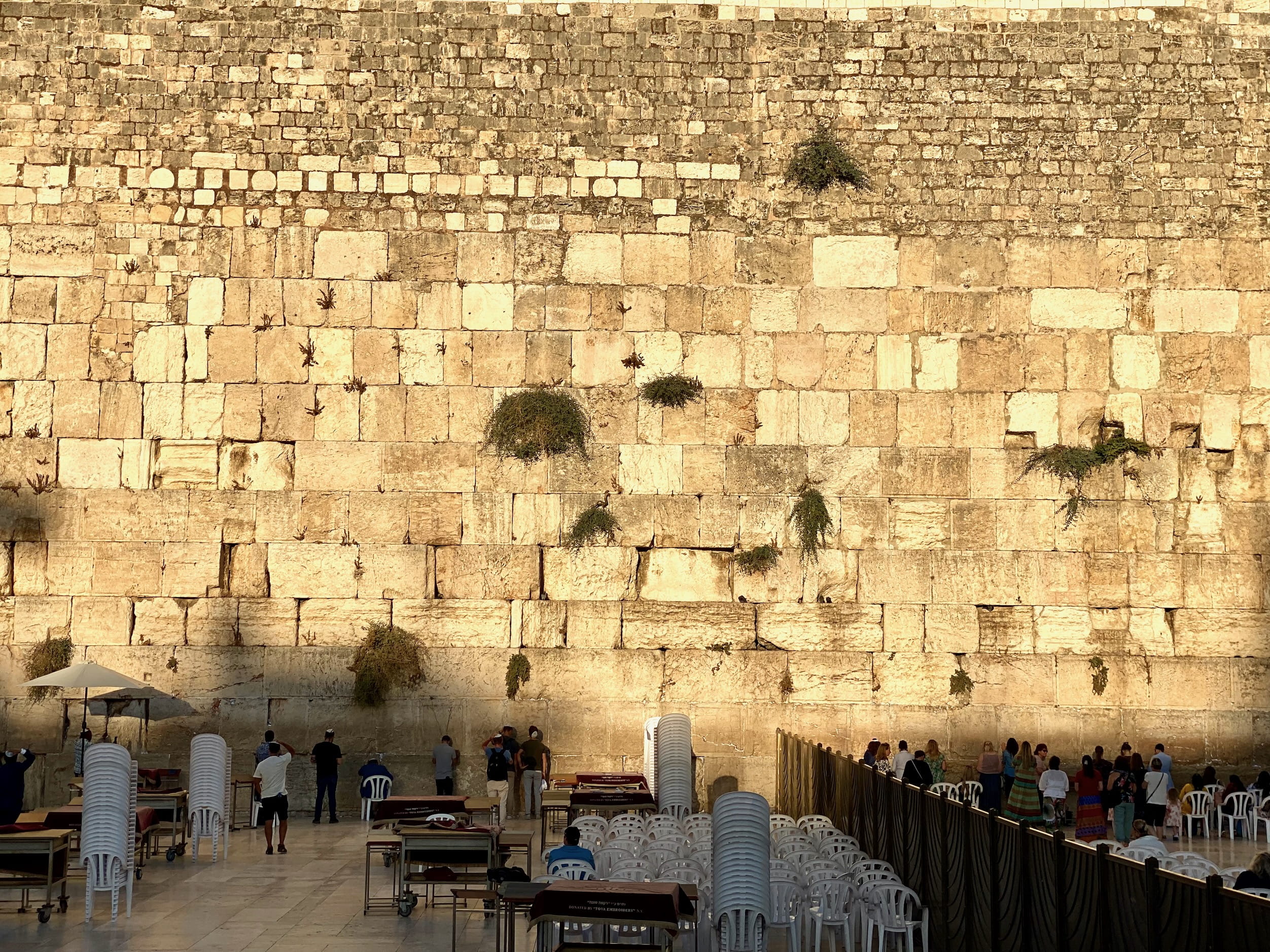
Western Wall, Friday just before sundown. Once Shabbat starts you’re not supposed to use your phone, at least while there, to keep with the rules.
I barely managed to get the ingredients I needed before stores closed after noon on Friday. One tip our AirBnb host told us is that the cheaper stores are Russian markets, where the goods are quite literally all in Russian.05
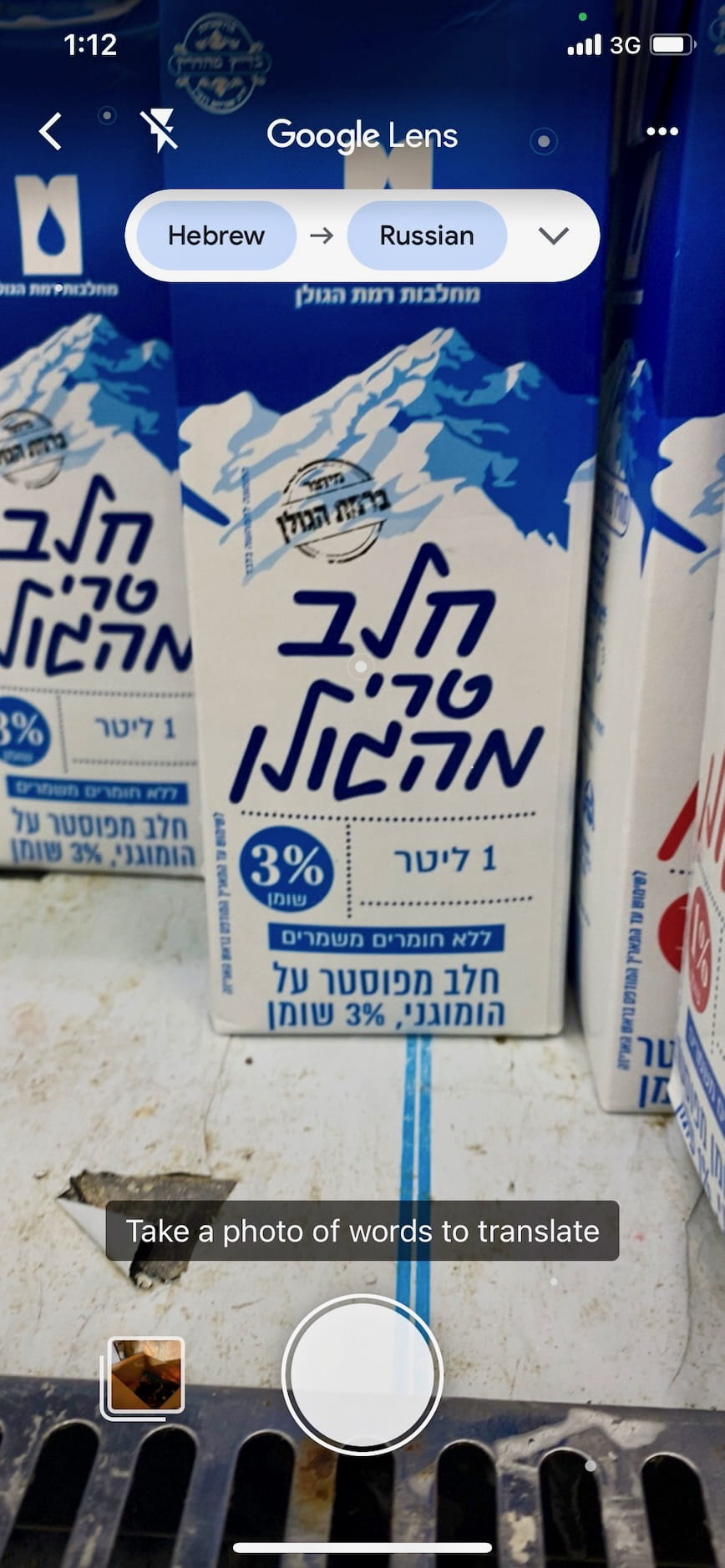
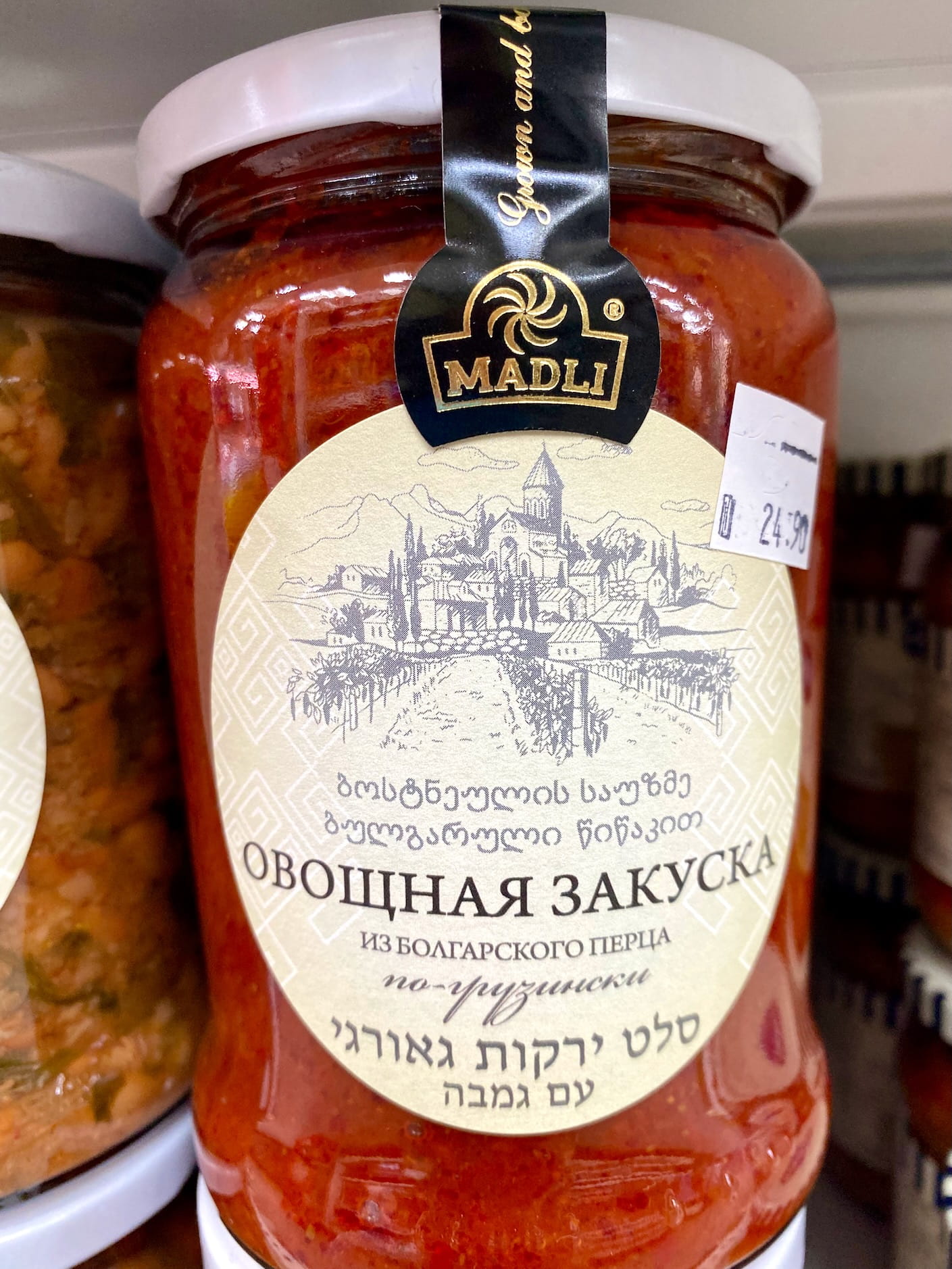
This led to some funny situations where, for stylized product fonts, I couldn’t tell whether it was Hebrew or Cyrillic, hence the strangest Google Translate I’ve ever tried.
I learned three things that dinner:
- A wine bottle makes a decent rolling pin
- If you roll your pasta too thick, you can cook it for literally 40 minutes an the inside will never get done. I have no idea how this is possible.
- Israel makes wine, and it is very good! At least that bottle was.
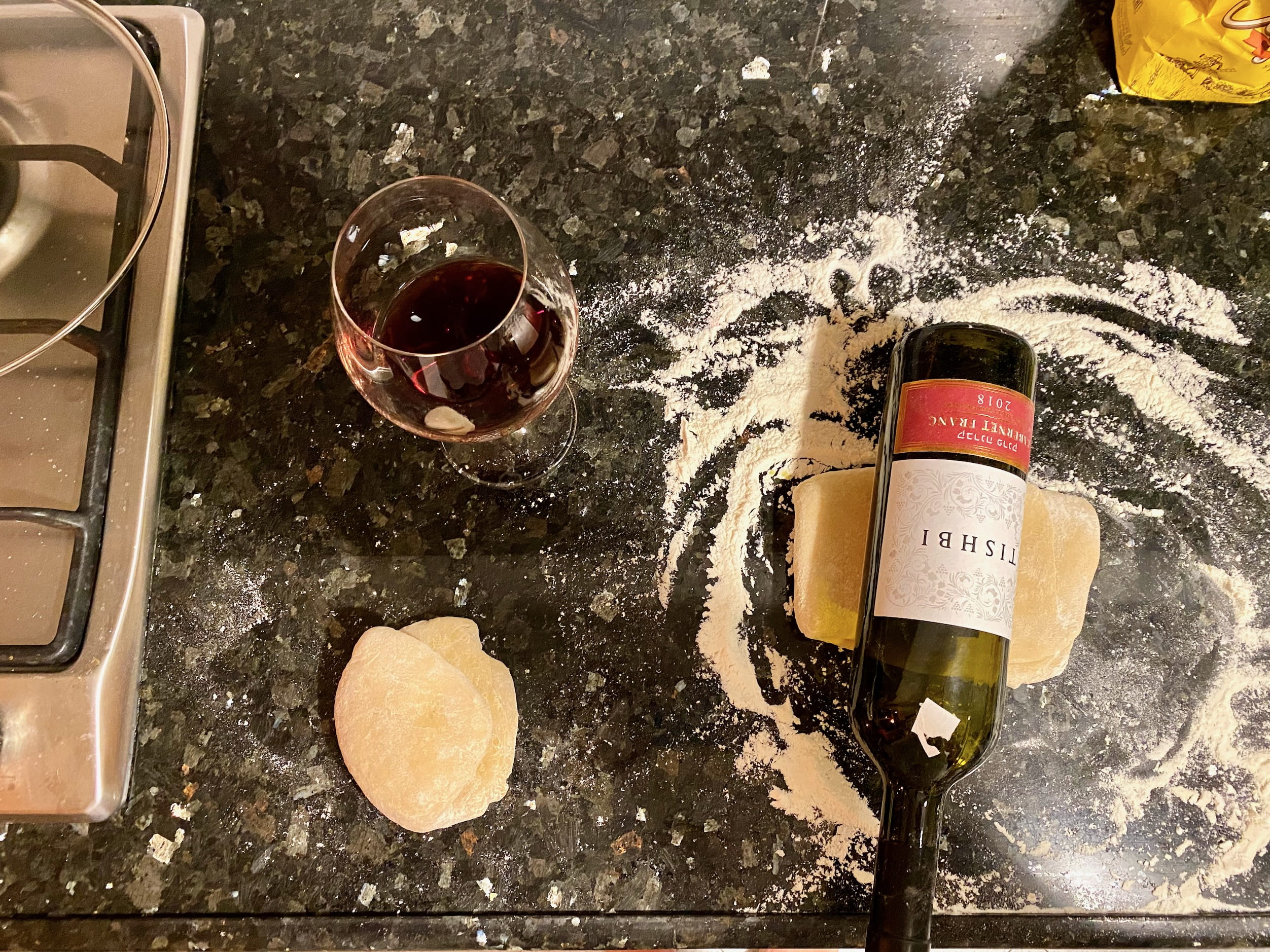
The Israel Museum
I’m not usually into anthropological museums, but this one was beautifully done.
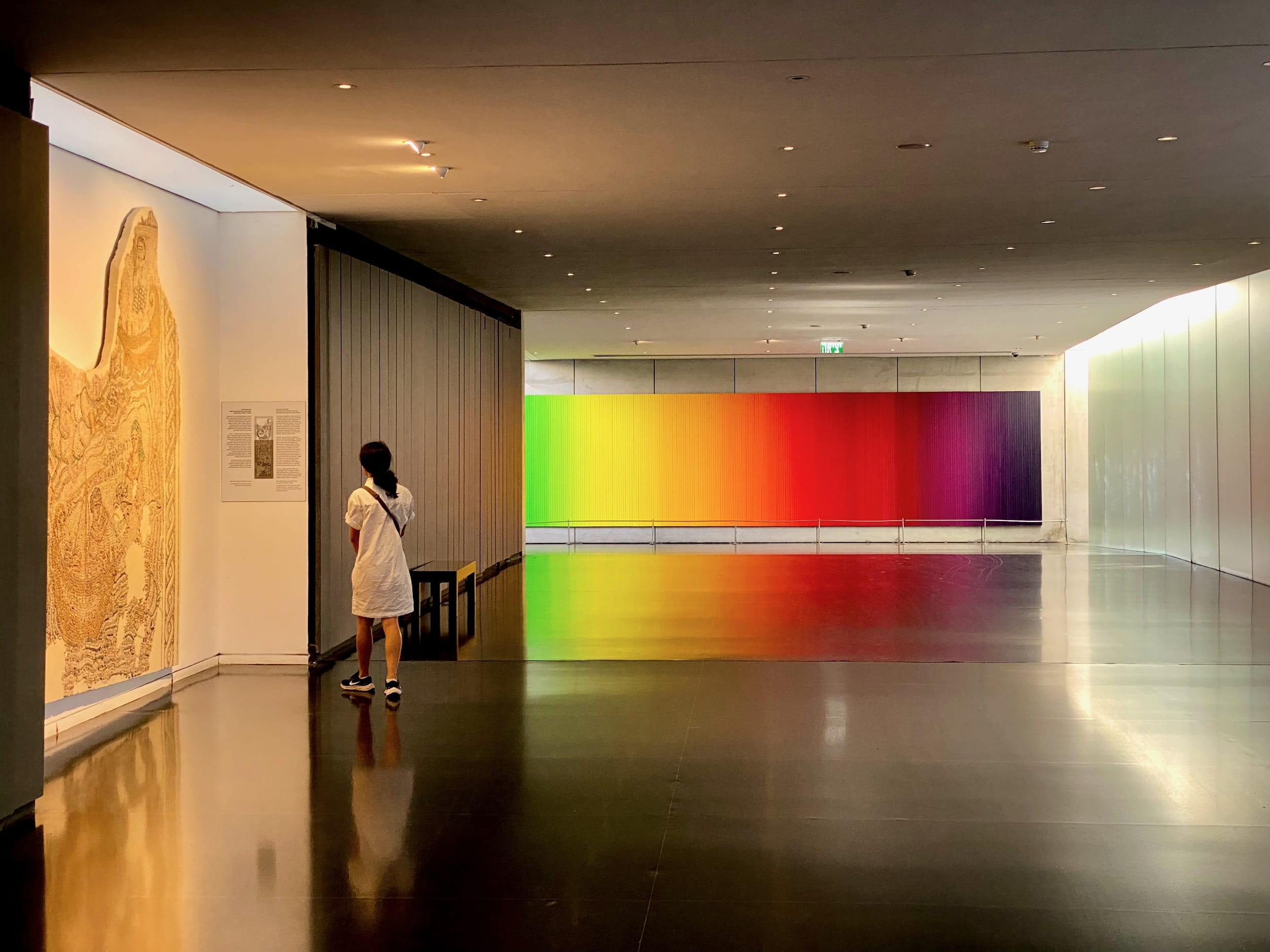
I’d like to share a couple highlights of things I found interesting.
The first is Phoenician (I think) writing. When in stone, because it’s done with these gashes, they can incorporate writing as a story layer on top of their artwork.
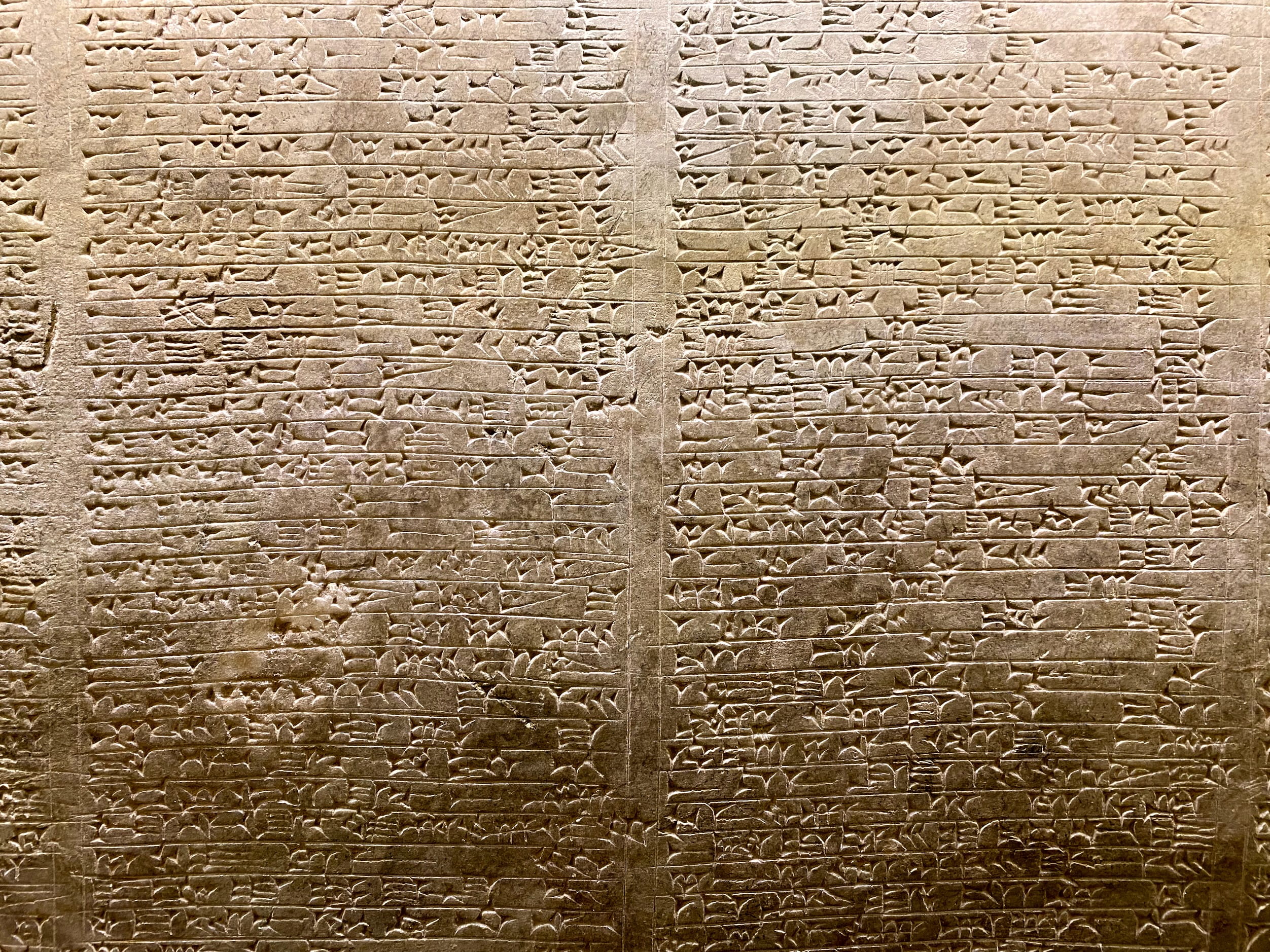
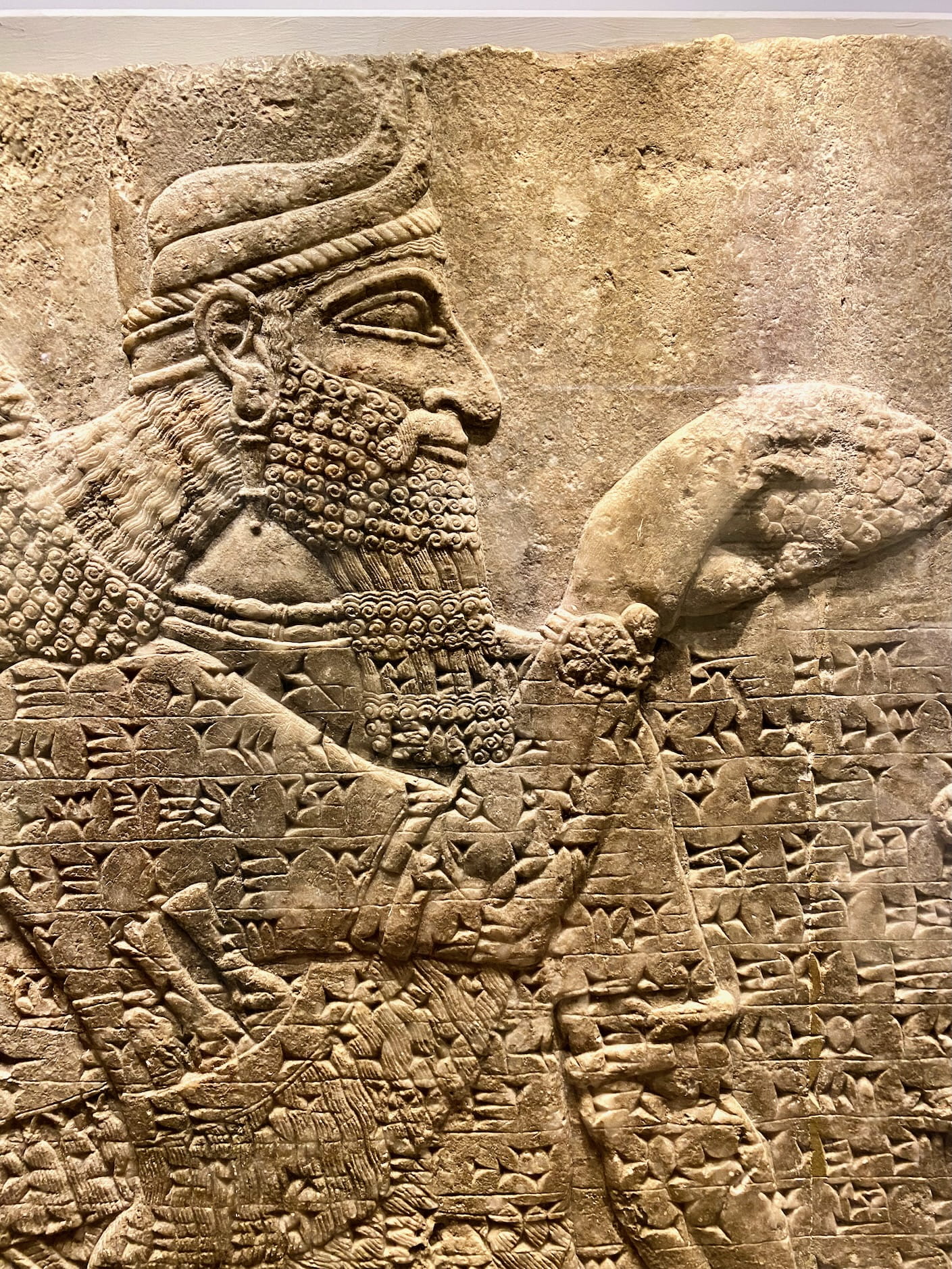
Seeing this reminded me of when I learned, at the Alhambra in Granada, that the thin lines you see decorating Islamic architecture is actually Arabic writing (often passages from the Quran, IIRC). They also had some beautiful samples of that:
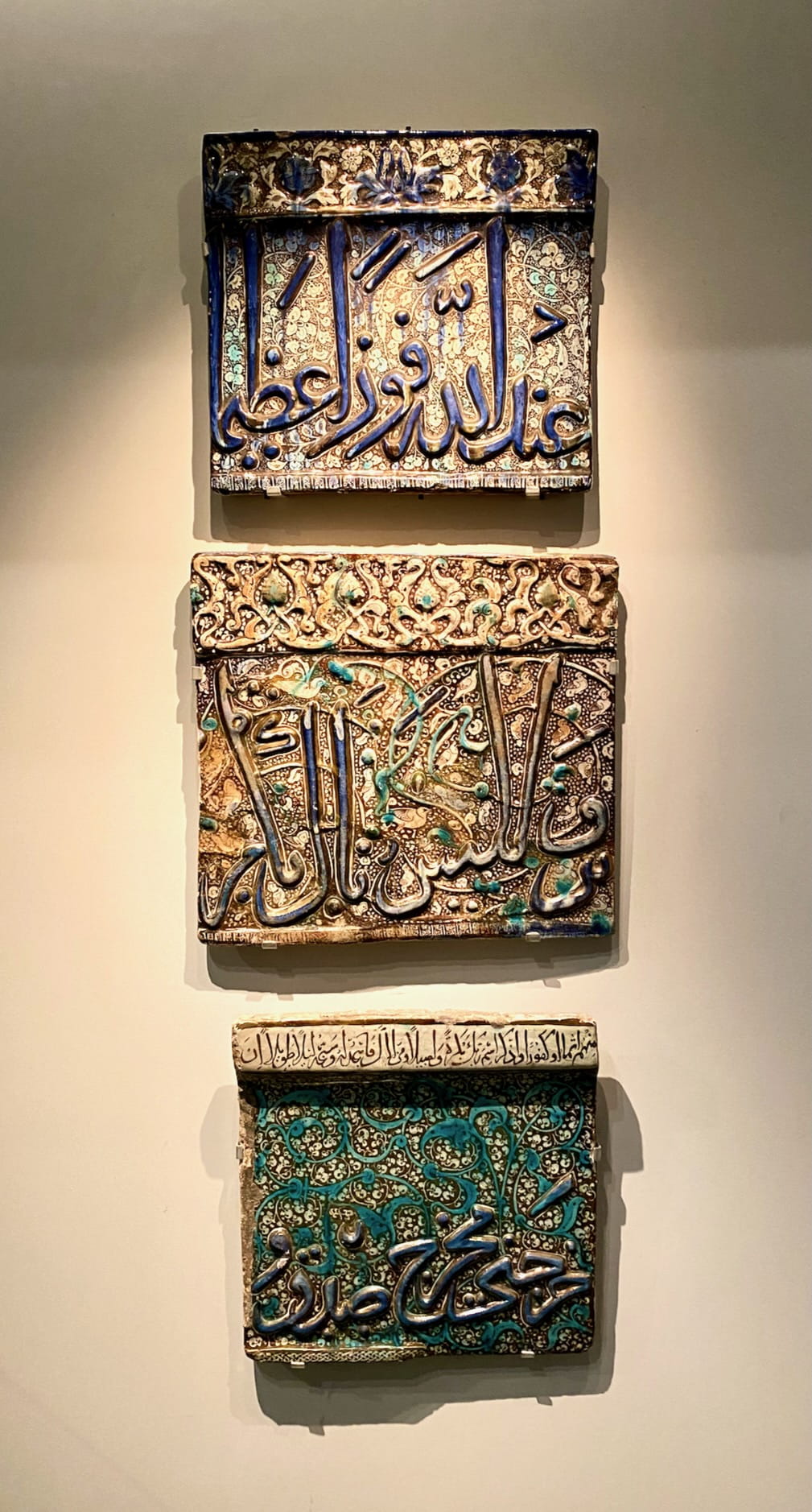
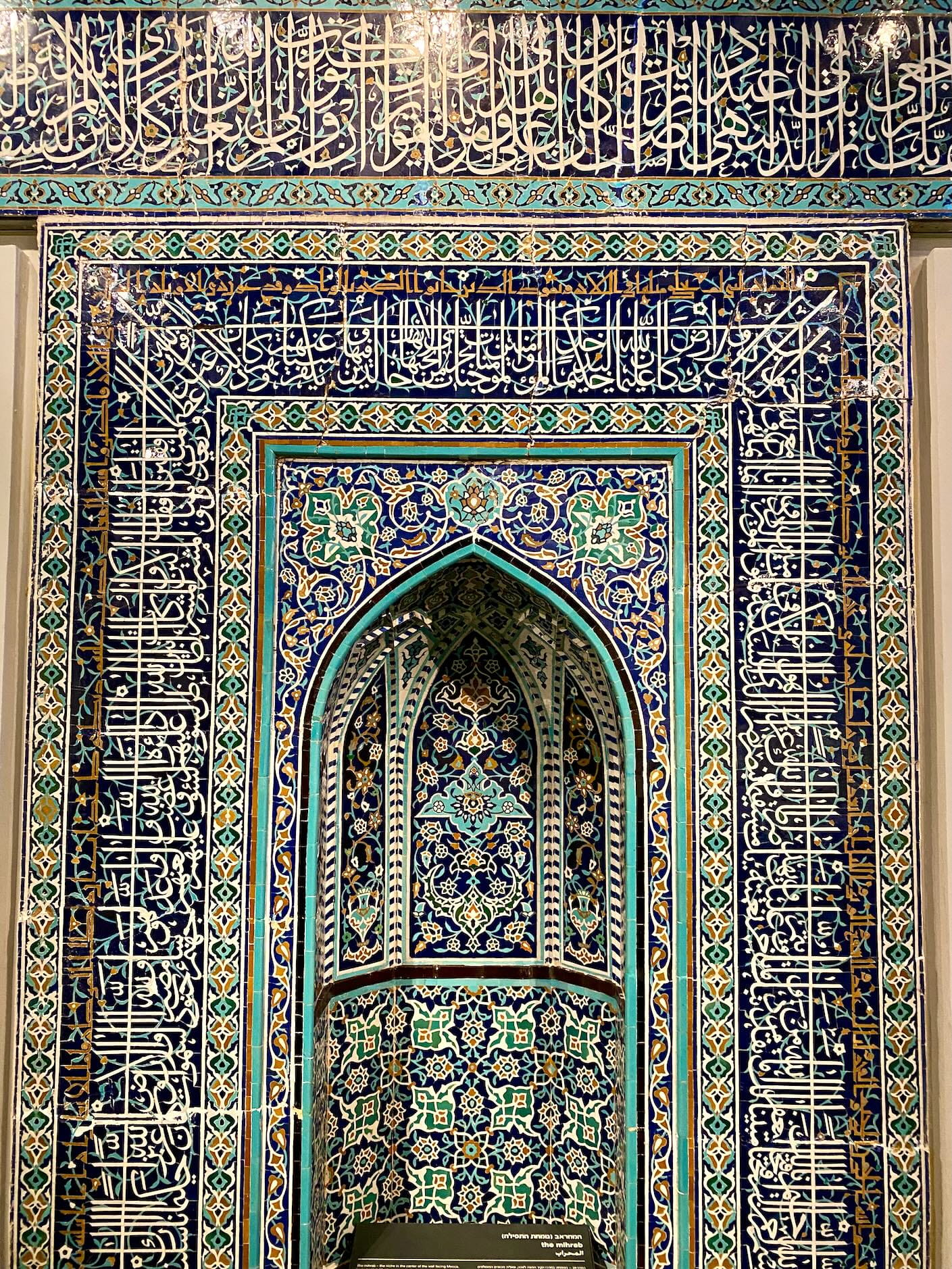
One of the most interesting things for me was simply a map. And it wasn’t even the map’s contents, just what it showed. This map showed Europe, but stretched southeast to the Indian Ocean. It made the Middle East and North Africa seem like close neighbors of Europe in a way that I–embarrassingly—never really thought about or realized.
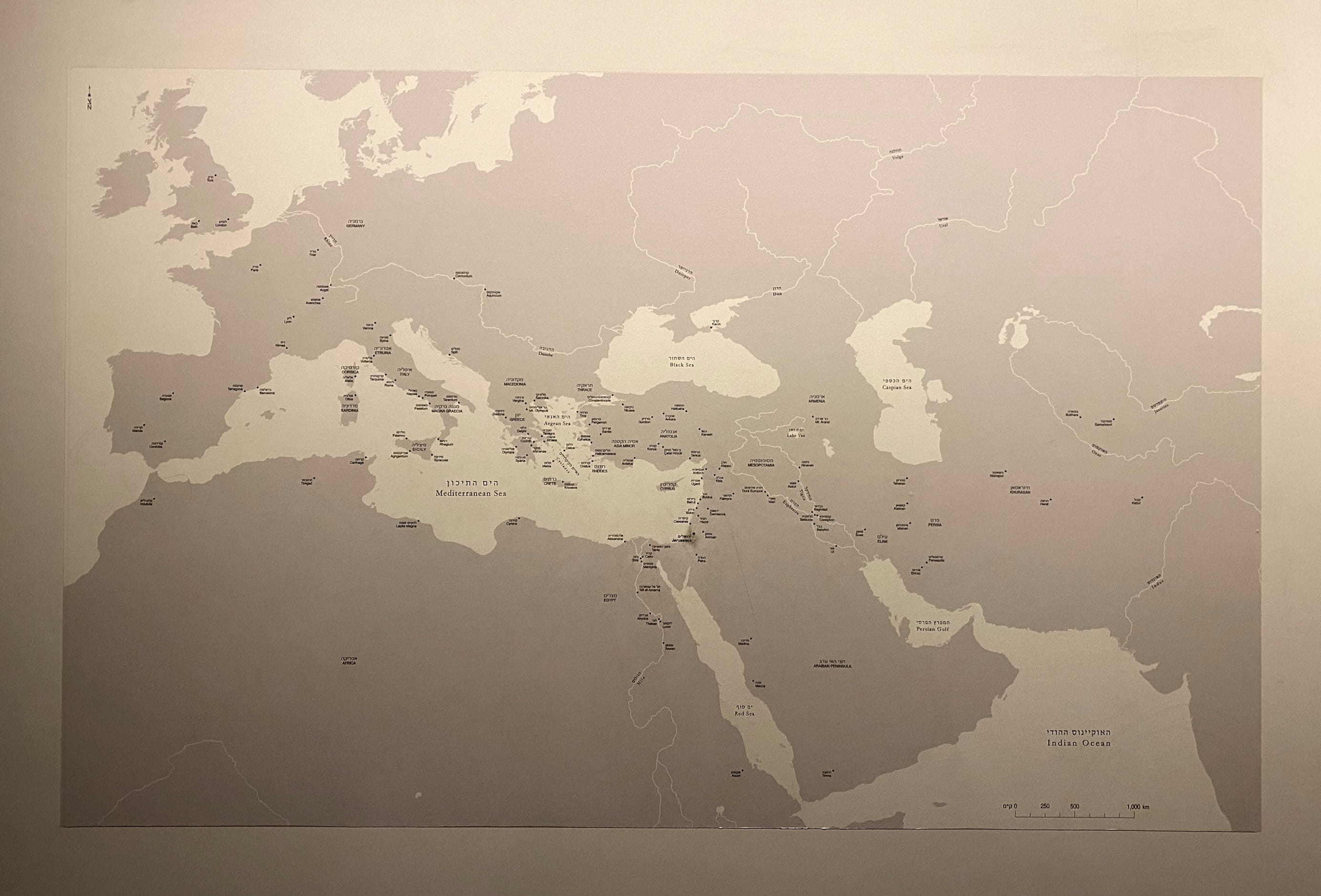
Inspired by this, I made a little animated map highlighting which modern day countries border the Mediterranean. Despite visiting Italy and Spain and France several times, I never contextualized them geographically like this.
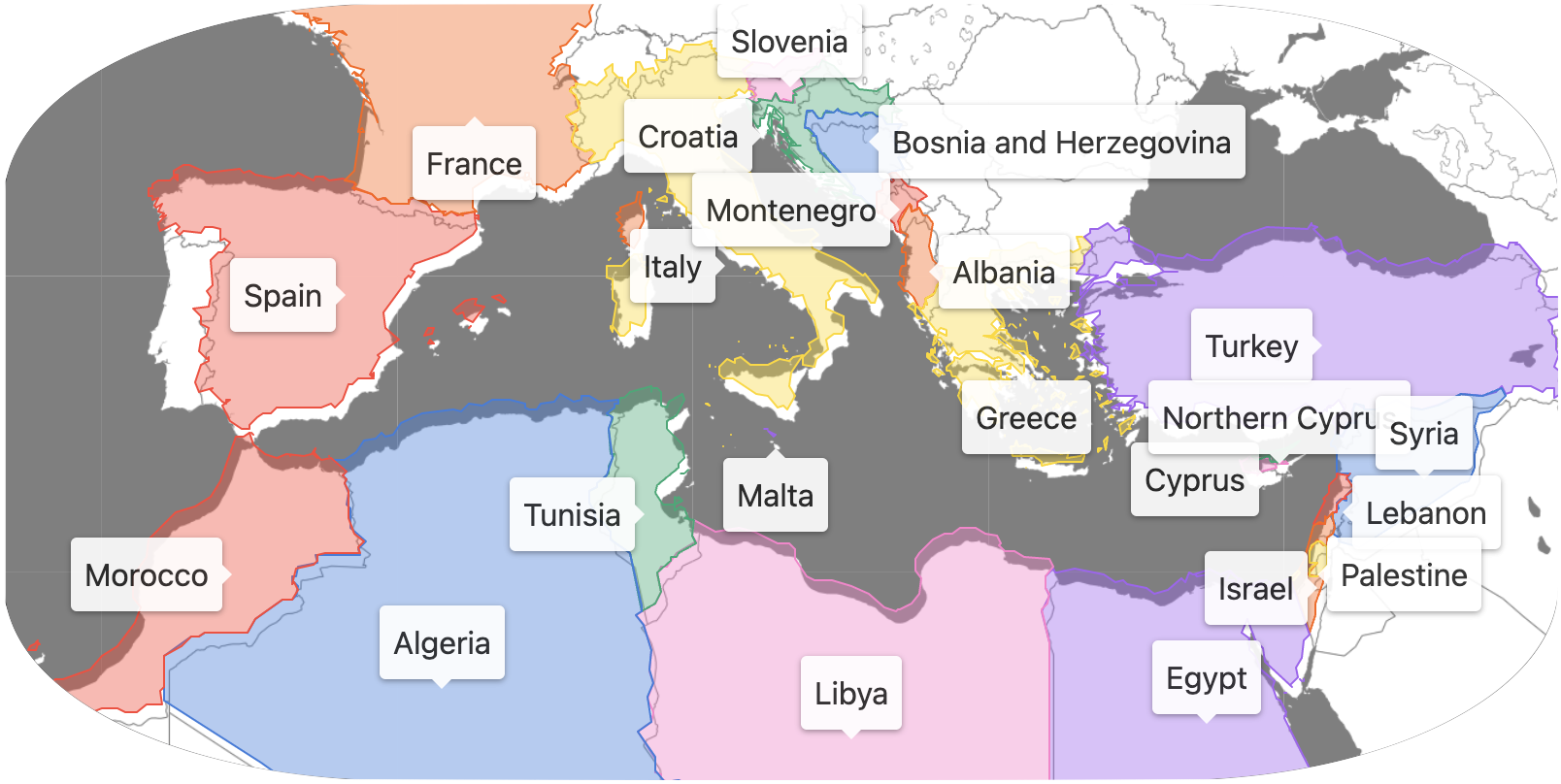
But perhaps the most interesting thing I noticed was something woven into the narrative around the entire museum: that Israel was, and had always been, the rightful home of the Jewish people. Now, I wish neither to confirm nor dispute this, just to mention how subtle but utterly pervasive it was. I think if you weren’t looking out for it, you might not realize it was there.
I noticed the same thing with the narrative in Yad Vashem, the Holocaust Memorial / Museum in Jerusalem.06 I spent a considerable amount of time in middle school learning about the Holocaust, but this museum emphasized an aspect I don’t recall ever learning about: that displaced Jewish people who survived the Holocaust were left with nowhere to go. Countries all across Europe either rejected them outright, or forced them to live in detention centers. Immigration to Israel07 was now given as two reasons: (1) it is our historic home, (2) since you all rejected us, where else were we to go?
The most fascinating aspect to the whole Israel as rightful home of the Jewish people narrative in Yad Vashem was architectural. The whole museum is structured like a tunnel. You wander back and forth across it, and it’s dark. Then, right at the end, after they present you with the explicit arguments for Jewish people coming to Israel, you exit the doors of the museum, and the edges of the tunnel frame a huge visa out onto the Israeli landscape. It says in all but words, “look, and here is your home.”
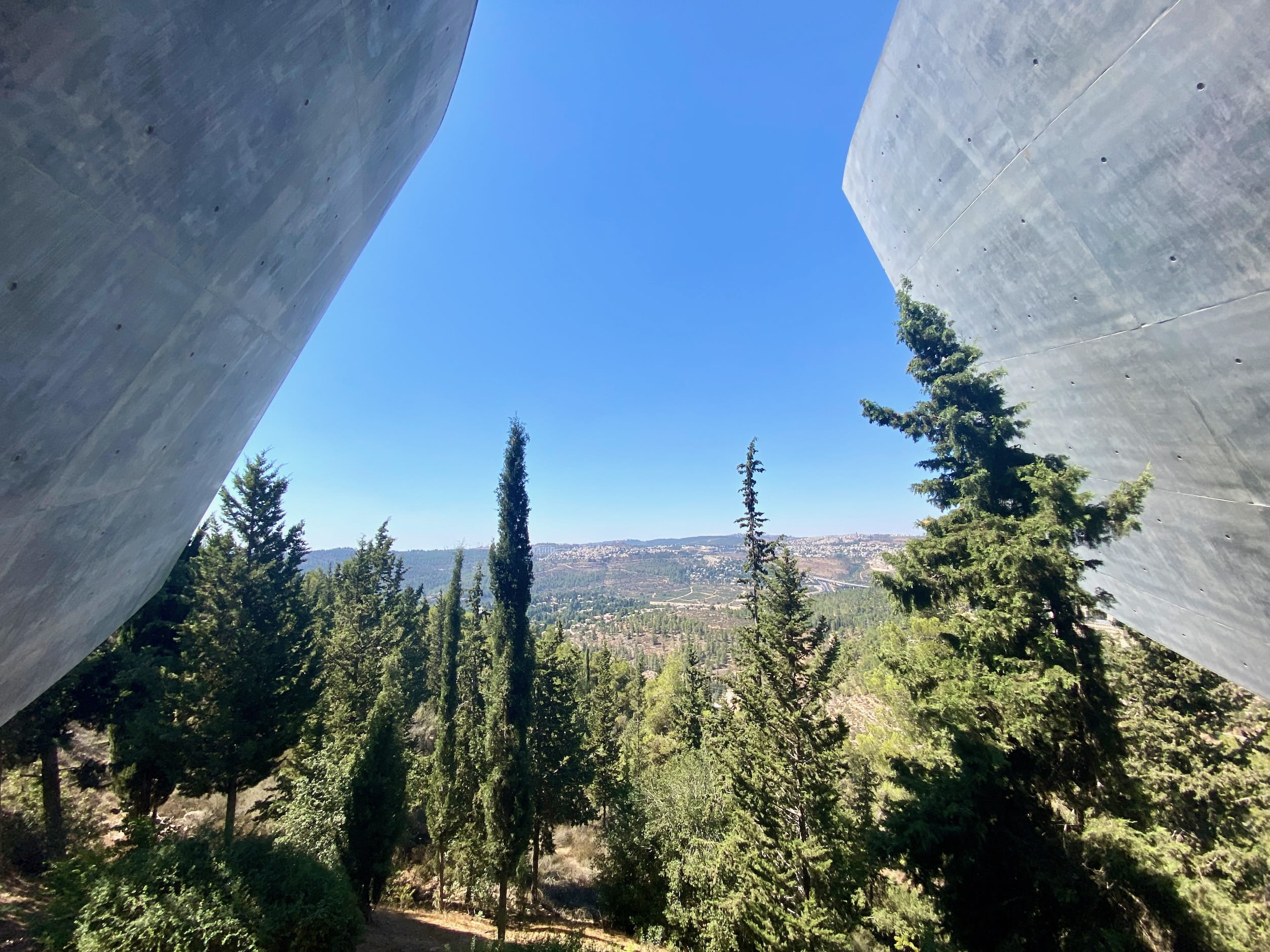
West Bank?
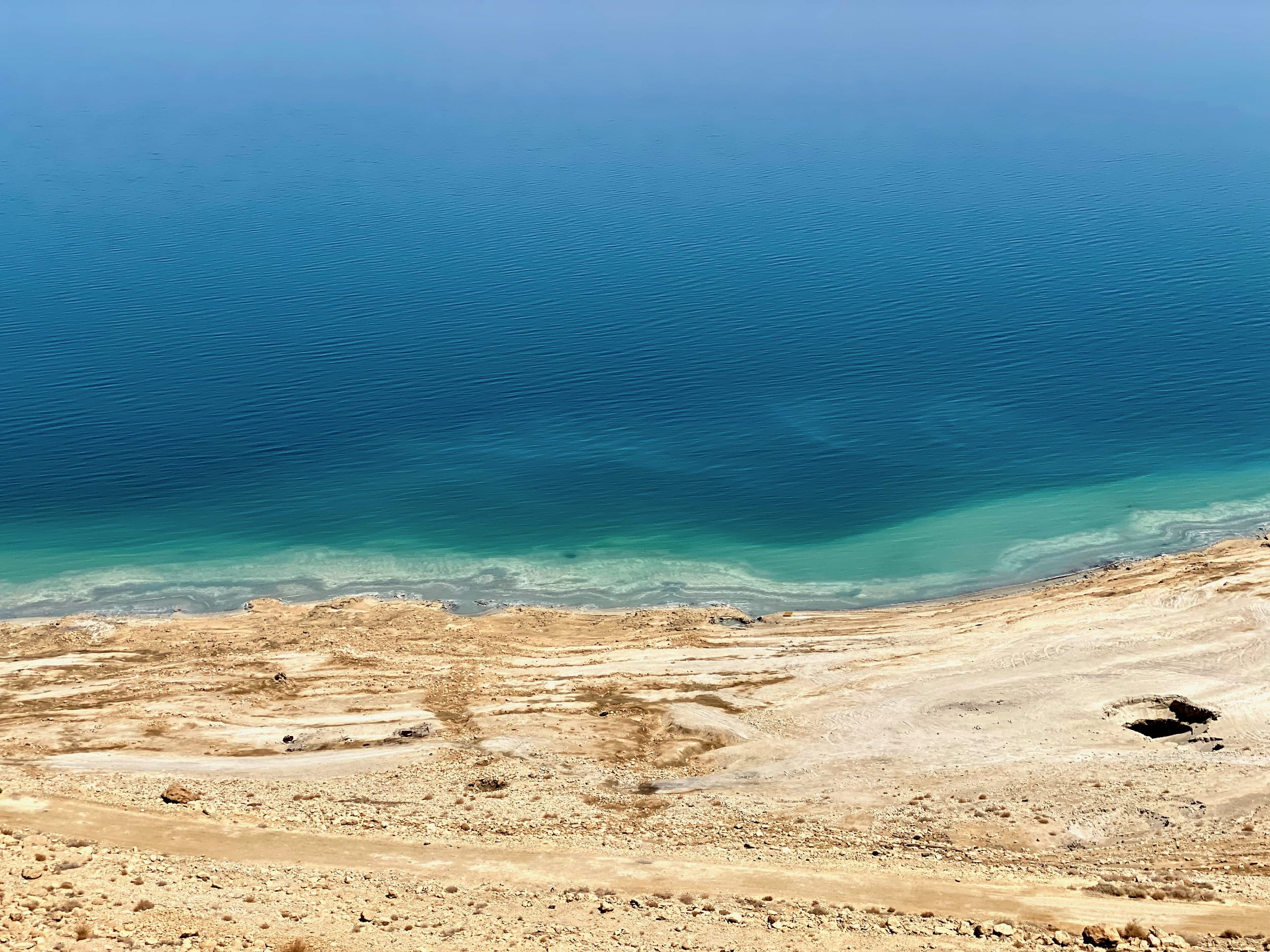
So, for context, we took a three-stop tour to areas around Jerusalem:
- The En Gedi Nature Reserve
- Masada
- The Dead Sea
Our aim was just to visit the Dead Sea, but the tours had the other stops, and we thought, heck, if it’s on the way, why not?
But as I started looking at the tour route, I got a bit nervous. Doesn’t it go through the West Bank? Isn’t that where we’re not supposed to go because it’s dangerous?
The whole thing about the West Bank, Israel & Palestine, borders, etc., is extremely confusing, at least if you don’t do much research like me and instead look at Google Maps.
Google Maps tells you that Jerusalem is surrounded by the West Bank. Even going into the Old City of Jerusalem, it will tell you, is technically the West Bank. And driving on a highway out of the city, you will, right in the middle of traffic and buildings, pass through what seems to be the West Bank.
This was all quite confusing for me. What I read online told me to bring my passport all these places because there would be military checkpoints.
And yet, there were none. People freely walked around, in and out of the Old City, in and out of the “West Bank.” We went in and out by foot, by car, and by bus. No stops, no guards, nothing to indicate any kind of border, anywhere.
It turns out, Google Map, probably in a complex political decision, shows the official West Bank boundaries,08 which I think come from the ~1960s. This is due to the fact that the official international stance (UN, USA, EU, even Israel, etc.) that West Bank is under “military occupation.”
But in practice—as I could have Googled, but would find out by asking some guy at a bar—the West Bank is carved up into areas of different classifications: A, B, and C. This is based on who (Israel or Palestine) controls the civil and military goings on.09 And the way they’ve carved up the West Bank, we basically just stayed in “Israel” the whole time.10
The reason I kept this section title as “West Bank?” is, for me, actually visiting the West Bank should involve going to Palestinian settlements and hearing from the people there.
En Gedi Nature Reserve
This is a famous park.
Riding there, I realized, holy cow, yeah this is seriously the desert. At some point, we stopped for a break and desert photos. The air smelled exactly like cured meat. A boy with a camel walked up to us for paid photo op attempts. This would happen every stop.
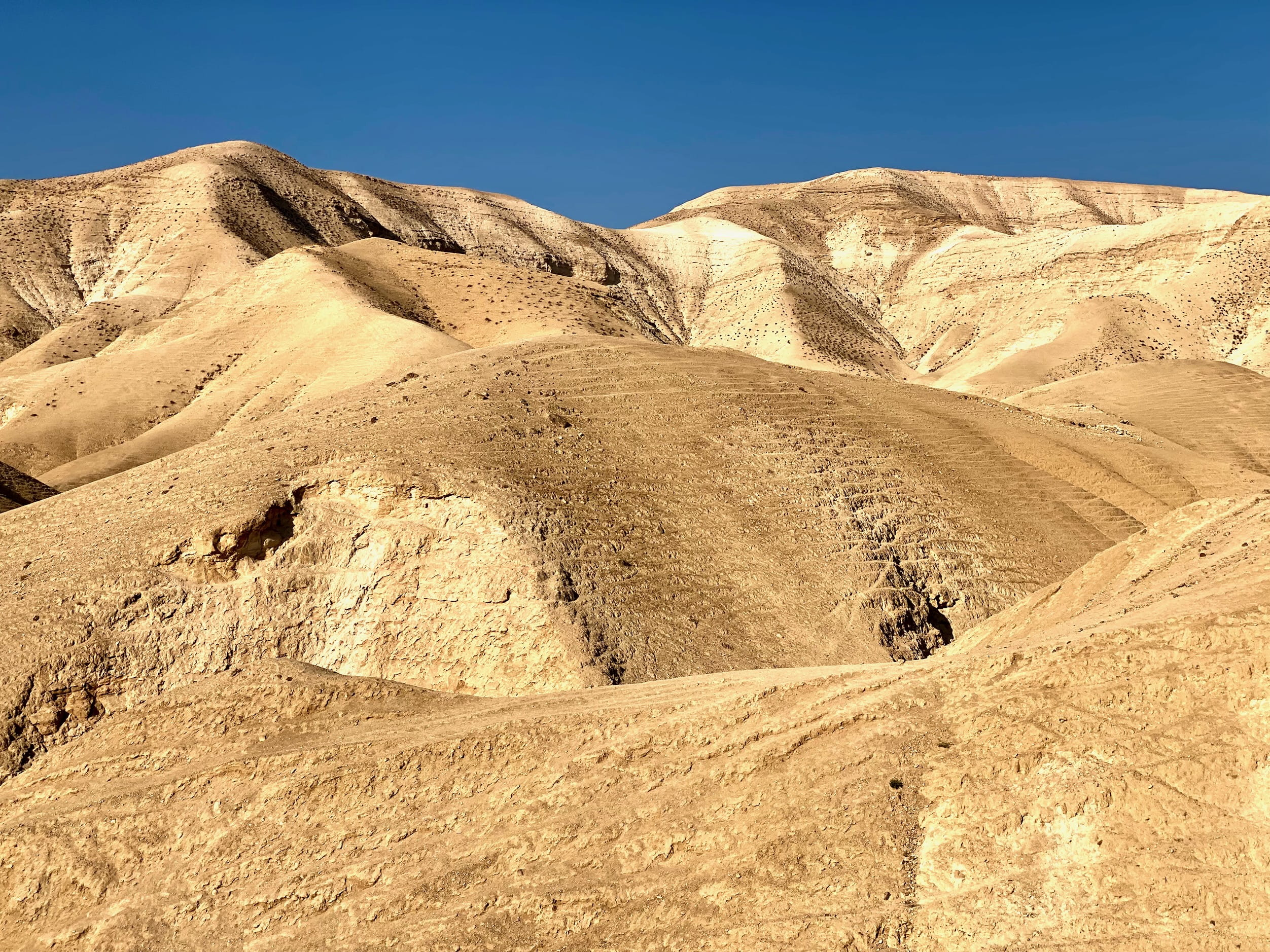
I wrote before about the brilliant way climates are defined based on vegetation, which I learned while on this desert ride:
The tour has replaced their humans with apps, so I’m diligently reading the app’s section on the desert right outside Jerusalem.
Paraphrasing, the app goes: “This is a desert, because it receives less than 200mm of rain per year.” (Sorry if I got the numbers wrong, just roll with it.) “Why is it 200mm and not 150mm or 250mm? Because > 200mm is the amount of rain you need to grow wheat. If you can’t grow wheat, you can’t farm, and so you can’t stay in one place, and so you can’t establish civilization. That’s why people who live in the desert are nomadic.”
Suddenly, the fact that ol’ Köppen was a botanist seemed like a miracle of scientific history. How absolutely brilliant to define climate by plants, because plants dictate human behavior (and other animals). So, if you can model temperature & moisture changes, you can then predict which plants will be able to grow there. From that, you know which creatures will eat them, and whether humans can grow them, and you can build our your ecosystem predictions from there.
The park had little hyrax hanging around the entrance, and ibex running by. Plus some amazing rock textures. The idea water brings life has never been as clear as being in the desert and visiting an oasis.
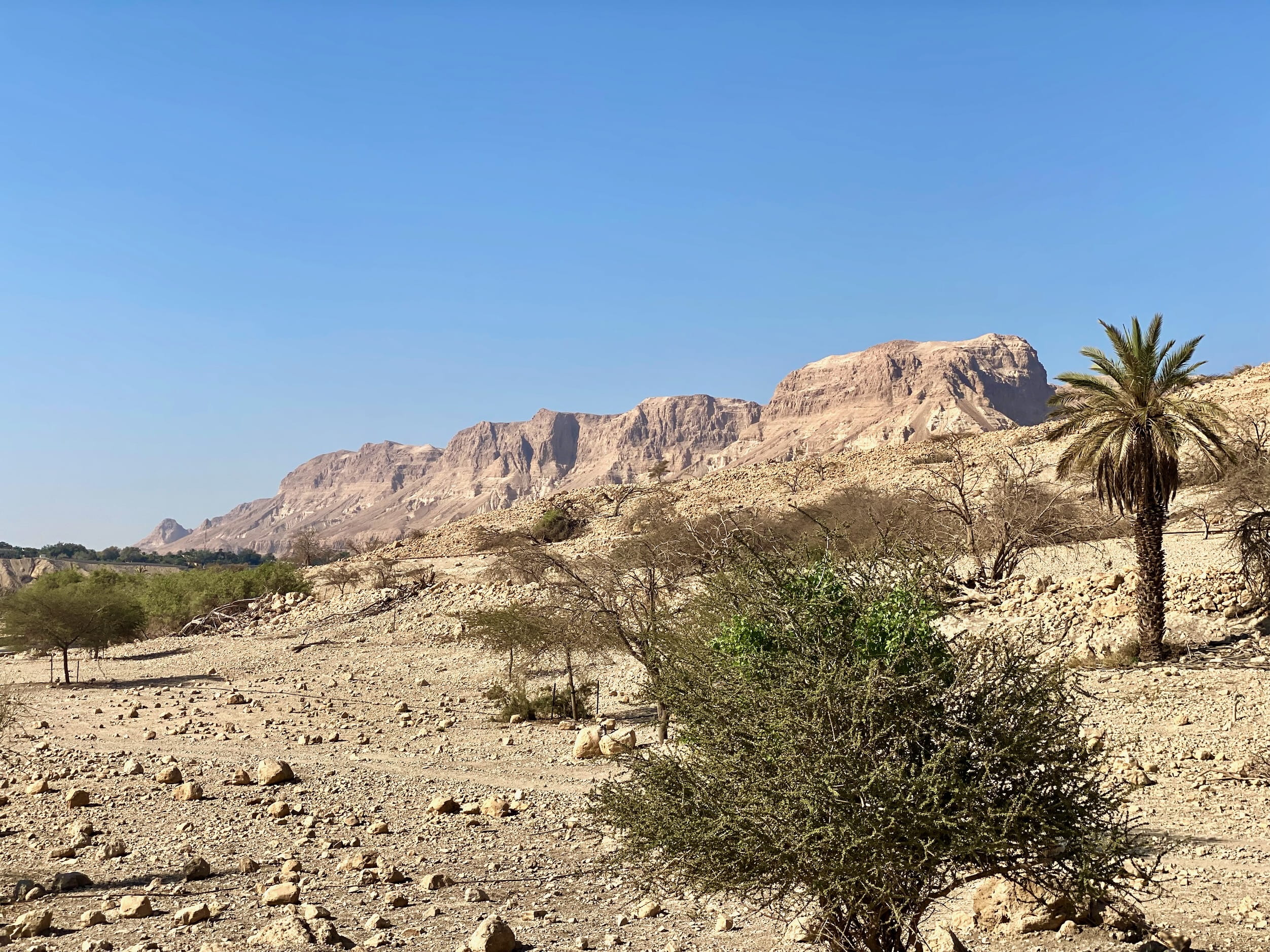
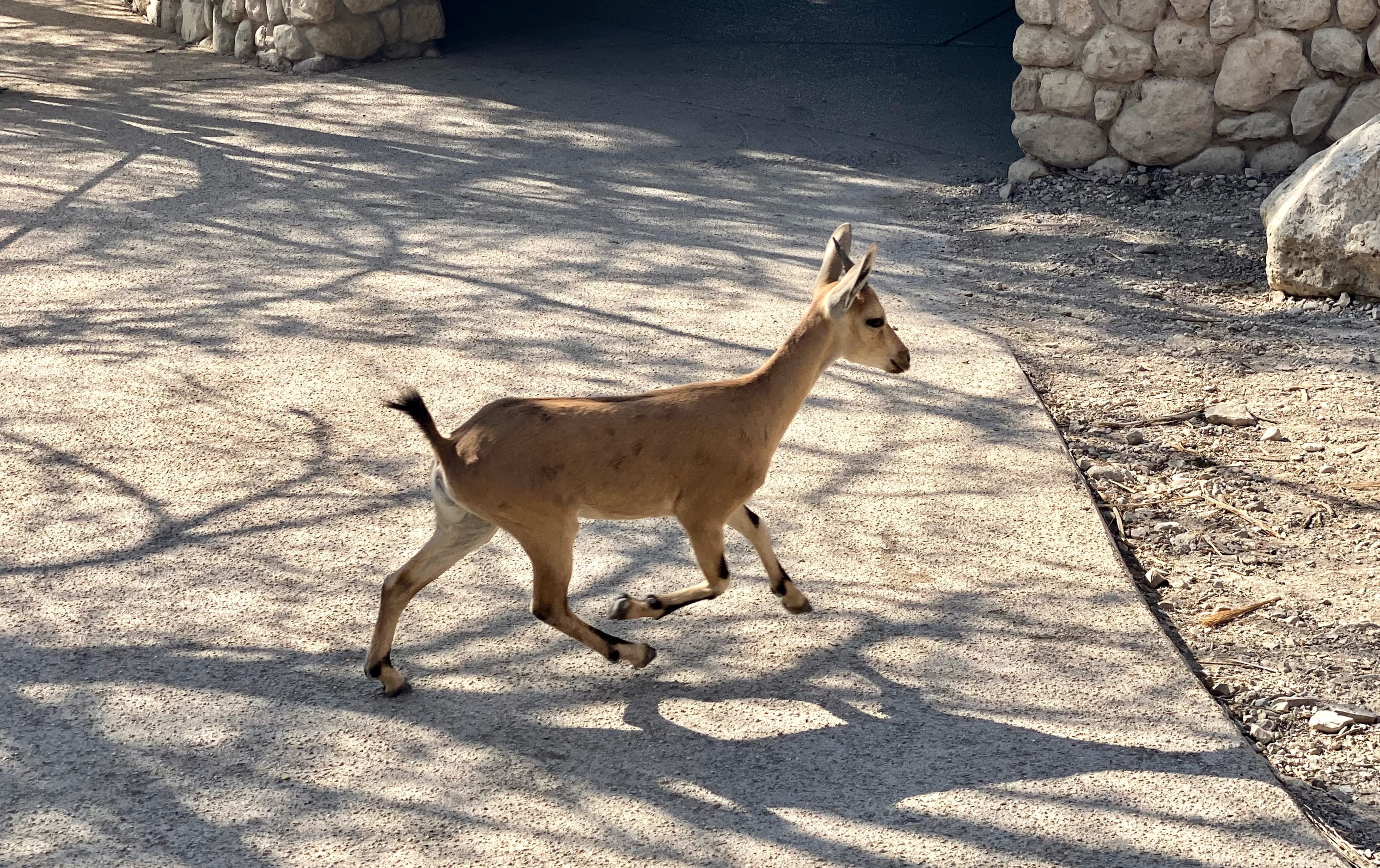
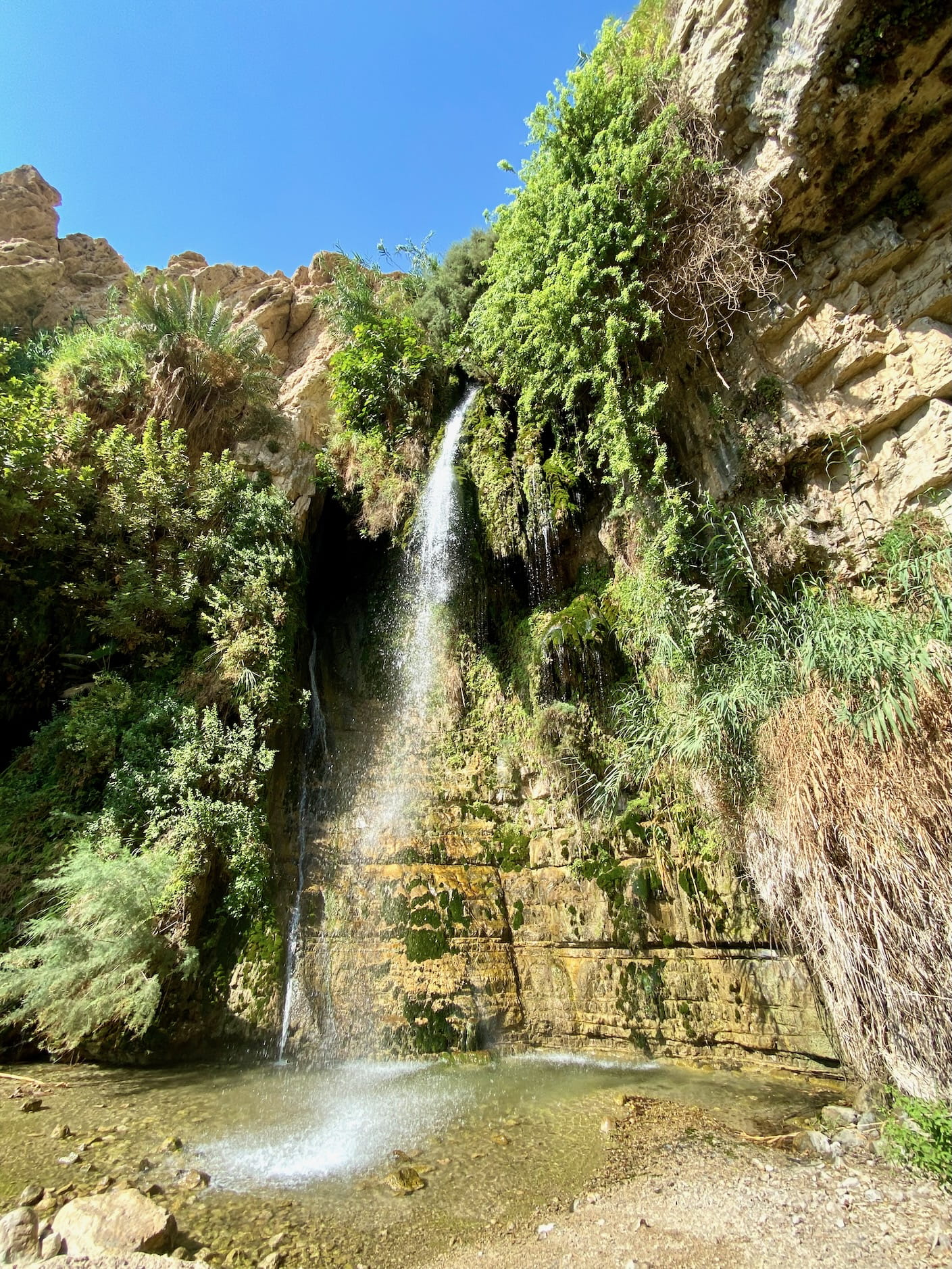
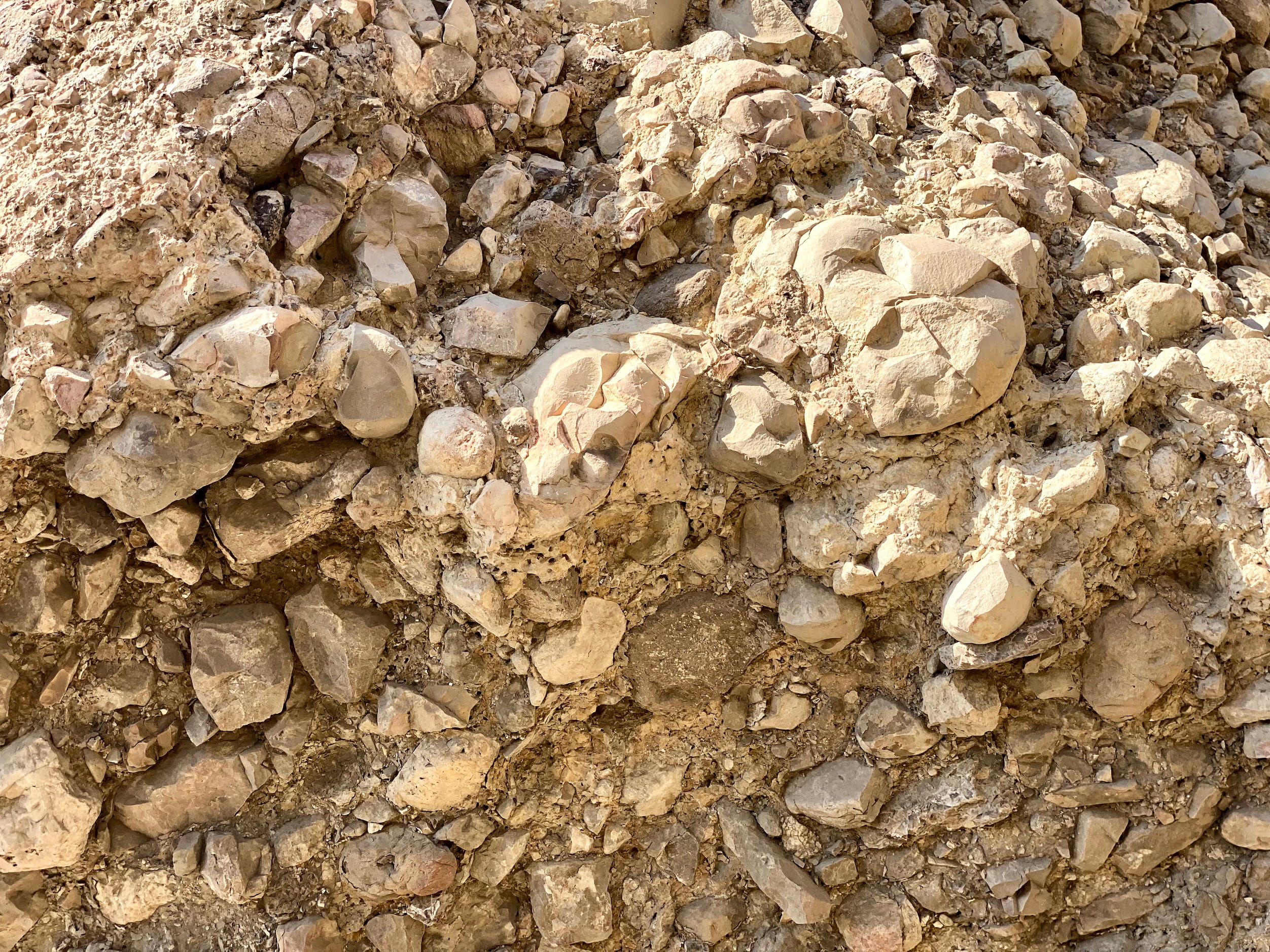
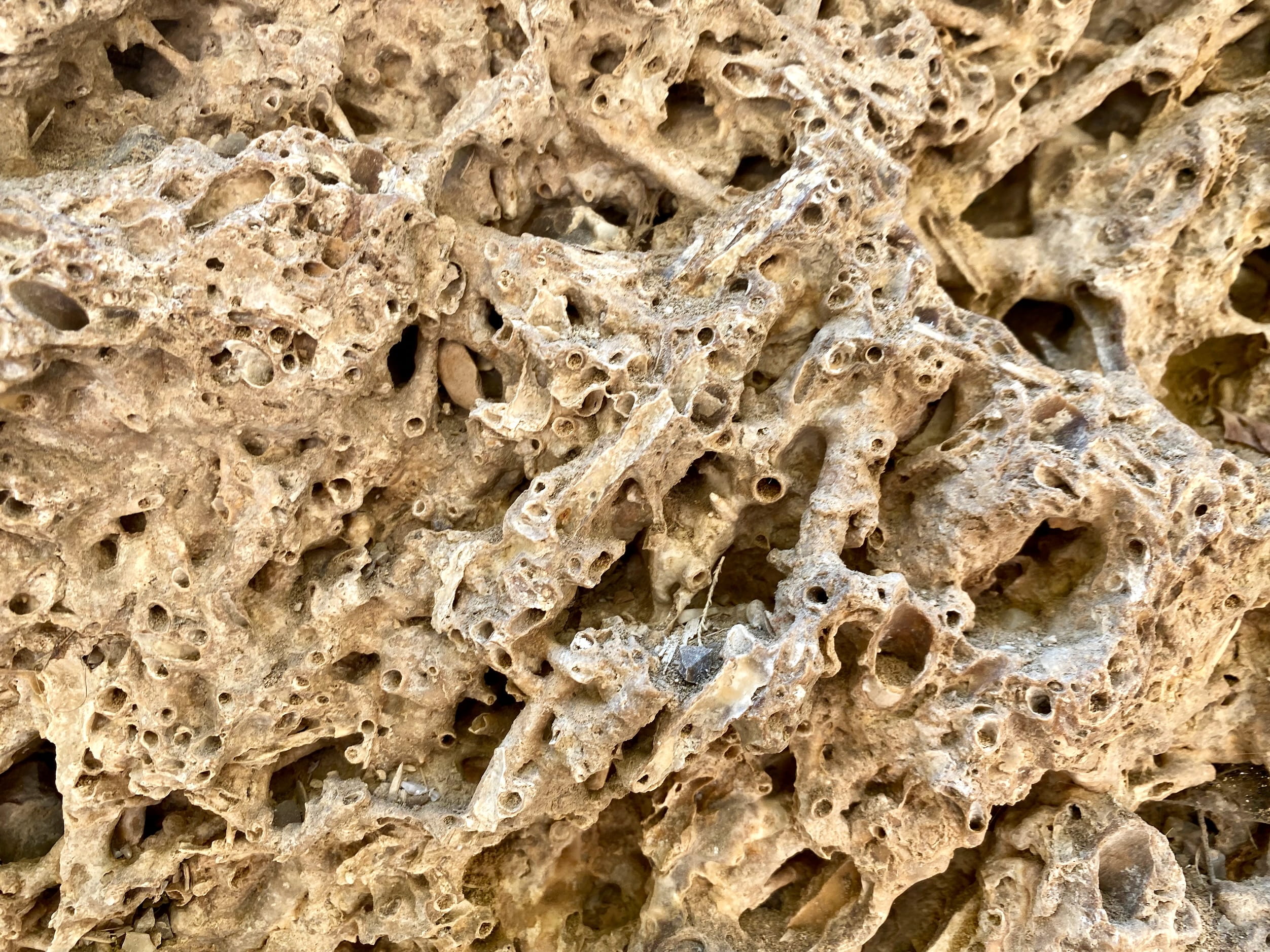
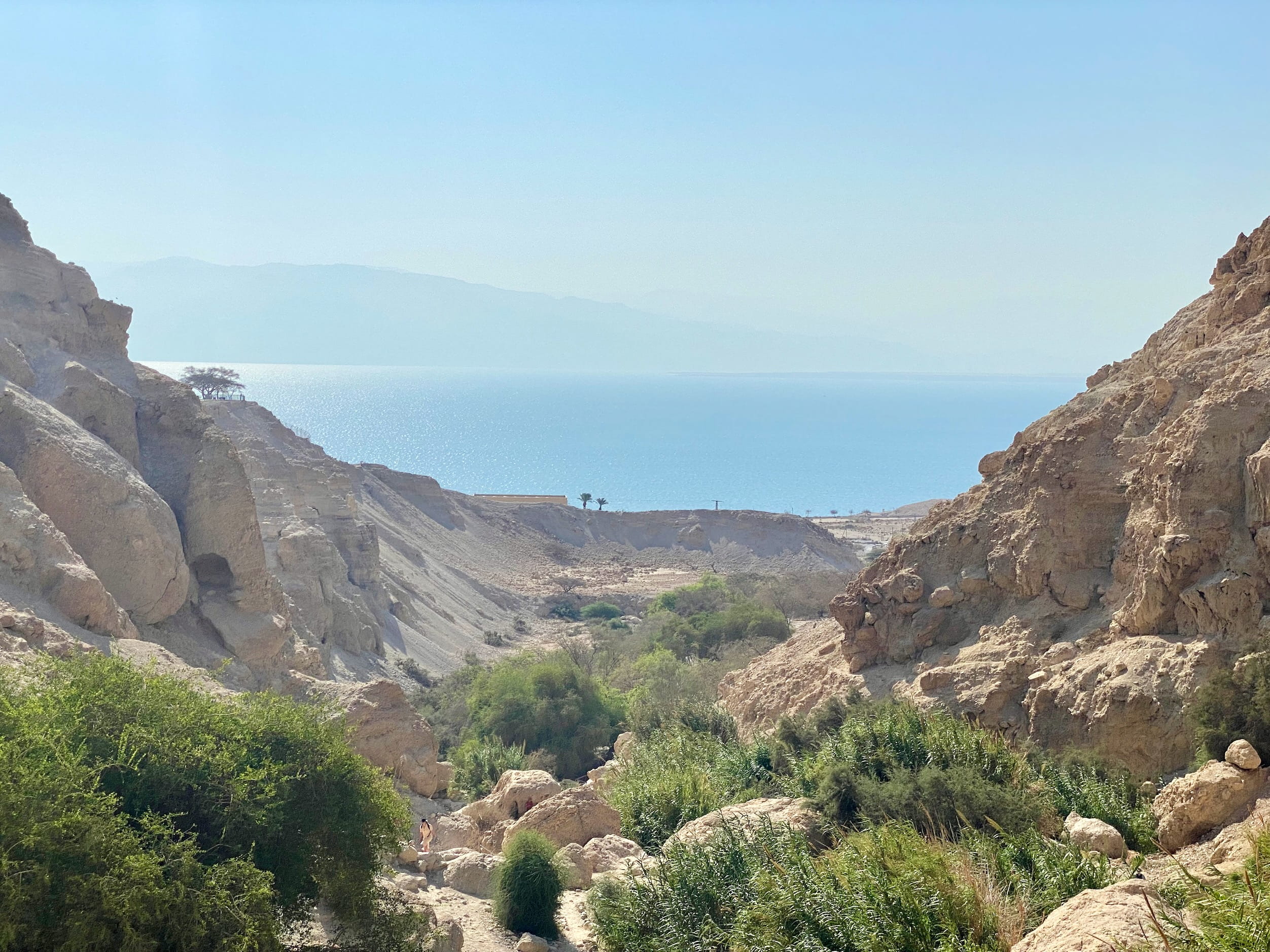
Masada

Masada is a hilltop historical fort with some juicy (if you’re into that kinda thing) Romans vs Jewish history. I tried my best to learn stuff but honestly just look at some of these cool desert photos.
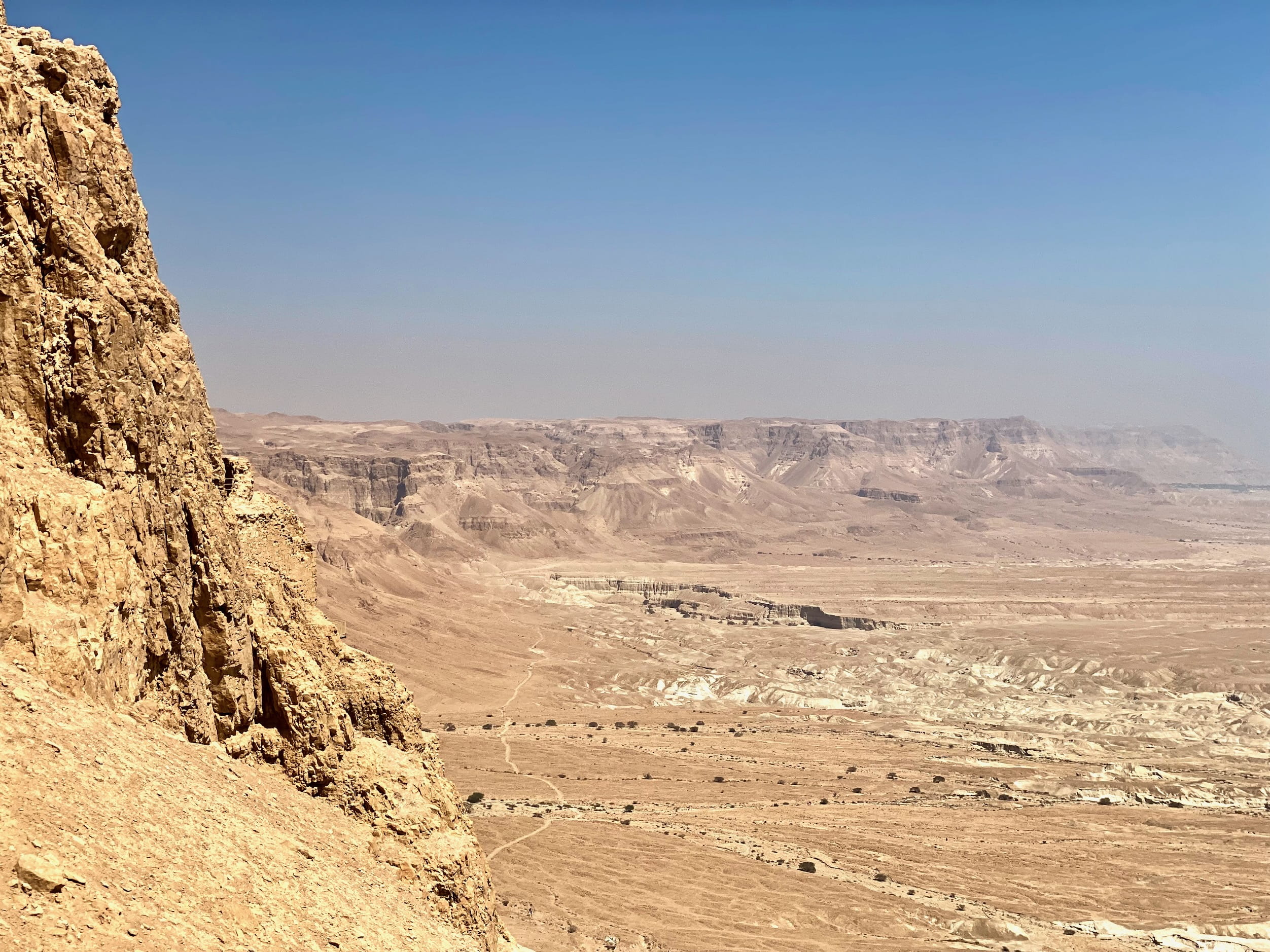
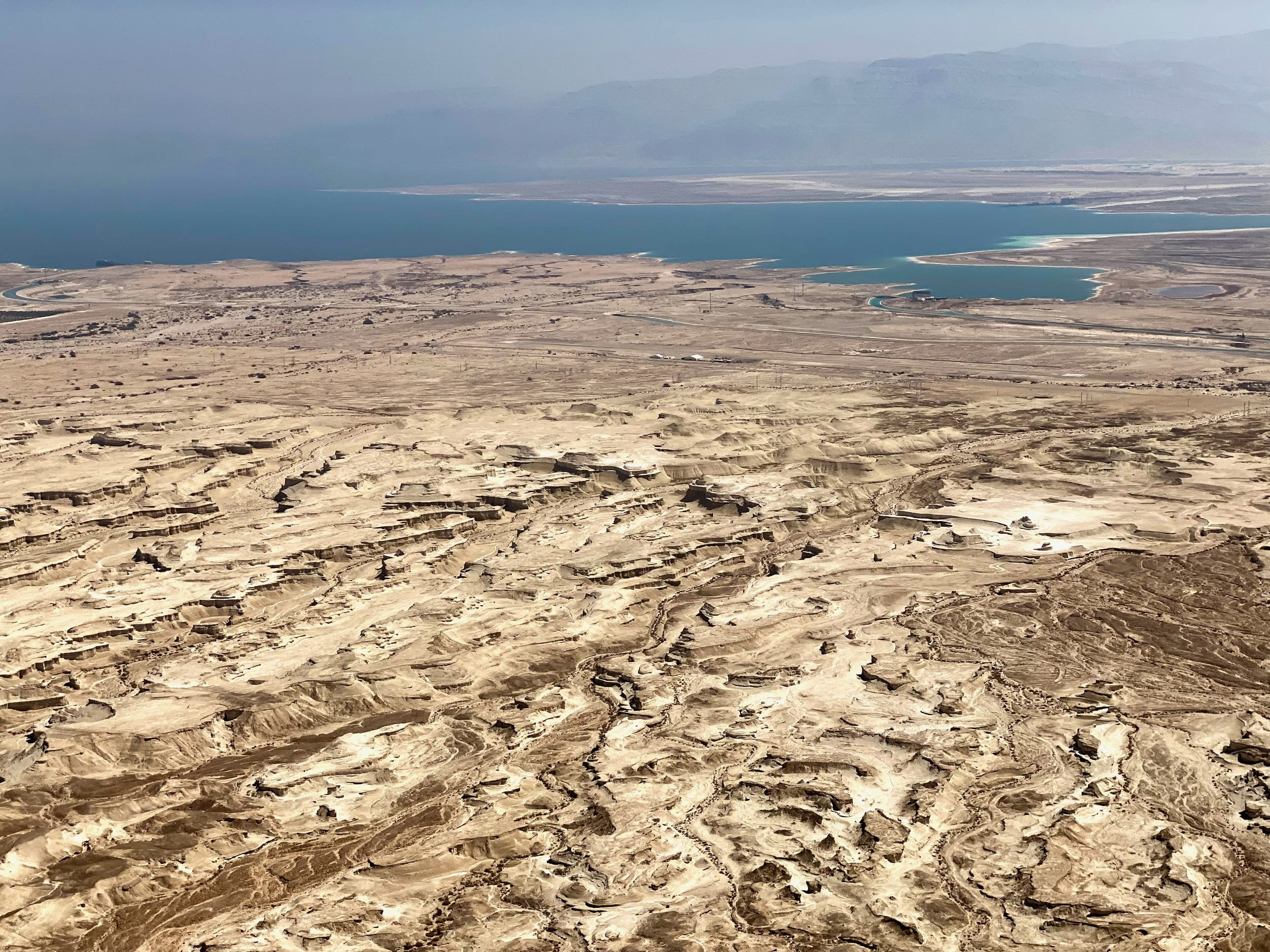
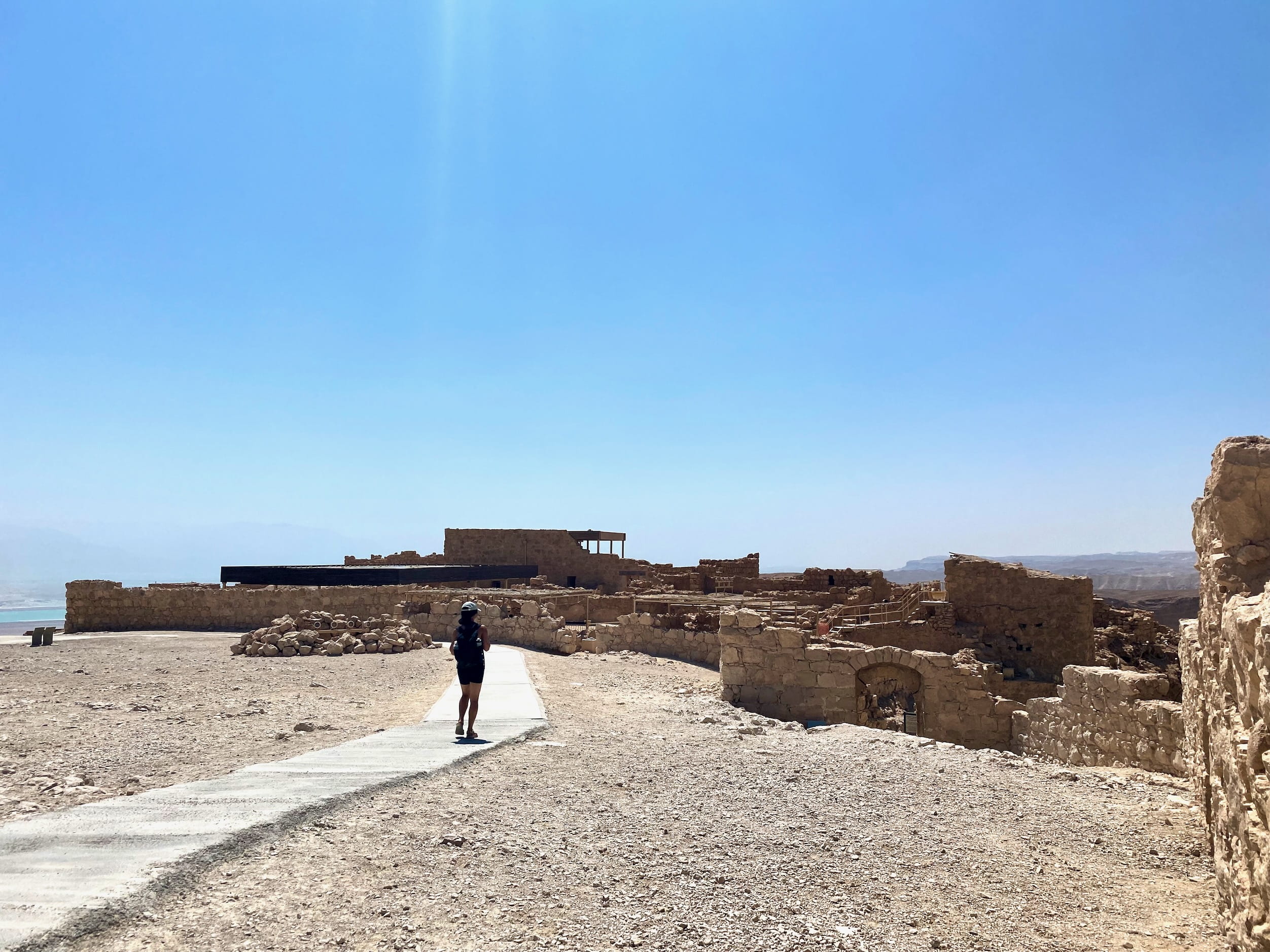
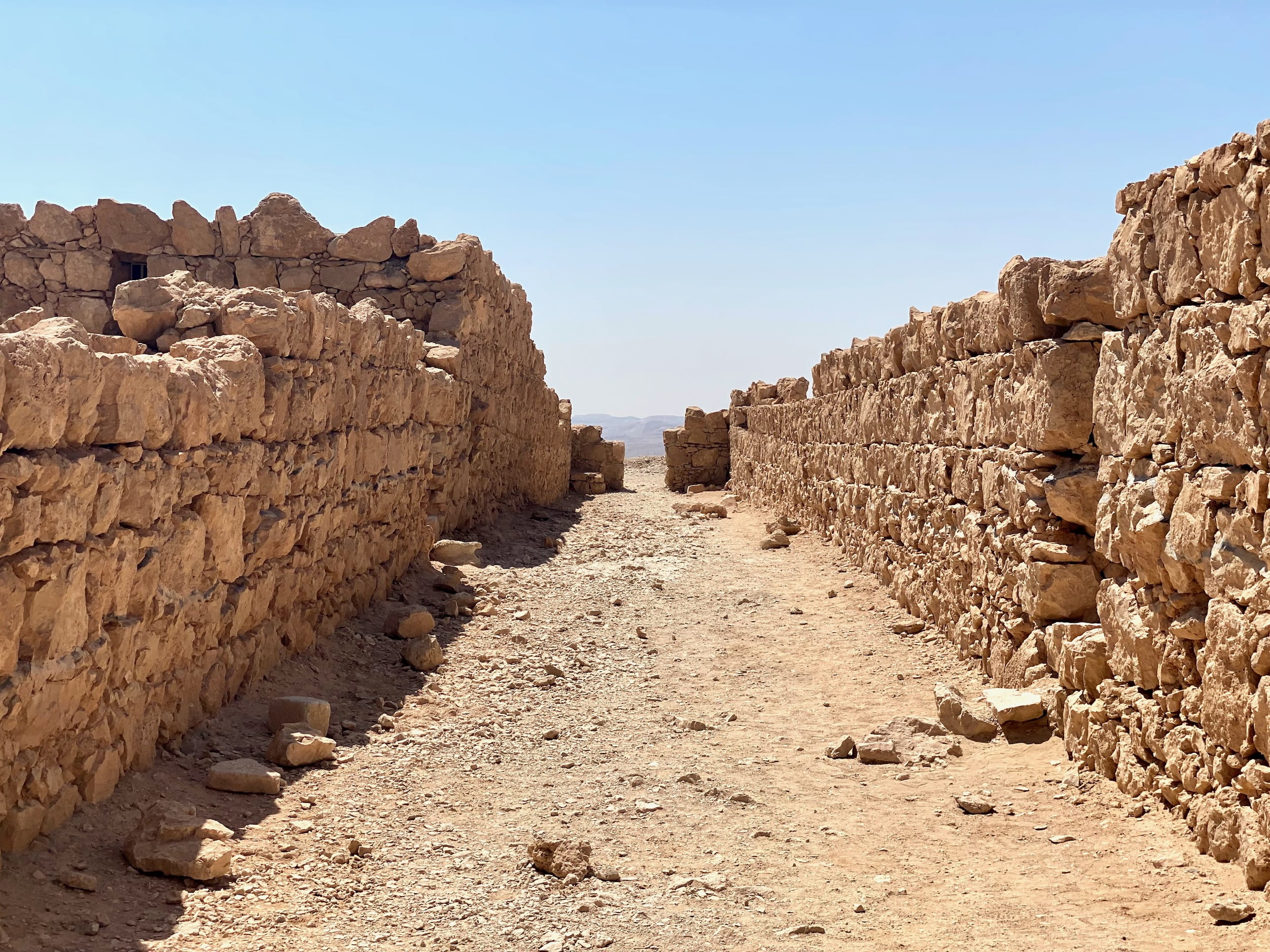
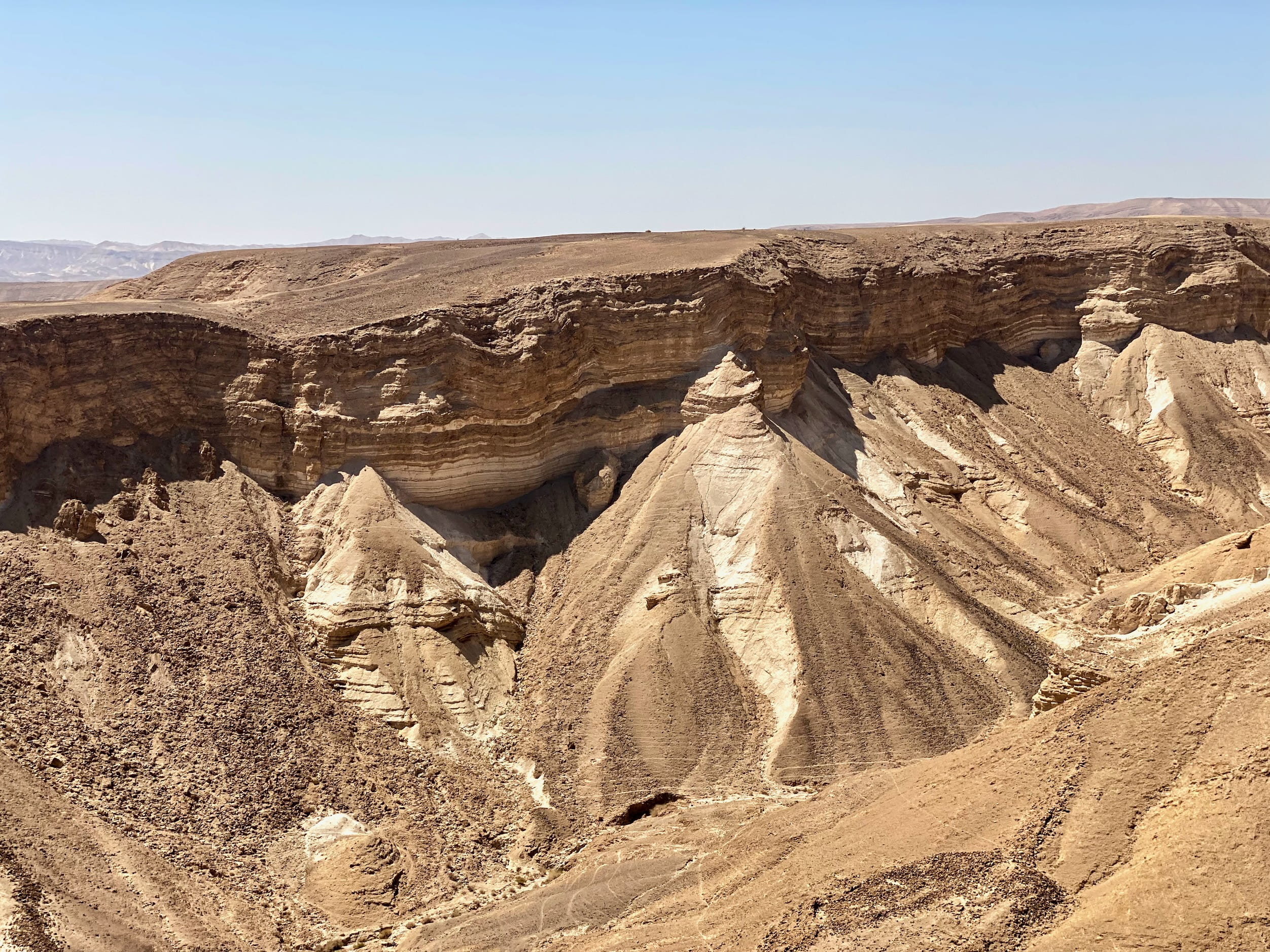
This is as good a time as any to mention the whole idea of covering up.
It’s a bajillion degrees outside and a UV index of approximately the surface of Mercury. Usually, wherever we go that’s hot and sunny, the locals cover up their skin with long clothing and hats so as to not have to use sunblock. Smart. I am a weenie from Seattle and find myself unable to do anything but sit and complain loudly if I’m wearing lots of clothing in the heat, so I always opt to wear as little clothing as possible and pour gallons of sunscreen on myself.
But Jerusalem is all about a gazillion religious sites. And religious sites—at least all the ones I’ve been to—are all about dressing conservatively. So, you’ve generally gotta cover your shoulders, knees, etc. You can see where this is going.
Cue me donning lots of clothing in the boiling desert. Wearing pants and long sleeve shirts around in the baking sun did, at least, help toughen up my heat resistance. (For about a week afterwards, then I immediately lost it).
Anyway, long preamble to why when you look around, the tour groups all contain people dressed the way I imagine church moms dress.
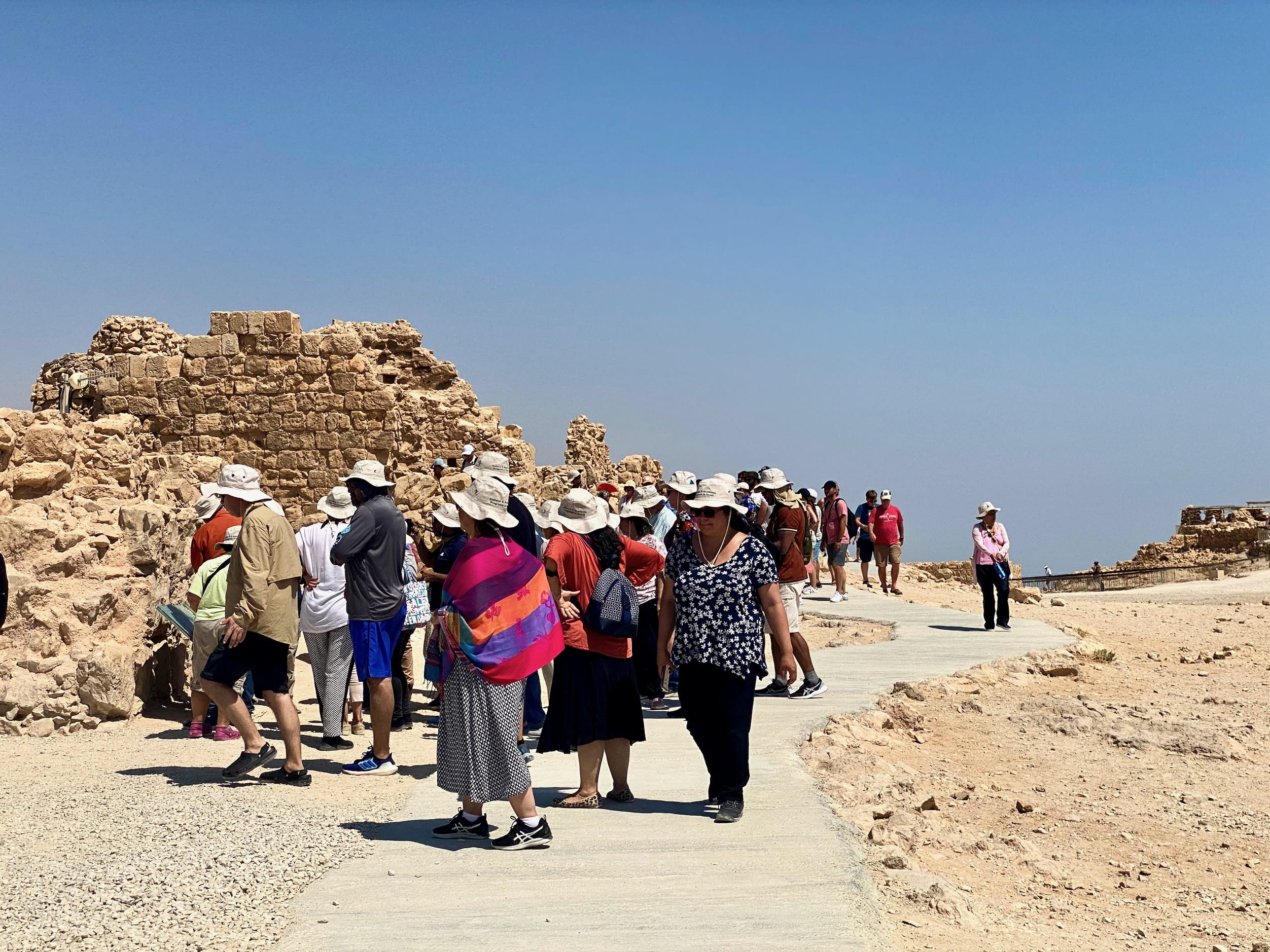
Actually, most tour groups were likely, in fact, full of church moms.
The Dead Sea
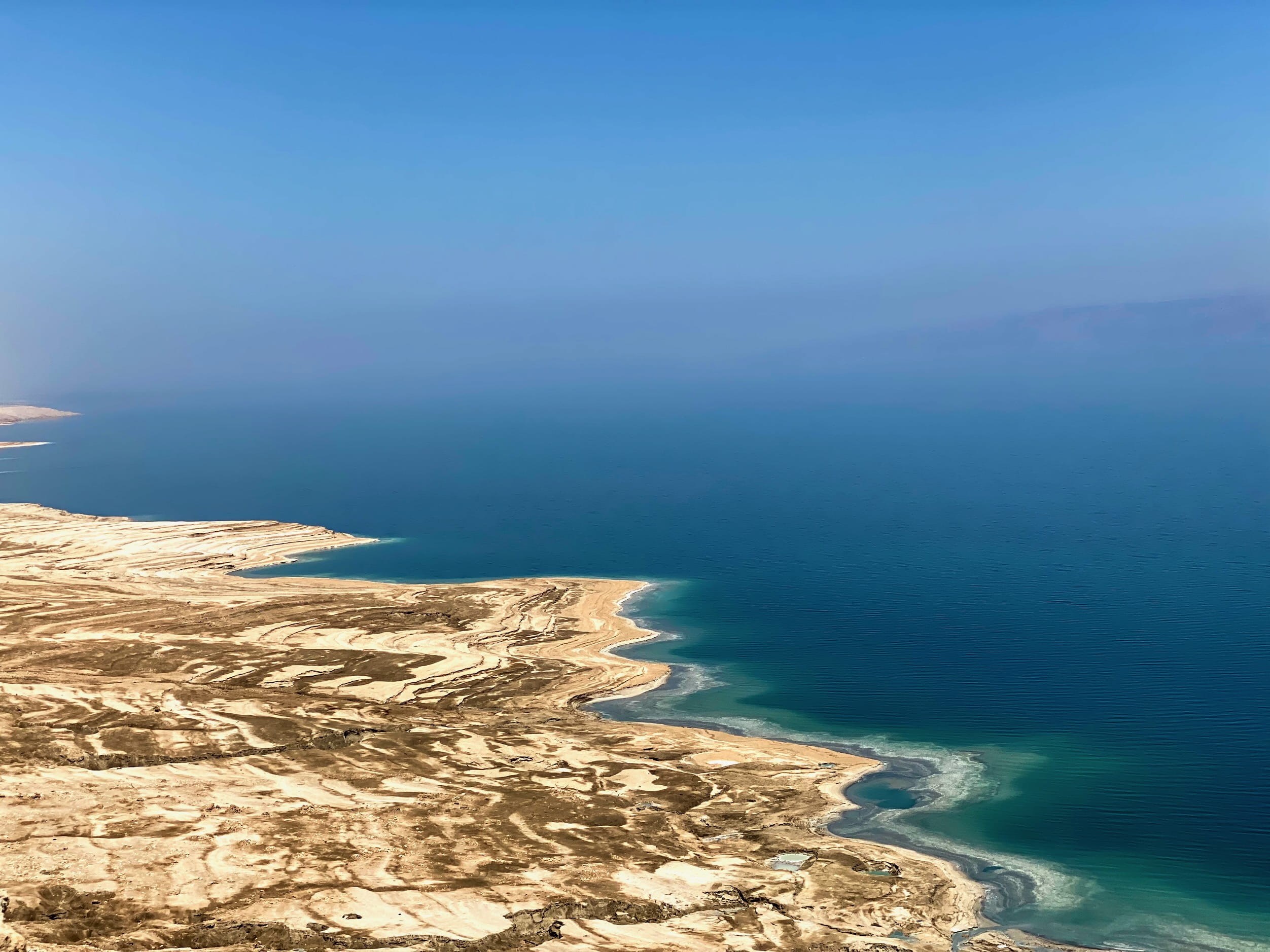
At 100+℉, it’s a good time for a dip.
Only catch was, the water temperature was somewhere between an overheated swimming pool and a hot tub.
The dead sea mud is supposed to be good for your skin, so everyone rubs it all over themselves. So that’s fun.
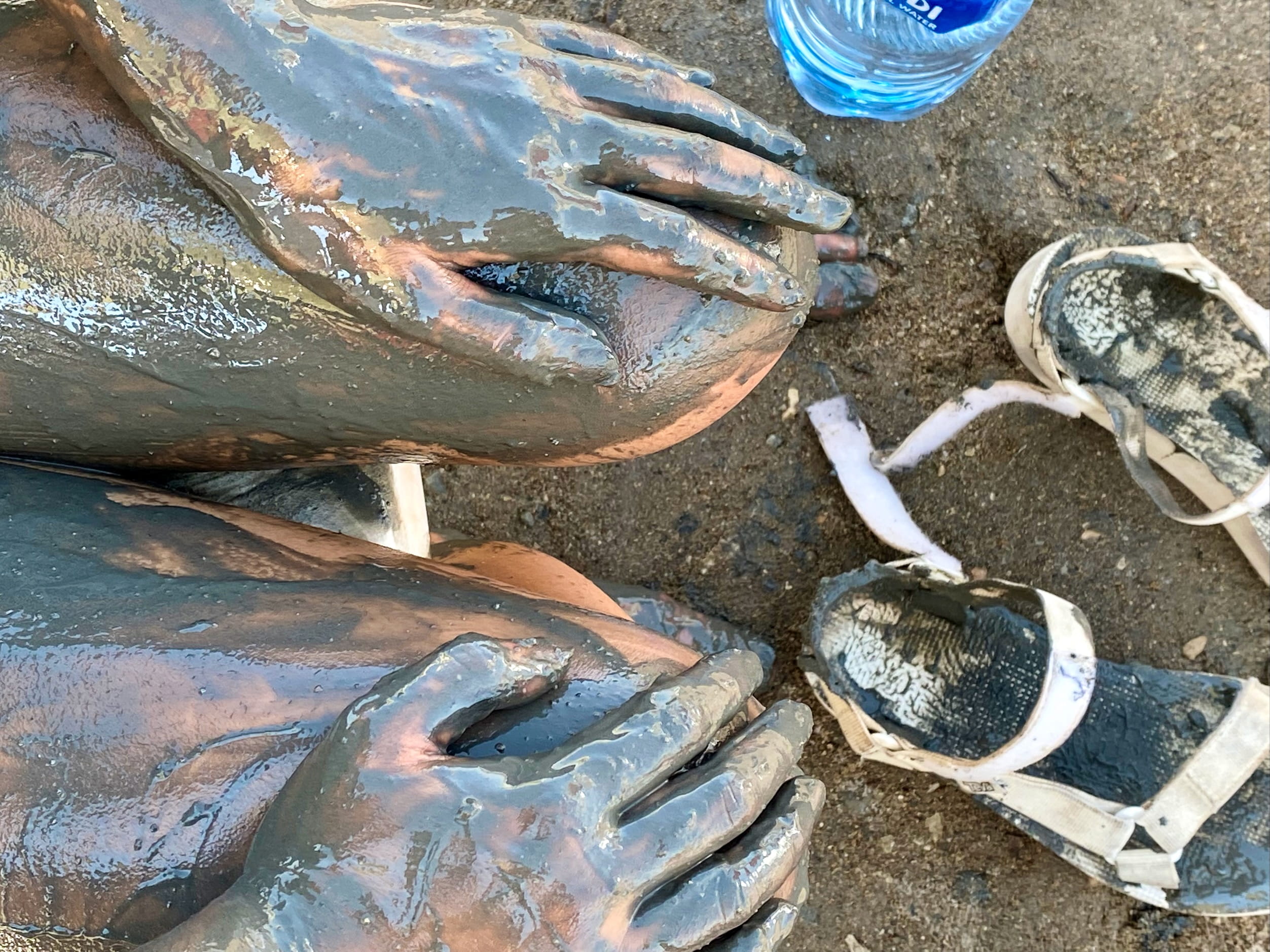
I attempted a dignified walk from my beach chair to the water. This immediately turned into a comedy of errors because the rocks were the hottest thing my poor feet have ever touched. I ran, stifled screaming, into the water. Or, I tried to, but upon reaching the banks I then discovered that all aquatic entrances are violently churned up nutritious dead see mud from thousands of people slathering it on themselves. So I proceeded to fall in the sludge, pick myself up, and then repeatedly slip back in again.
The most fun fact was that across the dead see you can see Jordan. My phone even thought I was there. This made me Google Jordan a bit. It seems great. I want to visit now.
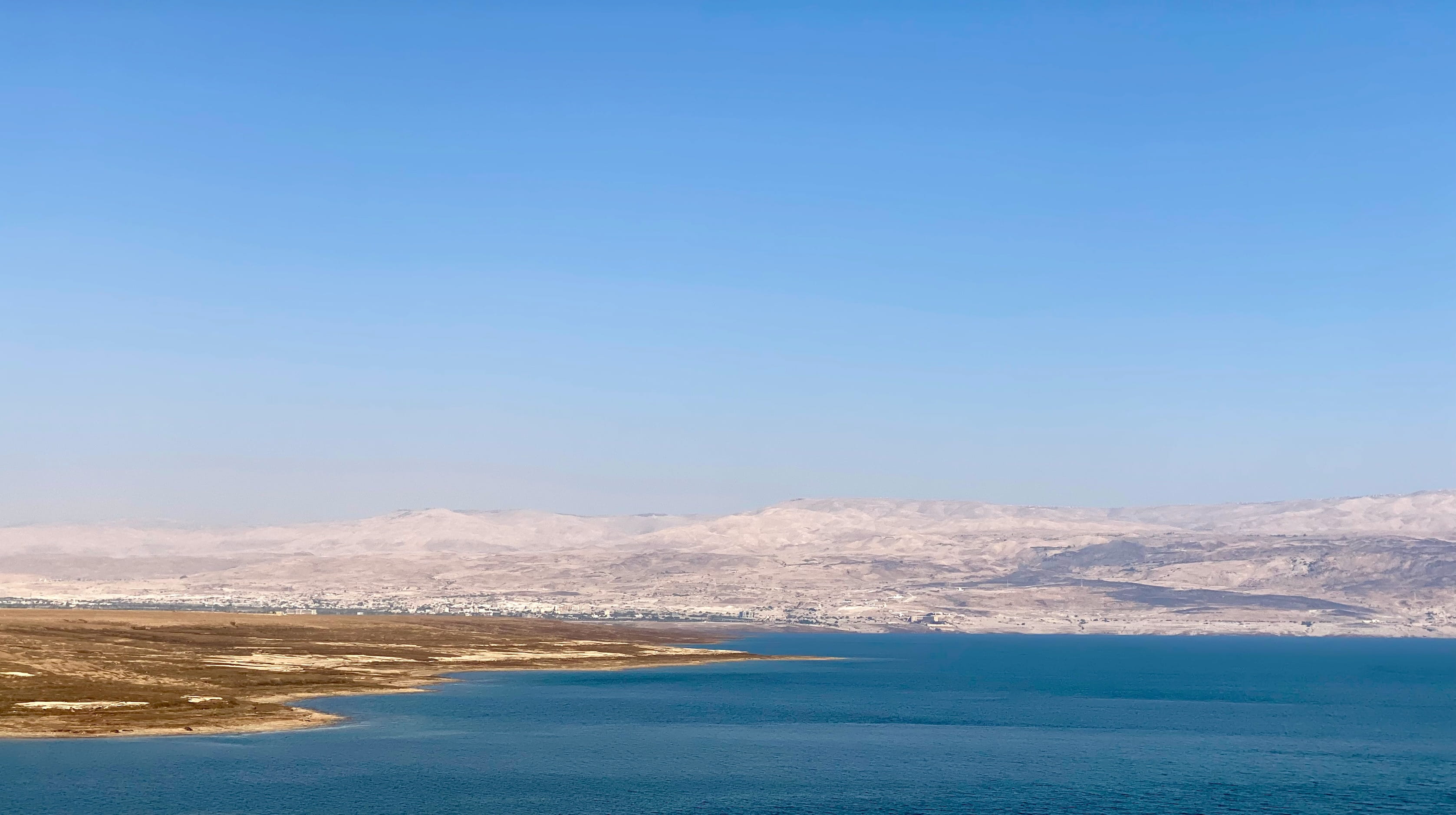
Those buildings you can see across the water are Jordan. The second most fun fact is that the dead sea is 1400 feet below sea level, making it the lowest place on Earth.
Haifa
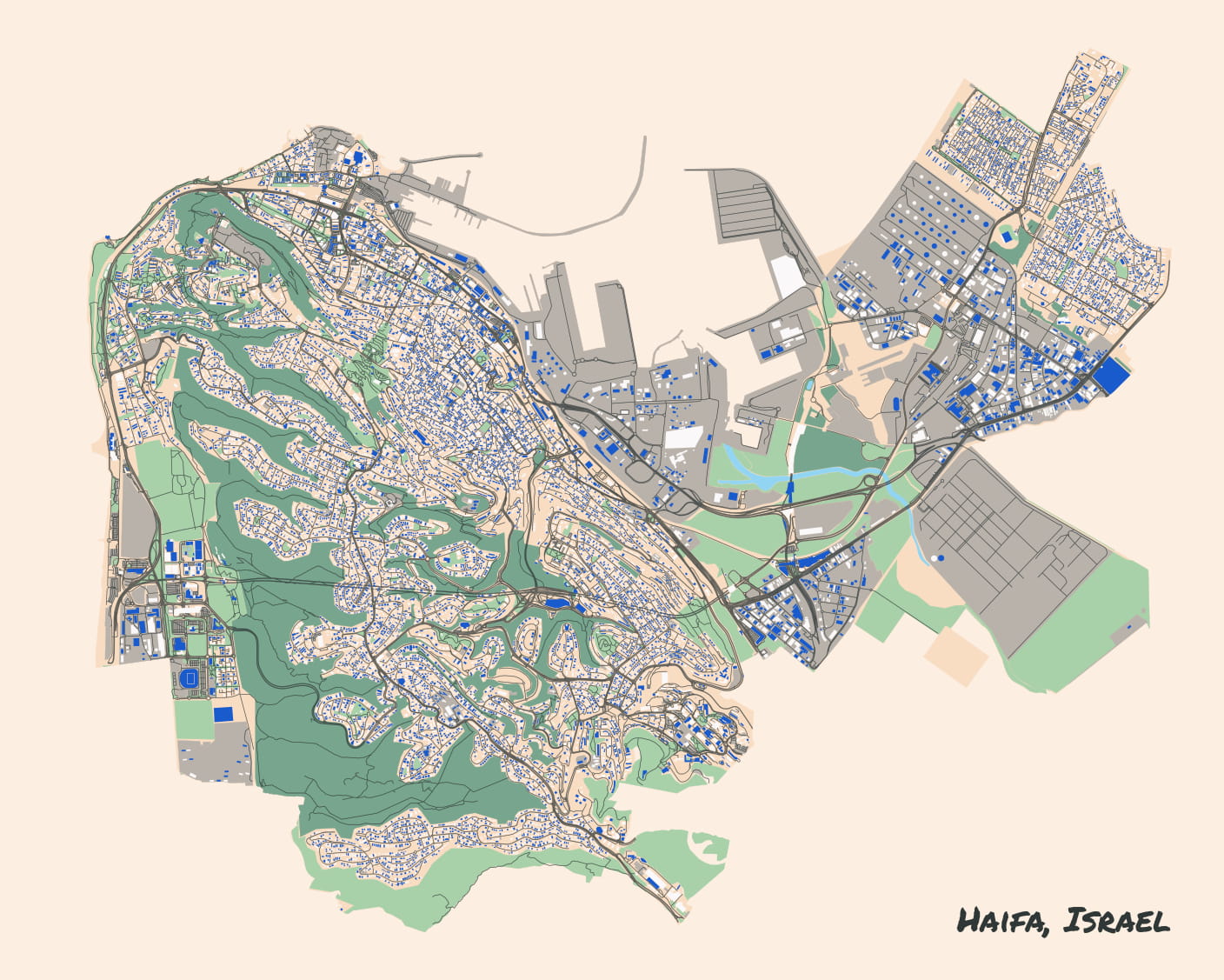
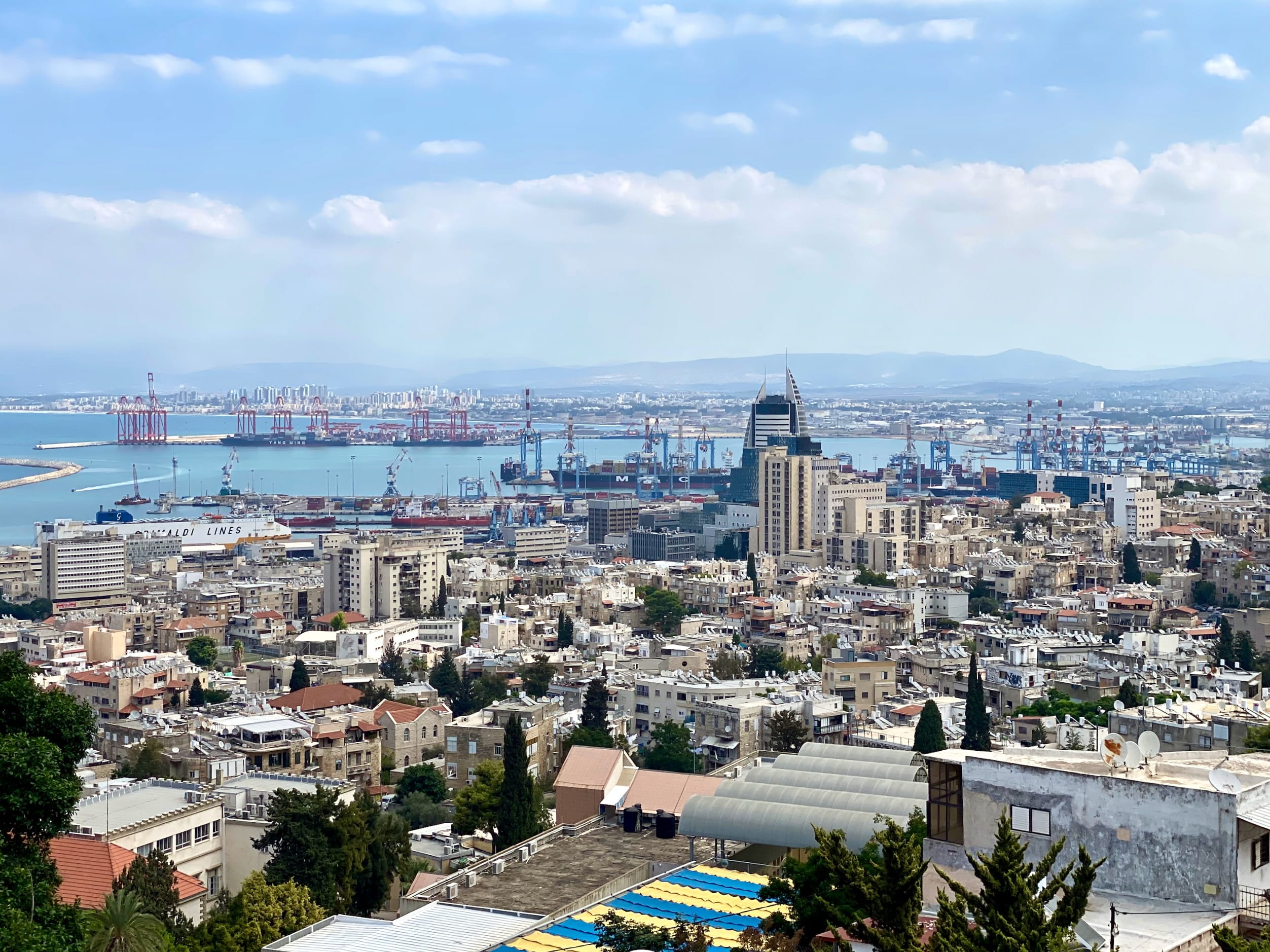
Haifa was my favorite place in Israel. I think the big cities there are just too intense for me. Haifa was bustling enough, but it was quiet, and had nooks and crannies. Warmer people. More laid back, more small cafes, feels like more pockets of art around. Colonies of stray cats. Fresh produce bazaars tucked away, battling constant threat of wilting in the heat.
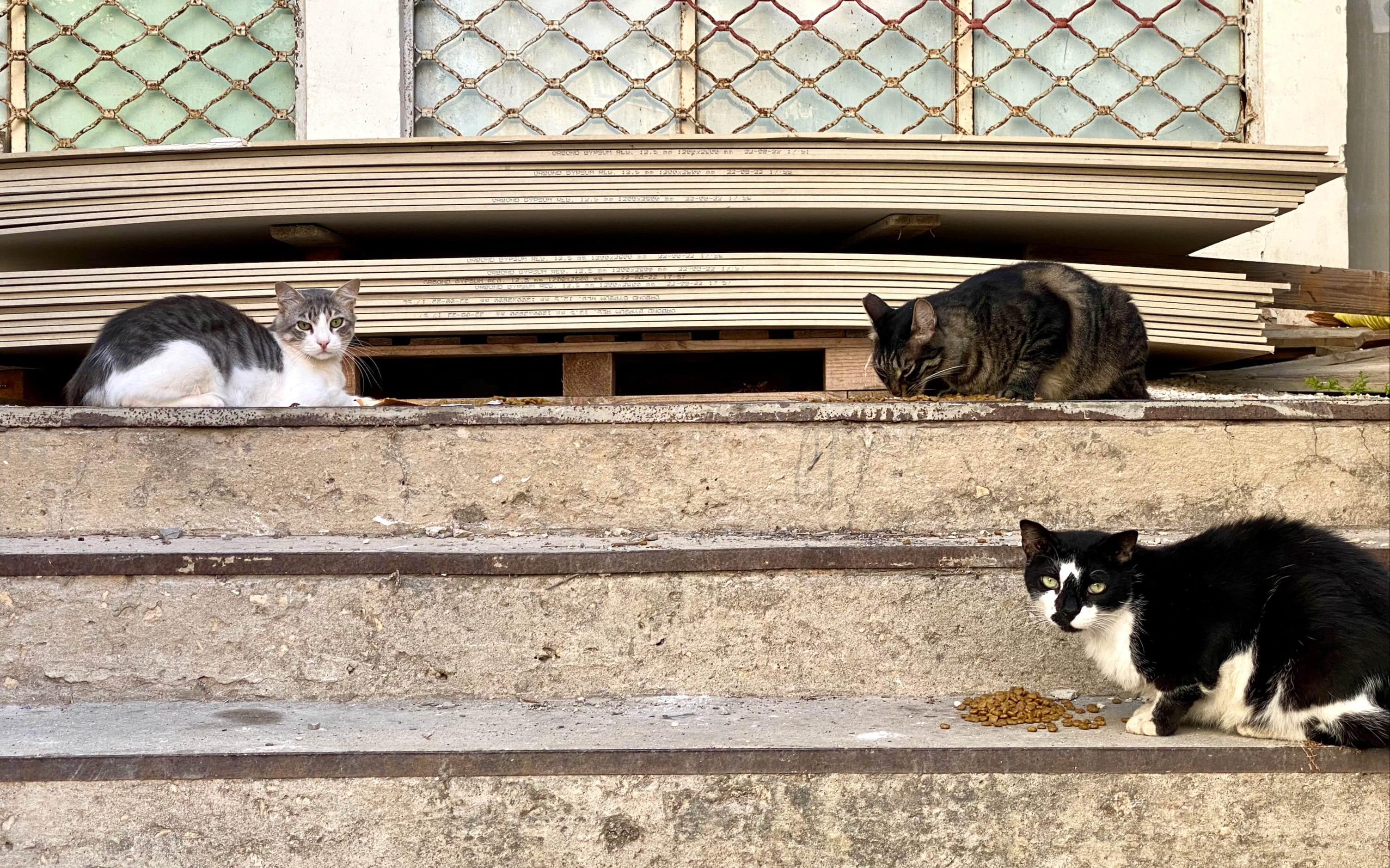
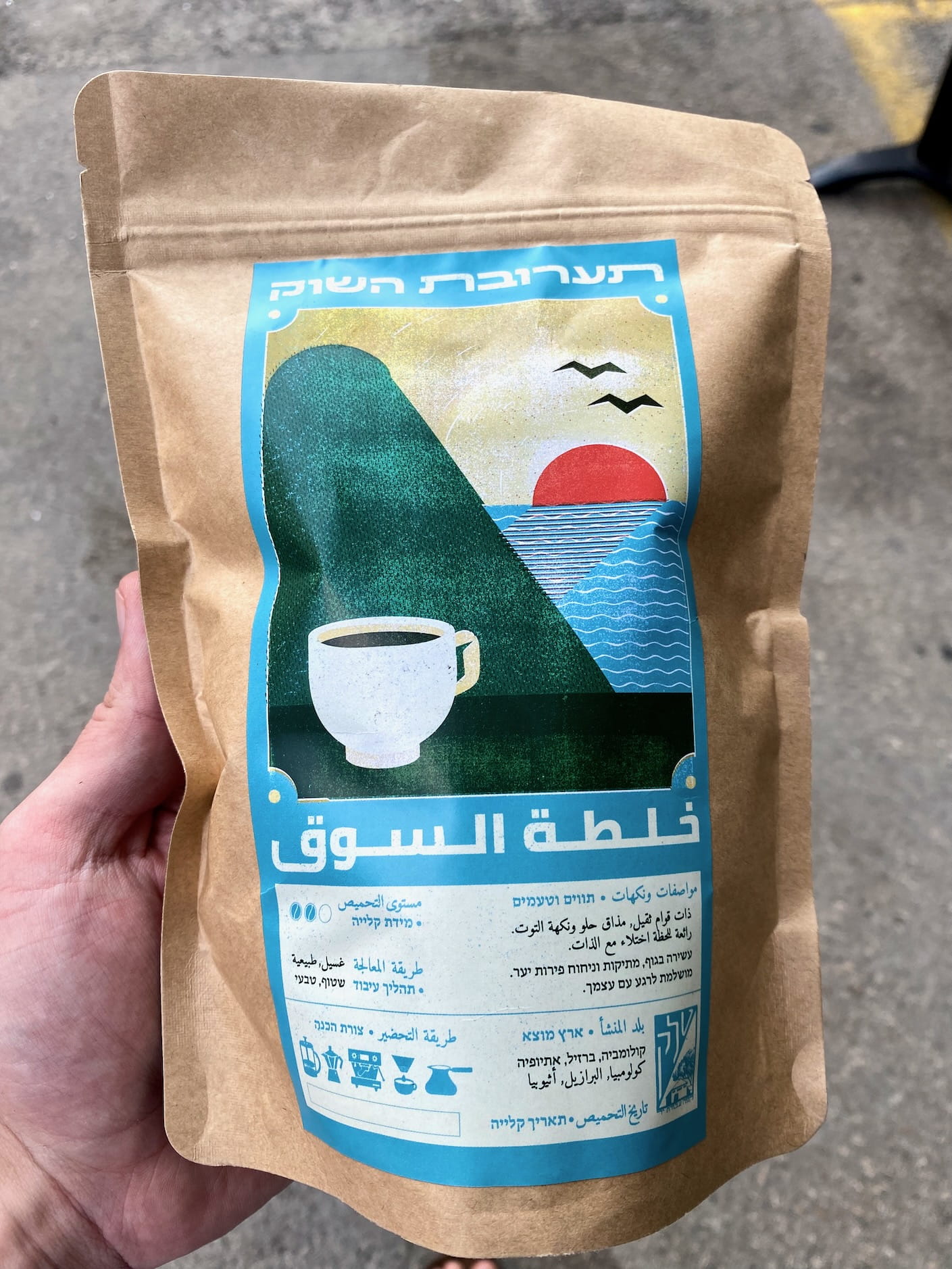
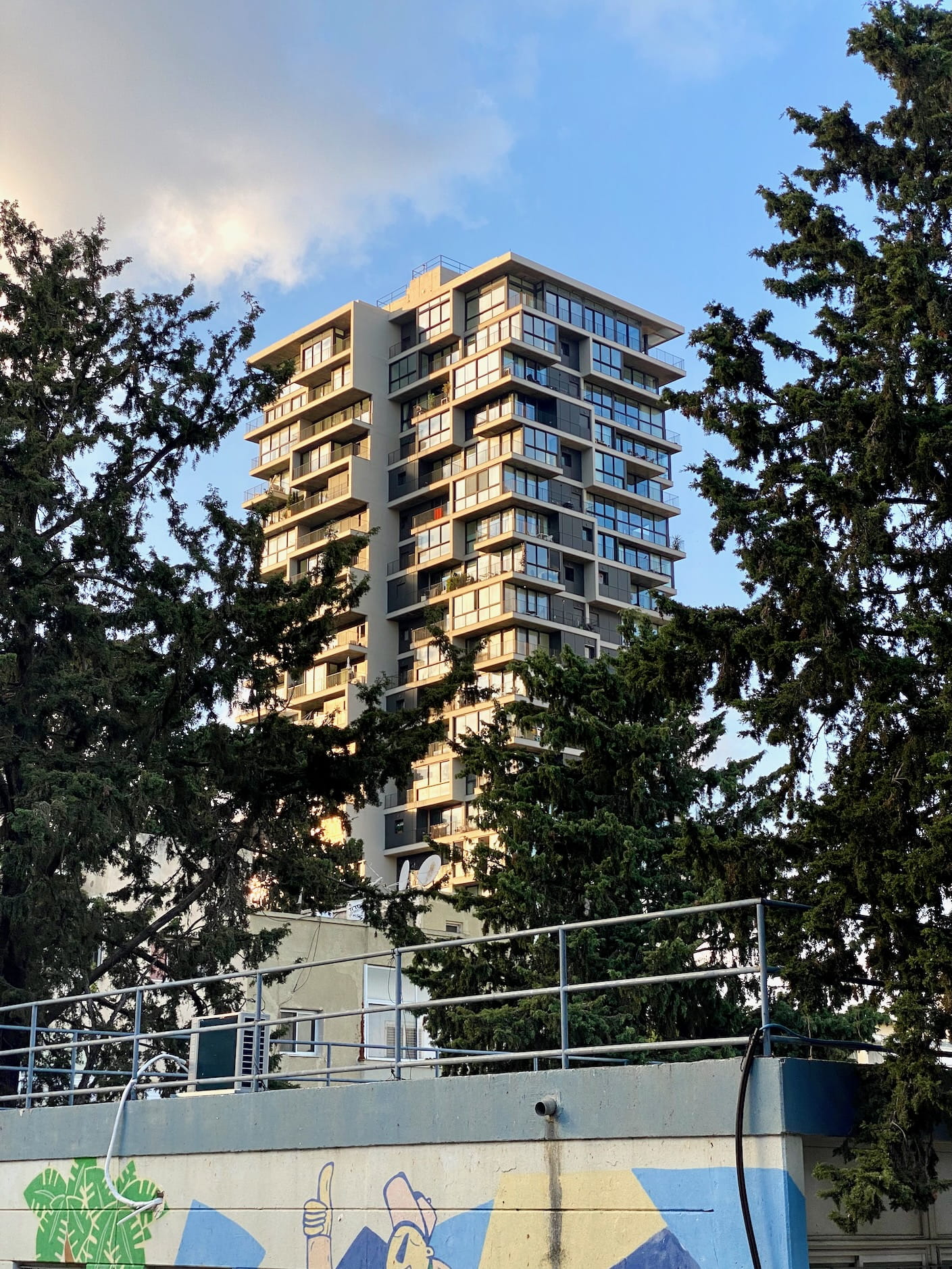
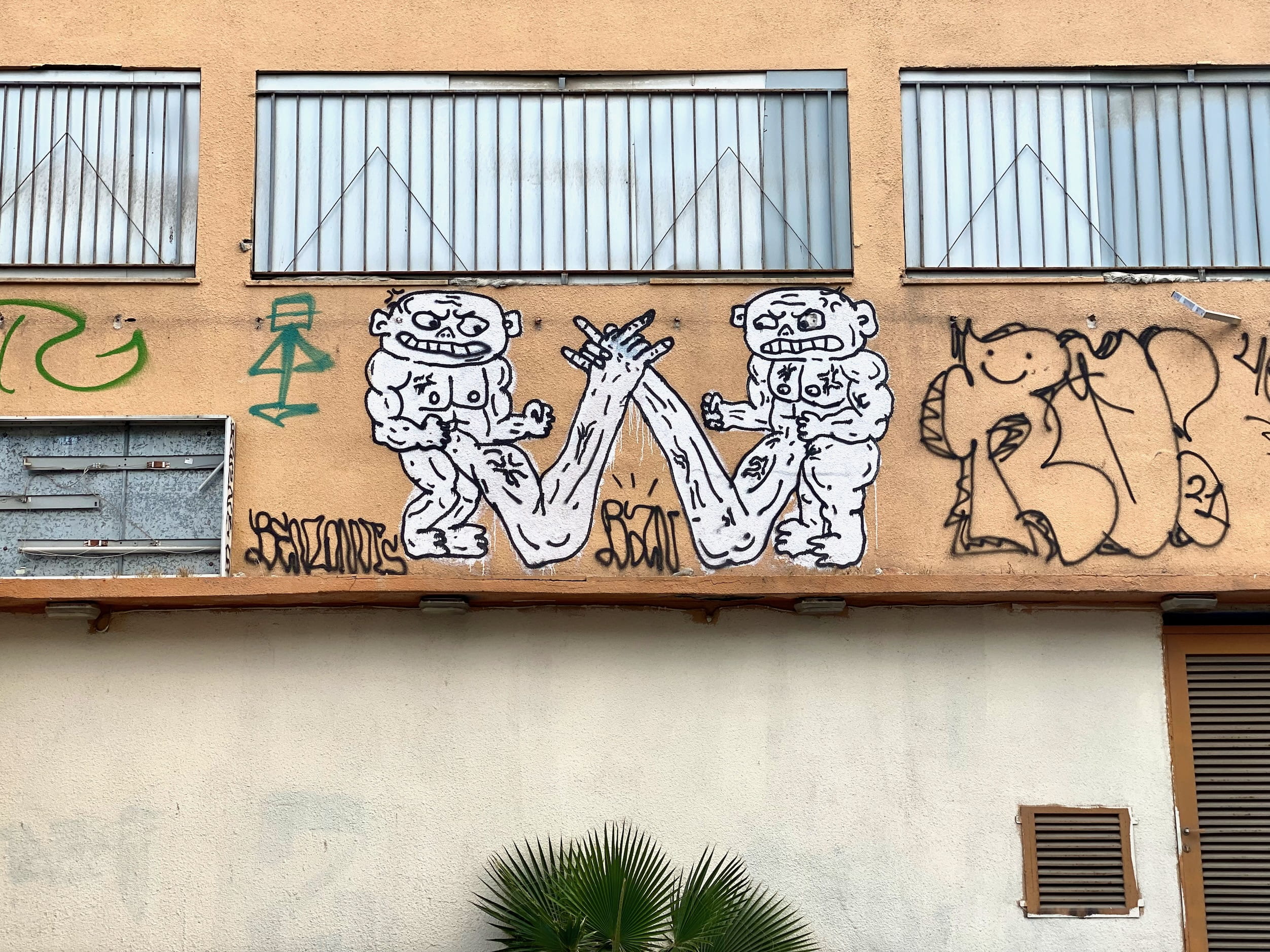
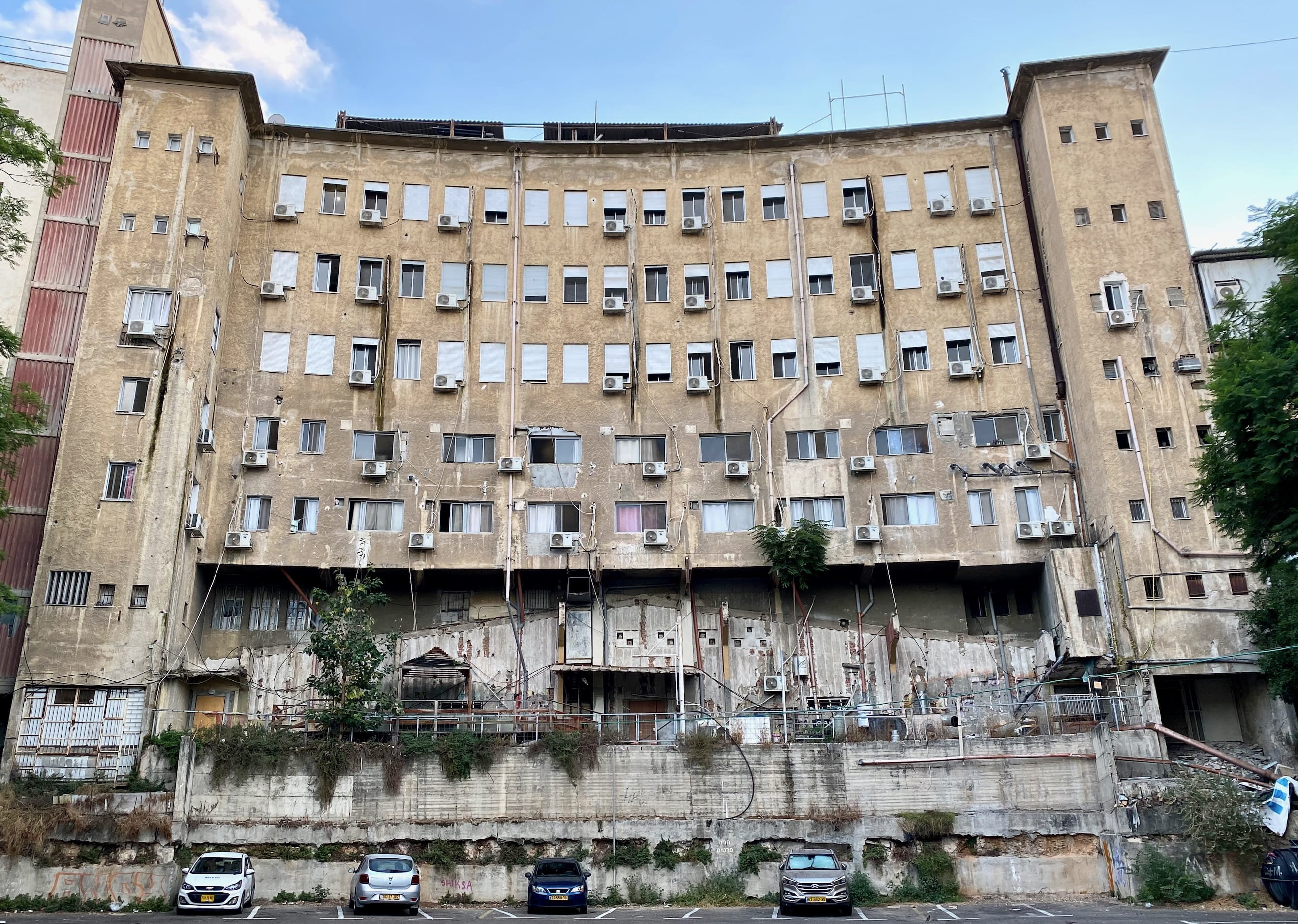
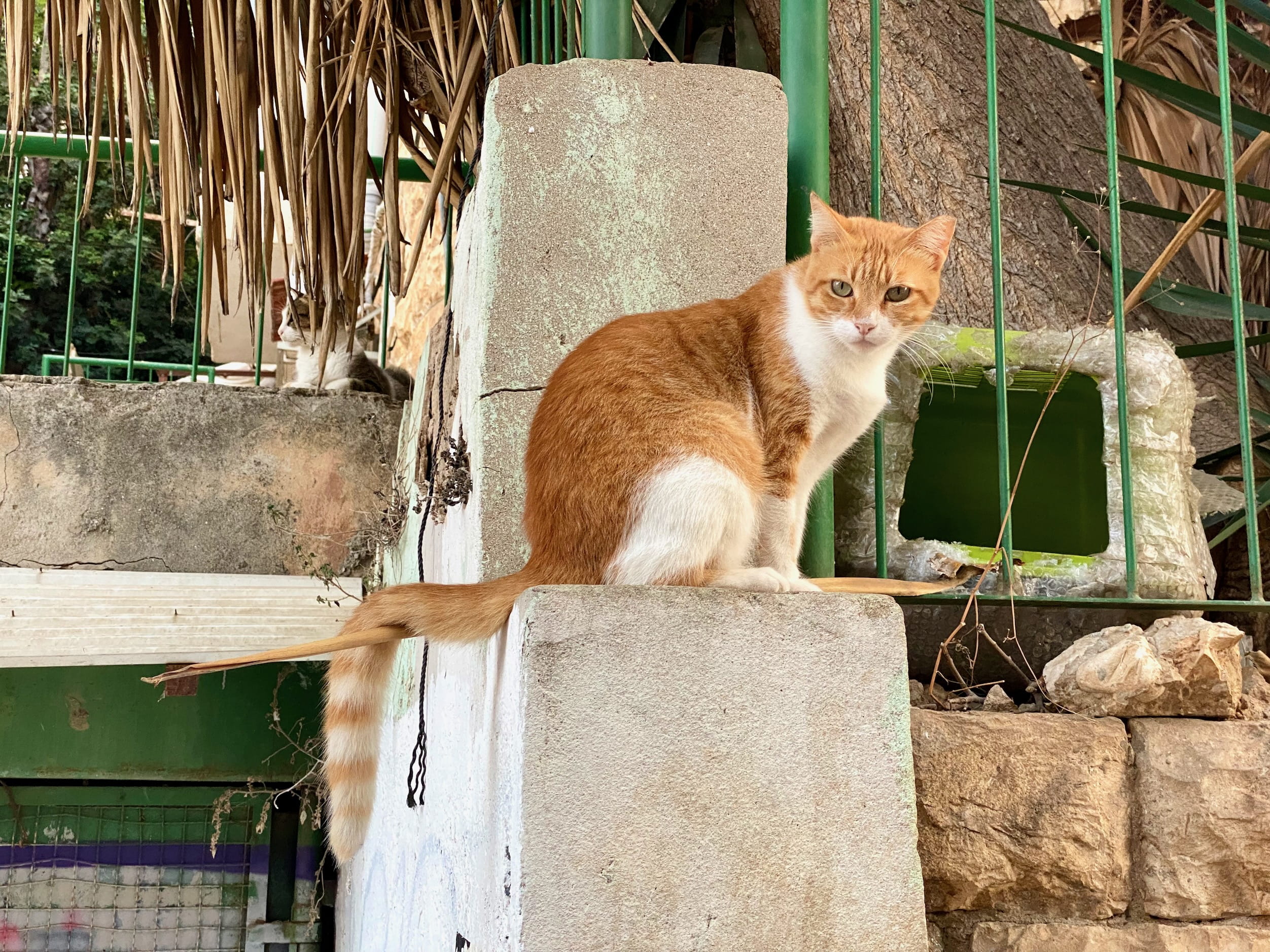
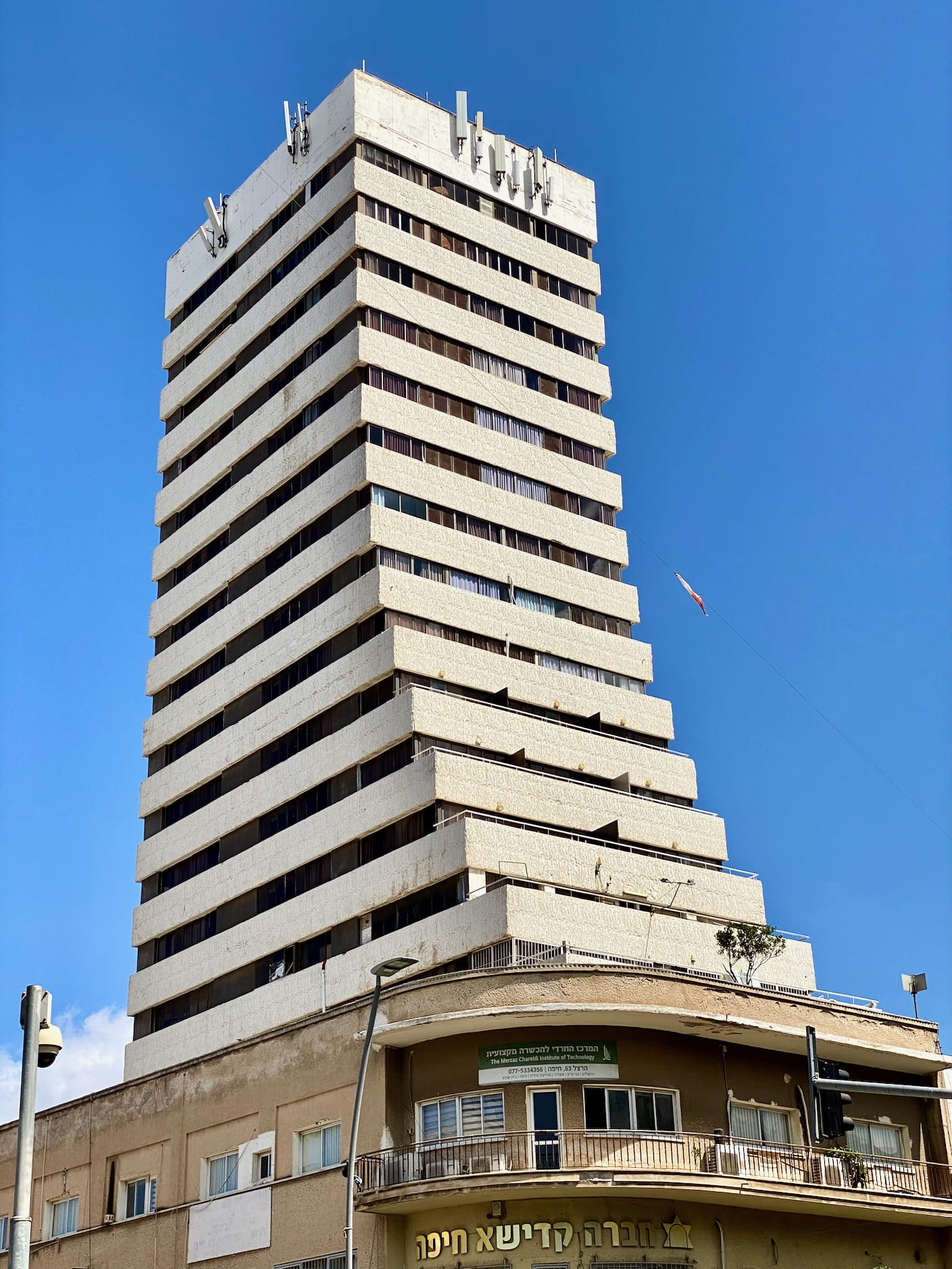
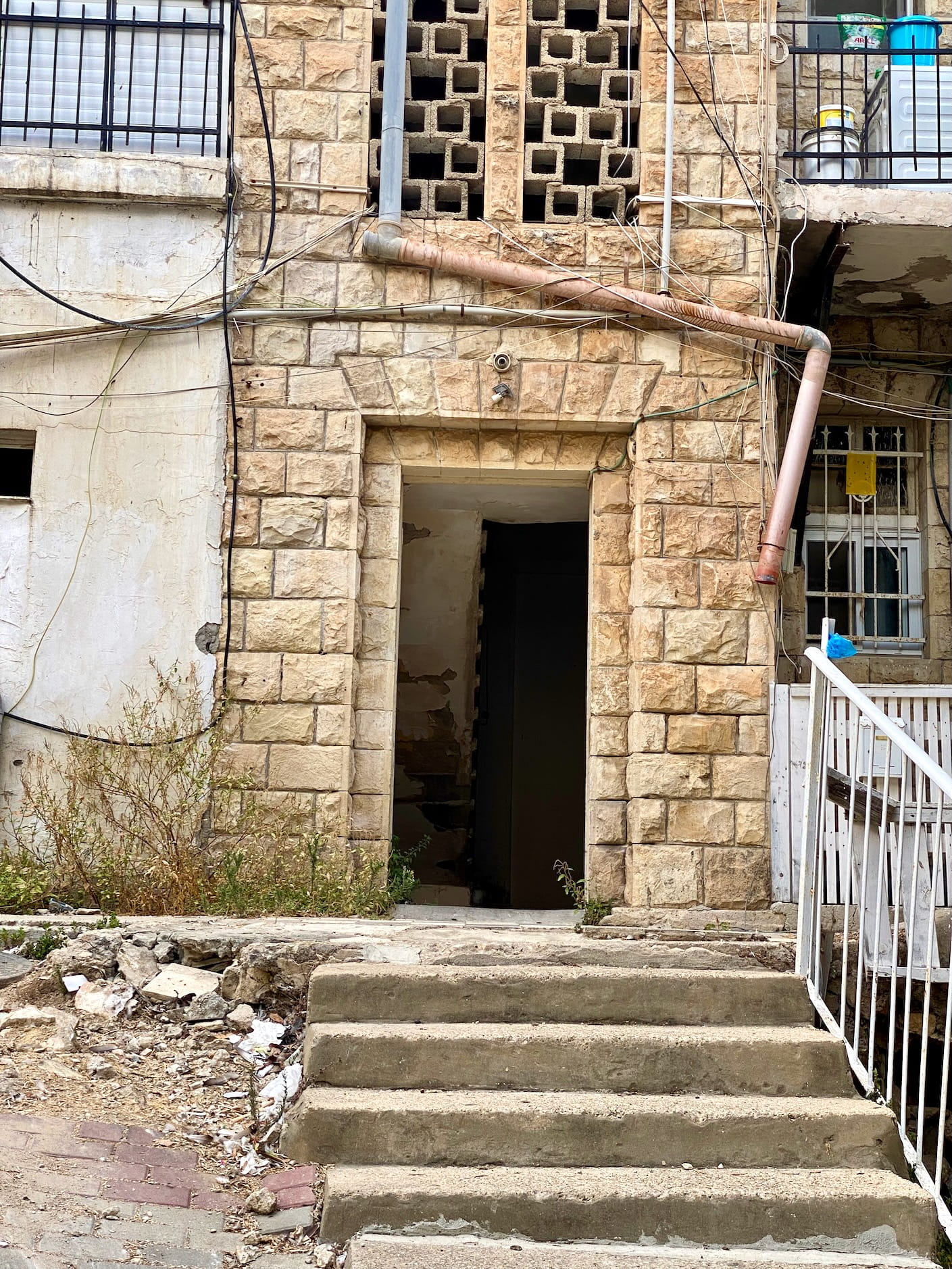
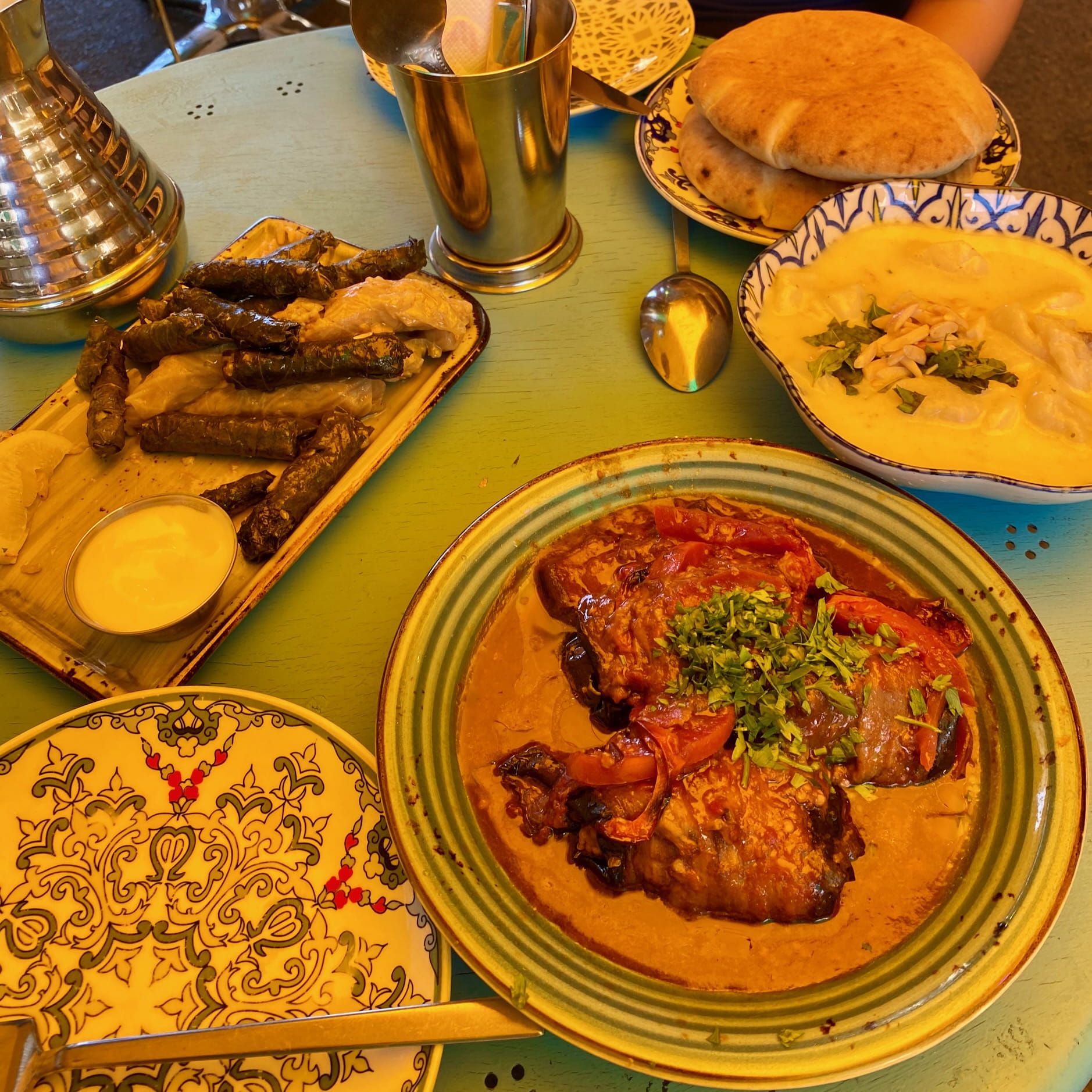
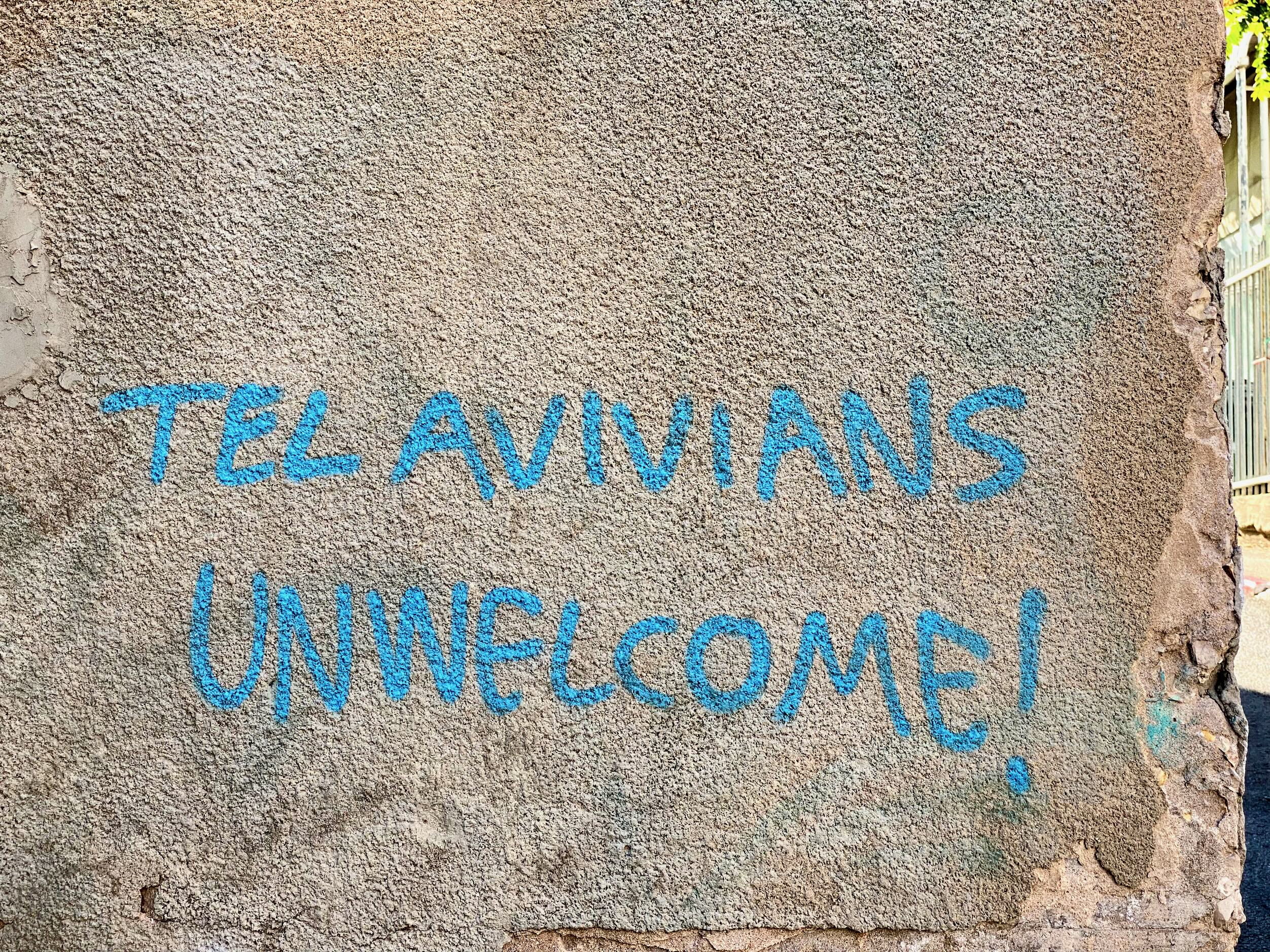
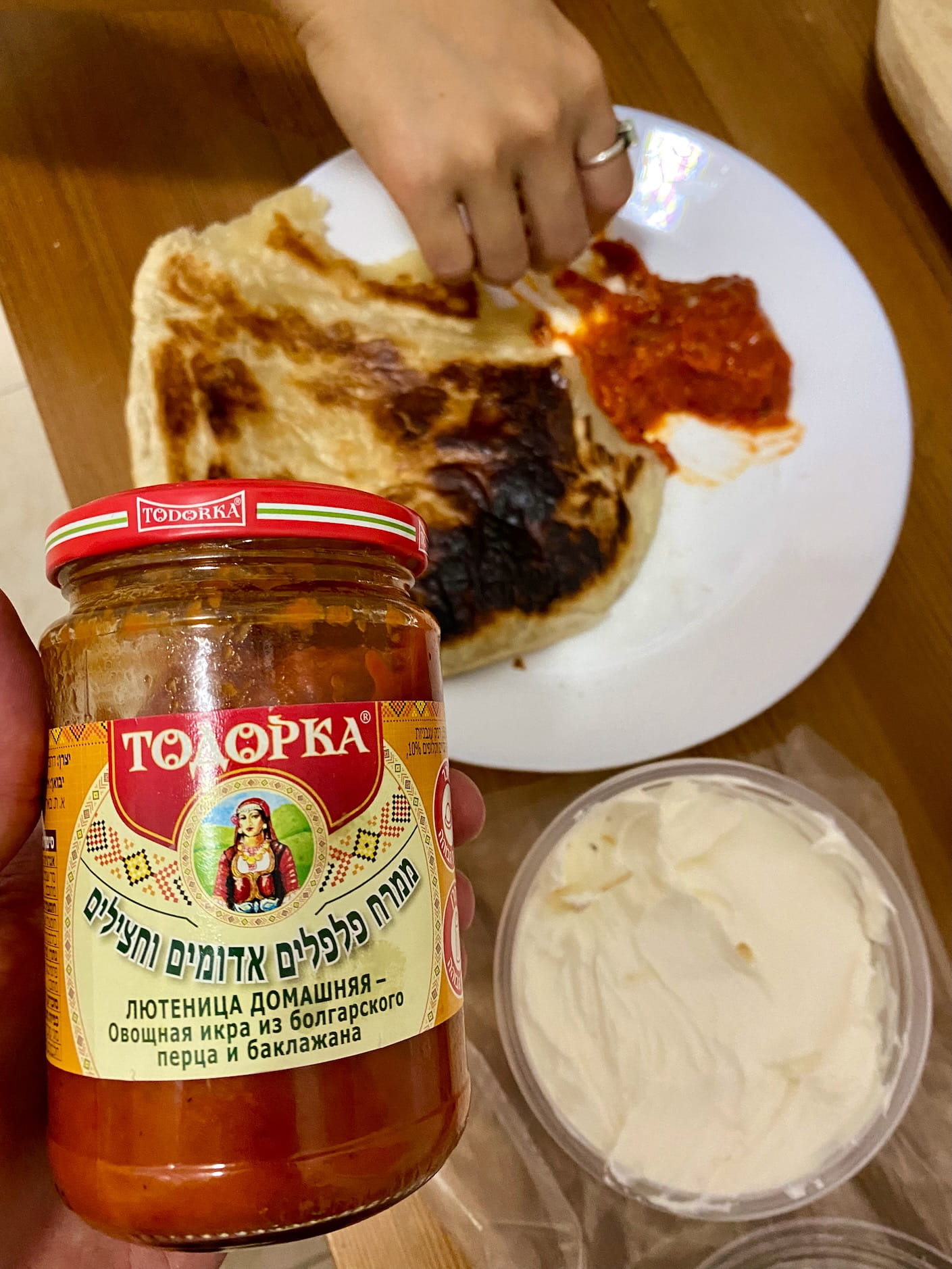



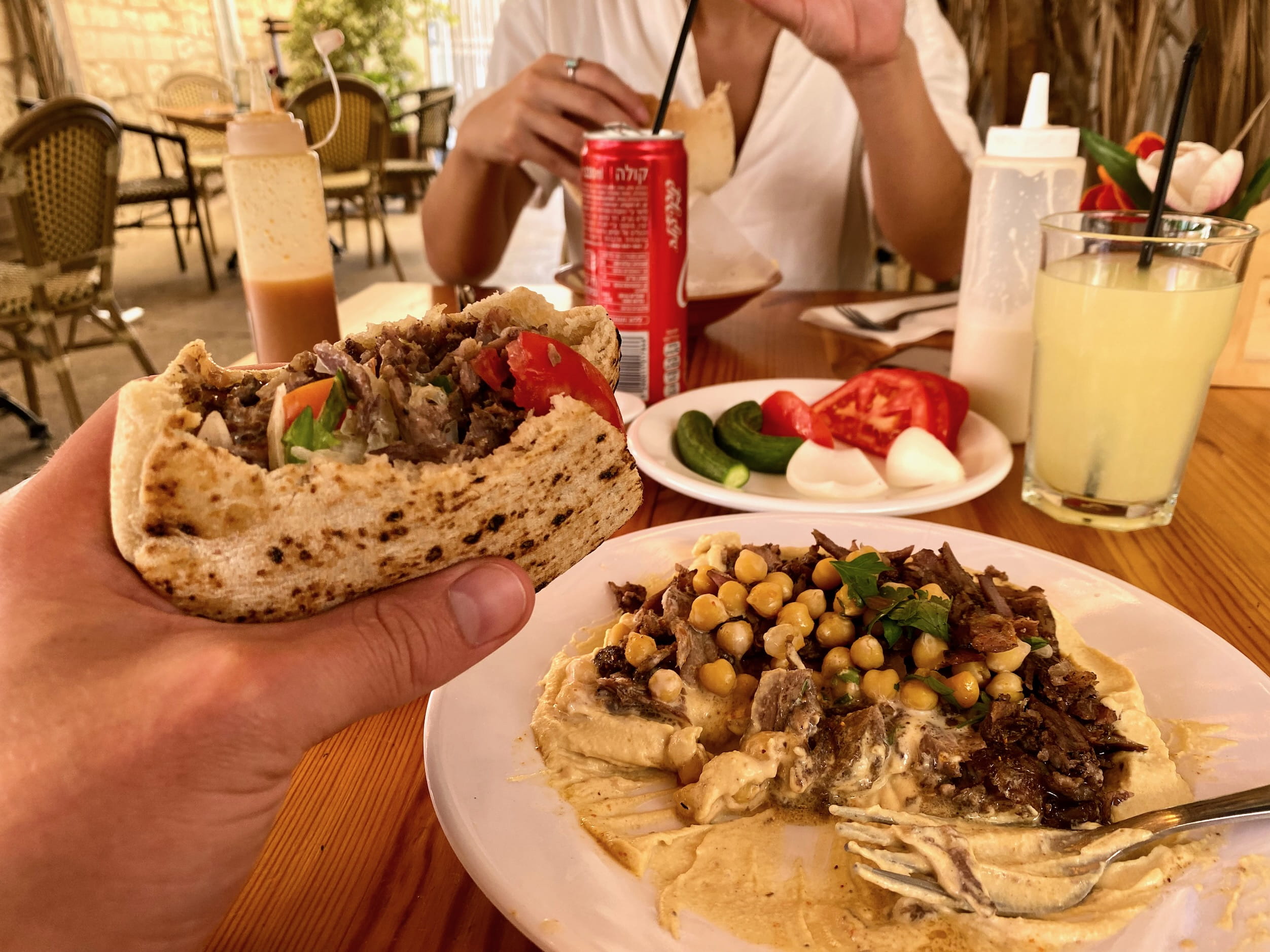
I need to stop looking back on this food because it’s making me hungry. Just one example: I’m not crazy about hummus. I mean, I like it as much as the next guy. But there’s such wild competition for hummus here that the quality is uniformly through the roof. It comes ultra smooth, dolloped with tahini, and completely without this harsh, acidic taste I’d always thought was a feature of hummus, but it turns out is just a feature of hummus you get in the store. But here in Haifa, what really stuck out were the spices. Simply incredible, and ones I didn’t recognize. (North African spices, perhaps?)
The strangest thing in Haifa was the Bahai Gardens. I didn’t even know about it until a waitress told us we had to go check it out.
It turns out there’s yet another religion that has close ties to Israel called the Bahai (stylized Baháʼí). They own and maintain a nearly incomprehensibly large garden on a hill right in the middle of town. You can only go inside with guided tours at specific times of the day.
We spent most of the tour trying to read the vibes off of the tour guide lady (kind of spacey, kind of warm, kind of distant) to discern whether she was an outsider or had drunk the kool-aid. Result: inconclusive.
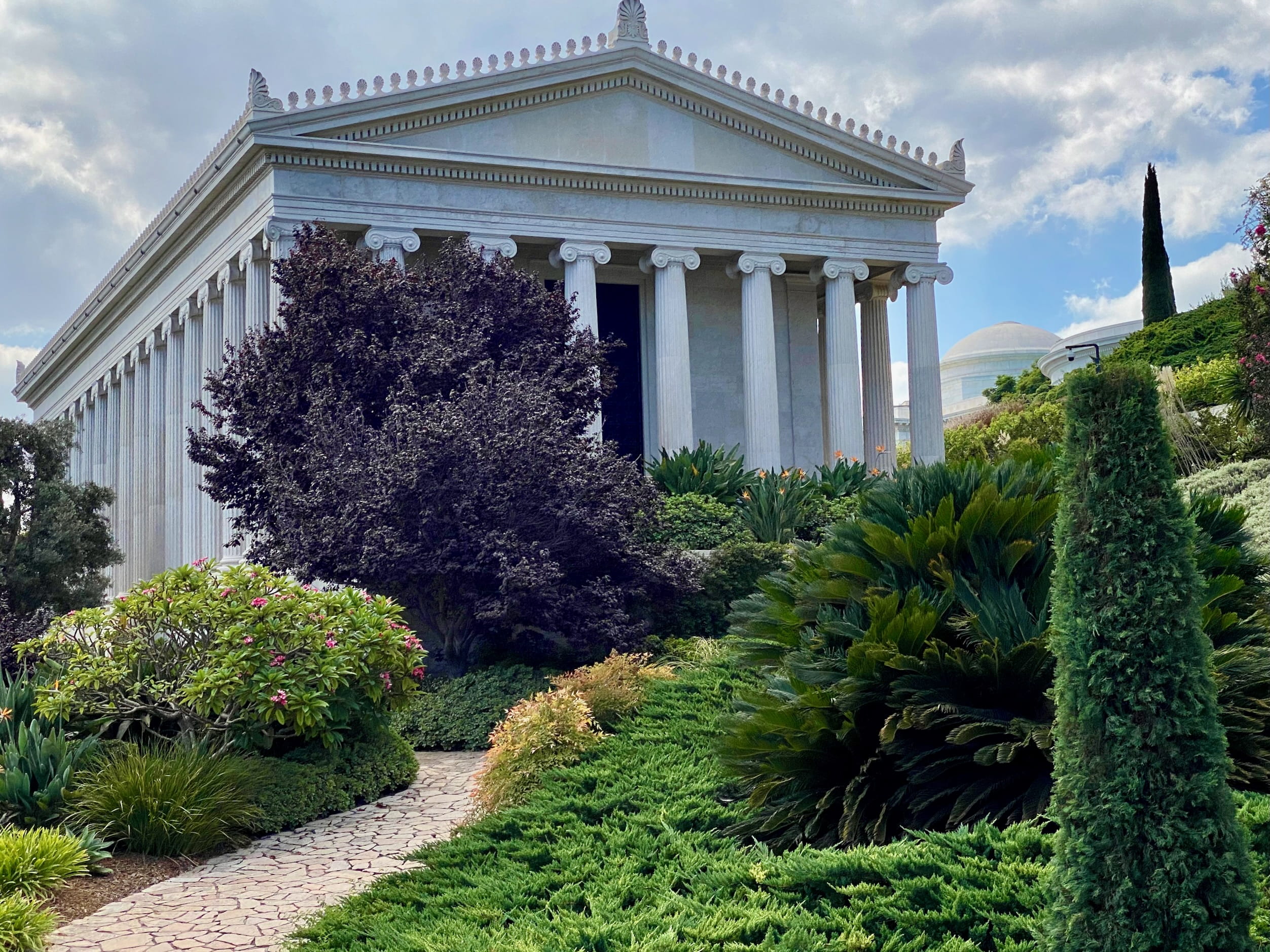
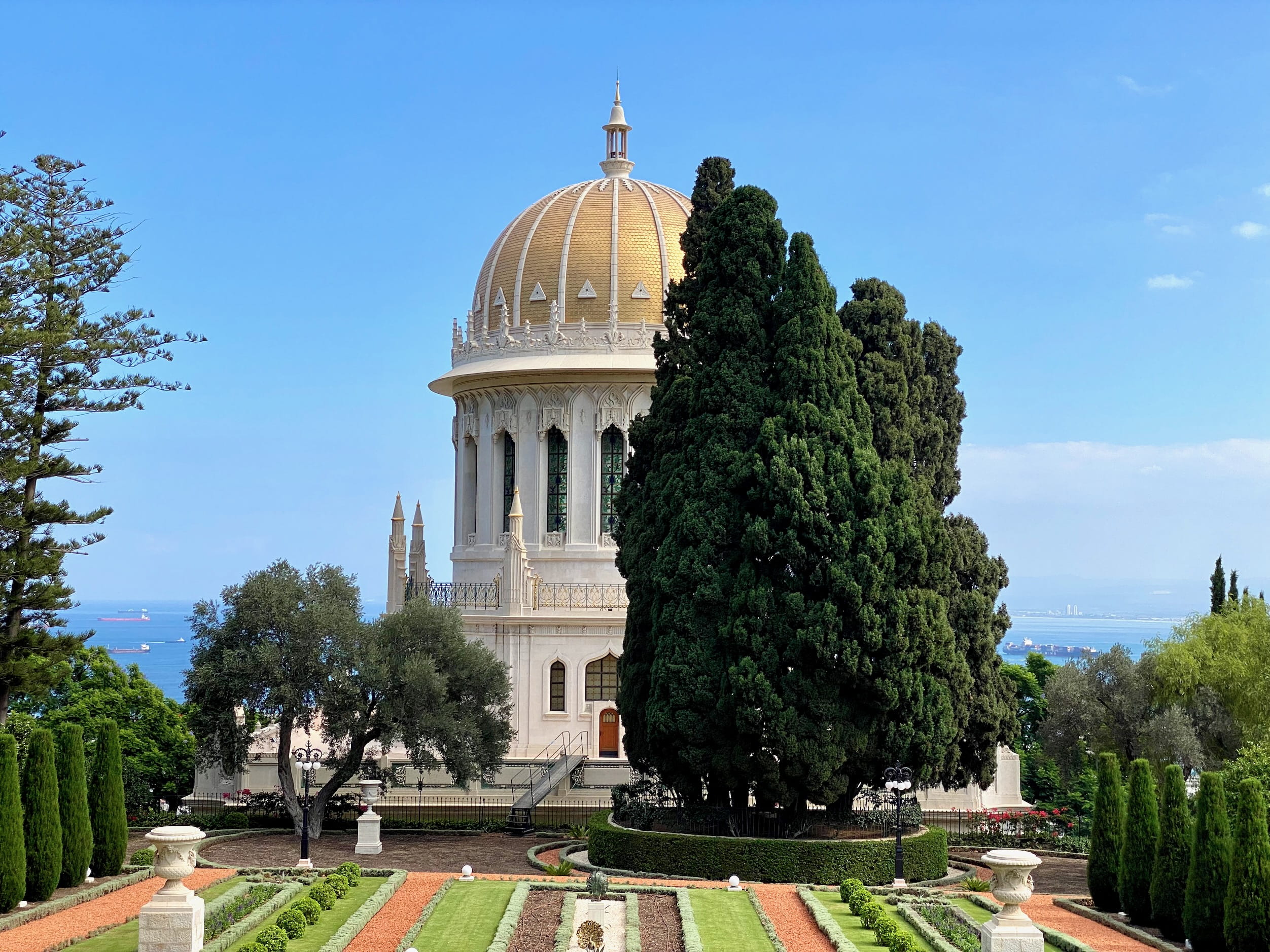
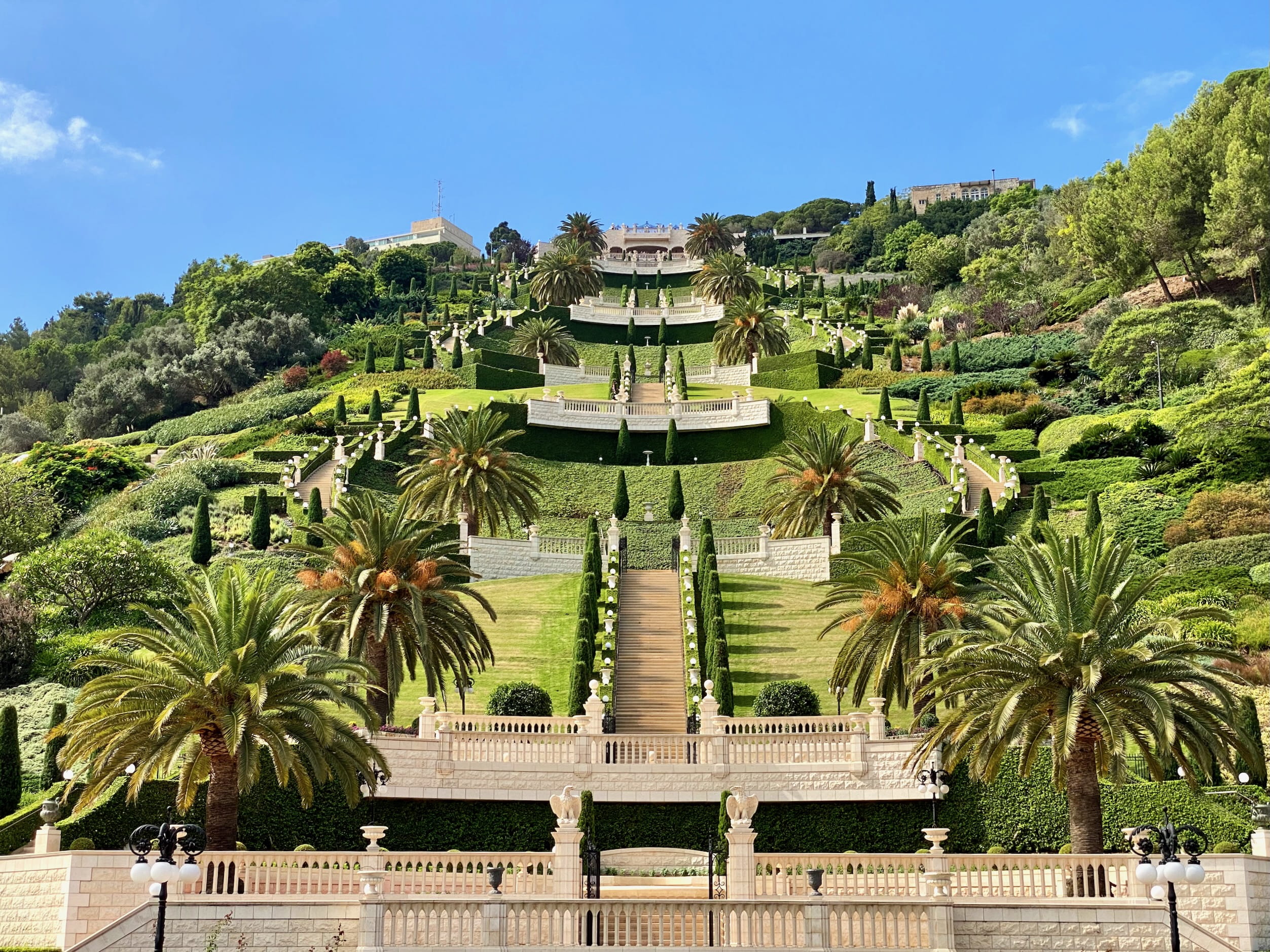
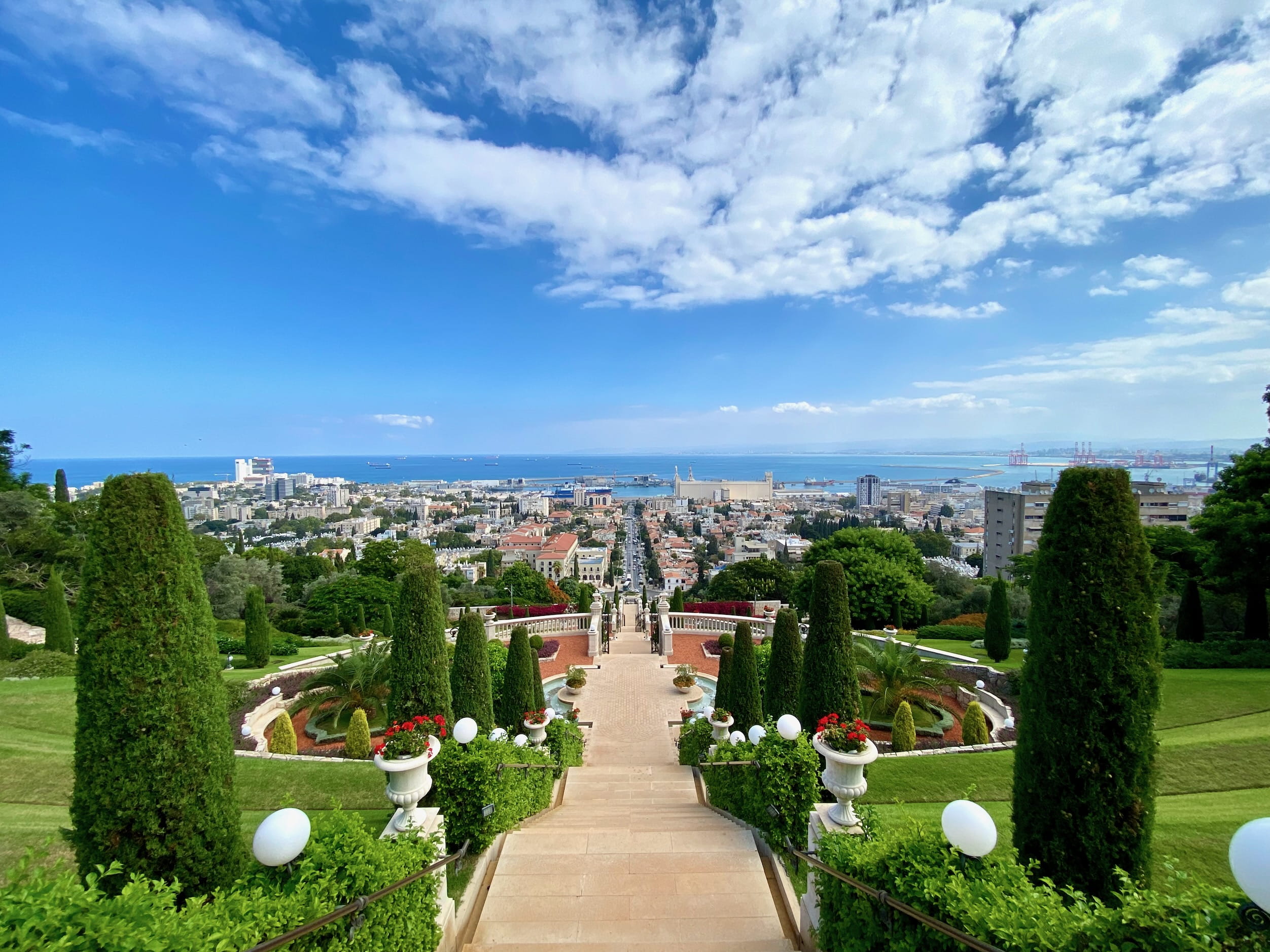

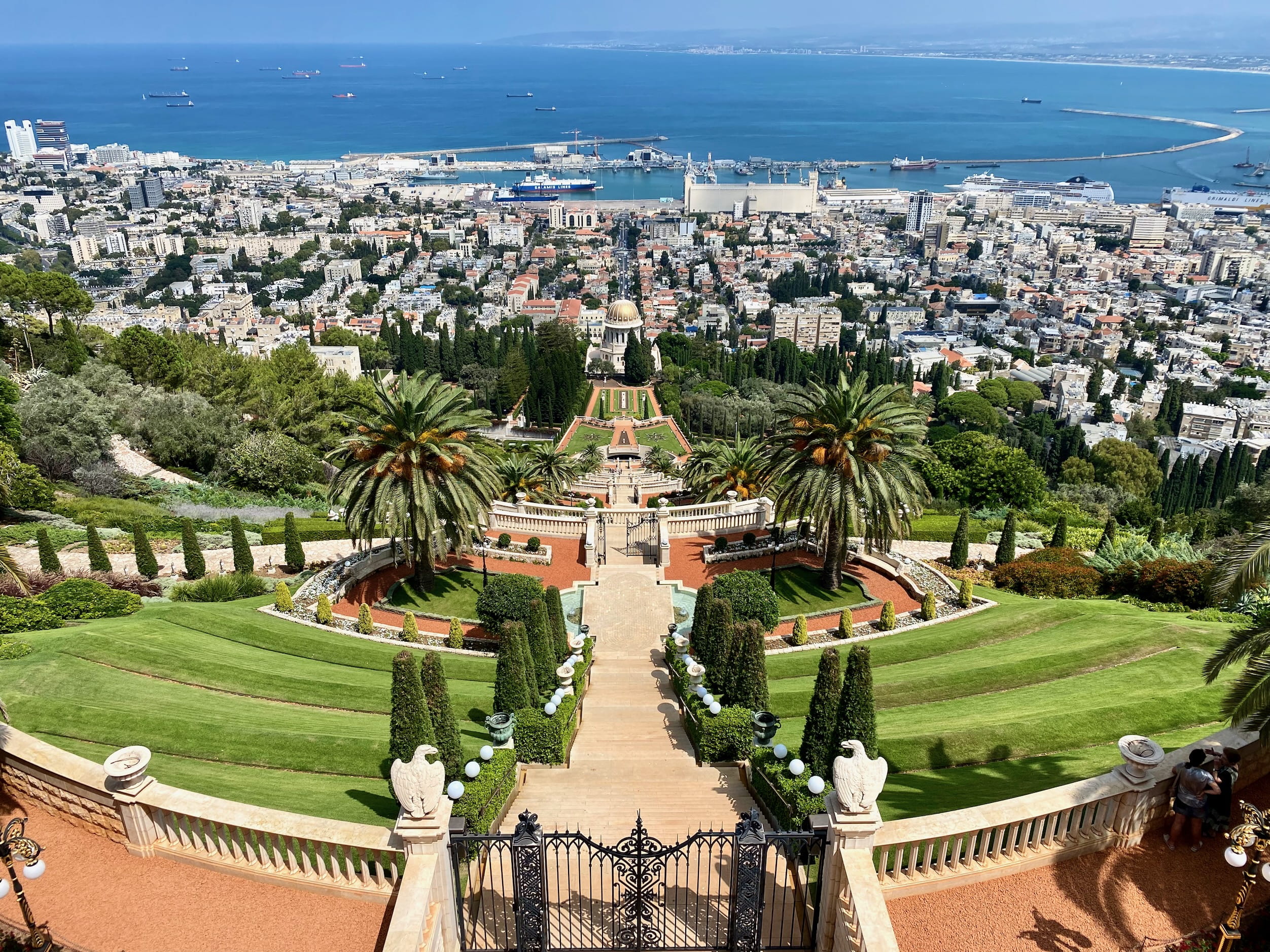
All right, time for little observations.
First, parking on sidewalks. This drove me nuts. People do it. Constantly. Everywhere.
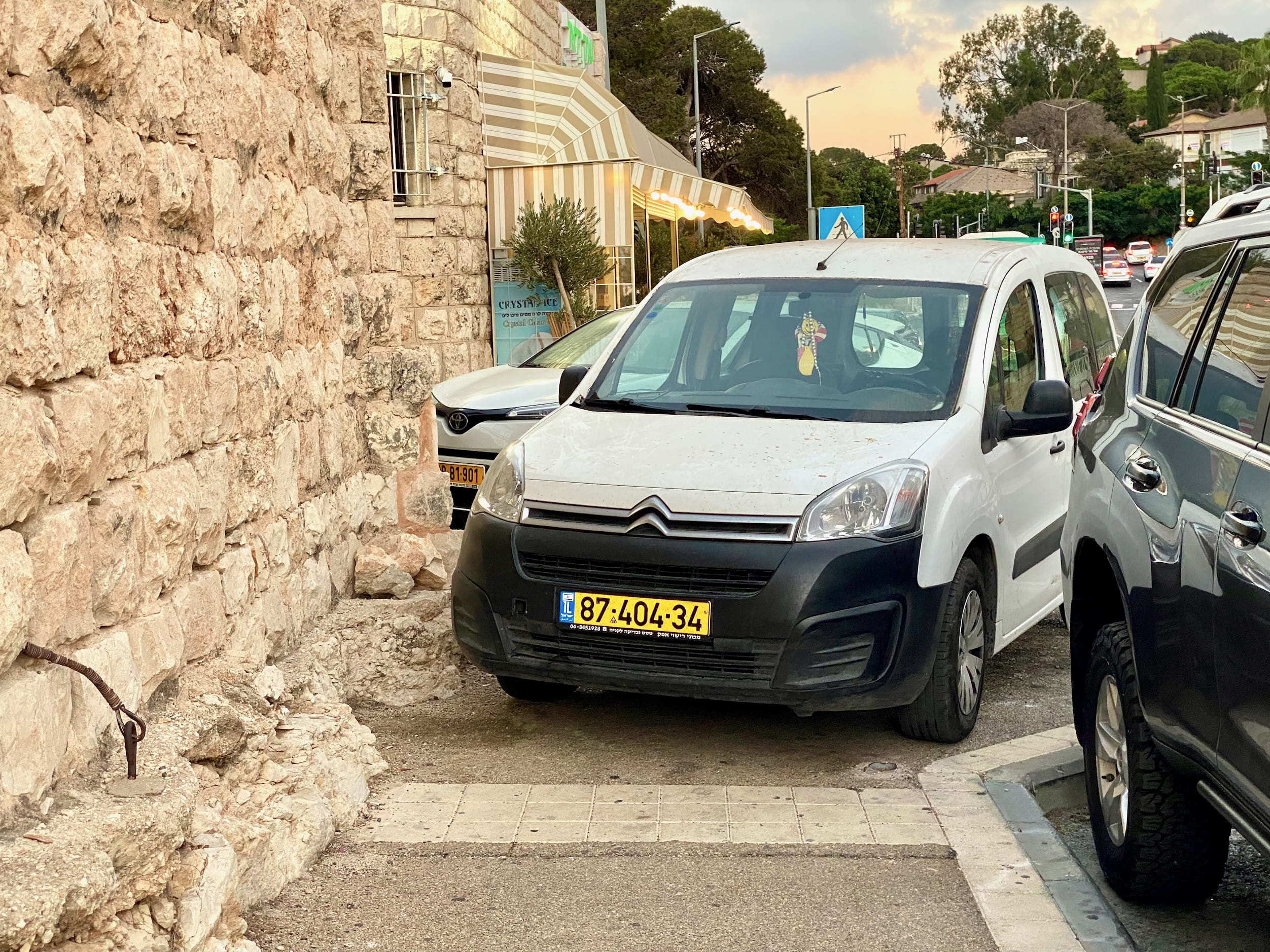
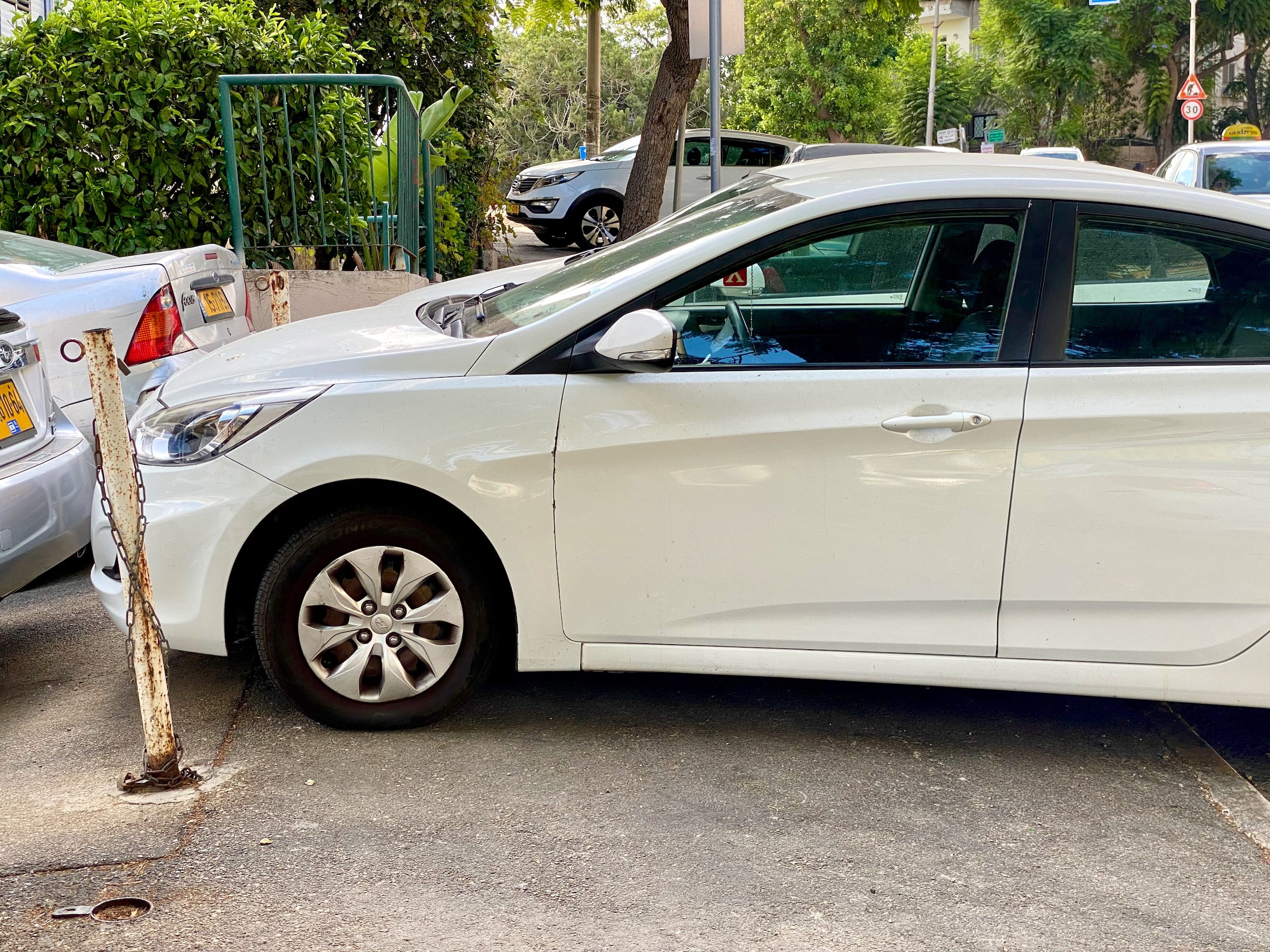
Next, I present to you the best (auto translated) Google Maps review I have seen to date.
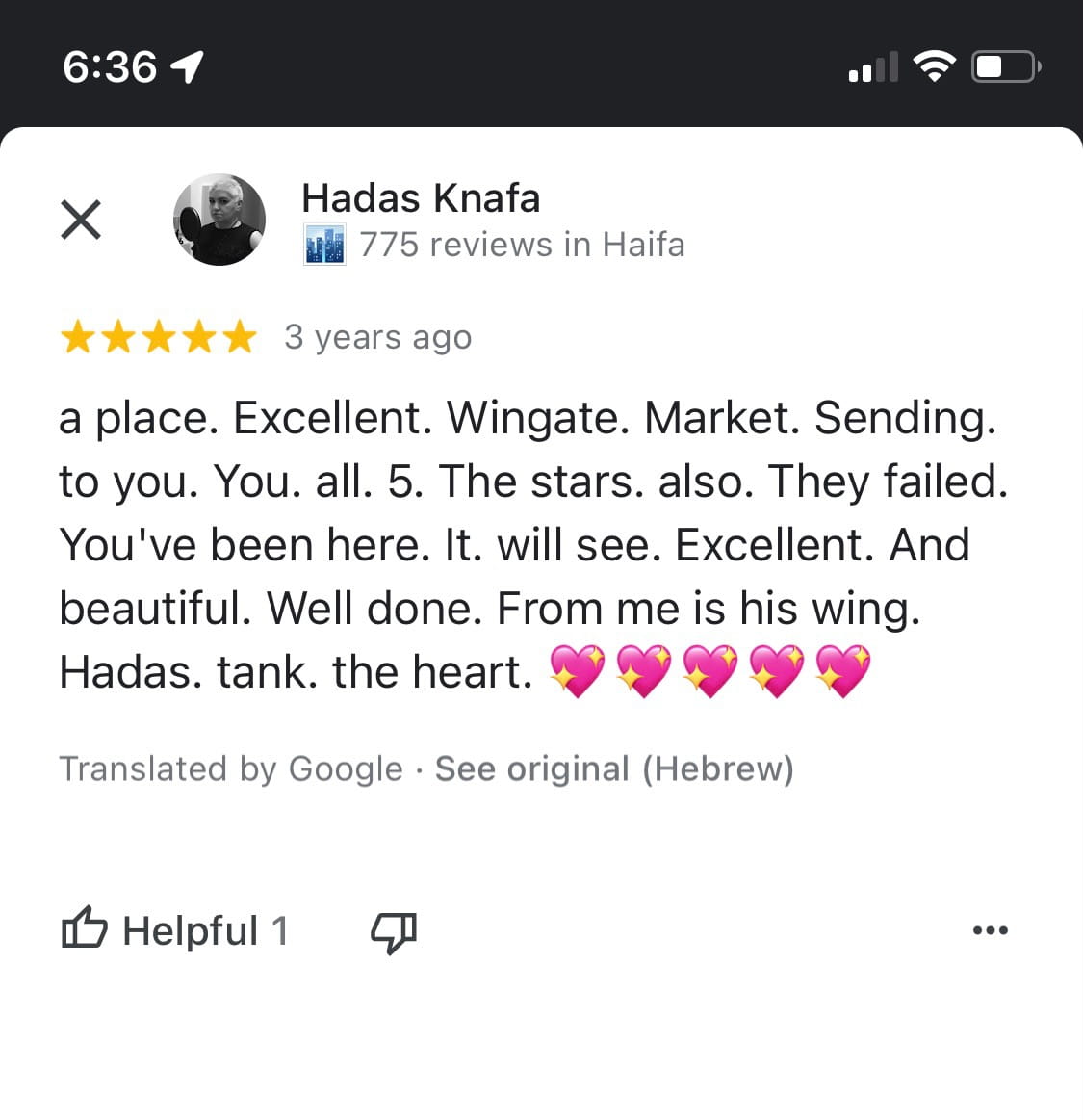
Finally, the best sports drink bottle shape.
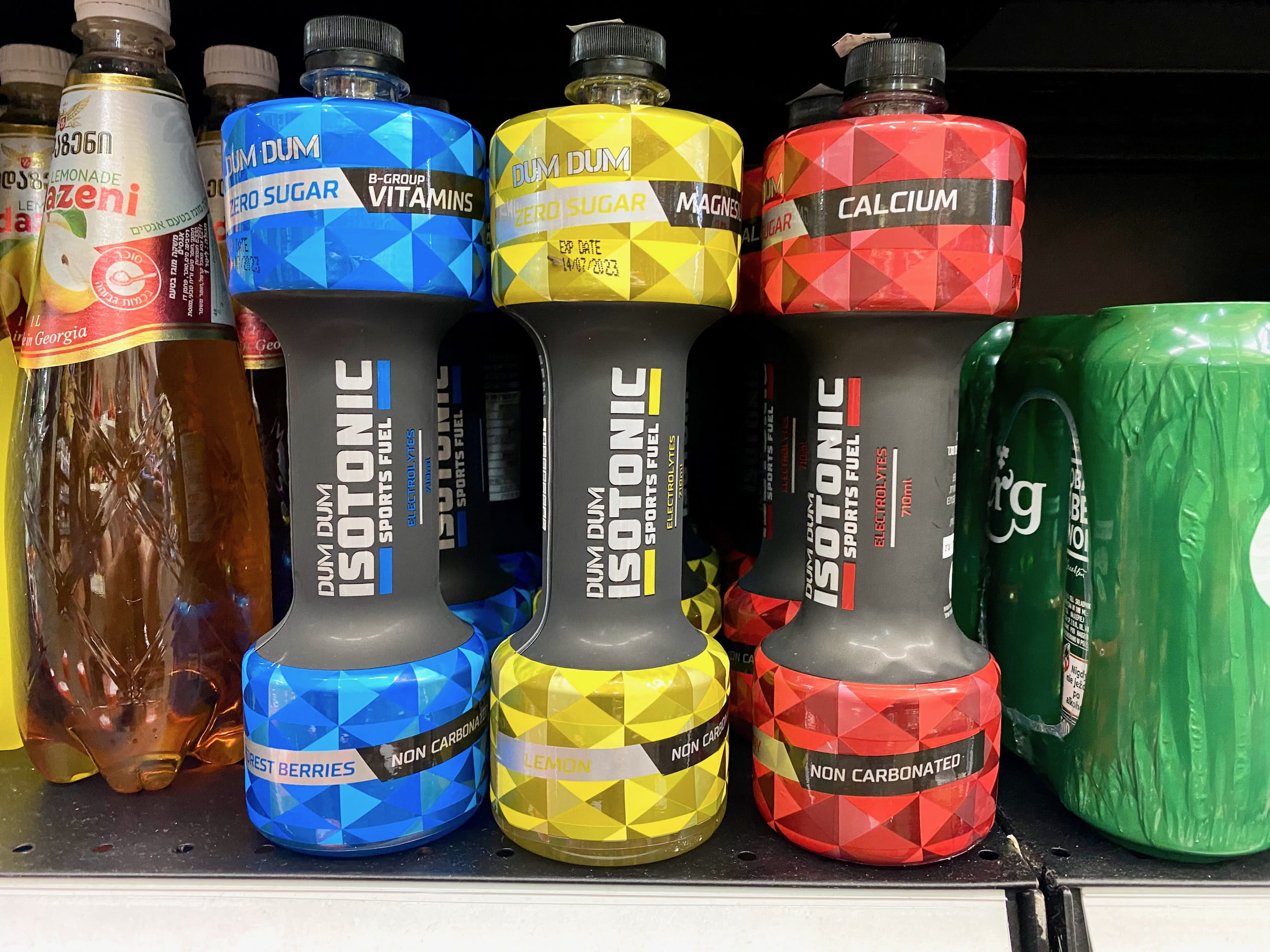
Akko
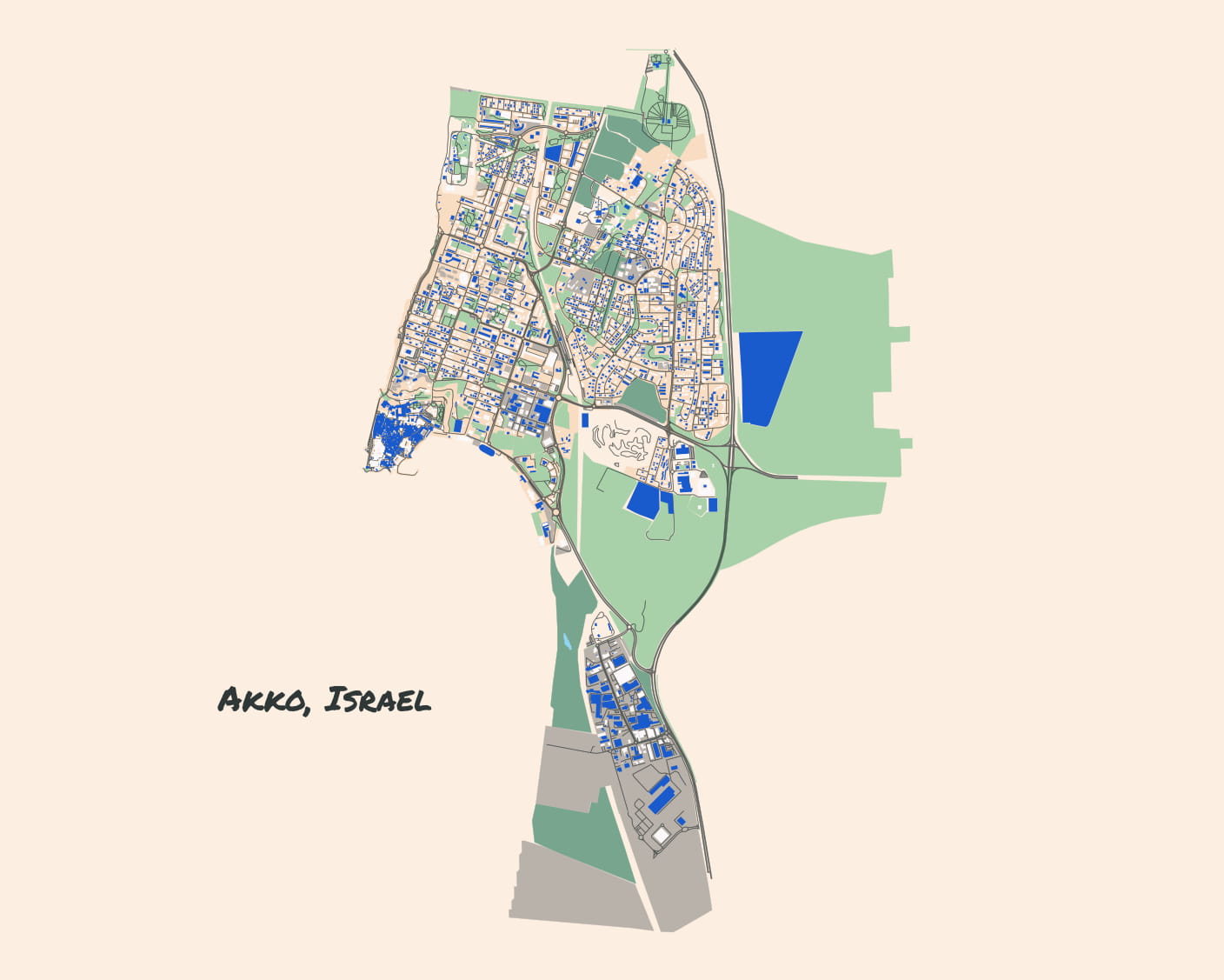
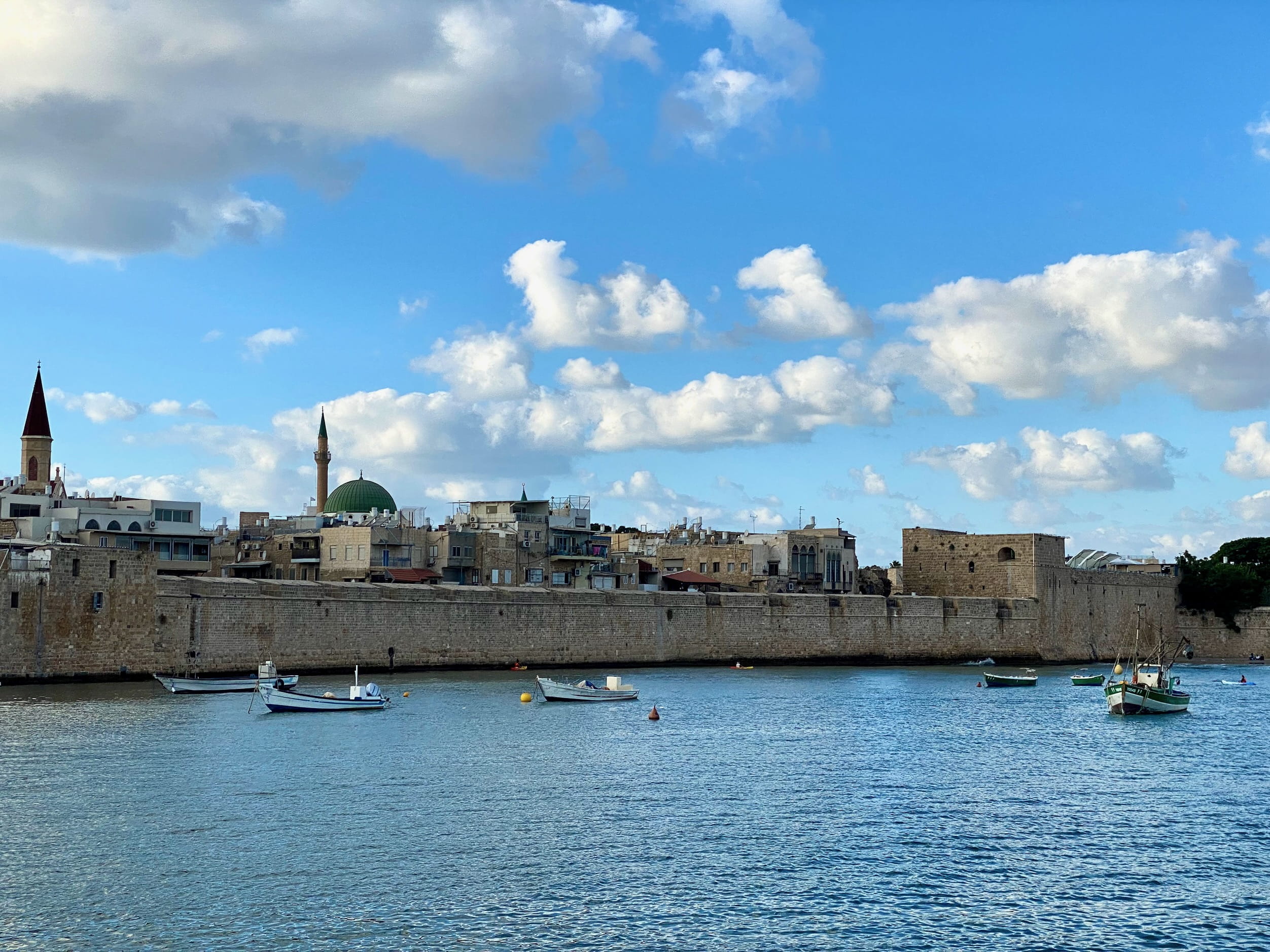
This city called Acre in English, but I think that word looks ugly and it’s written as Akko everywhere locally so I’m going to call it that.
We took a day trip to Akko, an ancient walled city that changed hands between Islamic rule and the Crusaders multiple times.11 They recently dug up a bunch of Crusader ruins, and made such incredibly high production value exhibits within the barren stone caverns that it’s actually genuinely entertaining to visit.
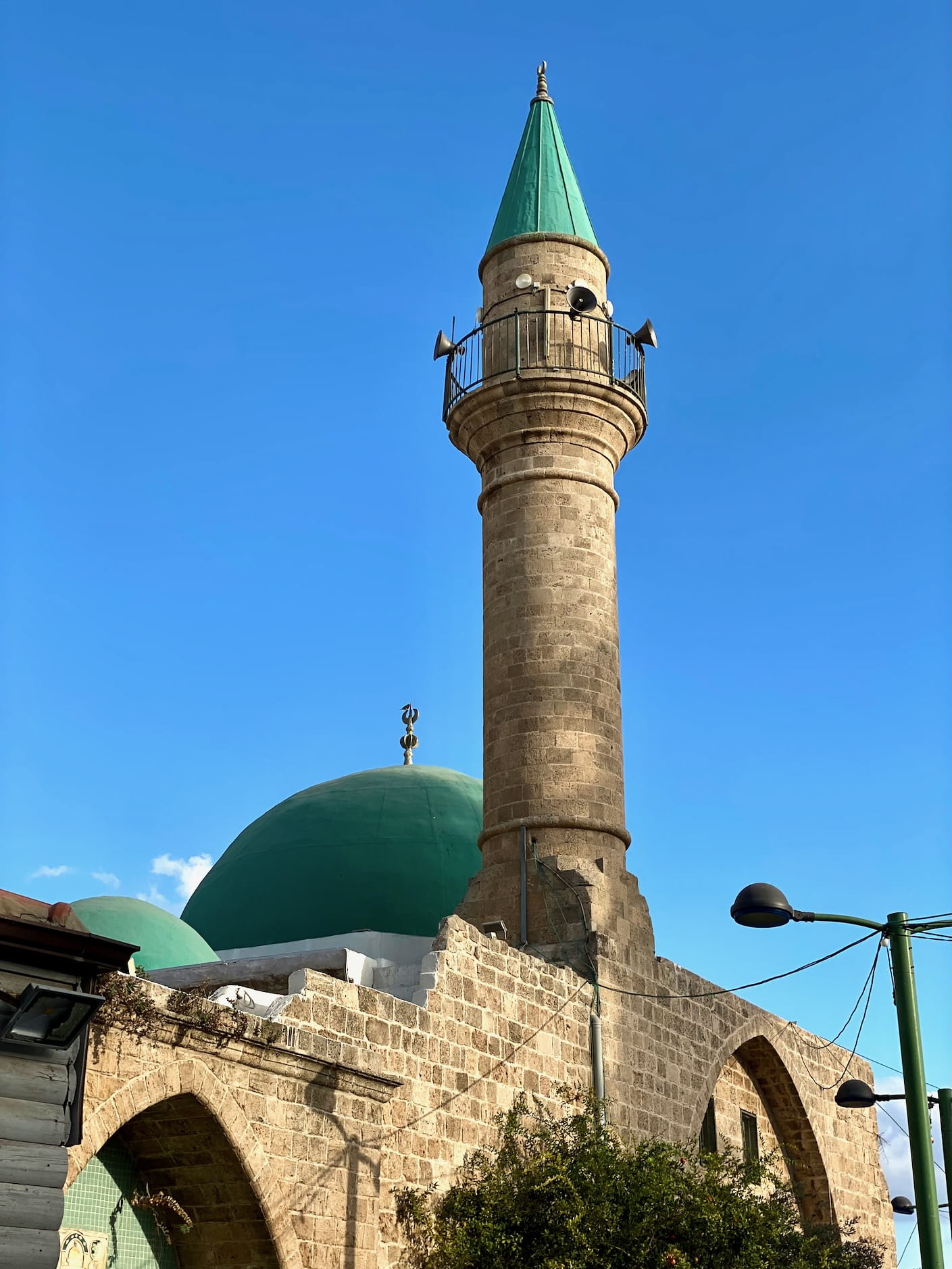
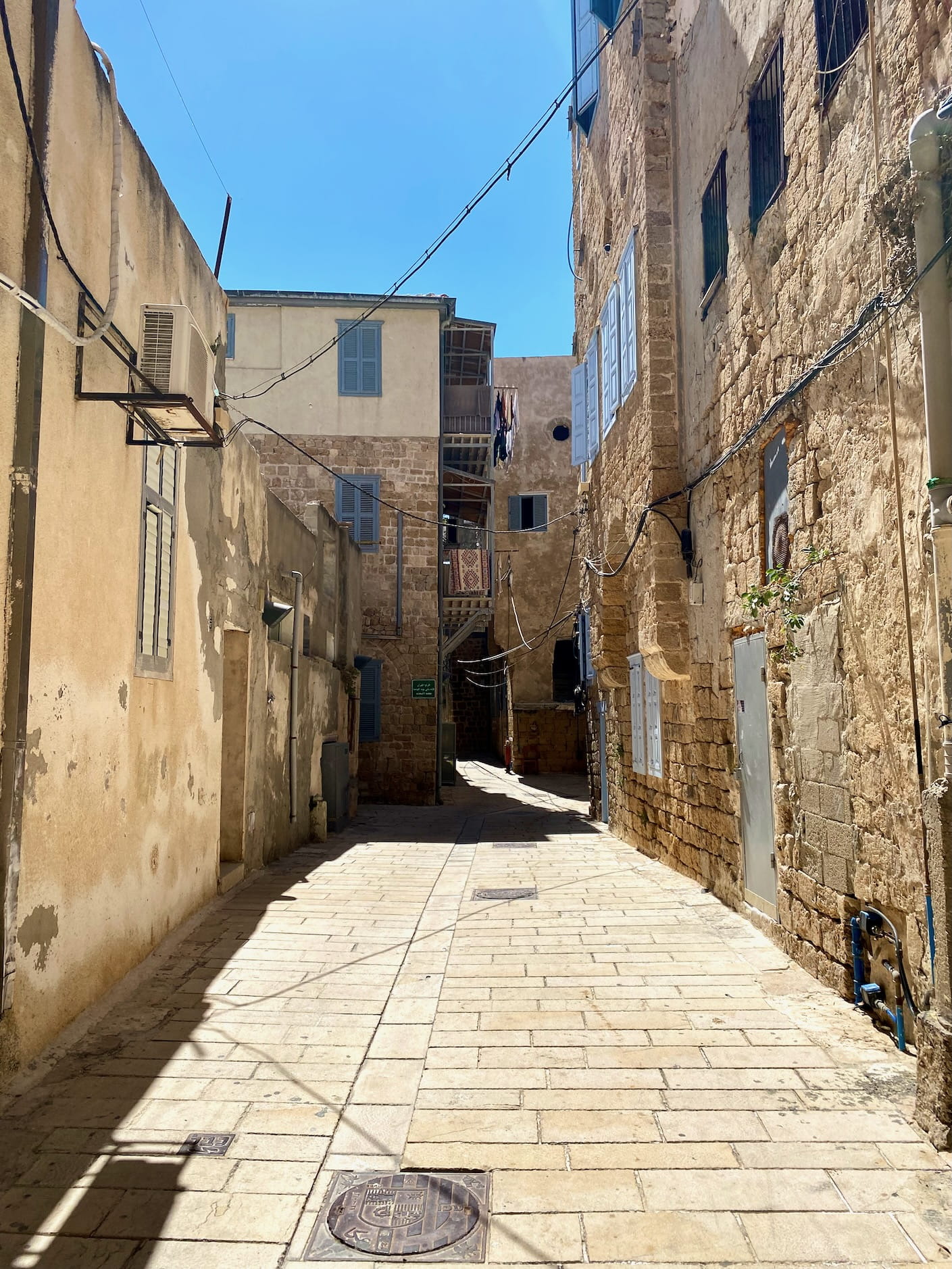
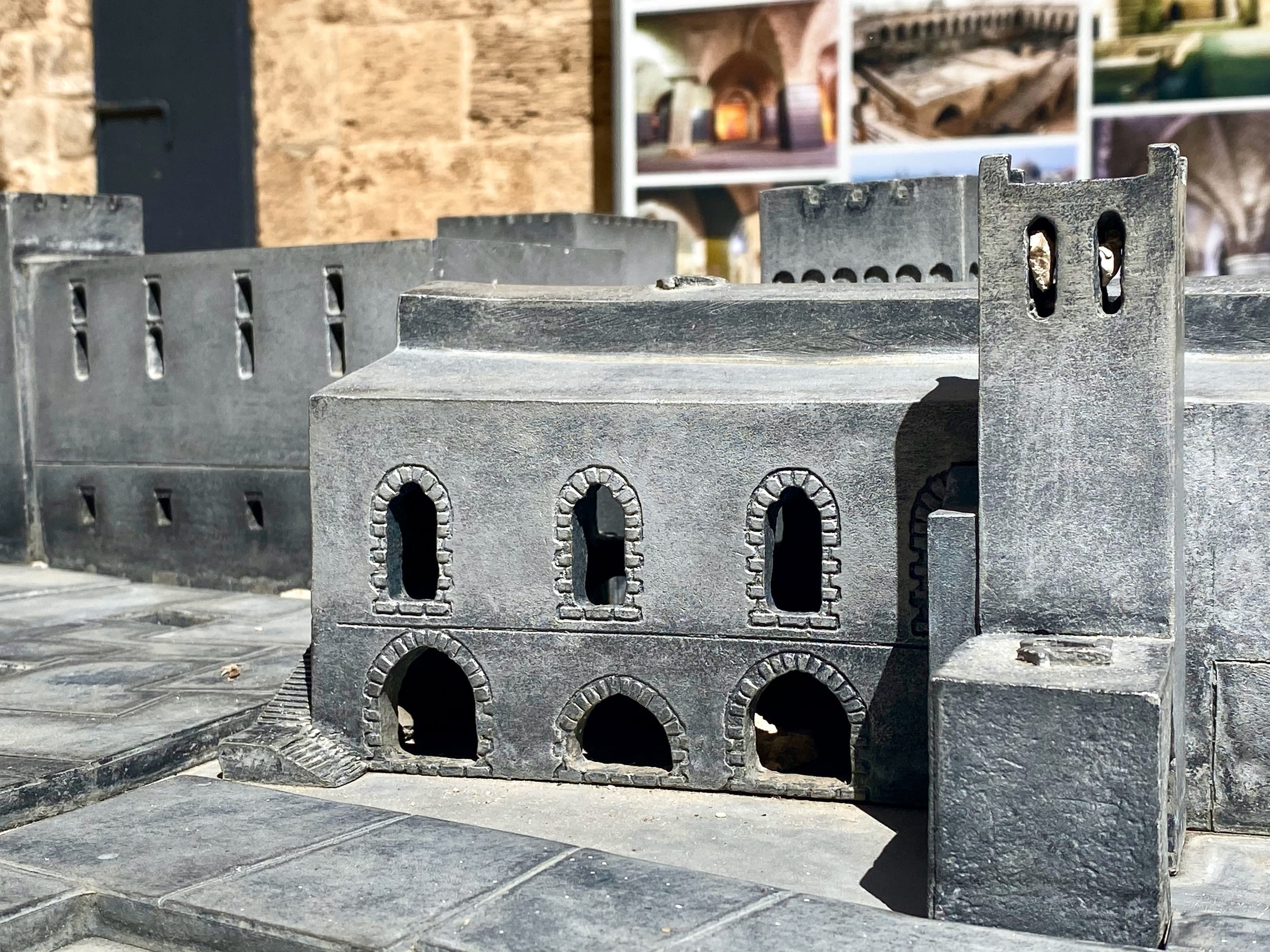
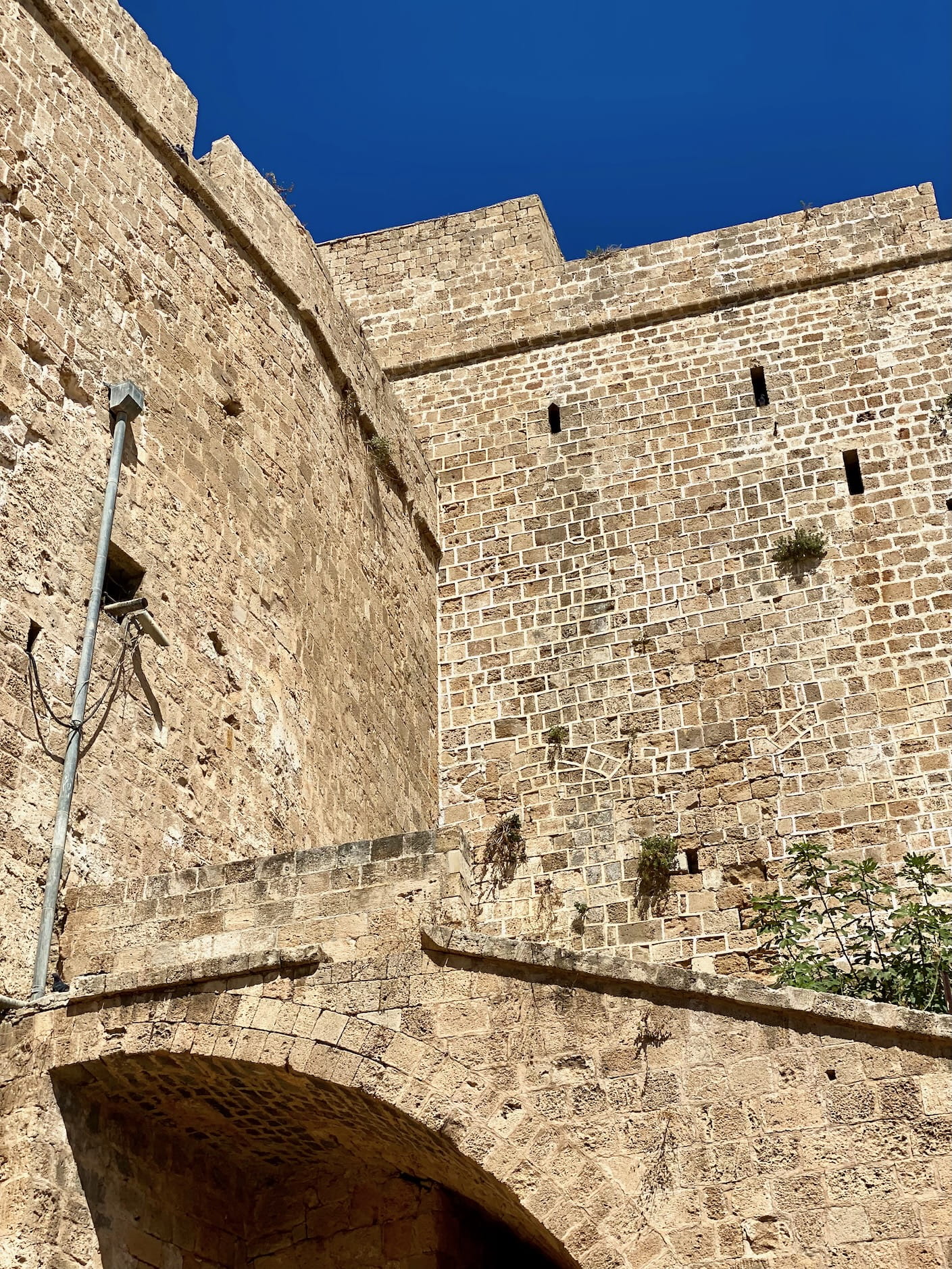
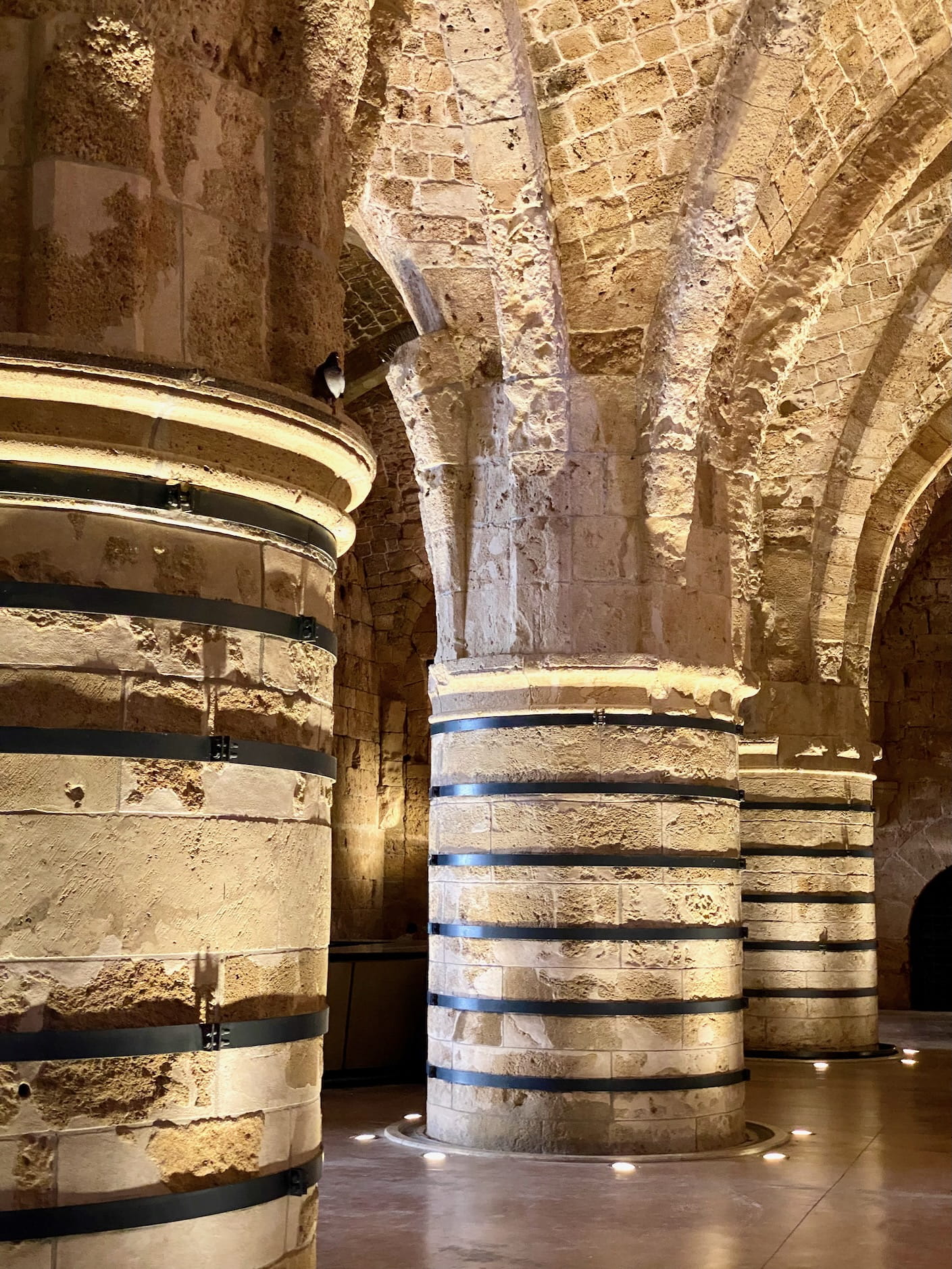
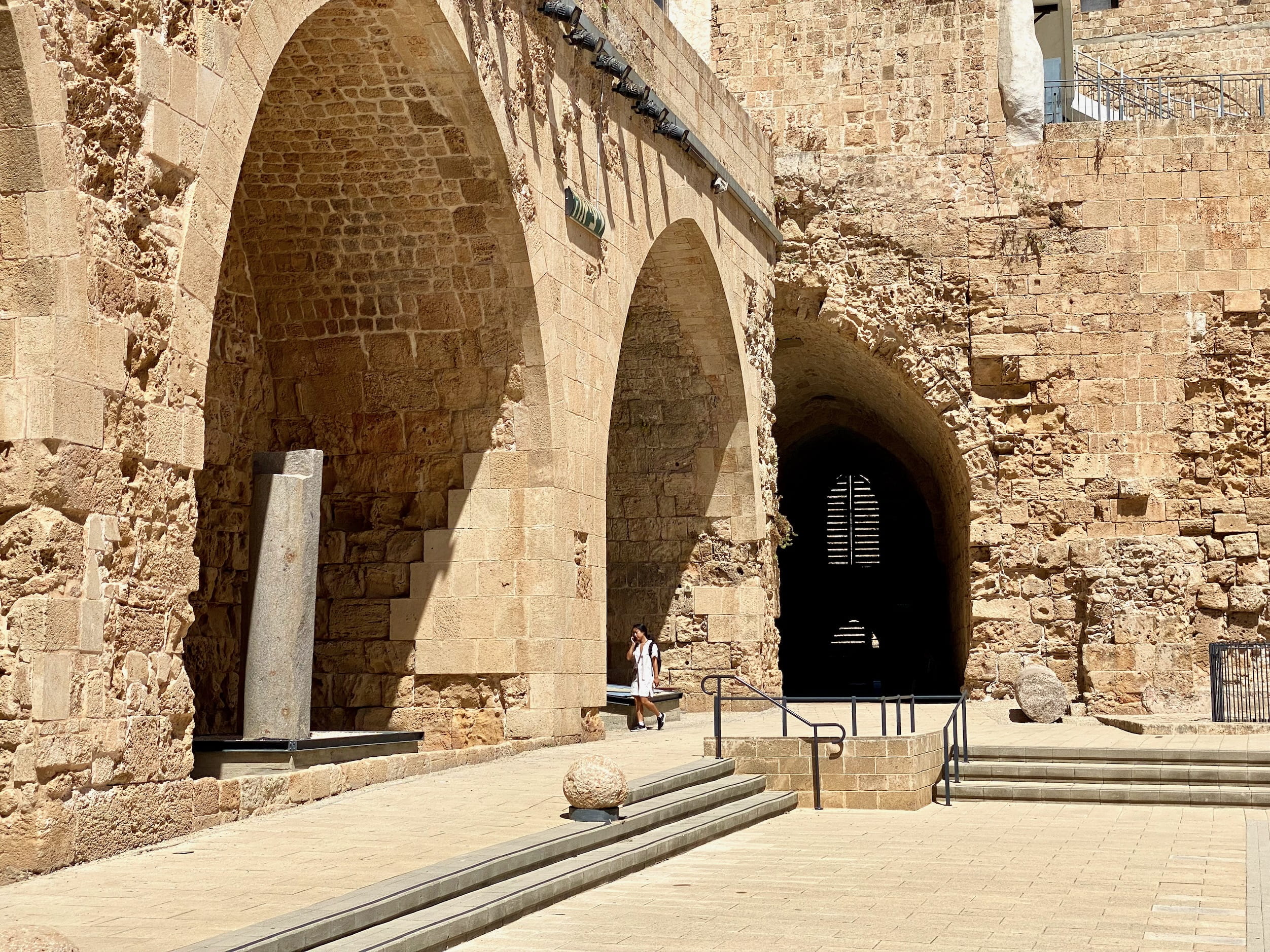
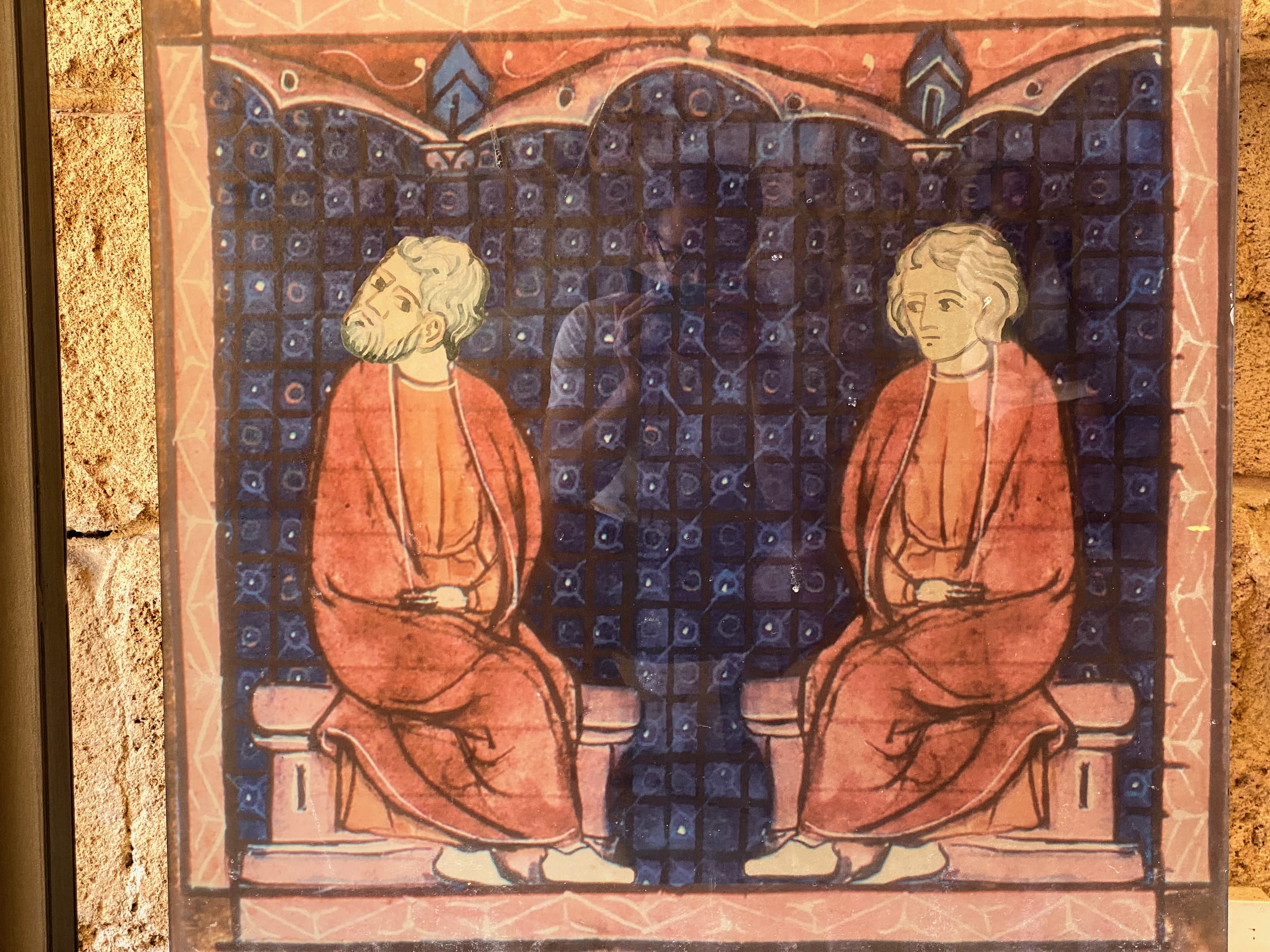
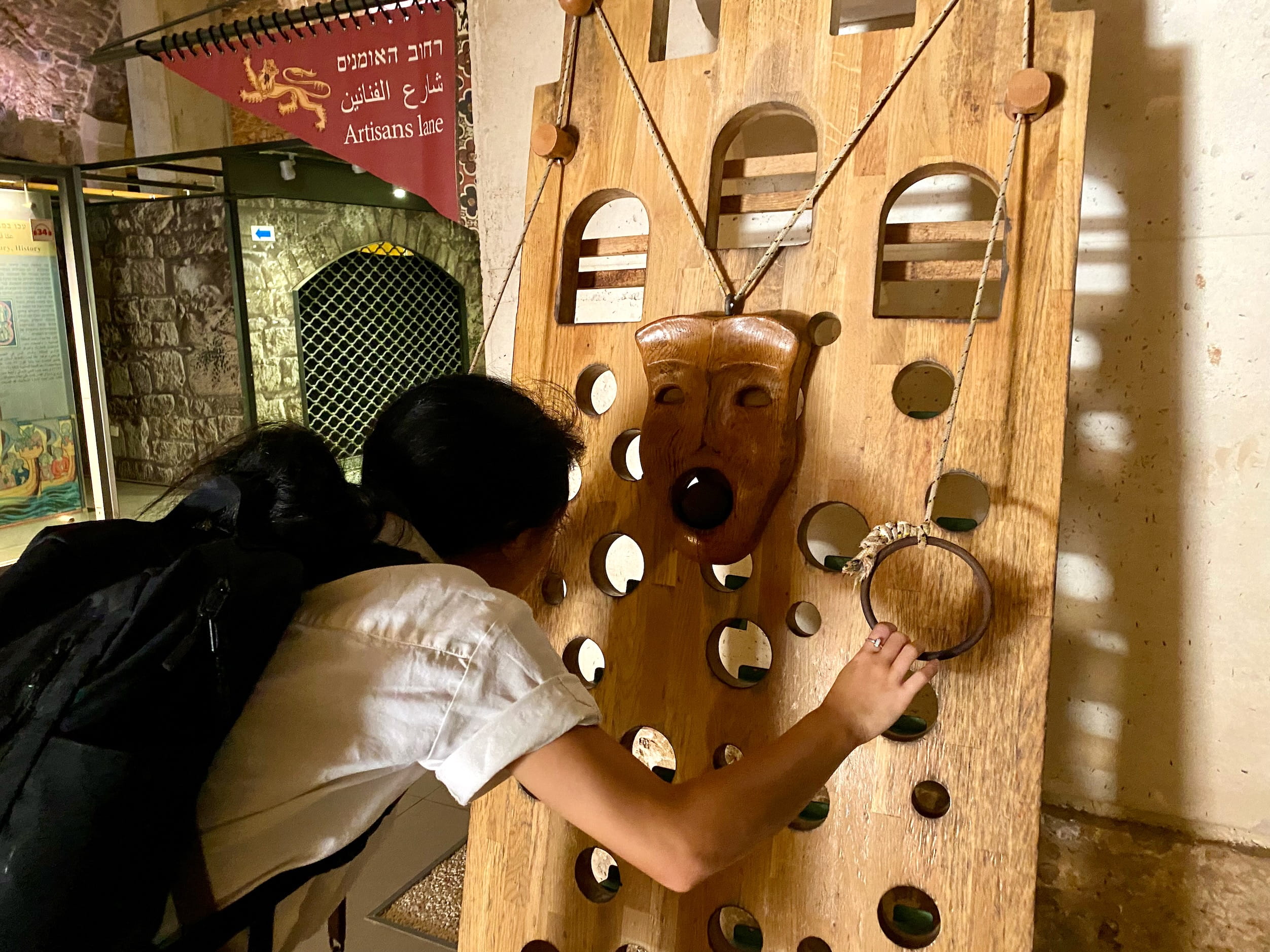
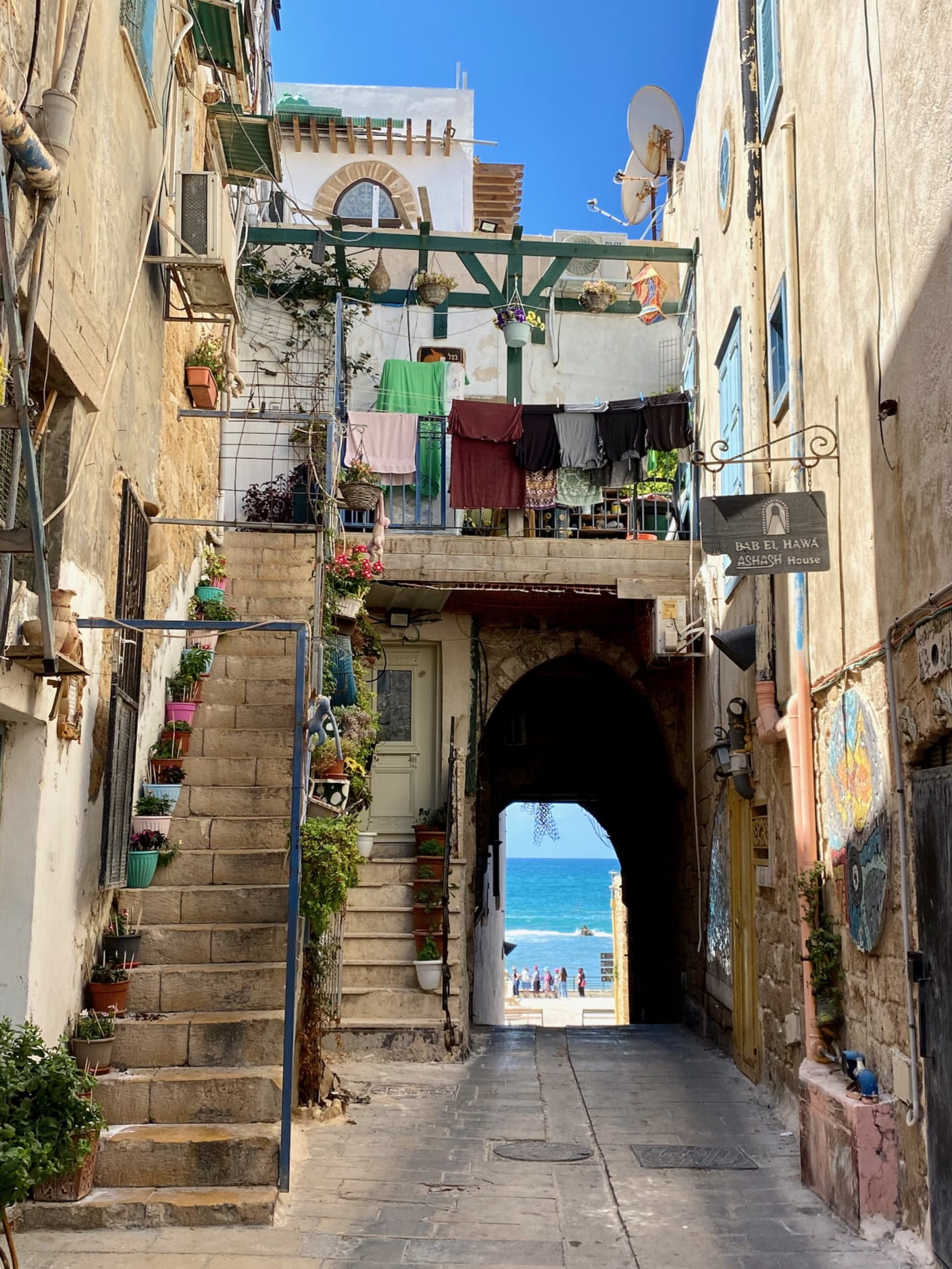
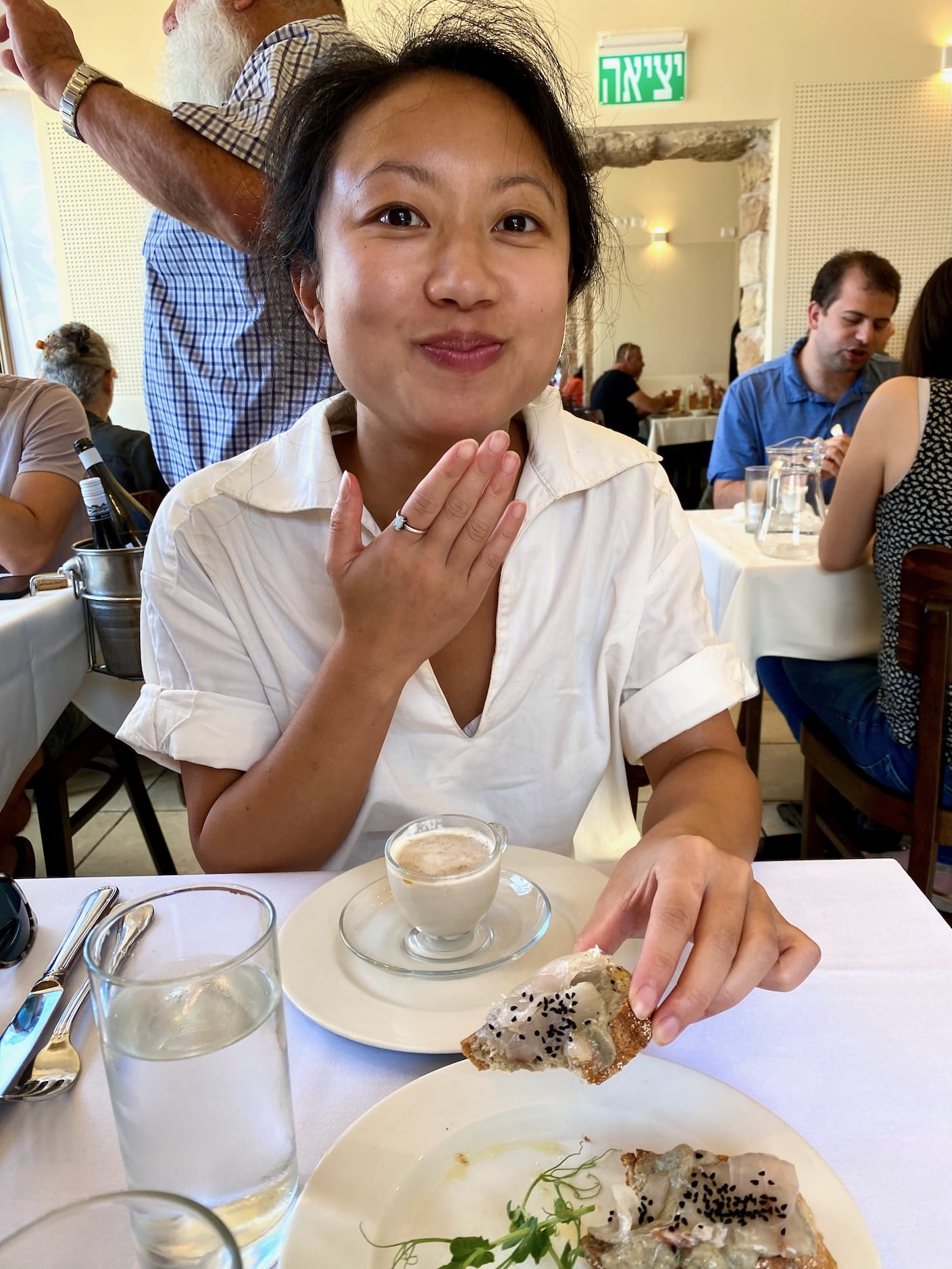
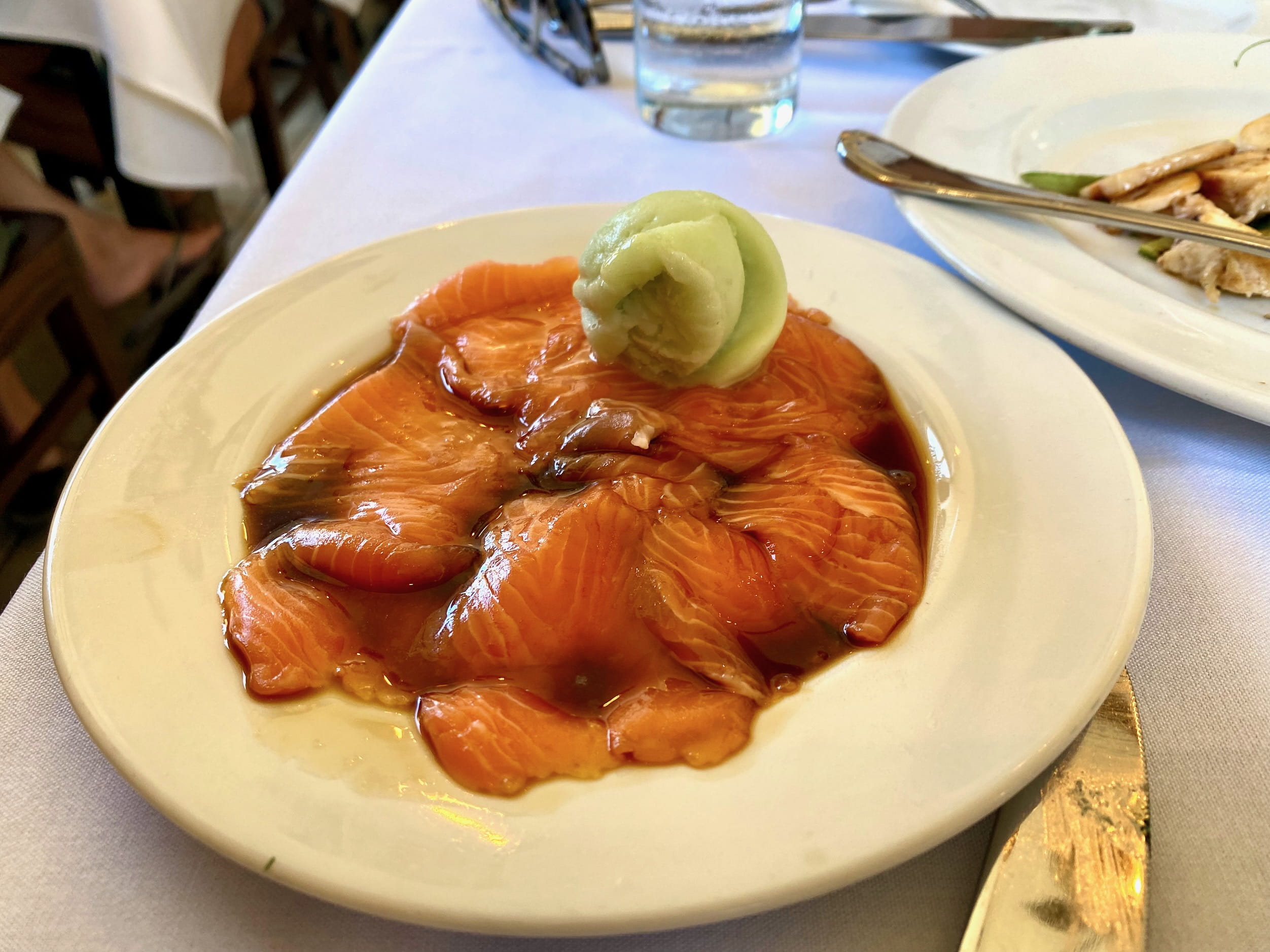
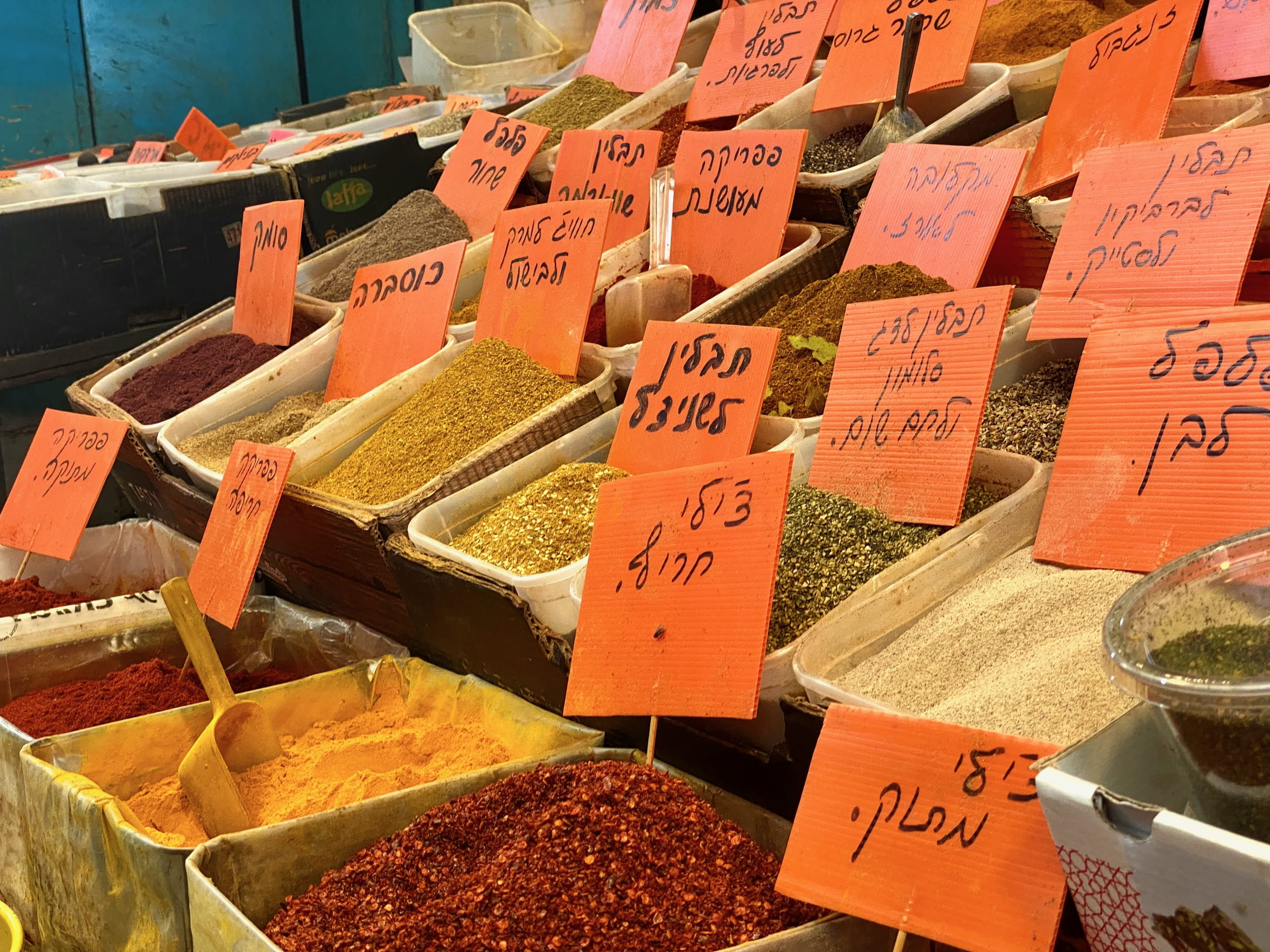
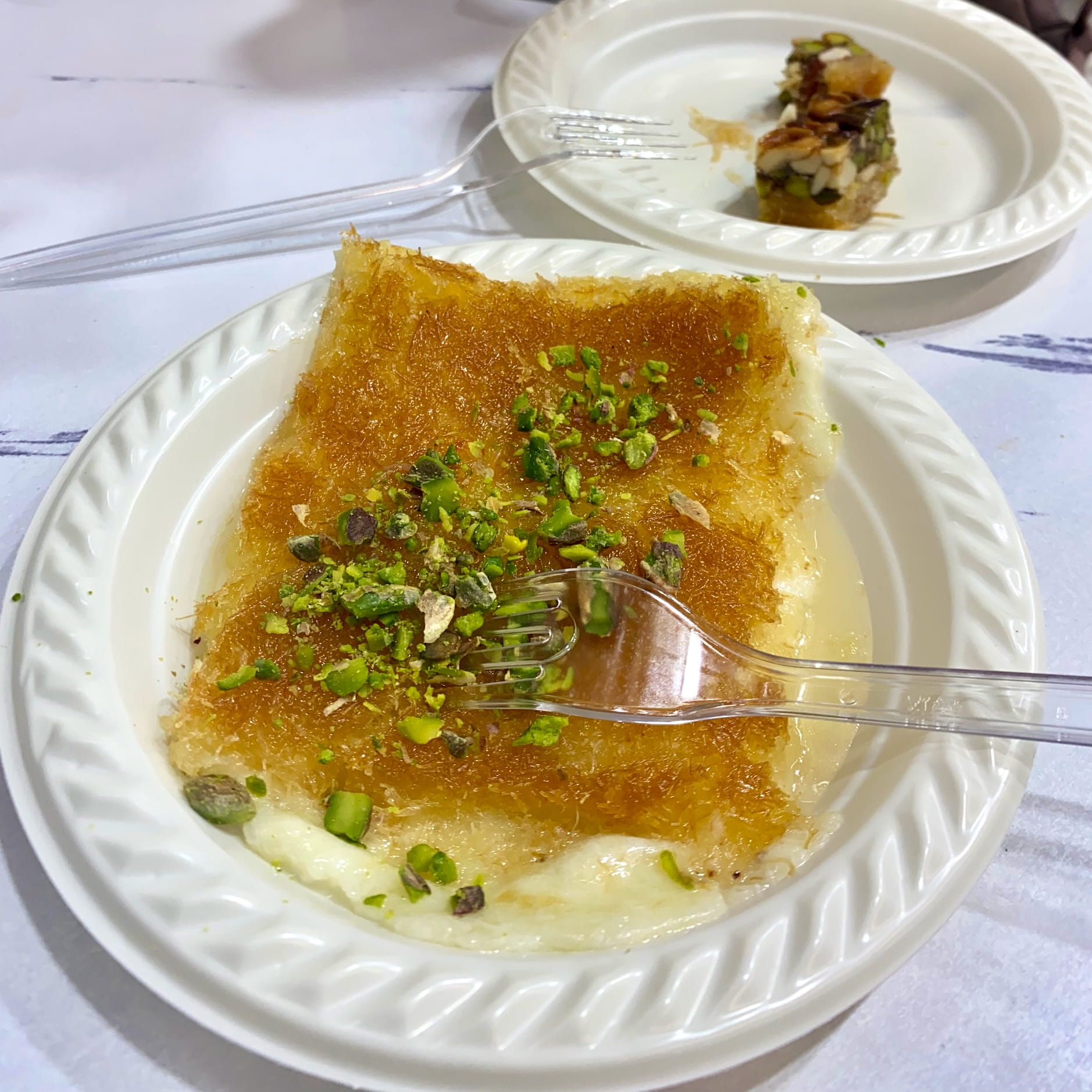
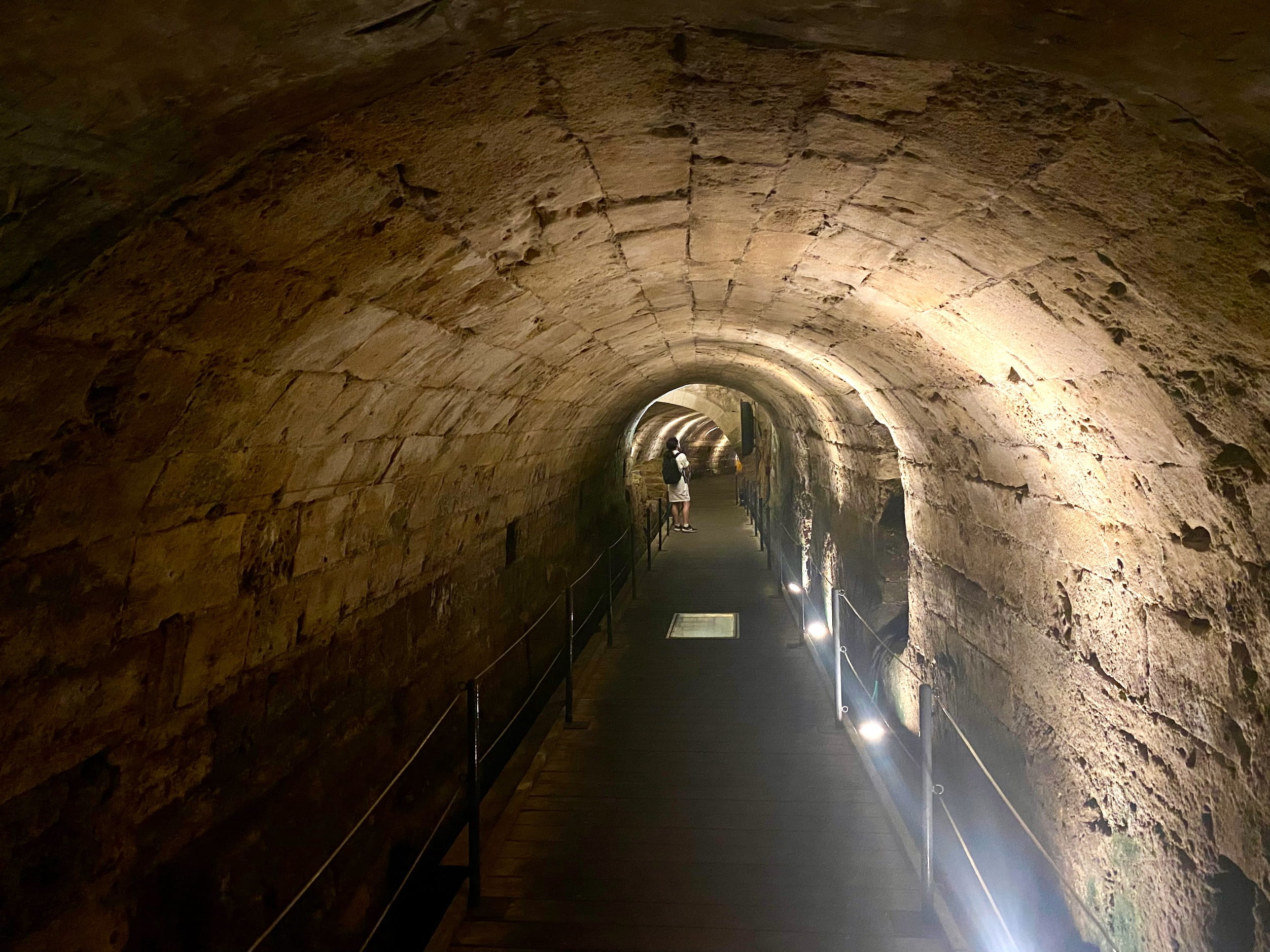
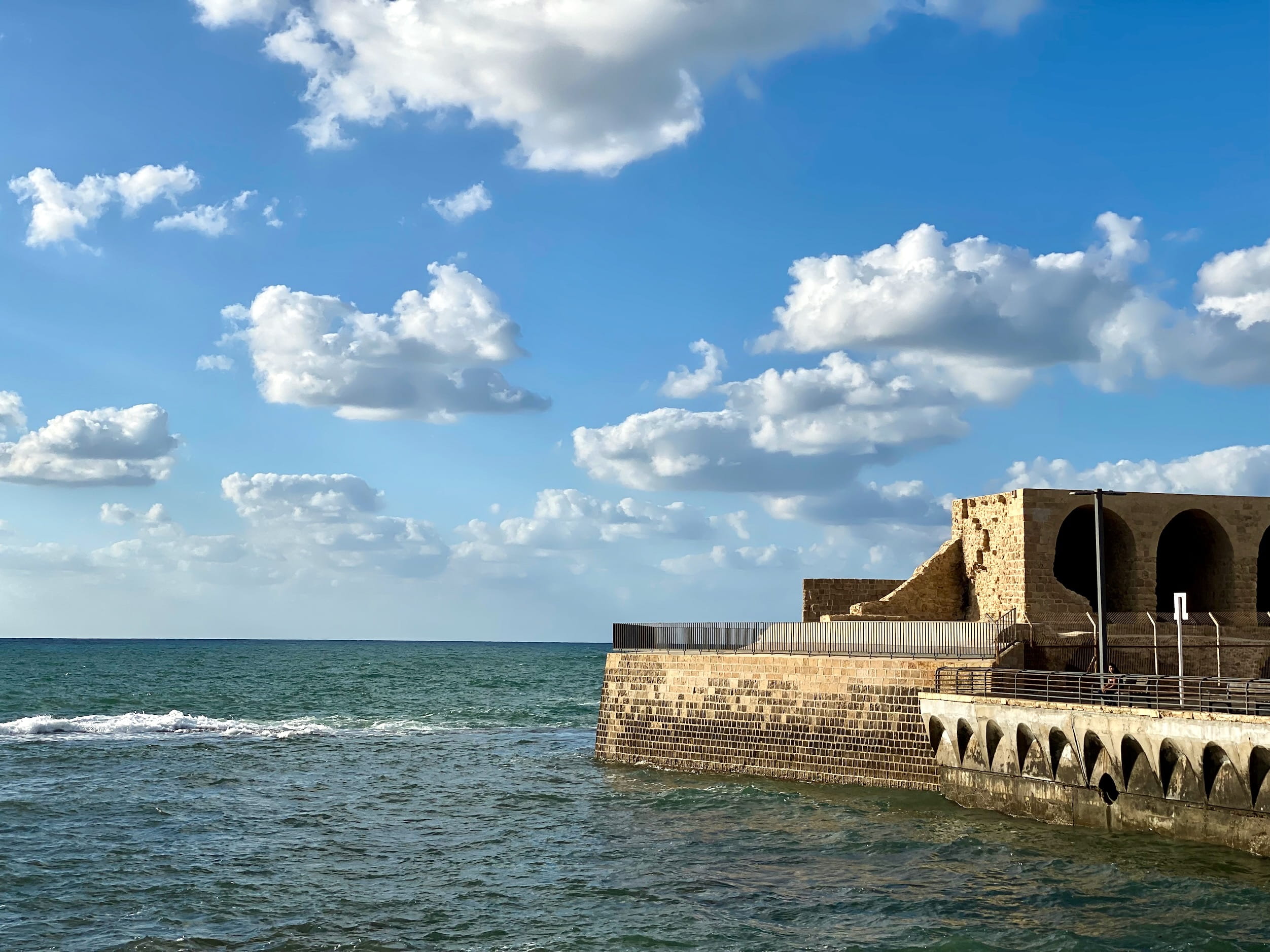
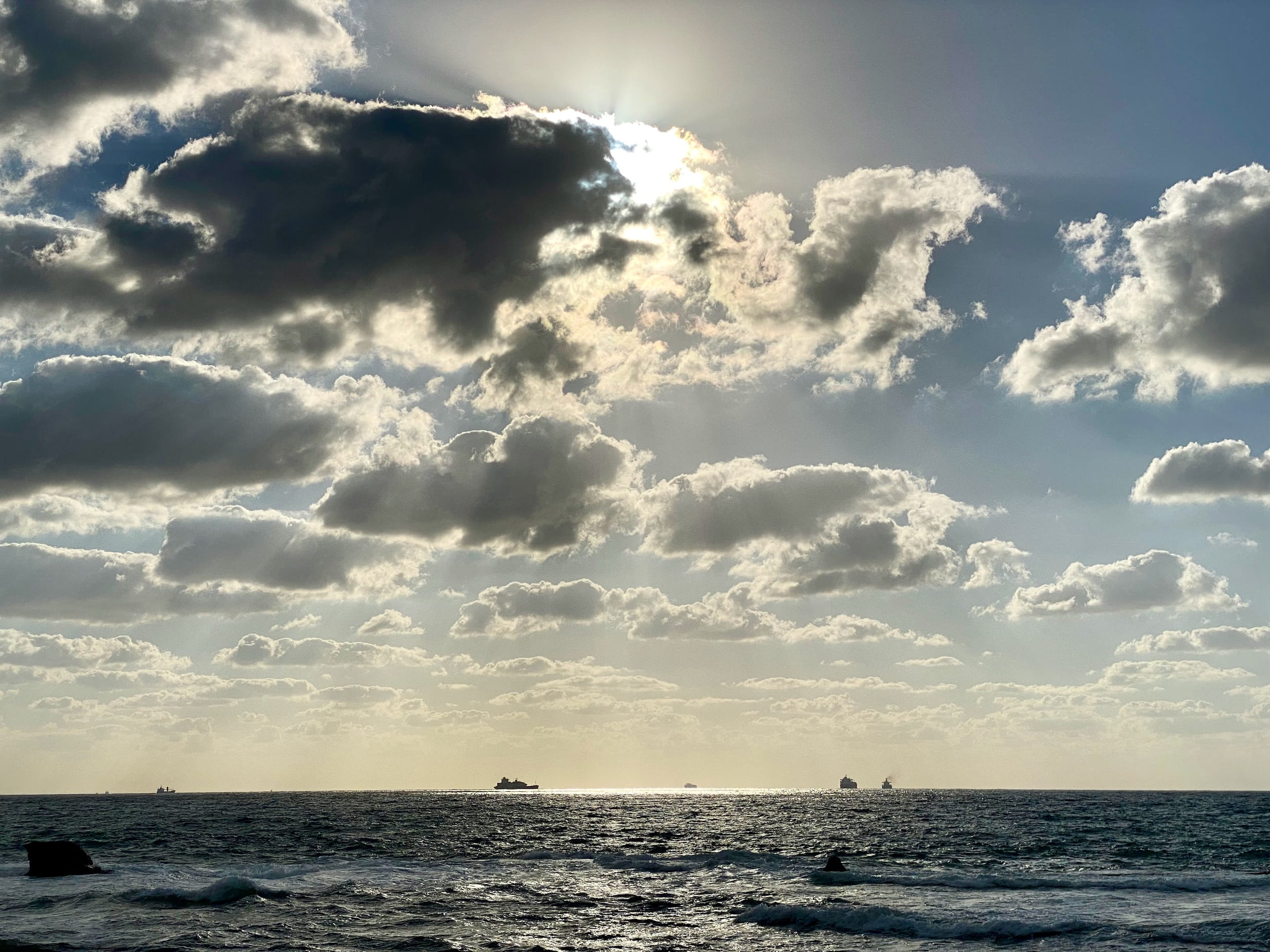
You may have spotted Uri Yirmias (AKA Uri Buri) standing behind Julie, just before coming over to say hello, as we ate as his place. Great tip from Somebody Feed Phil,12 the set menu is absolutely worth the splurge if you’re in town. Though Phil would later lead us astray in Tel Aviv. More on that later.
Re: the high production value of all the historical-sites-turned-museums, this included, e.g., filling the old bathhouse with statues to show you what it was like. But most prominent were the historical reenactment videos. They were everywhere. All across the excavated Crusader halls, in the bathhouse, even in the old synagogue. Each one was a little corny, but they could have done way worse. And taken together, they made Akko come alive with charm.
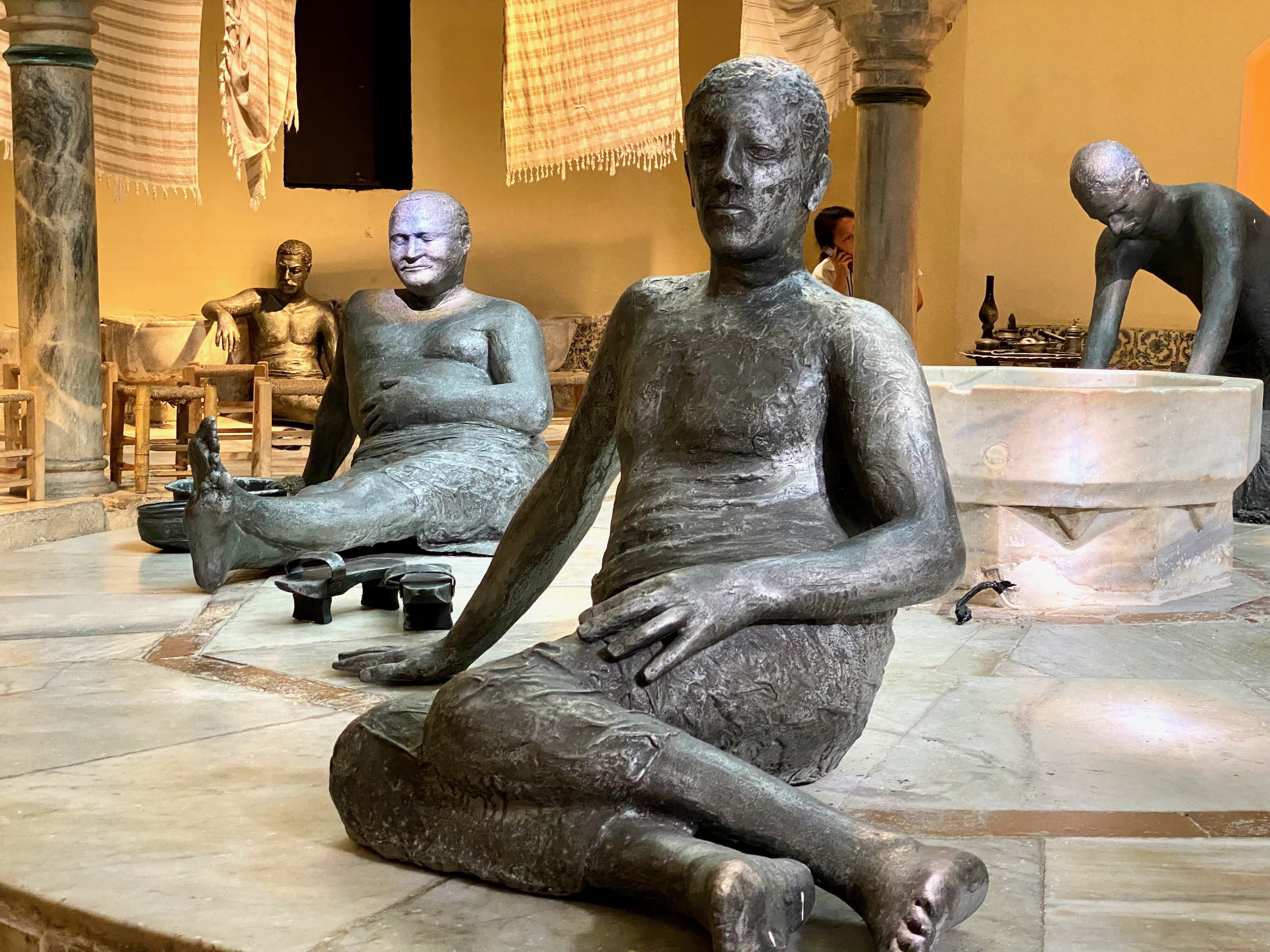
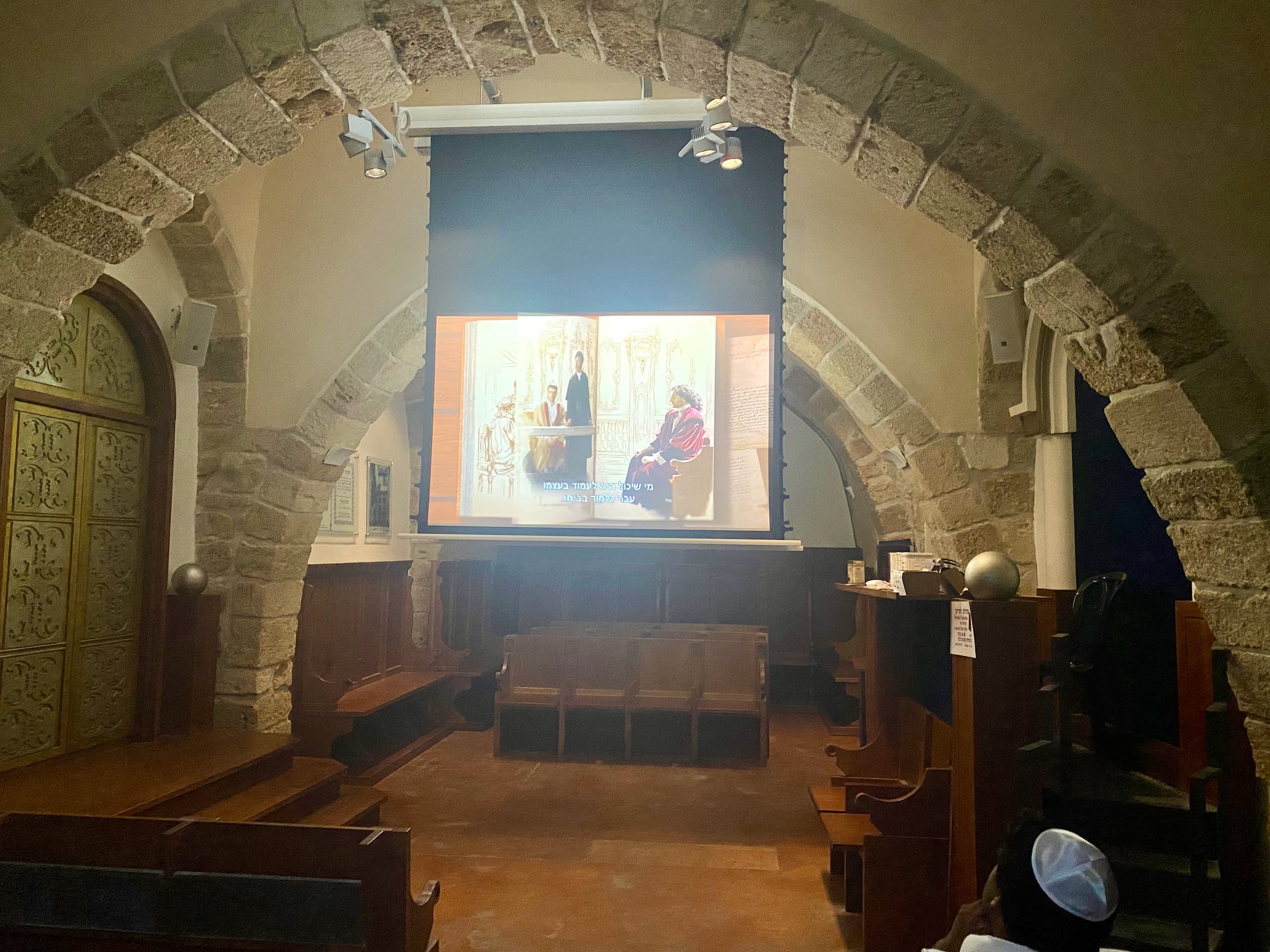
And finally, more of America Abroad:
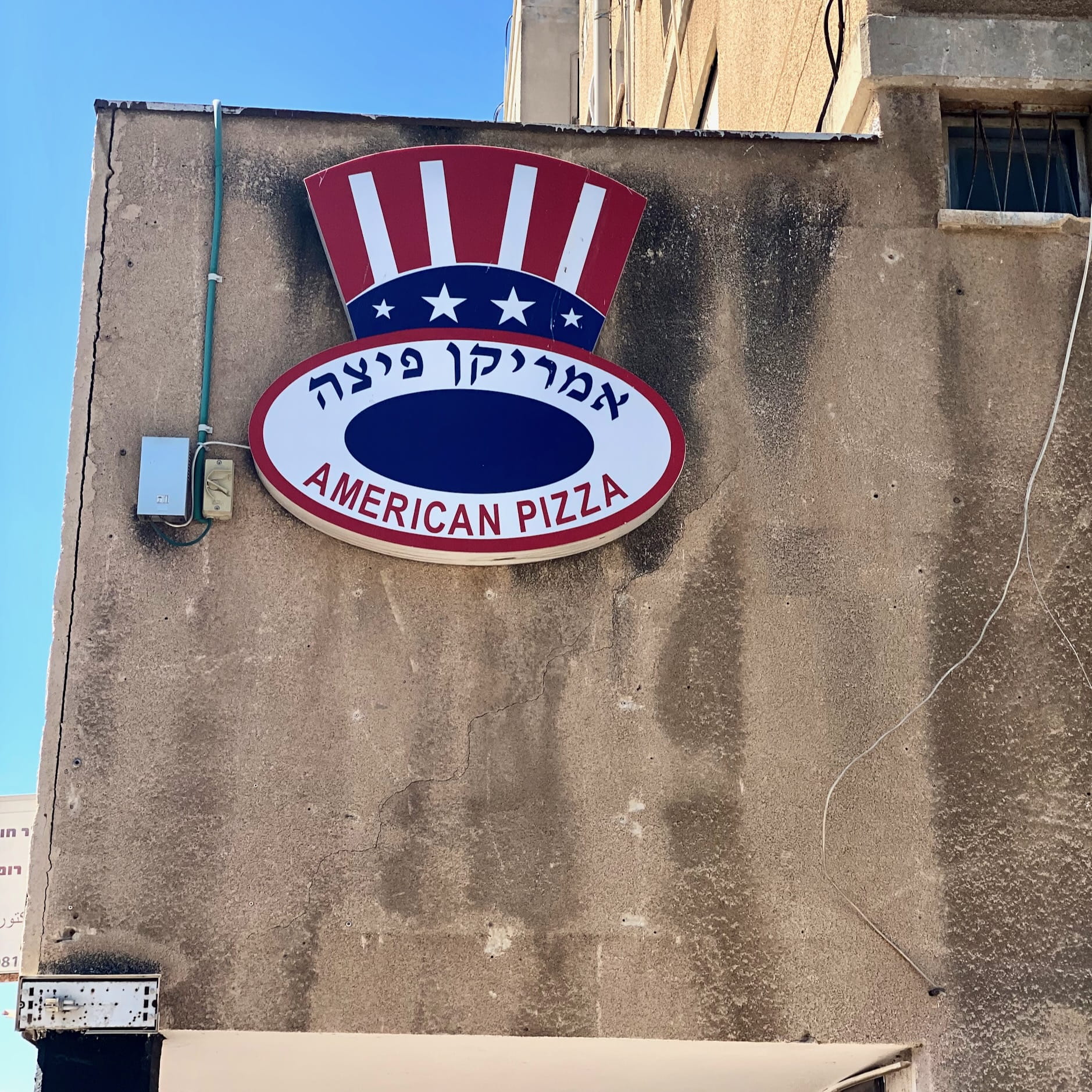
🚌 Haifa → Tel Aviv
Getting from Haifa to Tel Aviv was such a peculiar journey I have to devote a few words to it here.
So far, we’d been taking trains everywhere: from the airport (in Tel Aviv), to Jerusalem, then through Tel Aviv again to Haifa, then to Akko and back. They were excellent.
But I can’t find any train routes for the day we go from Haifa to Tel Aviv. It’s not Shabbat. For days, I cannot figure out what is going on. The website has links that supposedly explain why, but they’re all broken. Other pages you land on are only in Hebrew. (Thank god for Google Translate.)
Eventually I figure out the right words for Google to reveal that there is planned maintenance. No trains that day.
We take the bus—which was lovely—and arrive in Tel Aviv at a hilarious bus station. It is like a fever dream. I shall attempt to describe it.
First, there is a guard waving us all through a metal detector that is going off for absolutely everyone.13
Then, we enter a huge, gross, concrete building painted hideous colors. It smells like pee everywhere. Graffiti is rampant.
Almost all escalators are broken. People are lugging their bags up and down them. (Are escalators worse to walk down than normal stairs? They seem to be, but I can’t tell if it’s just you’re imagining them helping you and they’re not.)
It’s midday on Friday, and all the shops are closed. (We heard Tel Aviv wasn’t as affected by Shabbat. Maybe it is?)
From the ground level there is EDM inexplicably blasting, flooding up the open central column. Why? Looking down, instead of a rave there is some kind of huge used clothes market, heaps of cotton piled all around janky tables. Plus a few fruit stands, because why not. It’s all run and patroned exclusively by Asian folks.
It is nearly impossible to find an exit. We have arrived on something like floor seven. We eventually see it’s on floor four. After finally getting to the fourth floor, we can’t find it. We wander around. More weird stalls with knockoffs and cheap goods. Keep in mind this is apparently the central bus station.
Finally, we emerge onto the street. The whole thing feels like it couldn’t have actually happened. Did we just imagine it?14
I think part of the reason this whole experience struck me as funny is when you hear about Tel Aviv on the news, it’s all about Israel’s super high-tech ultra modern city. Reminds me of going to Tokyo, which is also advertised as a modern high tech city, and then you get there and it’s all fax machines and digital Cameras you haven’t seen in 10 years.
Tel Aviv
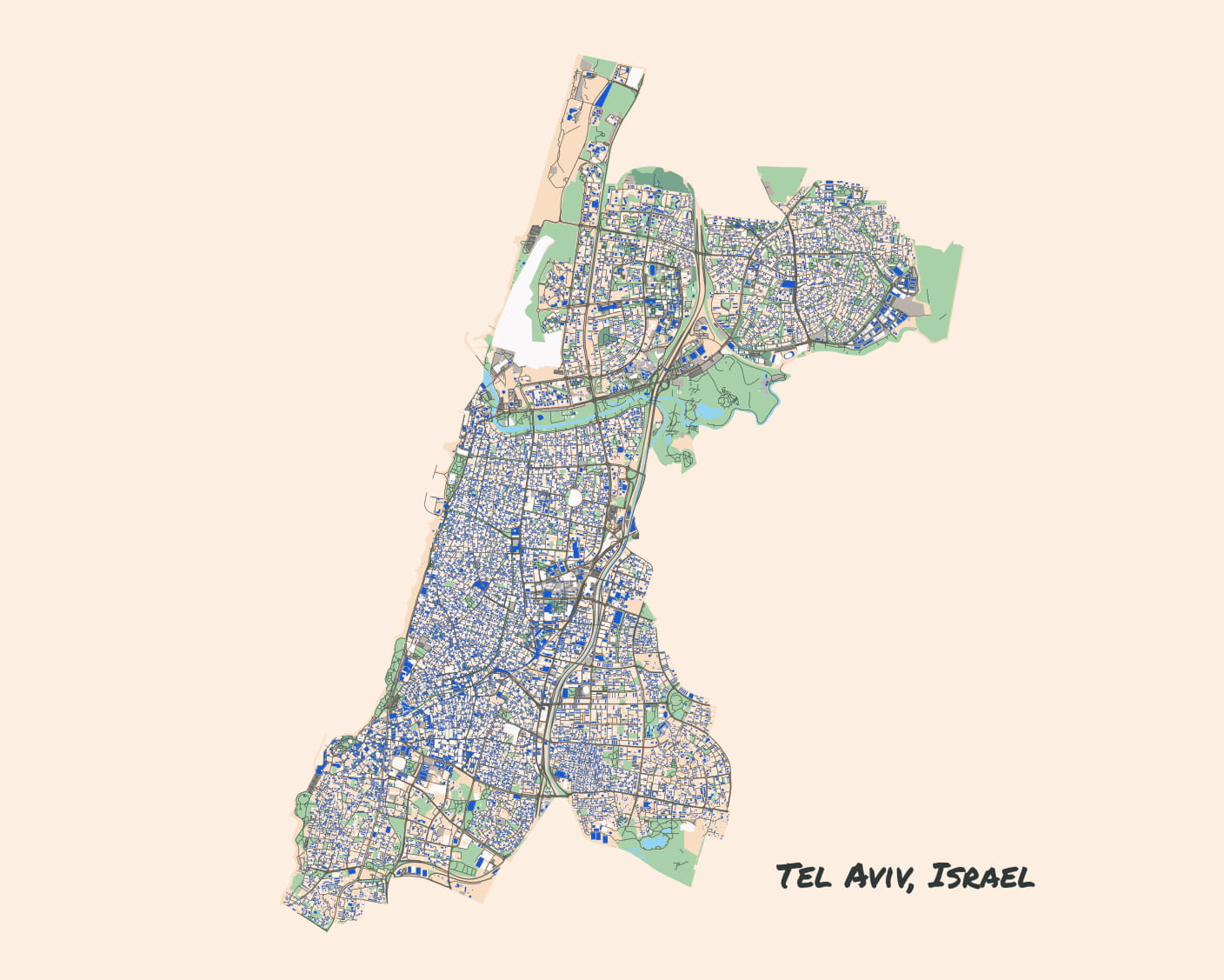
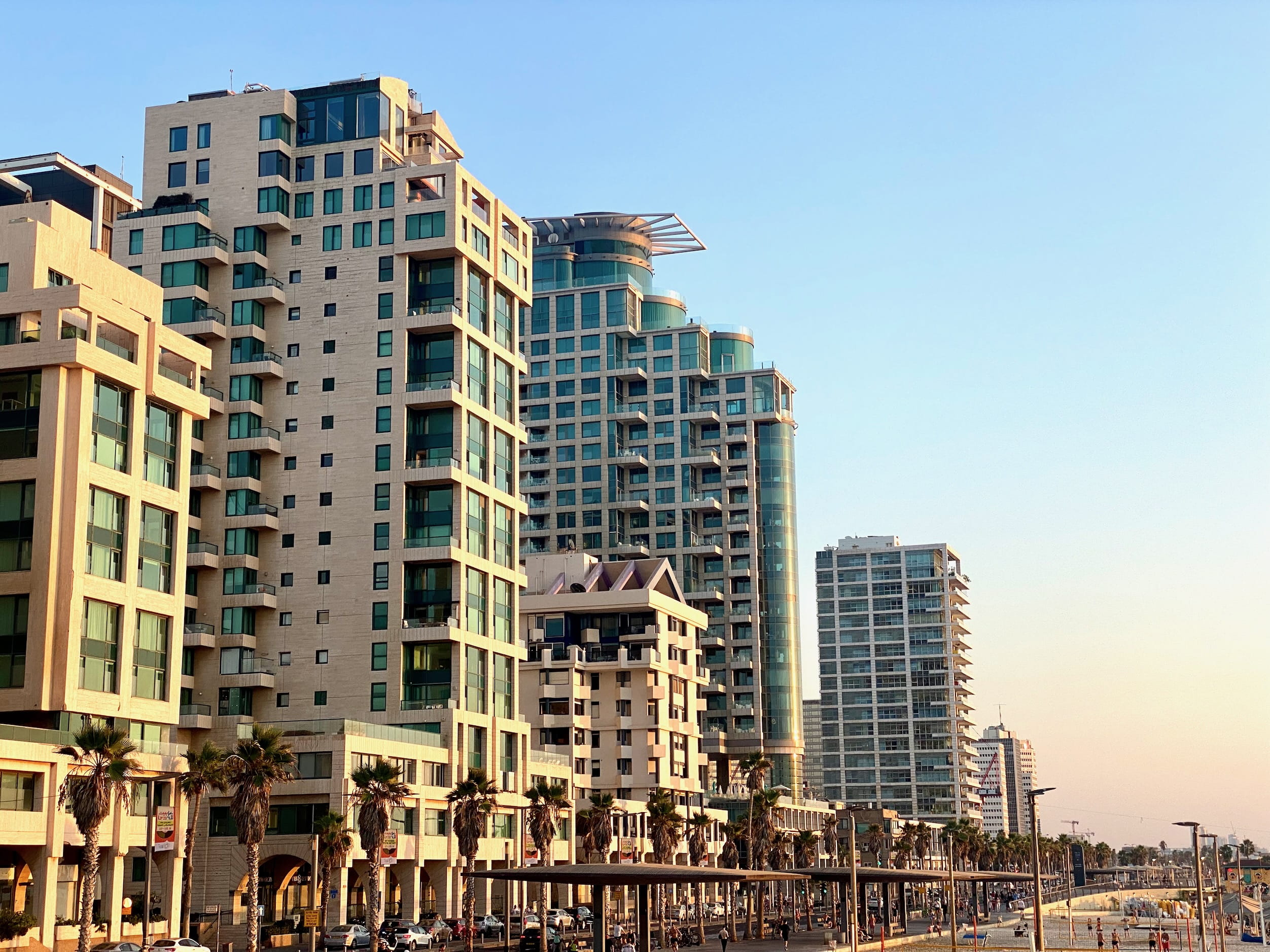
Tel Aviv coast—serious beach and fitness enthusiasts. Talk about cultural whiplash vs Jerusalem.
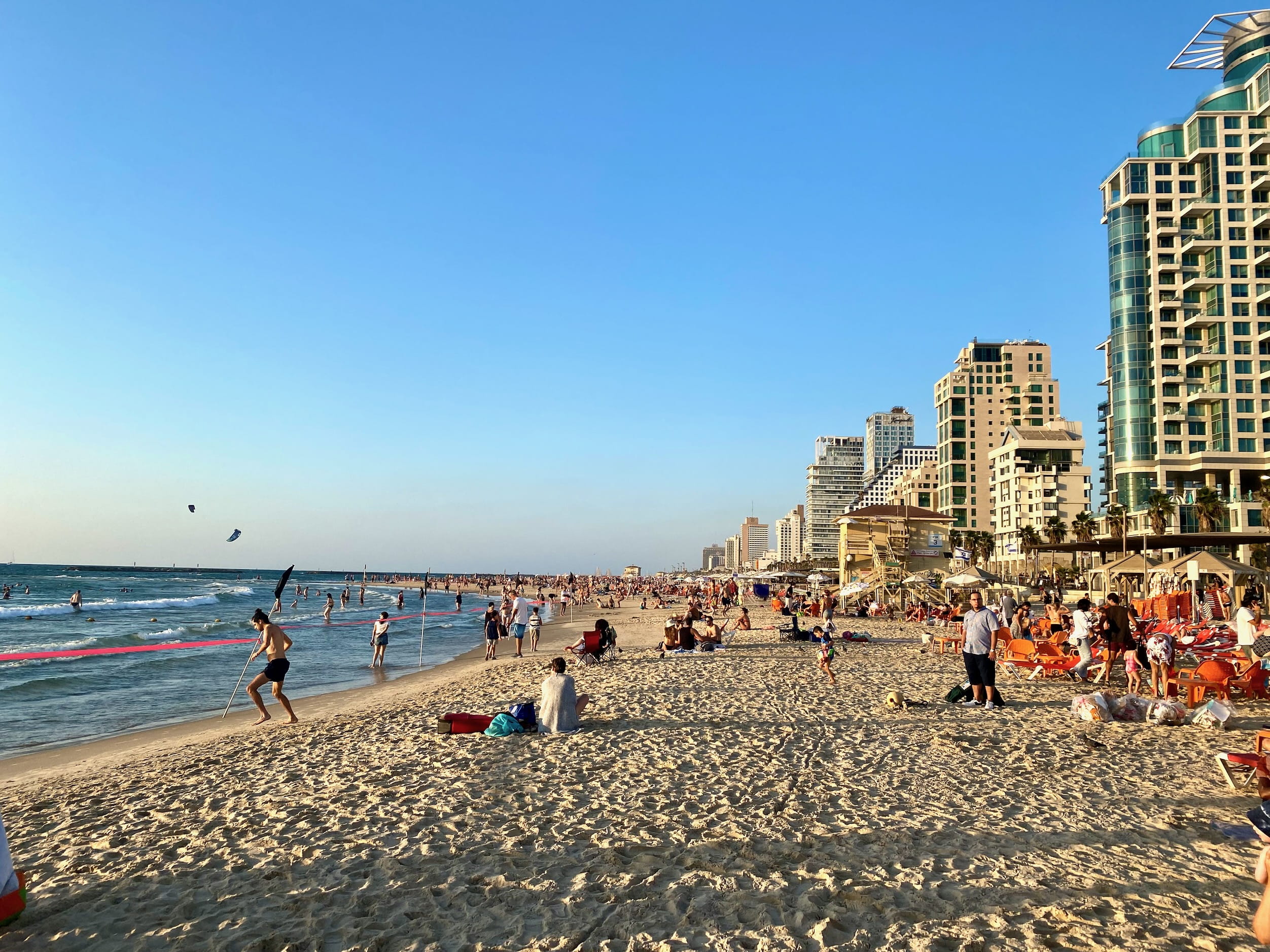
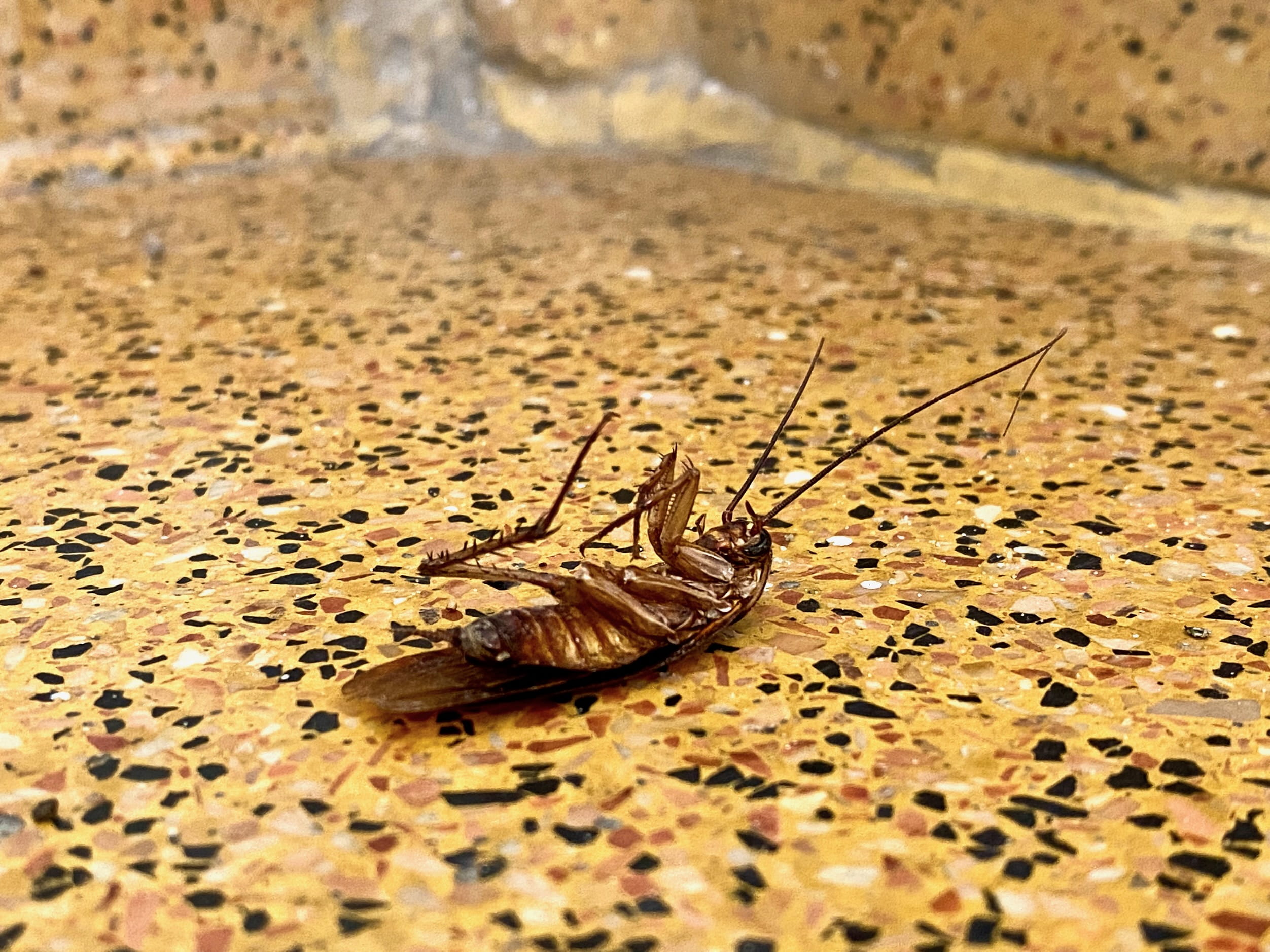
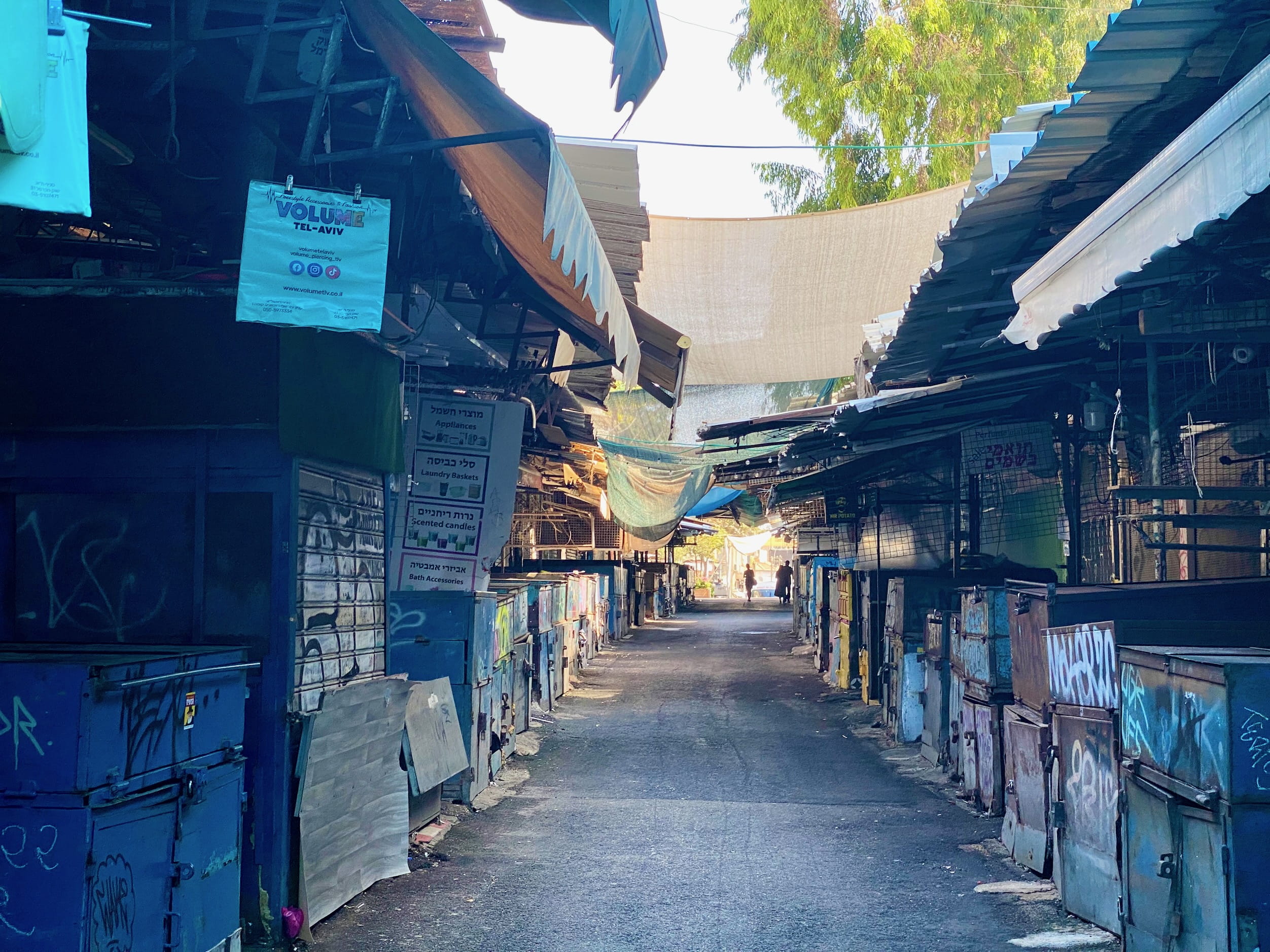
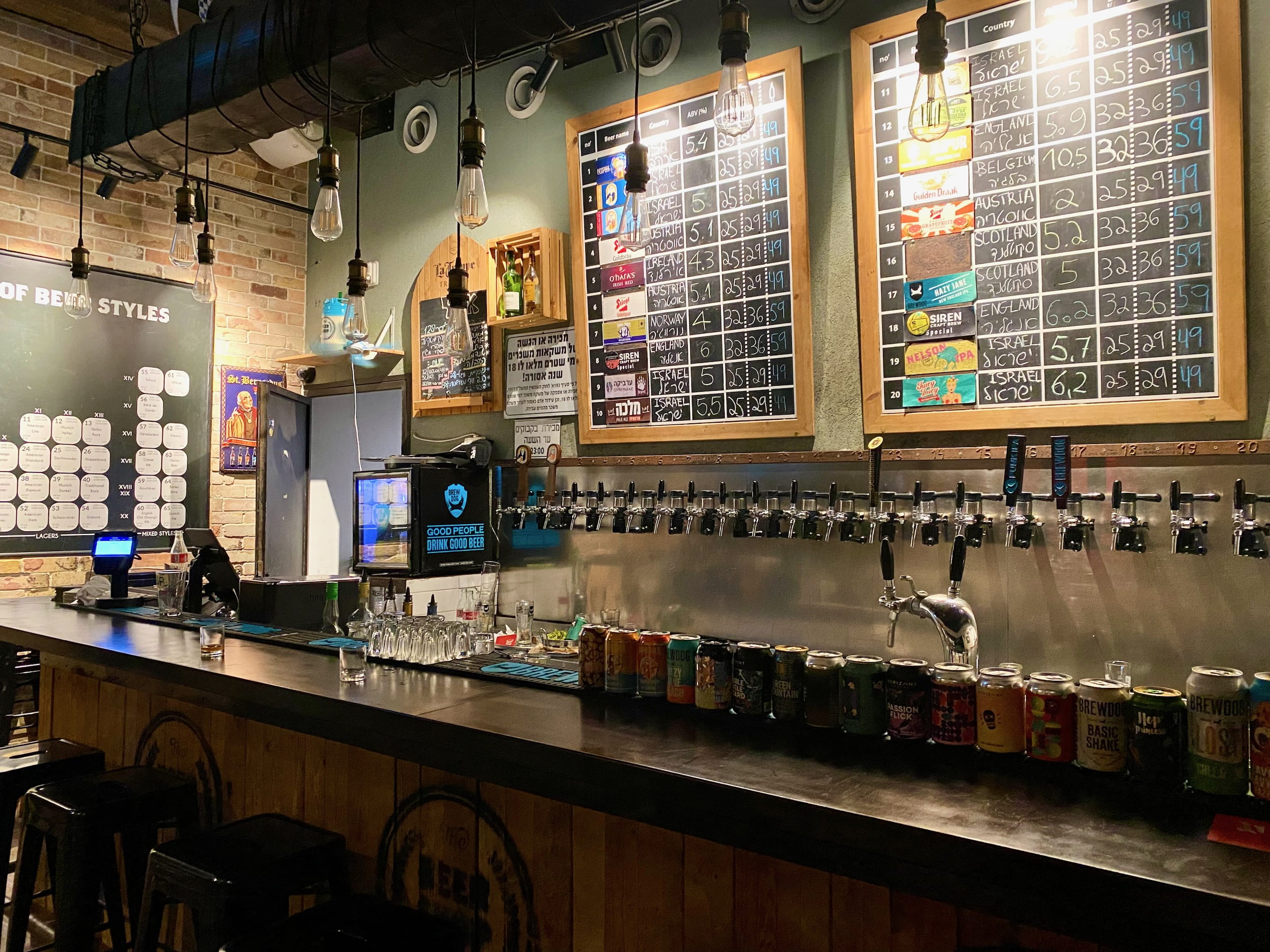
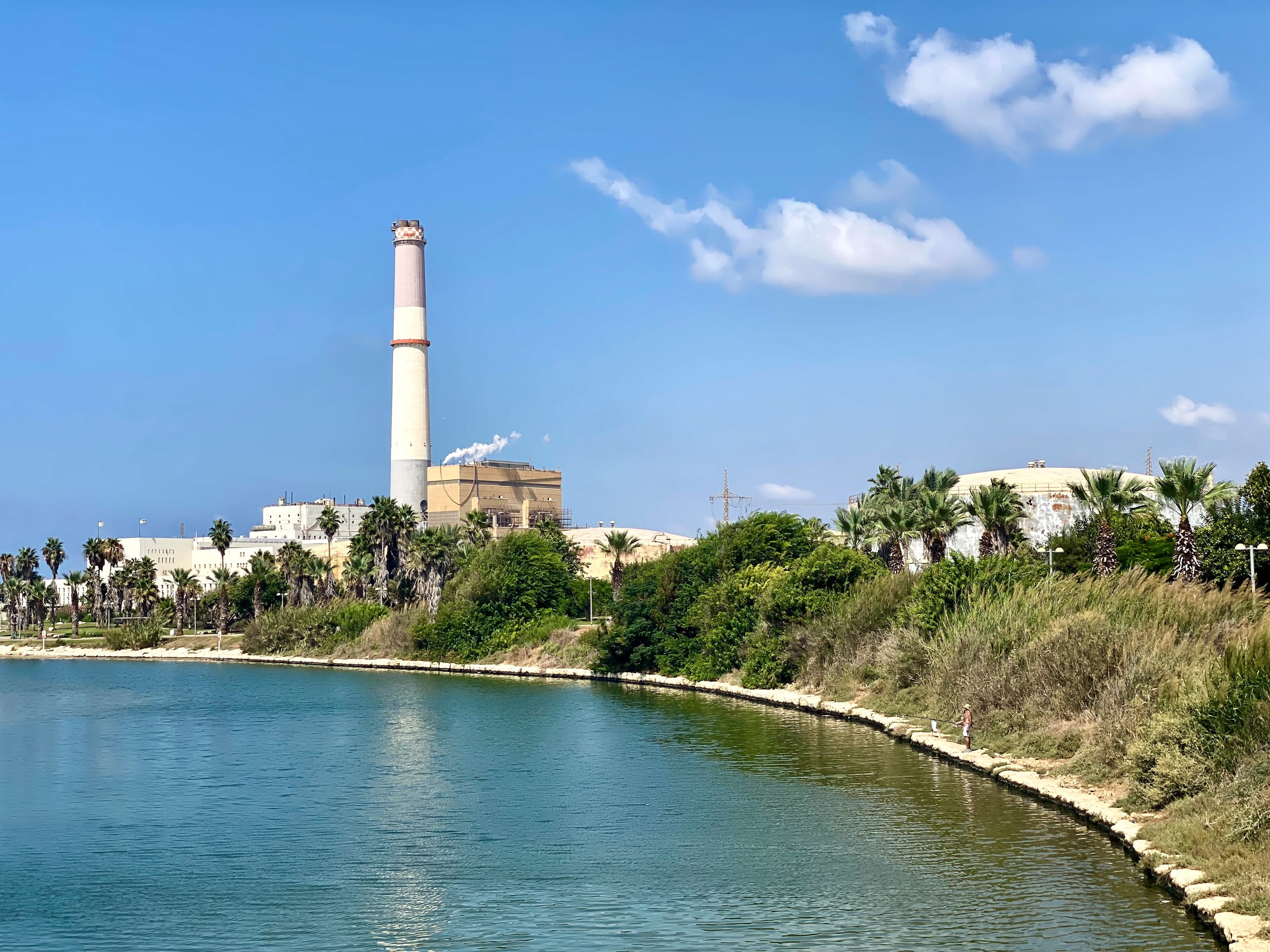

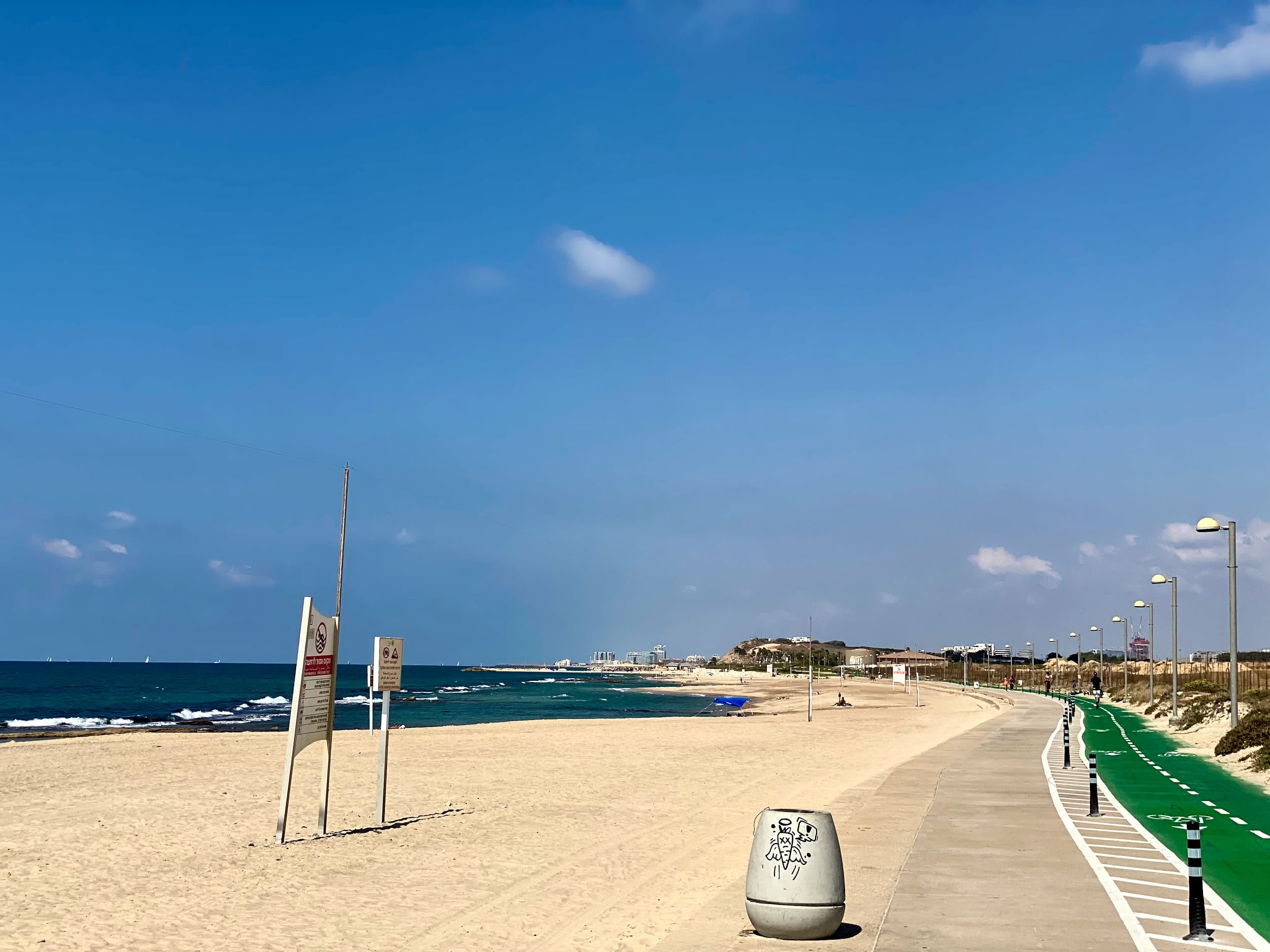
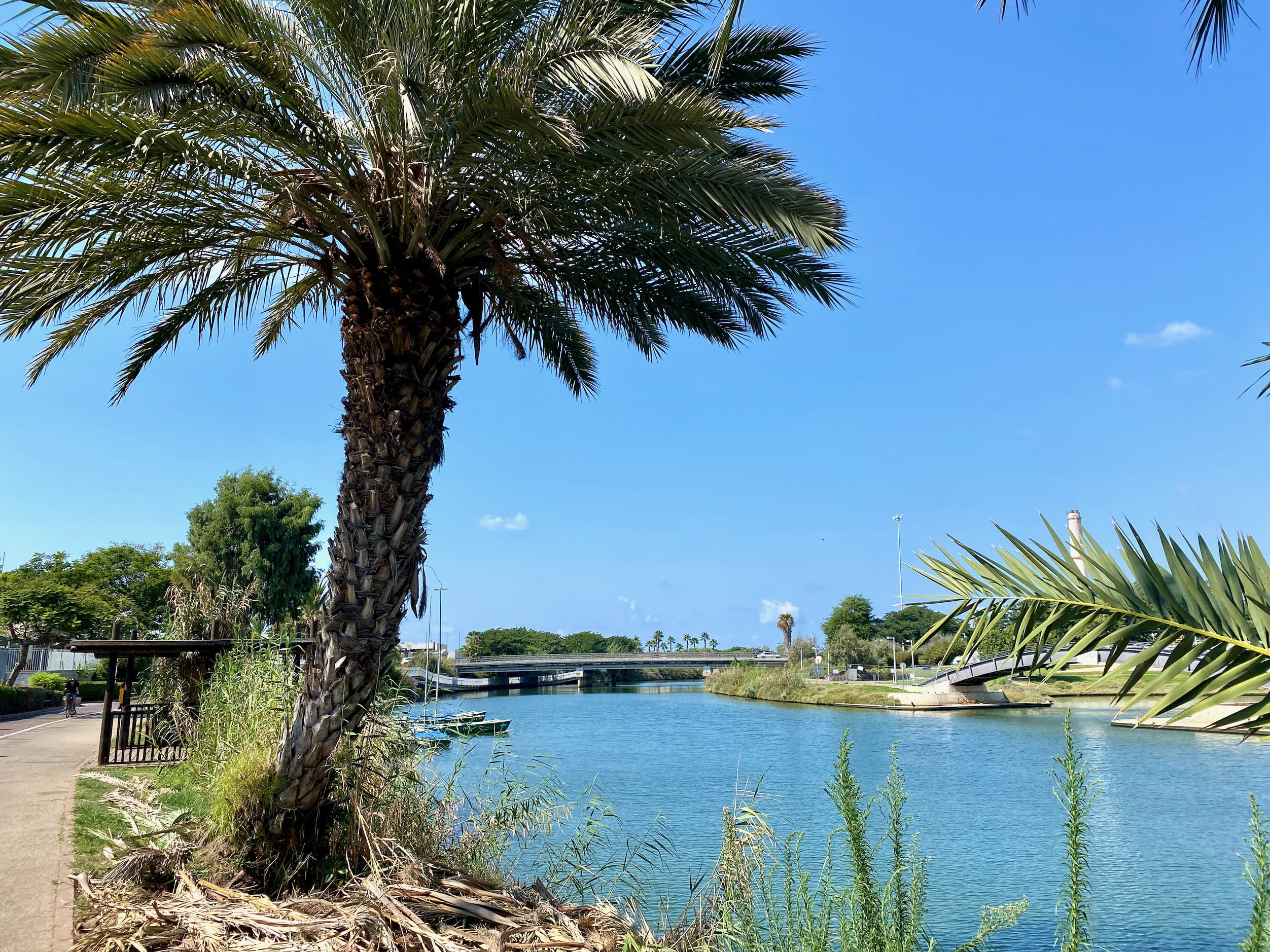
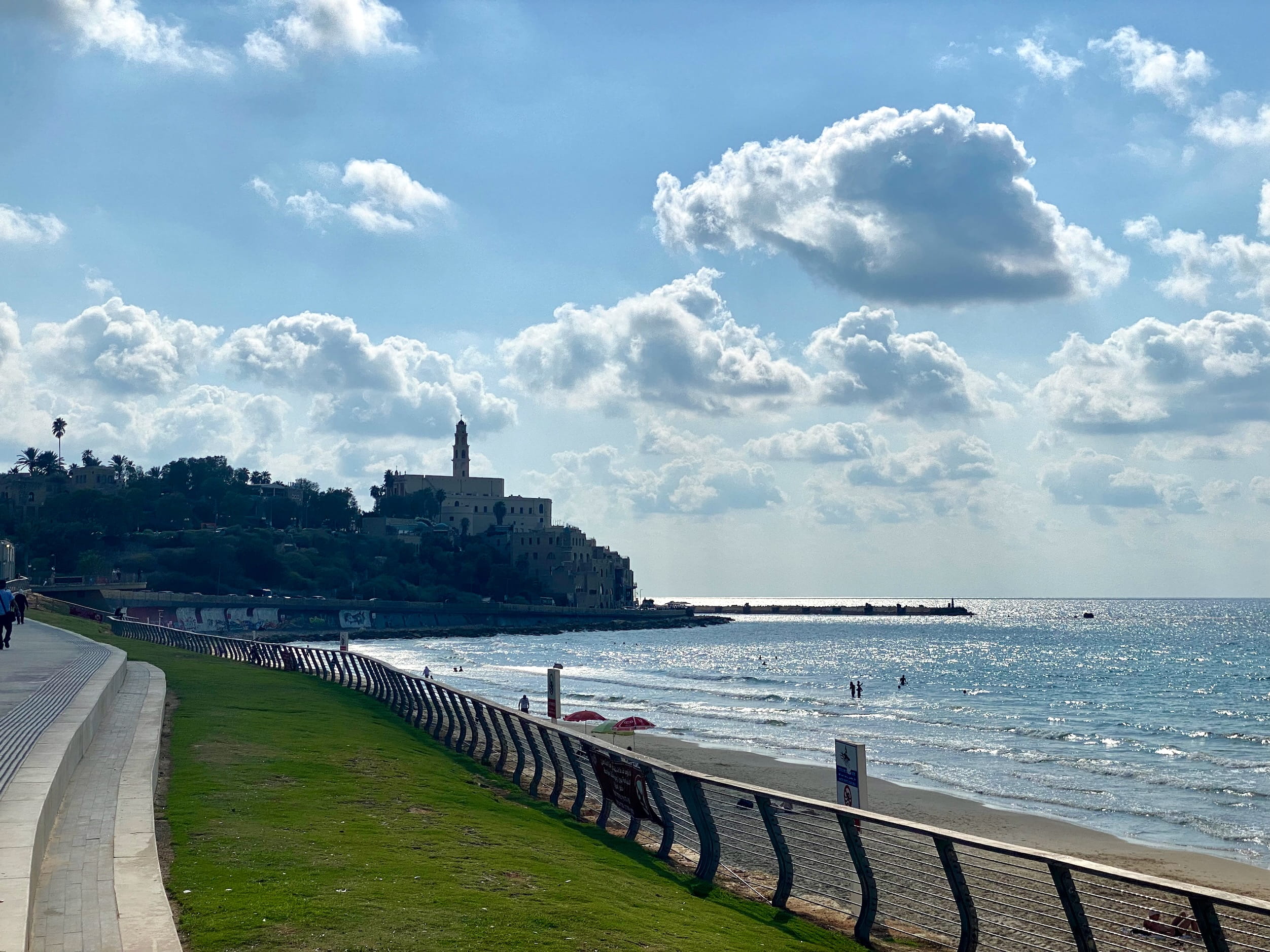
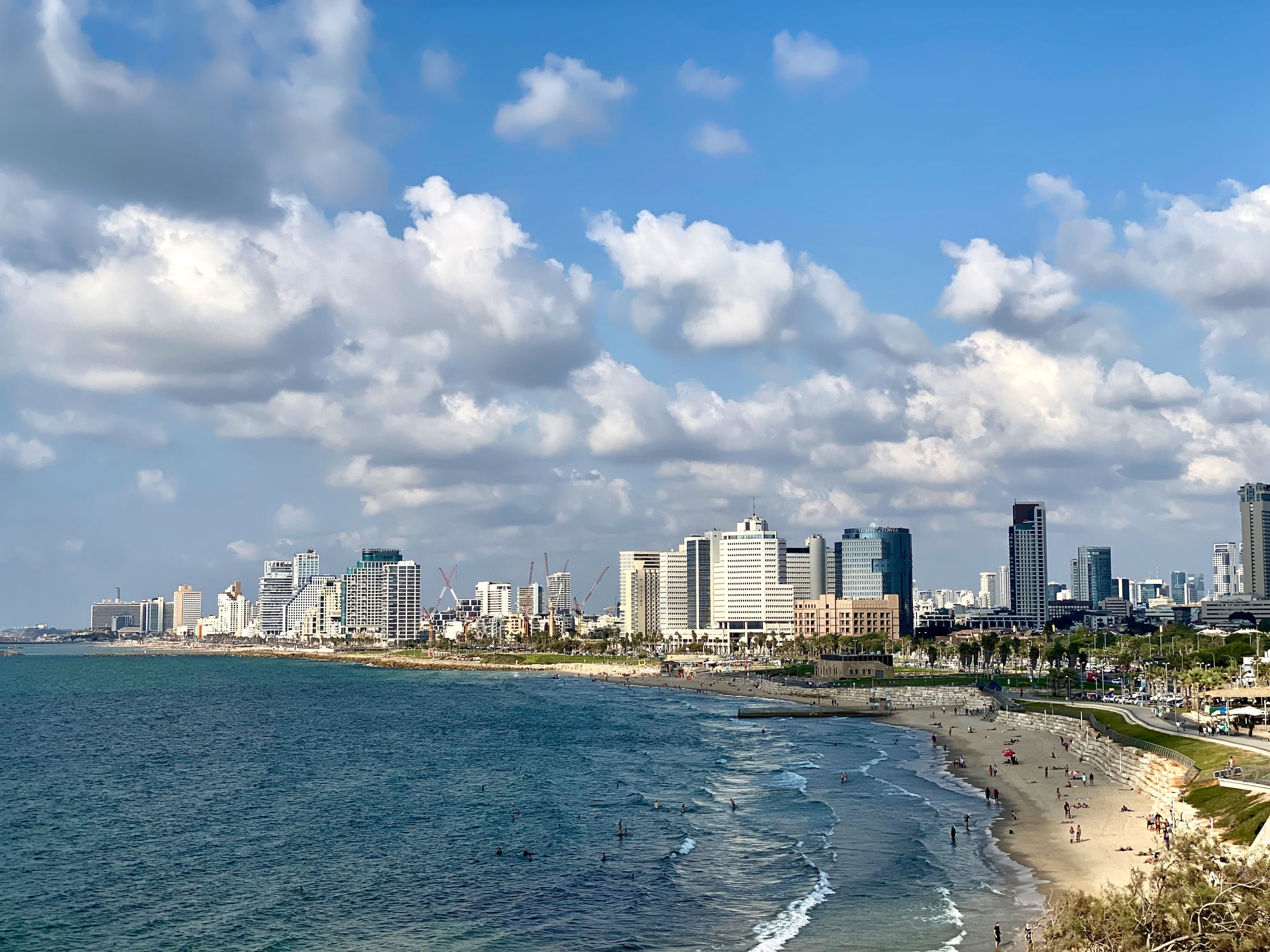
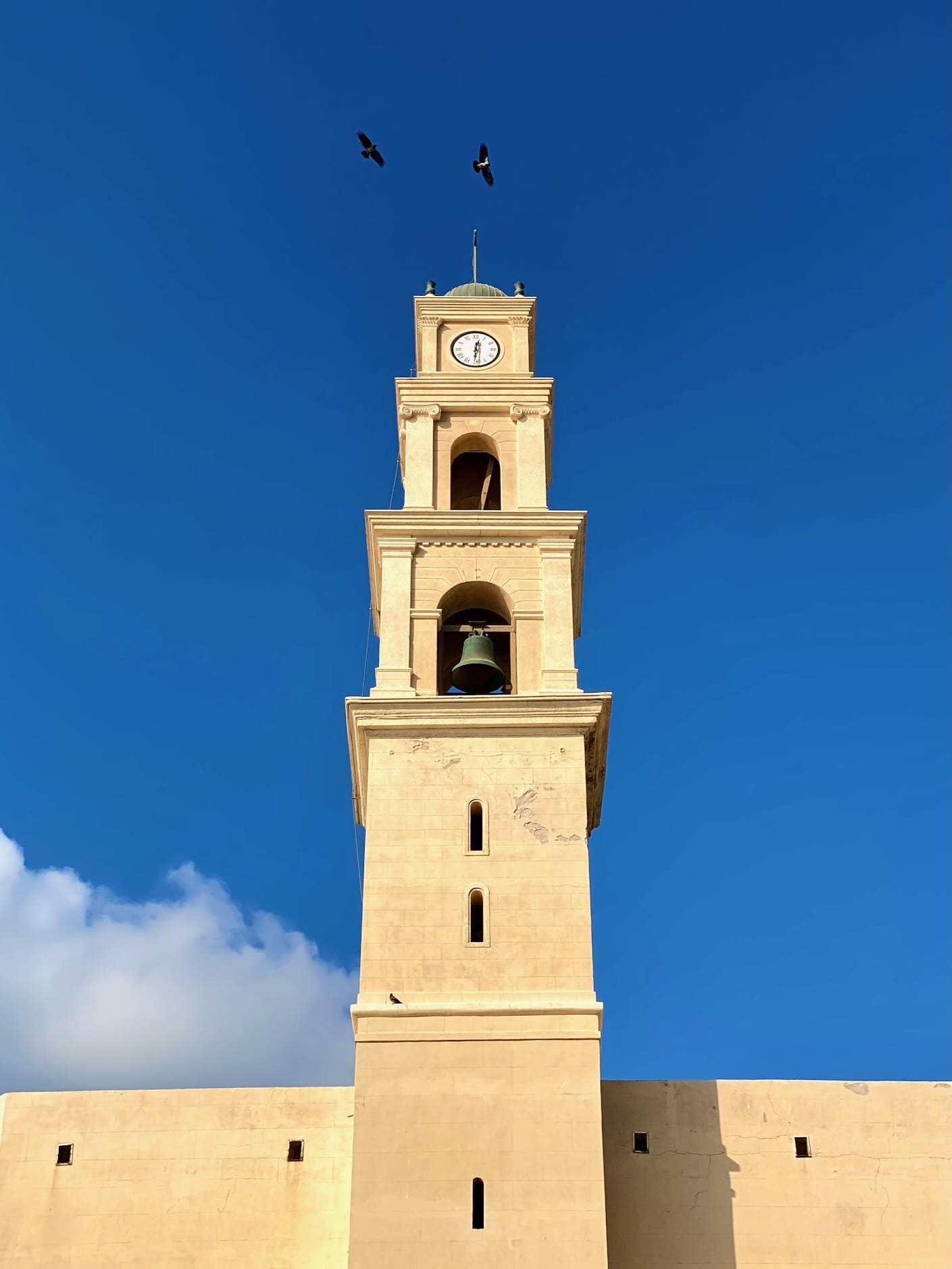
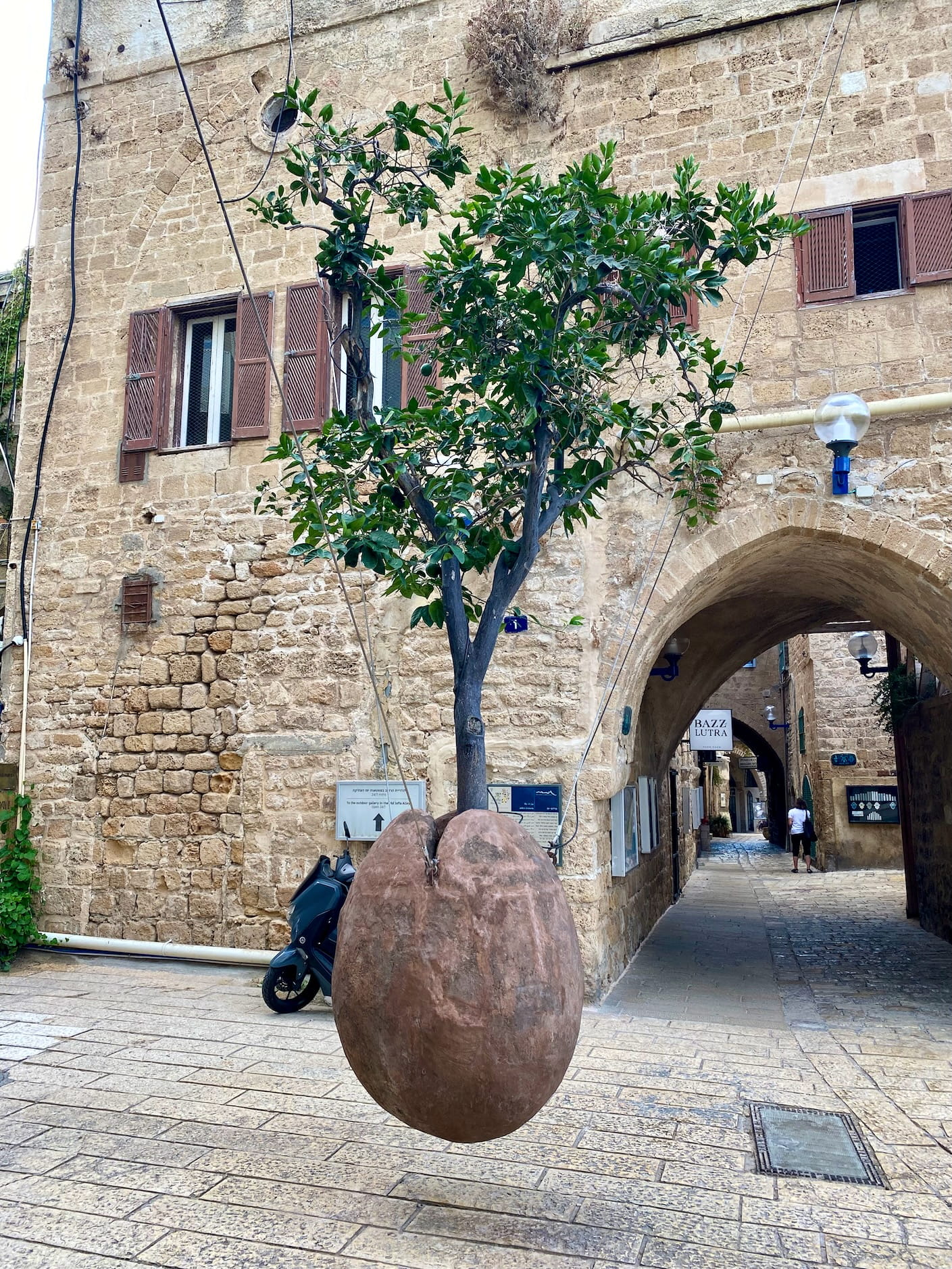
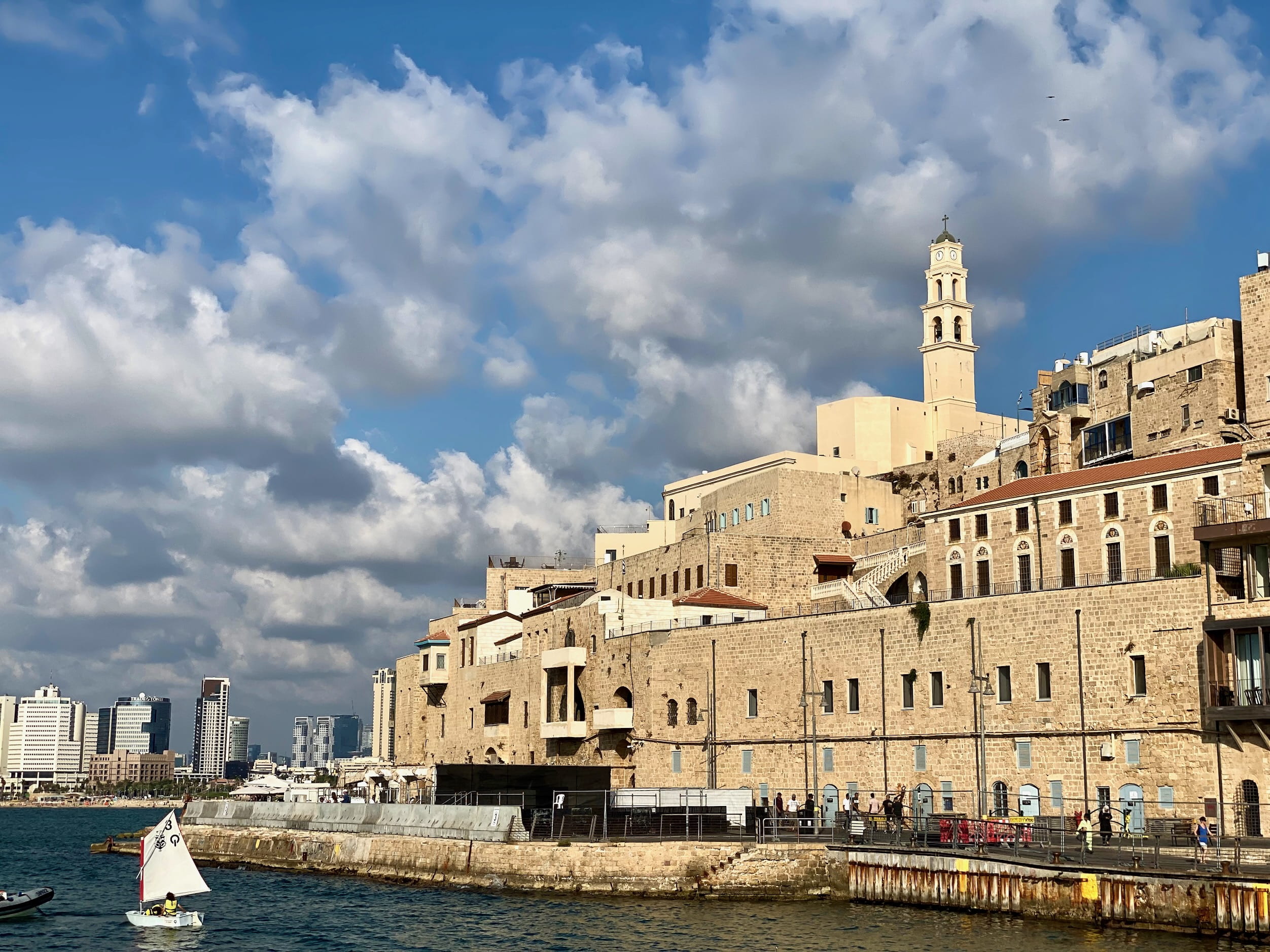
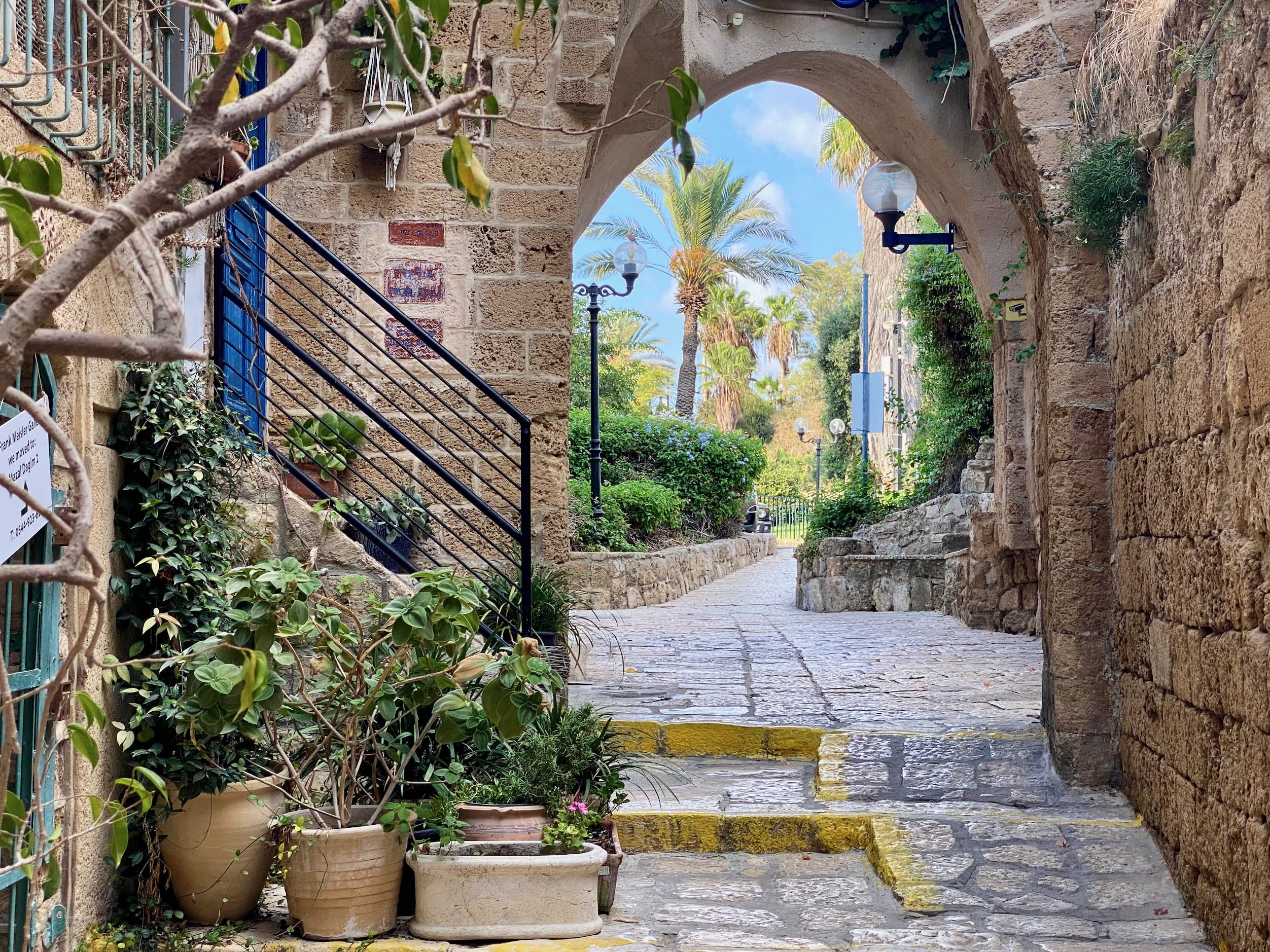
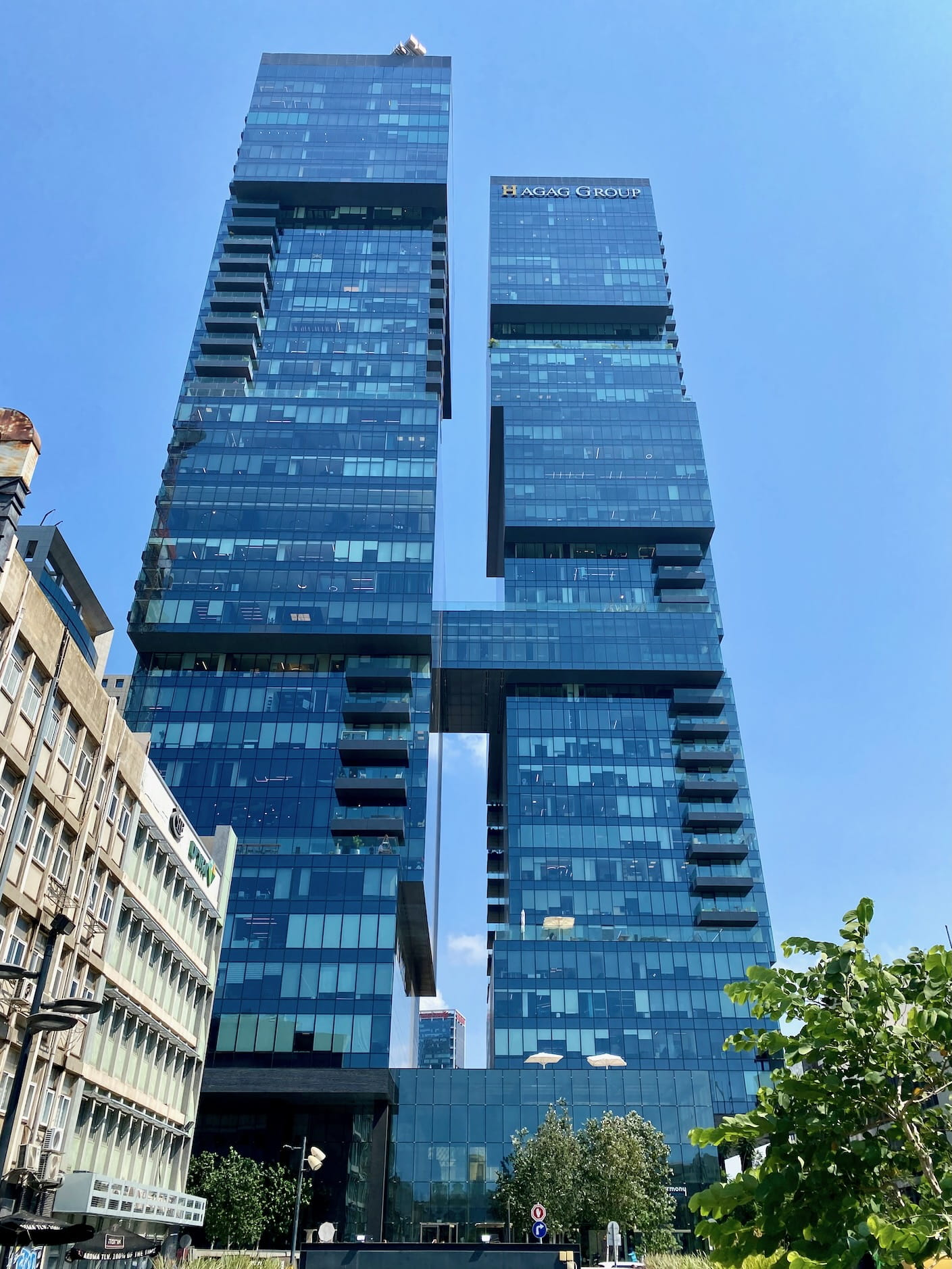
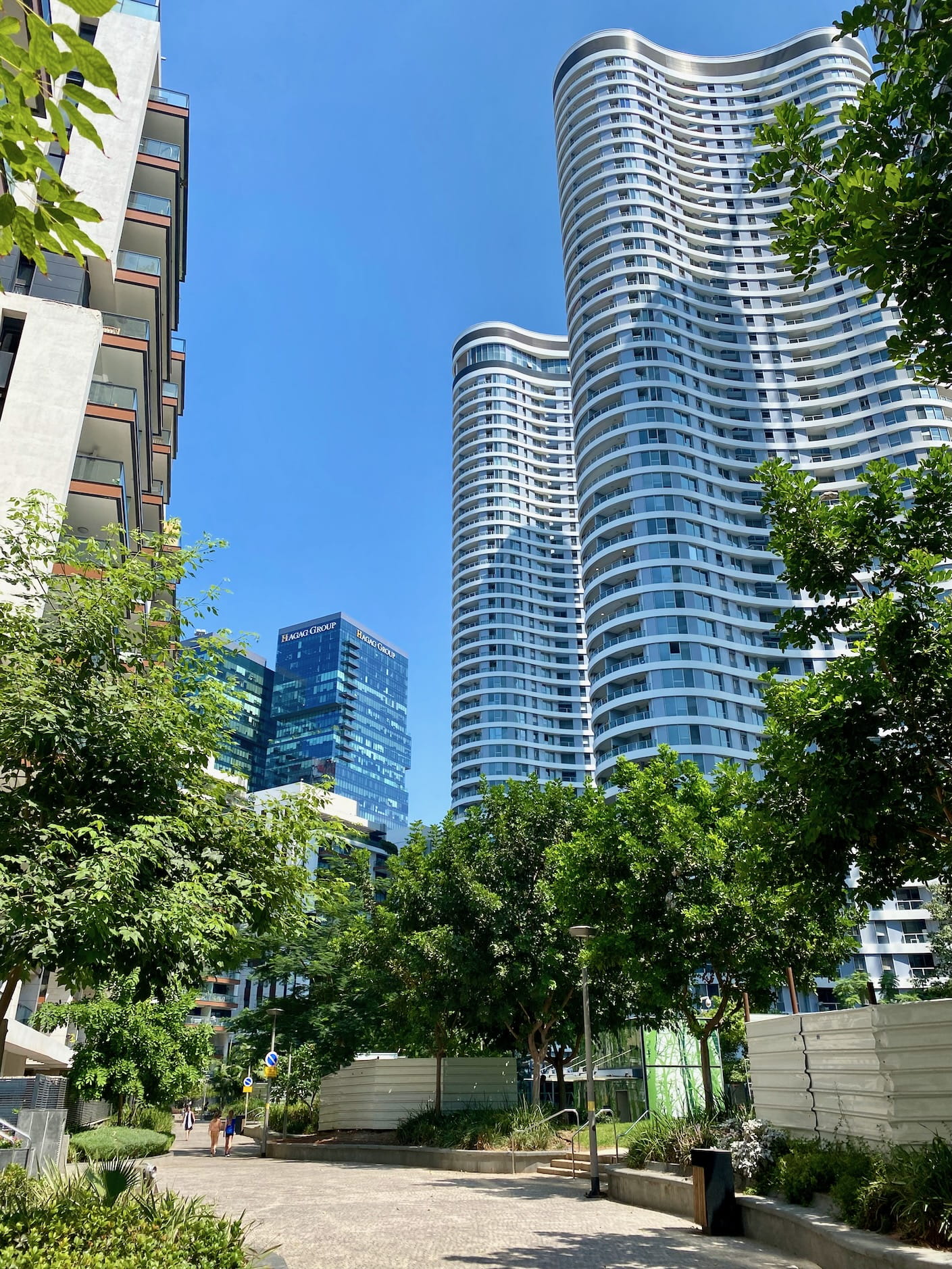
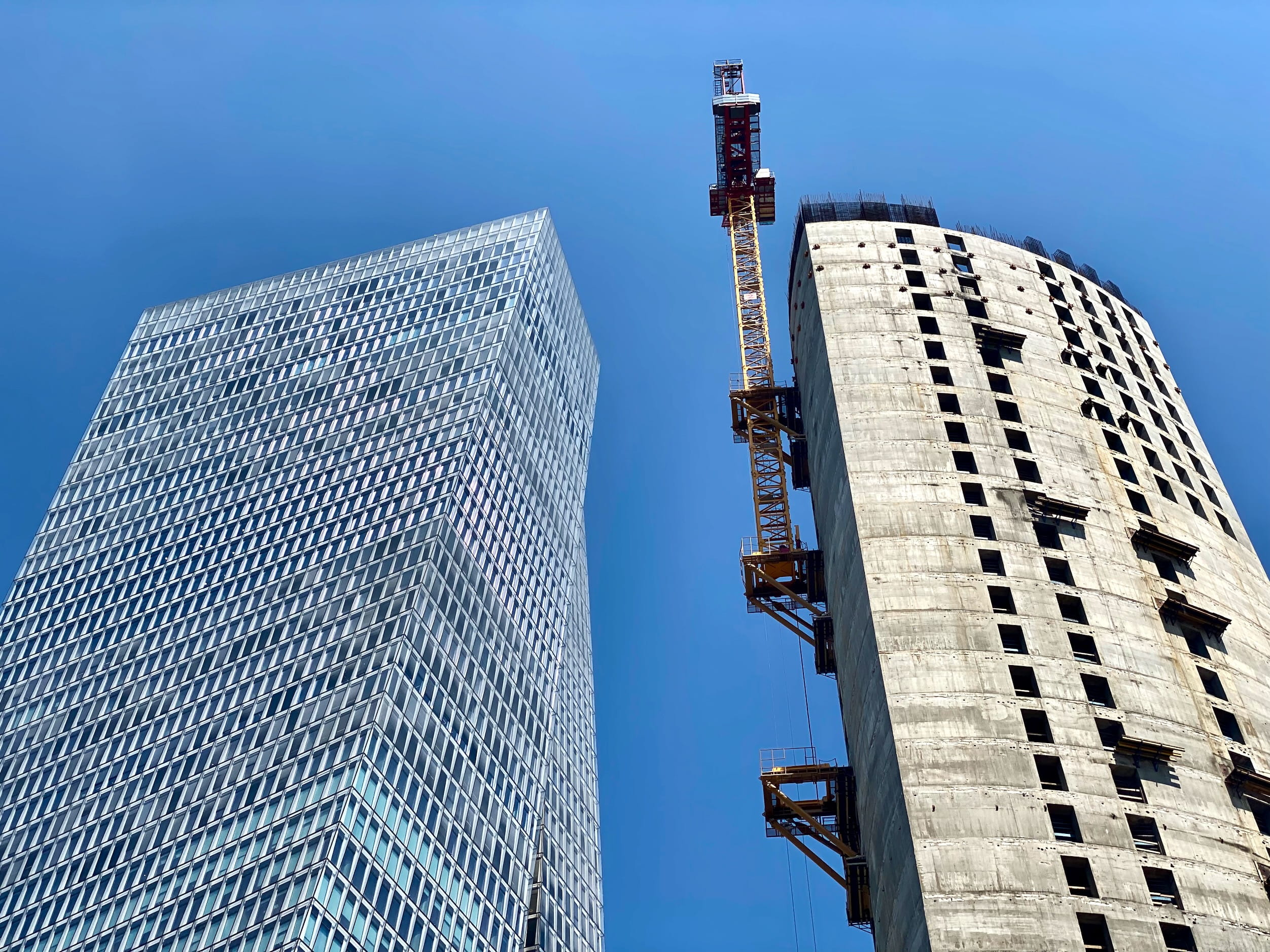
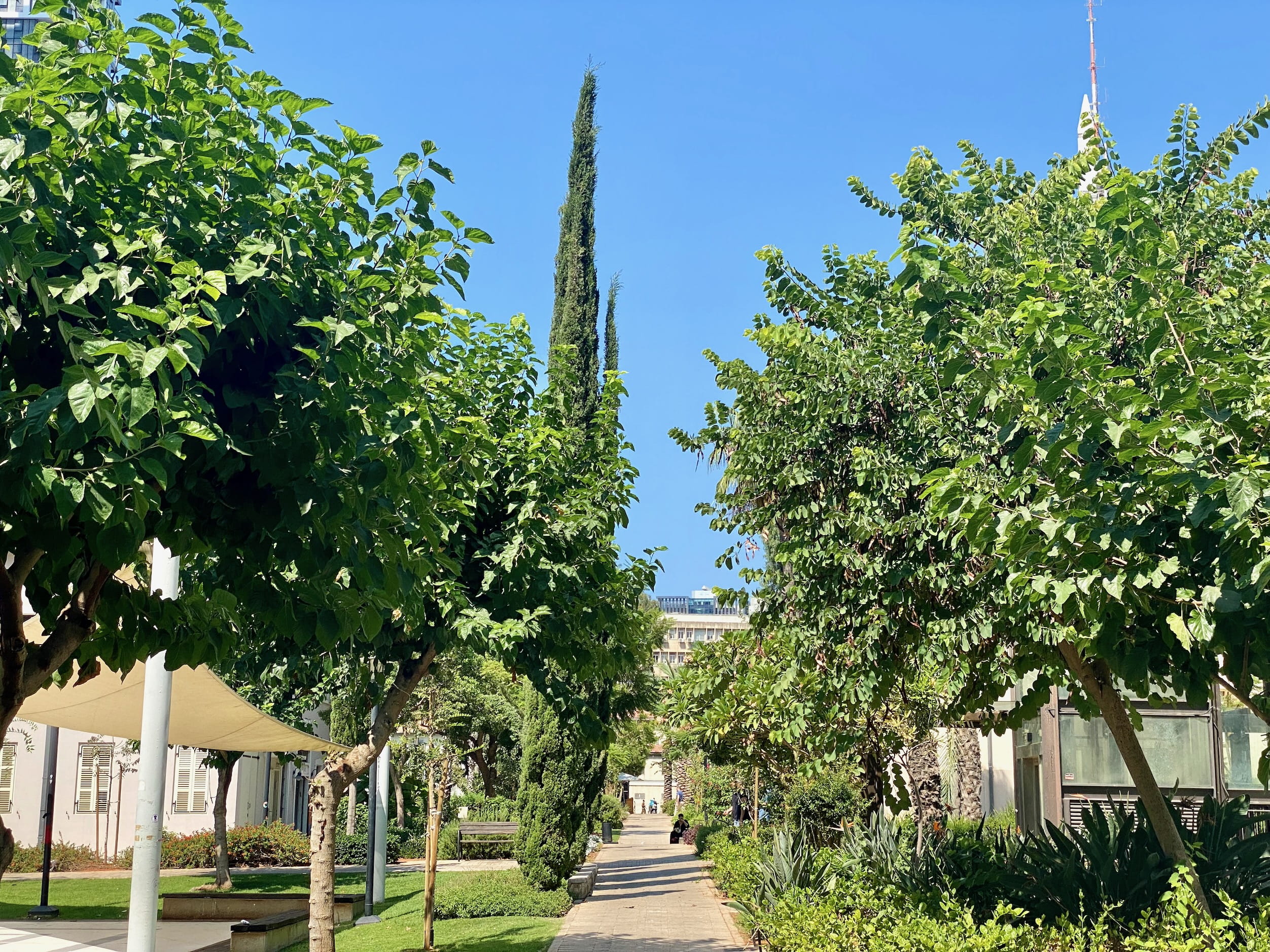
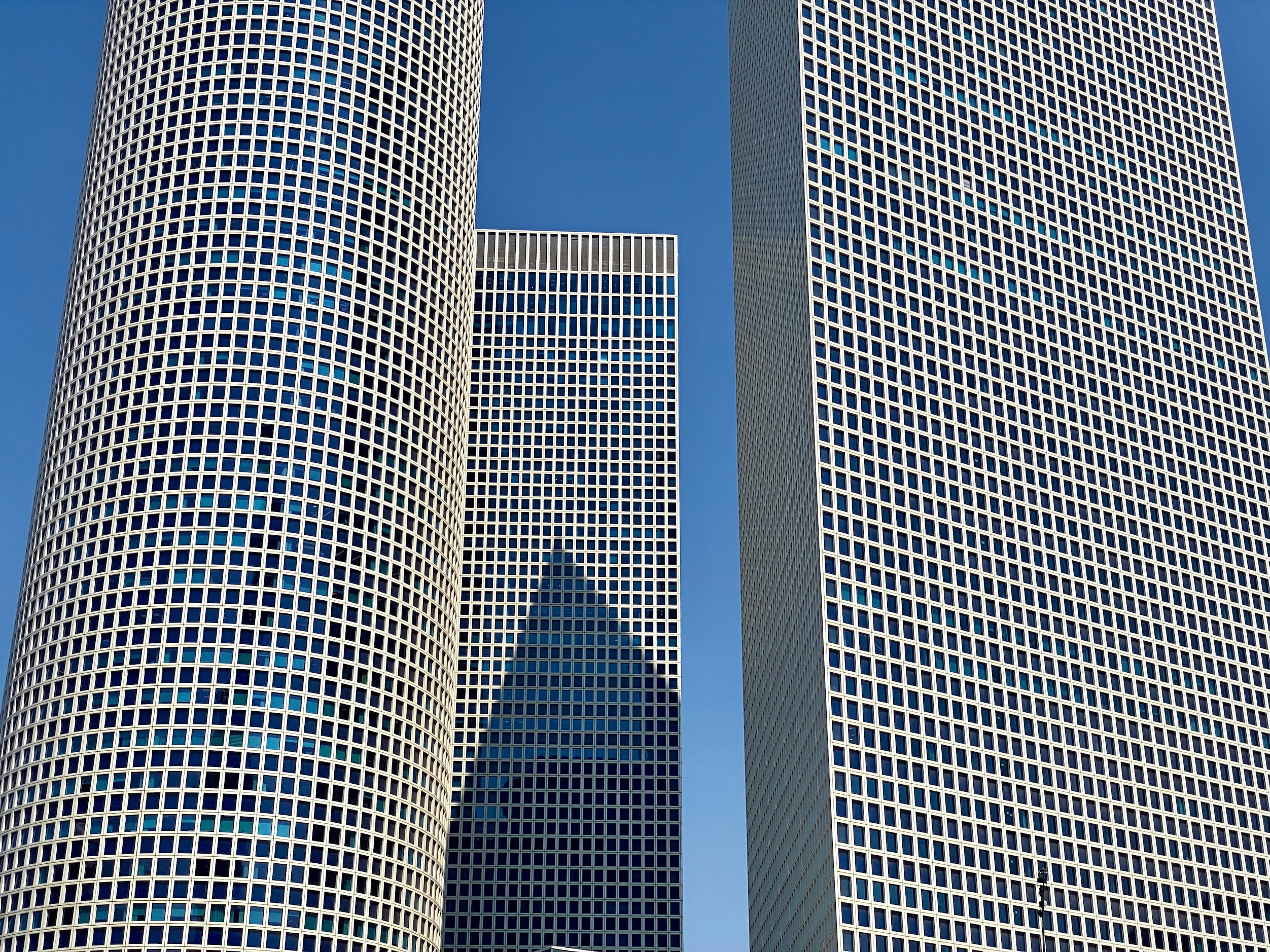
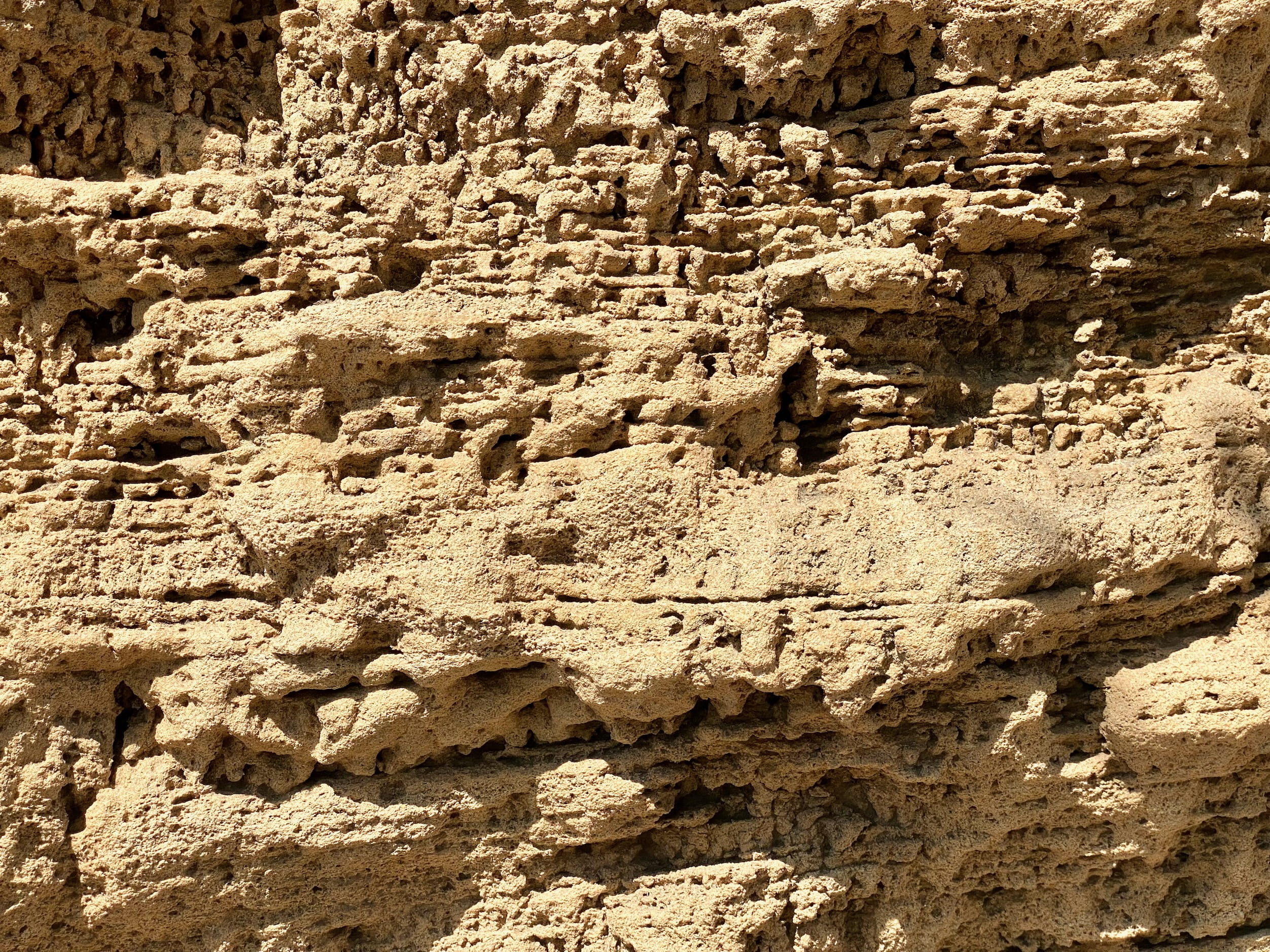
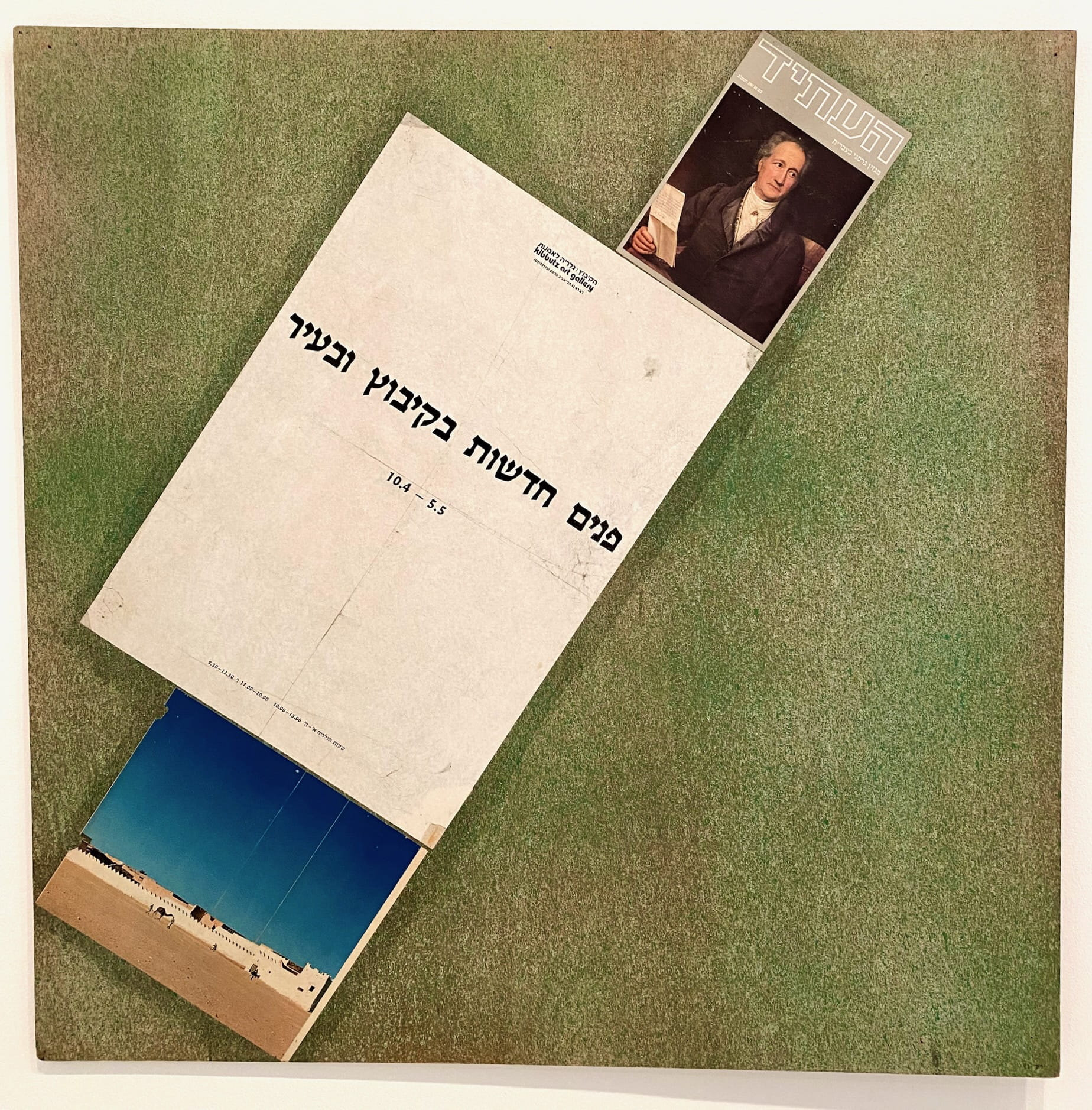
Final score for Israel:
- Cockroaches seen: 4
- Cockroaches killed: 2
Brief Interlude on Abjads: Hebrew and Arabic
The great part about being interested in linguistics but studying a field only loosely based on it is that I regularly learn very basic language things that thrill me. For example, the idea of an abjad.
An abjad when a language is written using only consonants. If we try to do this in English, it looks strange:
Here’s an English sentence.
Hr’s n nglsh sntnc.
But some languages are written this way. Two examples are Hebrew and Arabic, which are the two languages written all over Israel (in addition to English, thanks Britain).
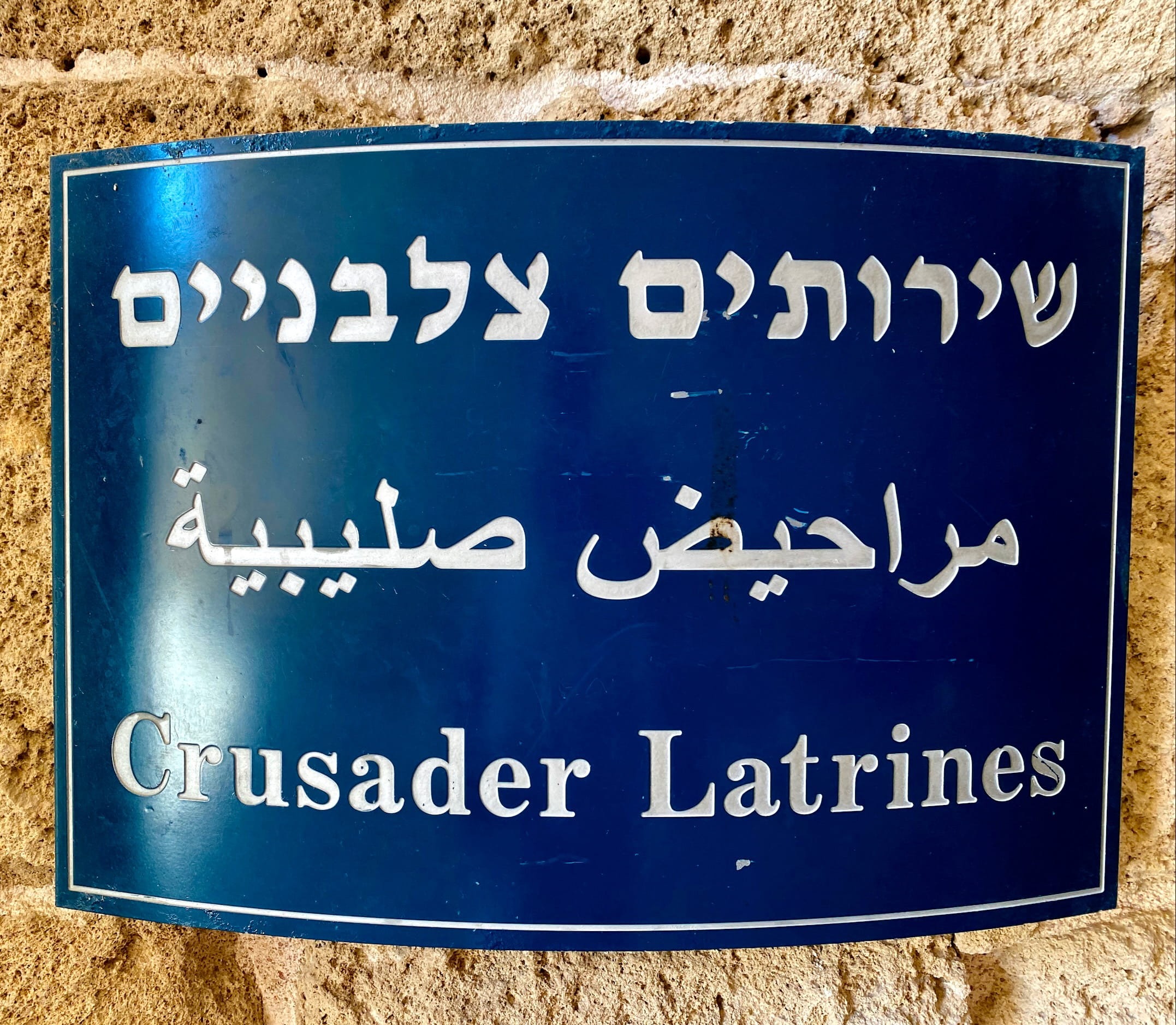
Just your normal everyday trilingual sign. Another fun fact, if you weren’t aware: both Hebrew and Arabic are written right-to-left. Left-handers rejoice. One more: Hebrew is the only example of a dead language being revived.
As always seems to be the case, things aren’t quite this simple in practice. Both Hebrew and Arabic are called “impure abjads” because they ended up with ways of representing vowels, e.g., using little dots and marks (diacritics).
One other fascinating aside on Hebrew: its writing system incorporates instructions for how to chant it while reading the Torah. This is shown in blue in the image below. (Red marks show vowels and long consonants.)
“Letters in black, niqqud (vowel points) and d’geshim (gemination marks) in red, cantillation in blue.” — Wikipedia
Around Town
Back to Phil, from Somebody Feed Phil. His words when trying the Sherry Herring sandwich—pictured below—continue to echo through my head: “That is as good of a sandwich as I have ever eaten.” Encouraged by the amazing lunch at Uri Buri, and spurred on by Phil’s review, we journeyed far across town in the heat just to find these sandwiches to try.
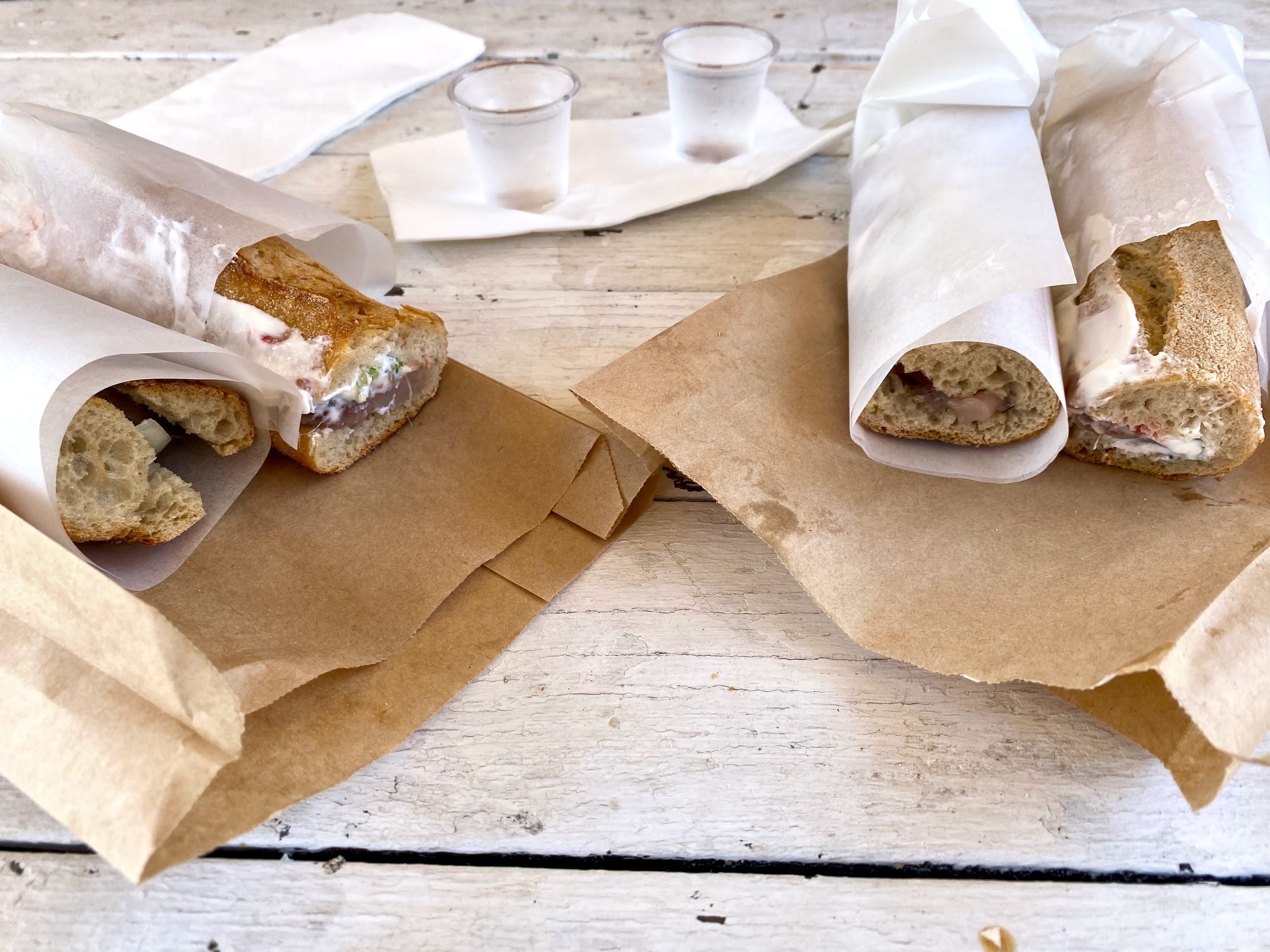
Yes that is an accompanying shot of vodka. At noon.
This was as bad of a sandwich as I have ever eaten. It may have been the worst. It tasted only of salt, there was no balance of any other flavors or ingredients whatsoever. If you like eating plain extremely salty herring, go for it. Otherwise, maybe Phil was doing some acting in a sticky situation on camera. We will likely never know.
In the art museum, I found a caption on a piece that—finally—directly addressed the idea I’d been seeing throughout the museums on the trip. It was the only thing of its kind I saw.
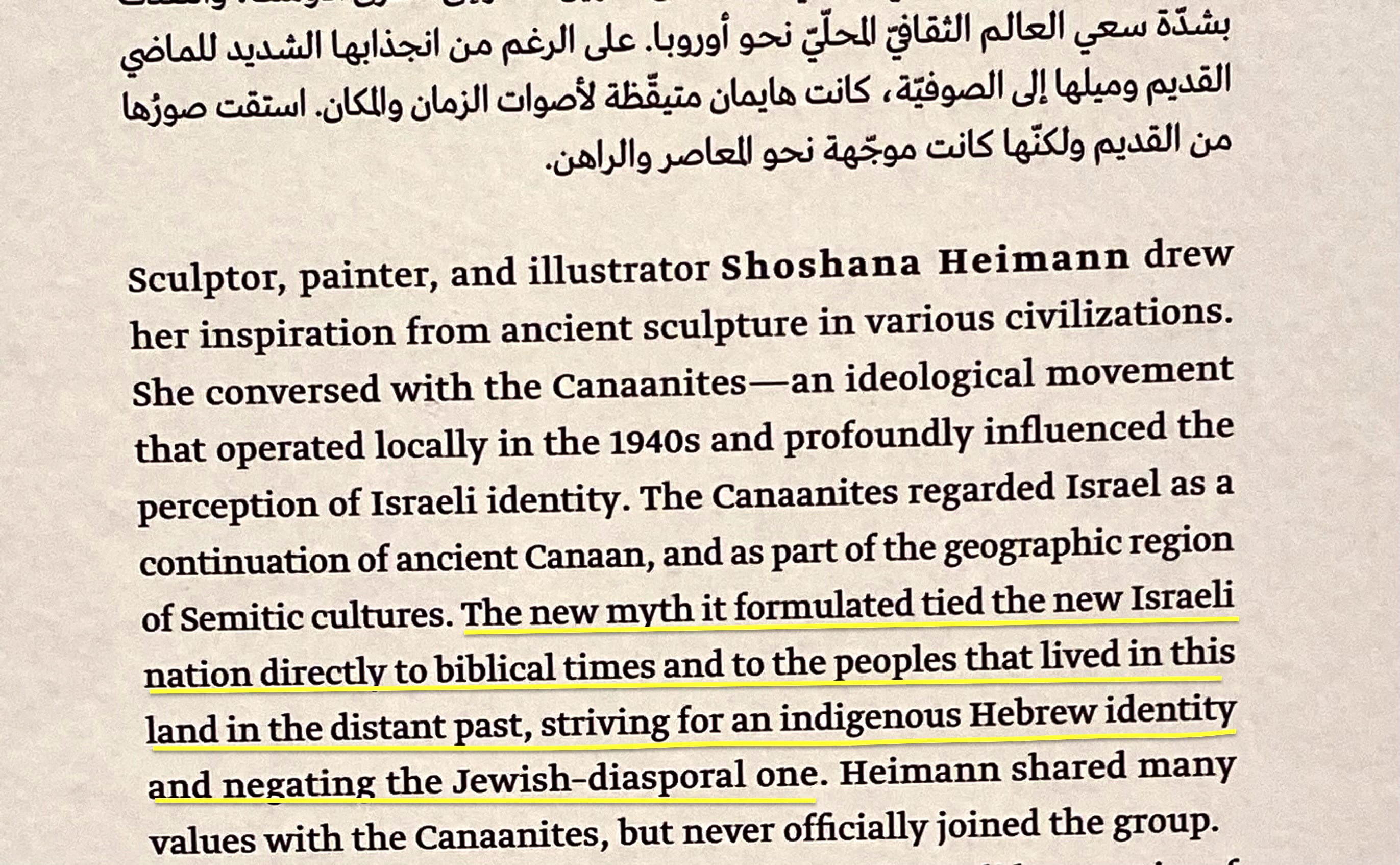
Underline mine.
Finally, I leave you with a video art piece so bizarre and delightful that it could have been made just for me.
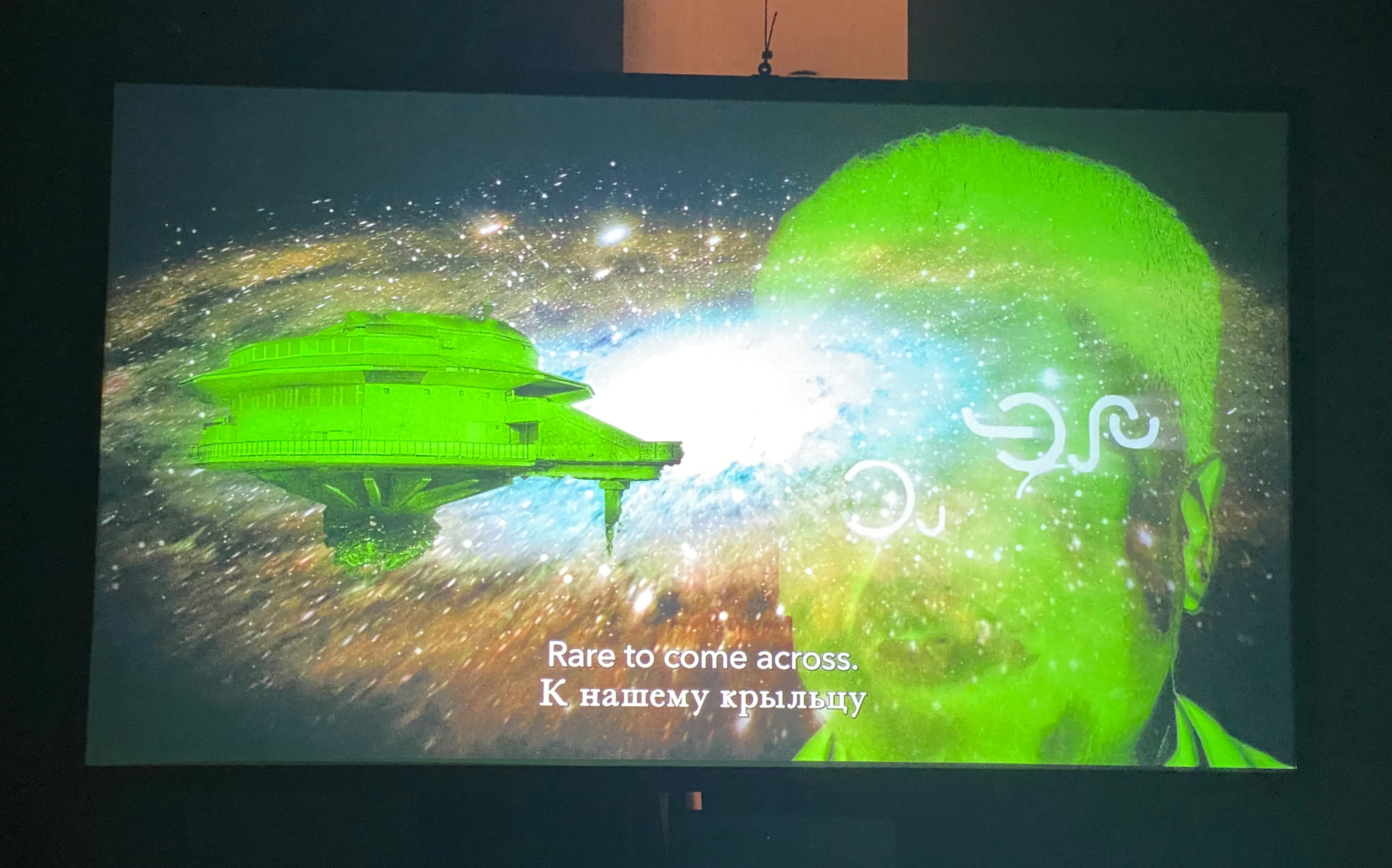

🛩 Airport Hell
Wait, there’s one last thing. I have to mention the airport.
BE AFRAID OF THIS AIRPORT.
They have invented a new kind of security at the Ben Gurion Airport in Tel Aviv. It is pre-check-in security. You enter the arrival hall, and join a massive sprawling disorganized mass of people vaguely forming into at least eight different lines. For what? This is a special interview you must complete before they’ll even let you go to the ticket counter or check your bags. The interview involves detailed probing questions, like: How did you meet your partner? How long have you been dating? Do you live together? — that kind of thing.
So, that would all be fine. But, as can happen in these big bureaucratic situations, our line just happened to short circuit. One guy was having some trouble with his documents, but the other booths draining the queue had some kind of staffing confusion, and the rest of us just waited with the slowest trickle of movement for an hour and a half. You could tell that for everyone working there, this was just another 4:30am workday morning, and hey, sometimes some lines are slower than others. But for us, getting ready to take back-to-back international flights that we woke up at 3-something AM for, it was torture.
The thing is, you don’t really know exactly what’s happening in a situation like this. (Especially at 4-something AM.) What I wrote above is what I figured out when we finally got to the front. In the pack, you can’t tell whether anywhere else in the hall is moving faster, and boy the line behind you is quite long now. So you wait and wait and wait.
Finally, in desperation, flight check-in cutoff mere minutes away, we managed to convince some bored official to let us cut way up front, ran through the rest of the airport, asking people to let us cut them in all the normal subsequent security and passport lines (they did; thank you kind people), and made the flight.
What a trip.
So, when they say to arrive at the airport five hours early or something completely unbelievable, you actually have to do it. This is the one airport in the world for which it’s actually true.
Footnotes
In hindsight, I don’t know how we scored such a good rental considering this. Maybe we had some AirBnb credits leftover still? ↩︎
Each grocery trip, seeking out the cheapest stores, buying stuff like bread and eggs and pasta, cost $80 – $100 USD for a few meals. Woof. ↩︎
Checked my notes: Armenia, first Christian nation. Year 301. ↩︎
This is in contrast to, e.g., the Dome of the Rock, which is an important Muslim monument that they’re super strict about (a) only Muslims allowed almost all the time (we got stopped by soldiers with assault rifles when we accidentally wandered towards it), (b) for the rare times others can go, if you are caught saying a prayer to another god, or even having something written down from another religion, it’s a biiiiig problem. ↩︎
One confounding thing is at all the grocery stores I went to, a good percentage of the items don’t have any price tags on them. You just find out how much you’re going to suffer when you get to the register. ↩︎
I don’t have any photos of the inside of Yad Vashem (Jerusalem Holocaust Memorial / Museum) as none were allowed. ↩︎
The British wouldn’t even let Jewish people into Israel when the war finished. ↩︎
E.g., this map shows the coarse West Bank boundary, which is what Google Maps shows. ↩︎
E.g., check out this map of Area C (Israeli only) in the West Bank. ↩︎
Still a bit confused about this. E.g., it loos like the border of the Dead Sea isn’t in the Israeli “Area C” the way the rest of the places we went are. ↩︎
I’m not doing Akko even remote justice here. The layers of history here are unreal. Here are my notes: “Greek, Roman, early Muslim I think, crusades, Muslims, I think crusades again, Muslims and city downfall, then rebuilt (esp with Ottomans), then British, and now Israel.” The cool thing about the layers is they are literal layers: people built structures on top of the old ones. ↩︎
Somebody Feed Phil is one of those TV shoes where a guy goes around and eats stuff and says it is tasty. ↩︎
One feature of Israel I forgot to mention: you have to go through metal detectors constantly. E.g., to get into any train station, to get to the Western Wall, to get into many kinds of buildings. Everyone running the metal detectors is incredibly bored and has no patience for your ineptitude as you try to ask about your change or cell phone or “what about my Birkenstock’s? they set off the airport ones” etc. etc. etc. ↩︎
It felt like the airport in Crete. Horrid and hated by everyone, but because they’ve started building the new one next door, they’ve already completely given up on the old one and it’s just in perpetual decline. ↩︎